Methods And Compositions For The Treatment Of Vascular Disease
LINDSAY; Mark E. ; et al.
U.S. patent application number 16/969743 was filed with the patent office on 2021-02-11 for methods and compositions for the treatment of vascular disease. This patent application is currently assigned to THE GENERAL HOSPITAL CORPORATION. The applicant listed for this patent is THE GENERAL HOSPITAL CORPORATION. Invention is credited to Mark E. LINDSAY, Christian Lacks LINO CARDENAS, Rajeev MALHOTRA.
| Application Number | 20210038596 16/969743 |
| Document ID | / |
| Family ID | 1000005211354 |
| Filed Date | 2021-02-11 |
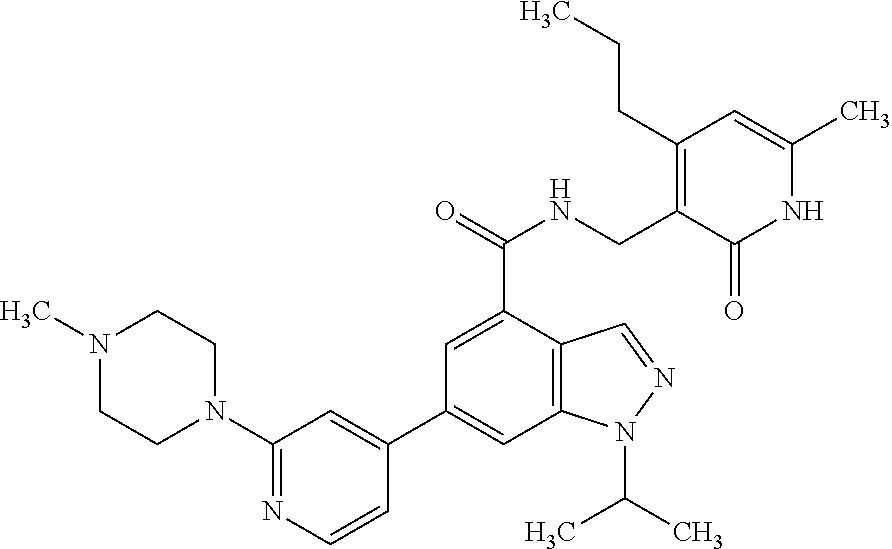
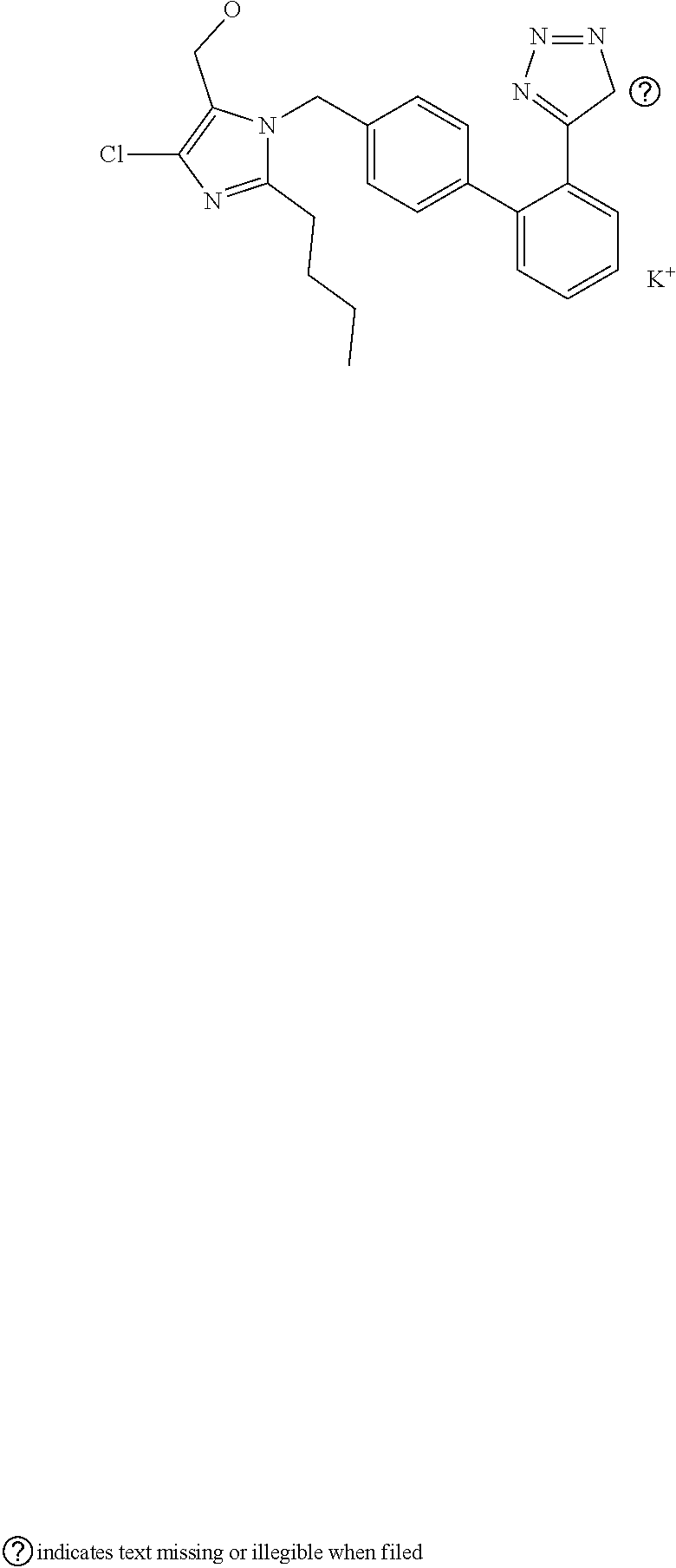
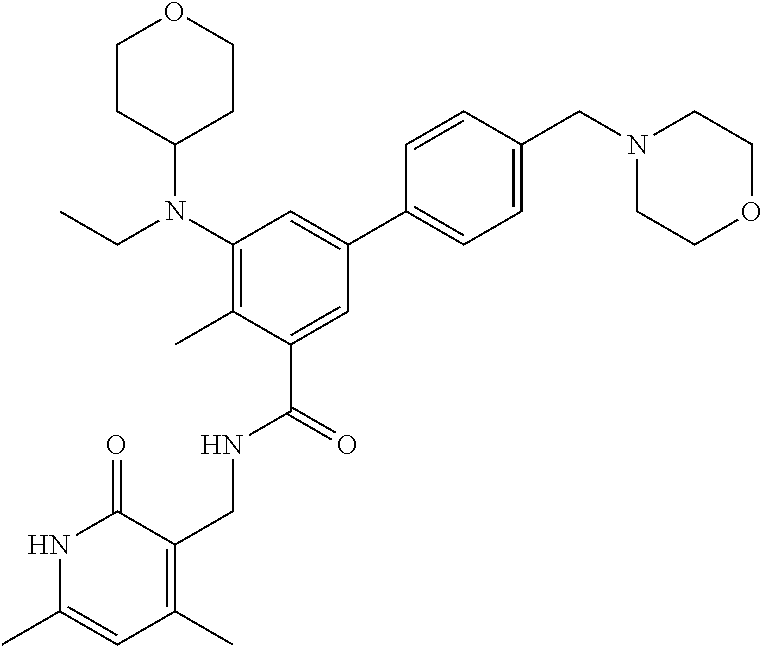
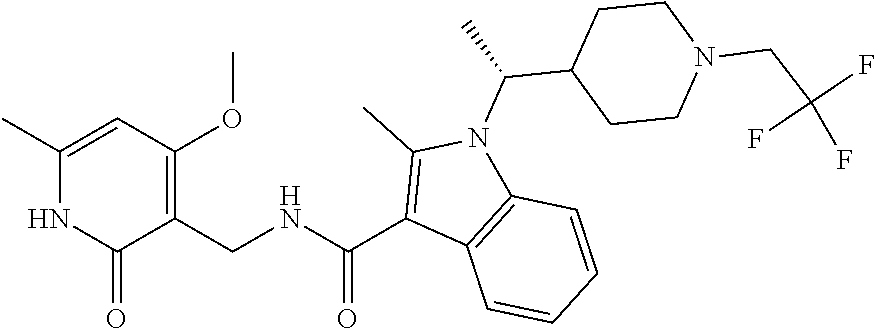
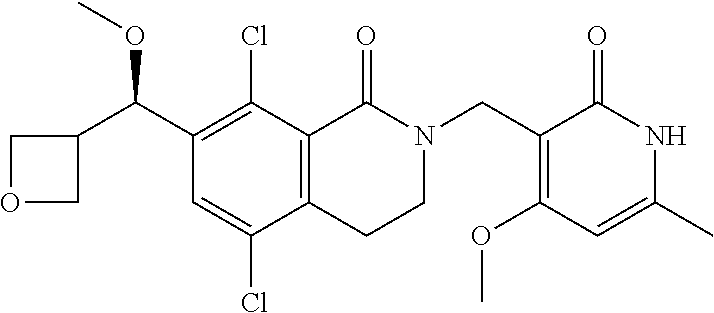
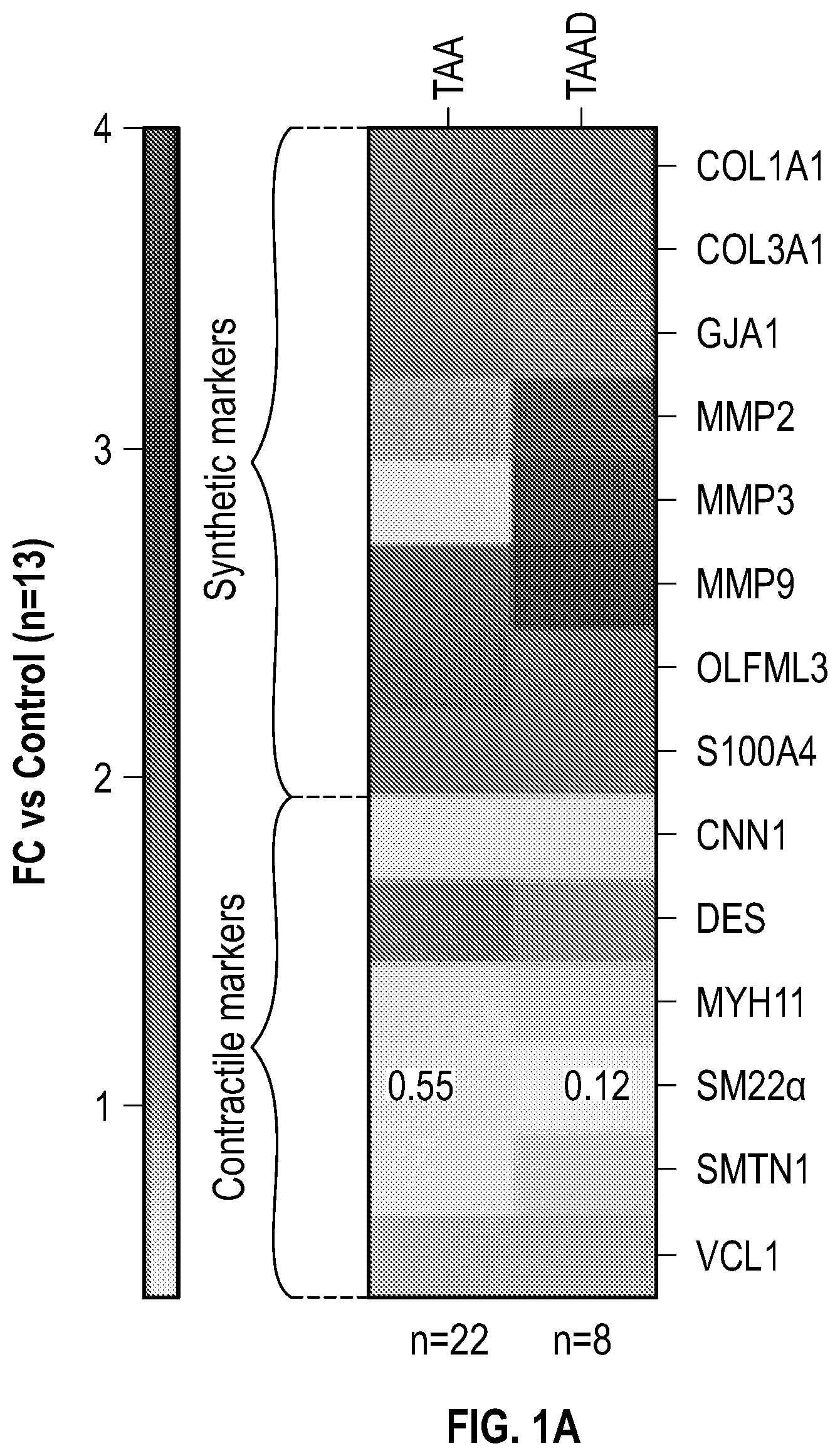
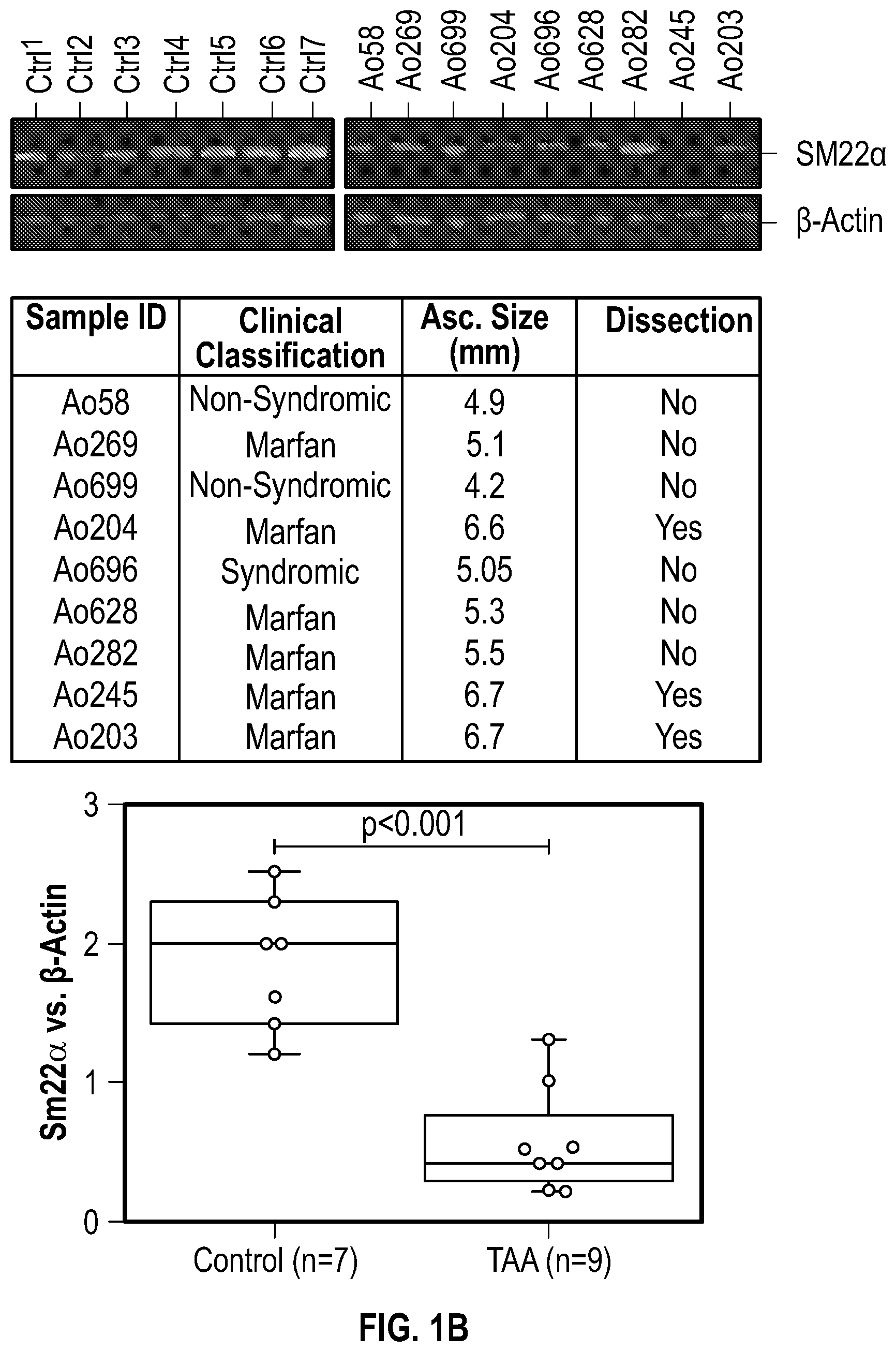
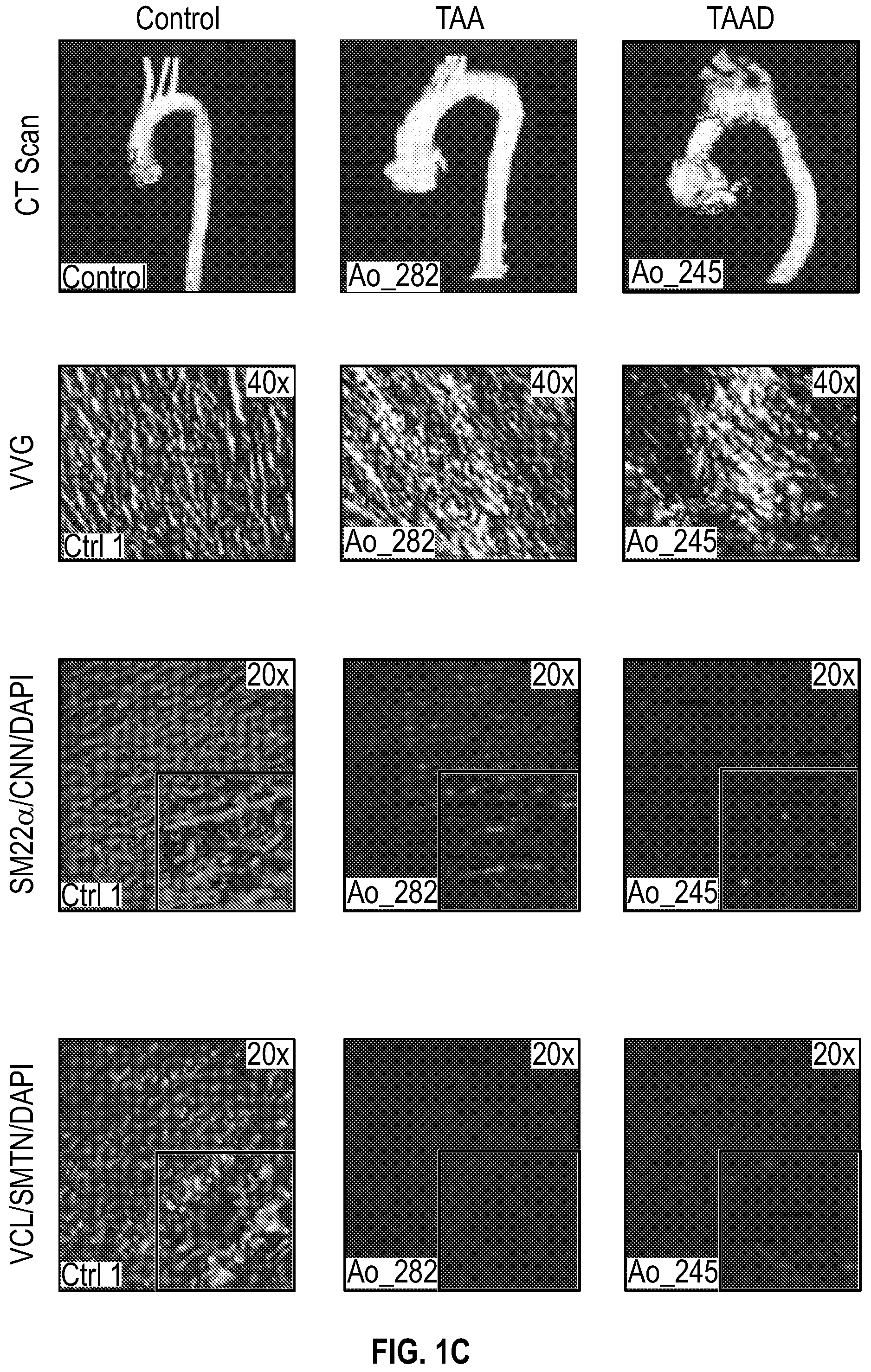
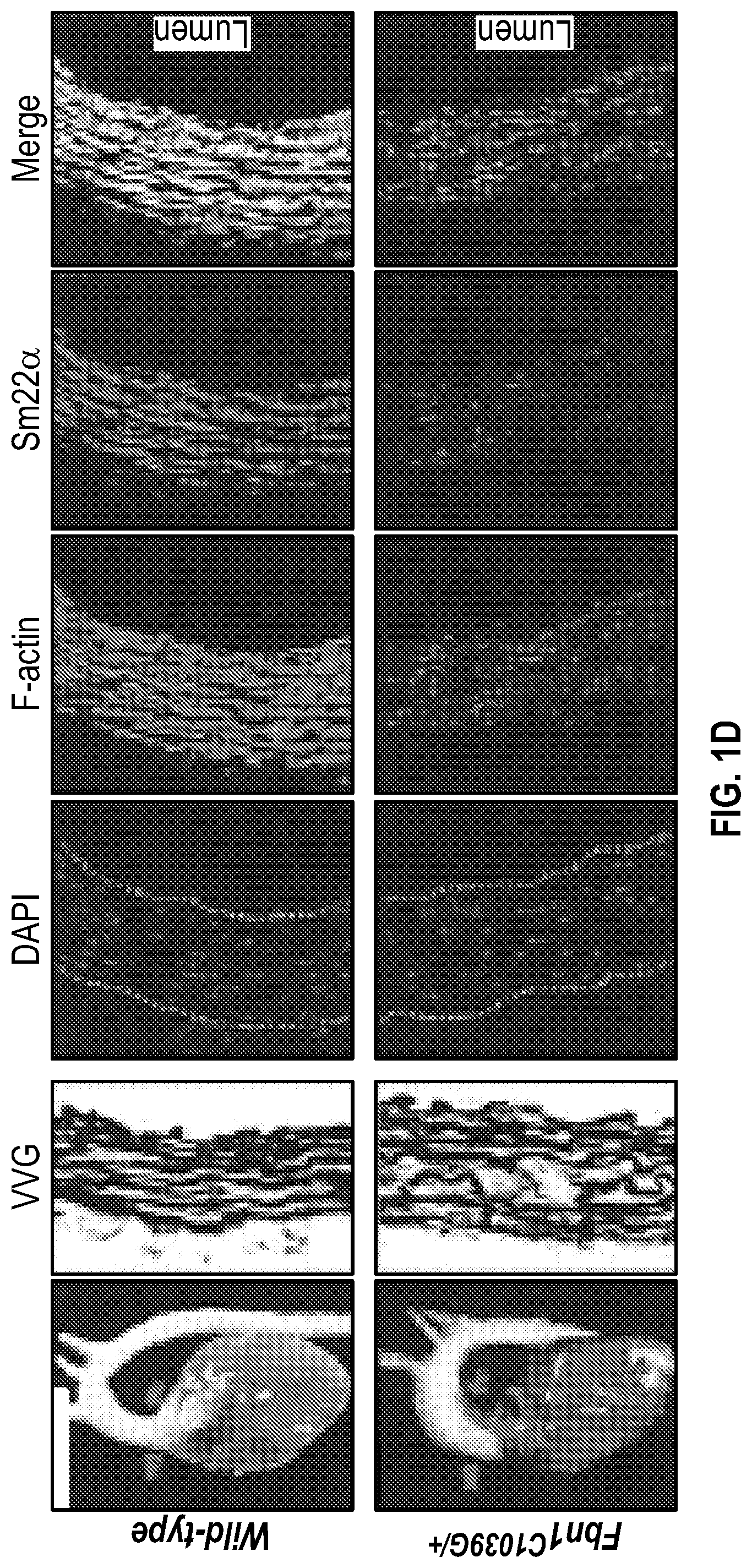
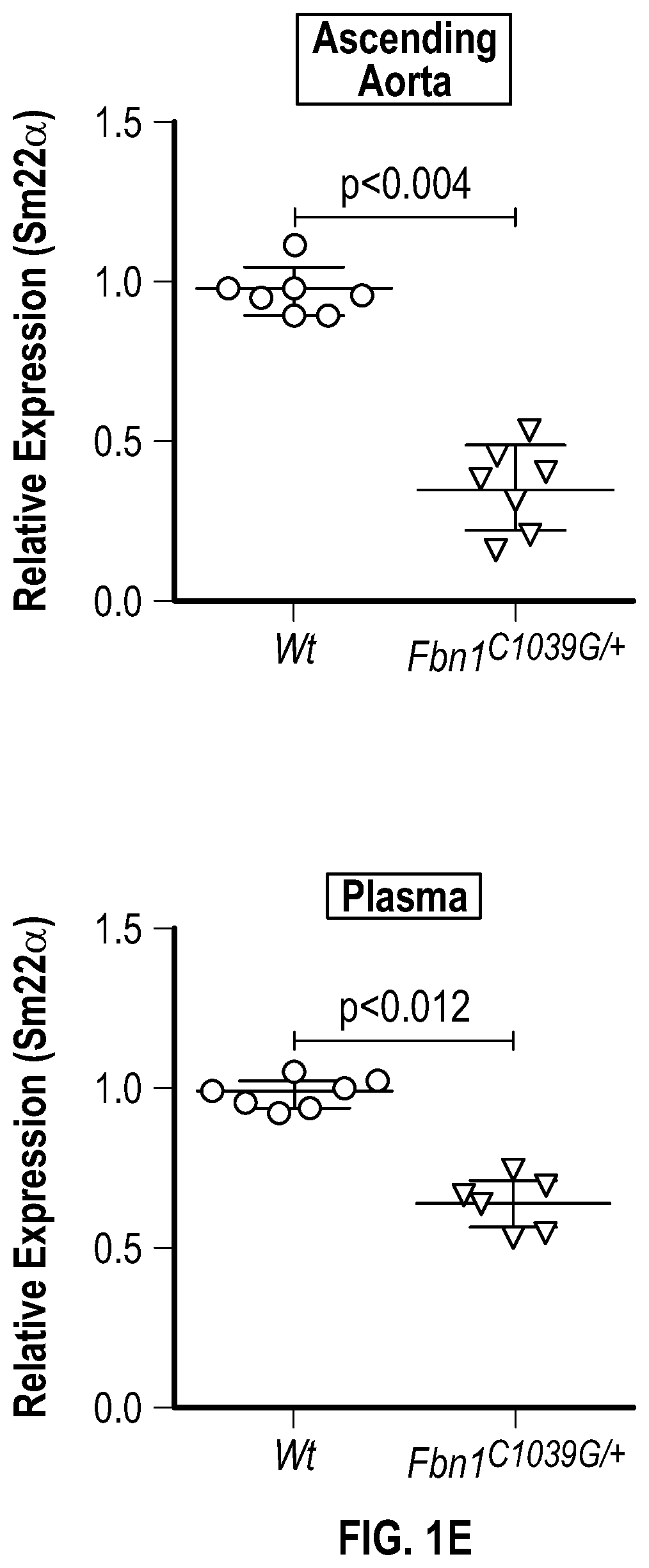
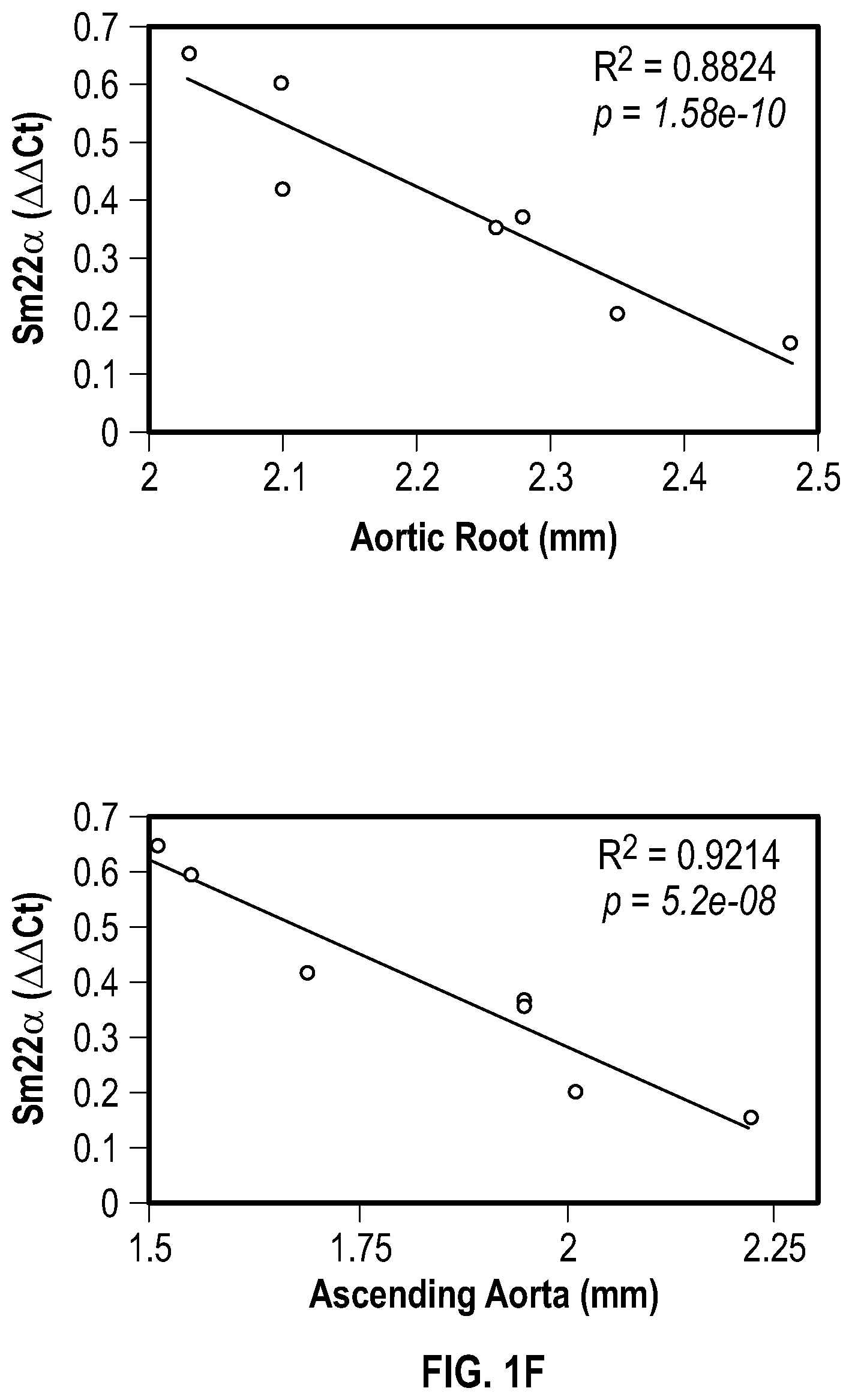
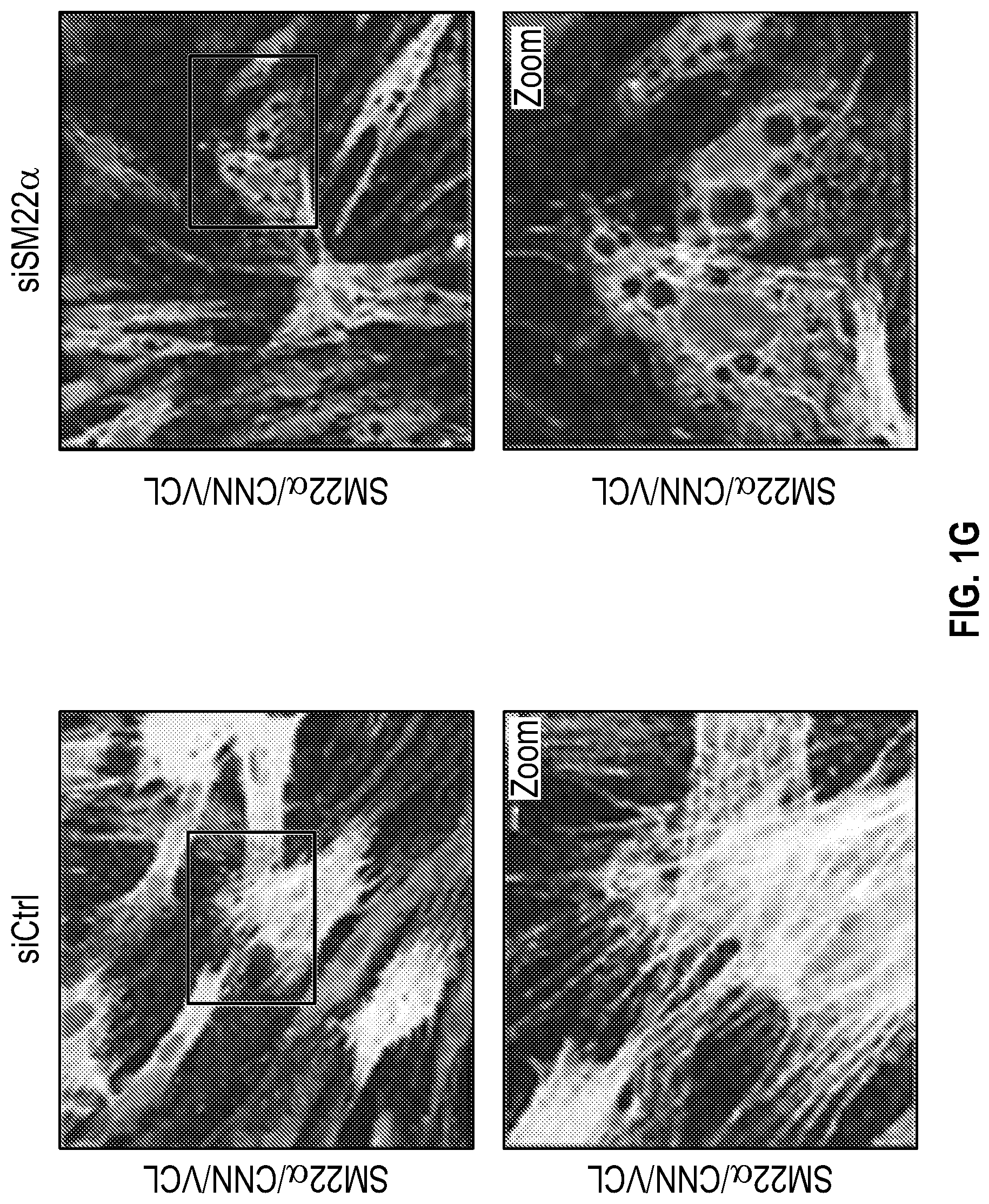
View All Diagrams
| United States Patent Application | 20210038596 |
| Kind Code | A1 |
| LINDSAY; Mark E. ; et al. | February 11, 2021 |
METHODS AND COMPOSITIONS FOR THE TREATMENT OF VASCULAR DISEASE
Abstract
The technology described herein relates to methods and compositions to prevent or treat vascular disease by targeting the epigenetic regulation of gene expression of vascular smooth muscle cell cytoskeletal proteins.
| Inventors: | LINDSAY; Mark E.; (Winchester, MA) ; LINO CARDENAS; Christian Lacks; (Boston, MA) ; MALHOTRA; Rajeev; (Boston, MA) | ||||||||||
| Applicant: |
|
||||||||||
|---|---|---|---|---|---|---|---|---|---|---|---|
| Assignee: | THE GENERAL HOSPITAL
CORPORATION Boston MA |
||||||||||
| Family ID: | 1000005211354 | ||||||||||
| Appl. No.: | 16/969743 | ||||||||||
| Filed: | February 19, 2019 | ||||||||||
| PCT Filed: | February 19, 2019 | ||||||||||
| PCT NO: | PCT/US2019/018501 | ||||||||||
| 371 Date: | August 13, 2020 |
Related U.S. Patent Documents
| Application Number | Filing Date | Patent Number | ||
|---|---|---|---|---|
| 62793614 | Jan 17, 2019 | |||
| 62632105 | Feb 19, 2018 | |||
| Current U.S. Class: | 1/1 |
| Current CPC Class: | A61K 31/496 20130101; A61P 9/00 20180101; A61K 31/4178 20130101 |
| International Class: | A61K 31/496 20060101 A61K031/496; A61K 31/4178 20060101 A61K031/4178; A61P 9/00 20060101 A61P009/00 |
Goverment Interests
GOVERNMENT SUPPORT
[0002] This invention was made with government support under under Grant Nos. HL130113 and HL142809 awarded by the National Institutes of Health. The government has certain rights in the invention.
Claims
1. A method of treating a thoracic aortic aneurysm, the method comprising administering to a subject in need thereof a therapeutically effective dose of at least one agent that targets the epigenetic regulation of gene expression of vascular smooth muscle cell cytoskeletal proteins.
2. The method of claim 1, wherein the cytoskeletal protein is SM22a encoded by the TAGLN gene.
3. The method of claim 1, wherein the at least one agent targets the multiprotein complex Polycomb repressive complex 2 (PRC2) responsible for gene silencing through its catalytic activity or hypermethylation of chromatin at vascular smooth muscle gene loci.
4. (canceled)
5. The method of claim 1, wherein the at least one agent targets the multiprotein complex Polycomb repressive complex 2 (PRC2) and its catalytic domain the methyltransferase EZH2.
6. The method of claim 1, wherein the at least one agent inhibits PRC2 complex methyltransferase catalytic activity.
7. The method of claim 5, wherein the at least one agent that inhibits methyltransferase EZH2 is GSK343.
8. The method of claim 6, wherein the at least one agent selected from the group consisting of GSK343 and losartan.
9. A method of treating a vascular disease, the method comprising administering to a subject in need thereof, a therapeutically effective amount of at least one agent that inhibits the activity of the Histone Deacetylase 9 (HDAC9) complex or PRC2 complex.
10. The method of claim 9, wherein the vascular disease is a cardiovascular disease (CVD).
11. The method of claim 10, wherein the CVD is selected from the group consisting of atherosclerosis, vascular calcification, calciphylaxis, neointimal stenosis, and arterial aneurism.
12. (canceled)
13. (canceled)
14. The method of claim 9, wherein the at least one agent is an inhibitor of EZH2.
15. (canceled)
16. The method of claim 9, wherein the at least one agent is an inhibitor of HDAC9.
17. The method of claim 9, wherein the at least one agent is an inhibitor of MALAT1.
18.-60. (canceled)
Description
CROSS-REFERENCE TO RELATED APPLICATIONS
[0001] This application is a 35 U.S.C. .sctn. 371 National Phase Entry Application of International Application No. PCT/US2019/018501 filed Feb. 19, 2019, which designates the U.S., and which claims benefit under 35 U.S.C. .sctn. 119(e) of U.S. Provisional Application No. 62/632,105 filed Feb. 19, 2018 and 62/793,614 filed Jan. 17, 2019 the contents of all of which are incorporated herein by reference in their entireties.
SEQUENCE LISTING
[0003] The instant application contains a Sequence Listing which has been submitted electronically in ASCII format and is hereby incorporated by reference in its entirety. Said ASCII copy, created on Feb. 15, 2019 is named 030258-091670WOPT_SL.txt and is 81,924 bytes in size.
TECHNICAL FIELD
[0004] The technology described herein relates to methods and compositions to prevent or treat vascular disease by targeting the epigenetic regulation of gene expression of vascular smooth muscle cell cytoskeletal proteins.
BACKGROUND
[0005] The vascular system is the body's network of blood vessels. It includes the arteries, veins and capillaries that carry blood to and from the heart. Cardiovascular diseases (CVDs) are a group of vascular diseases of the heart and blood vessels. Cardiovascular diseases are the leading cause of death globally: more people die annually from CVDs than from any other cause. The World Health Organization estimates that 17.9 million people died from CVDs in 2016, representing 31% of all global deaths. Of these deaths, 85% are due to heart attack and stroke.
[0006] Heart attacks and strokes are usually acute events and are mainly caused by a blockage that prevents blood from flowing to the heart or brain. The most common reason for this is a build-up of fatty deposits on the inner walls of the blood vessels that supply the heart or brain. Strokes can also be caused by bleeding from a blood vessel in the brain or from blood clots. The cause of heart attacks and strokes are usually the presence of a combination of risk factors, such as tobacco use, unhealthy diet and obesity, physical inactivity and harmful use of alcohol, hypertension, diabetes and hyperlipidaemia. Other CVDs include: atherosclerosis, coronary heart disease; cerebrovascular disease; peripheral arterial disease; rheumatic heart disease; congenital heart disease; deep vein thrombosis and pulmonary embolism. Current treatment is limited to ameliorating symptoms and slowing the natural progression of the disease but fails to address the cause of CVDs.
SUMMARY
[0007] As described herein, the inventors have discovered that in various vascular diseases, two protein complexes (i.e. PRC2 and the HDAC9 complex) inappropriately downregulate the expression of a number of genes which are responsible for providing the contractility of the smooth muscle cells of the vascular system. This results in stiffening and scarring of the vascular system. Accordingly, provided herein are compositions and methods for the prevention and/or treatment of a vascular disease, including but not limited to, atherosclerosis, ischemia/reperfusion, hypertension, restenosis, and arterial inflammation, can be prevented and/or treated by targeting the epigenetic regulation of vascular smooth muscle cell cytoskeletal proteins. The compositions and methods relate to inhibition of the PRC2 and HDAC9 complexes, resulting in restoration of those vascular smooth muscle cell cytoskeletal proteins which contribute to contractility (e.g., including but not limited to SM22a, a-SMA and/or sMHC).
[0008] Accordingly, provided herein, in some aspects, are methods to prevent or treat a thoracic aortic aneurysm in a patient comprised of administering to said patient a therapeutically effective dose of a compound or drug (or combination of said compounds or drugs) which targets the epigenetic regulation of gene expression of vascular smooth muscle cell cytoskeletal proteins.
[0009] In some embodiments of these methods and all such methods described herein, the cytoskeletal protein is SM22a encoded by the TAGLN gene.
[0010] In some embodiments of these methods and all such methods described herein, the epigenetic regulatory target is a multiprotein complex (PRC2, Polycomb repressive complex 2) responsible for gene silencing through its catalytic activity or hypermethylation of chromatin at vascular smooth muscle gene loci.
[0011] In some embodiments of these methods and all such methods described herein, the chromatin or chromosomal protein is H3.
[0012] In some embodiments of these methods and all such methods described herein, the enzyme responsible for hypermethylation is a multiprotein complex (PRC2, Polycomb repressive complex 2) and its catalytic domain the methyltransferase EZH2.
[0013] In some embodiments of these methods and all such methods described herein, the compound or drug (or combination of said compounds or drugs) inhibits PRC2 complex methyltransferase catalytic activity.
[0014] In some embodiments of these methods and all such methods described herein, the compound or drug that inhibits methyltransferase EZH2 is GSK343.
[0015] In some embodiments of these methods and all such methods described herein, the combination of compounds or drugs is GSK343 and Losartan.
[0016] In some embodiments of these methods and all such methods described herein, the method comprising administering to a subject in need thereof, a therapeutically effective amount of at least one agent that inhibits the activity of the HDAC9 complex or PRC2 complex.
[0017] In some embodiments of these methods and all such methods described herein, the vascular disease is a cardiovascular disease (CVD).
[0018] In some embodiments of these methods and all such methods described herein, the CVD is selected from the group consisting of atherosclerosis, vascular calcification, calciphylaxis, neointimal stenosis, and arterial aneurism.
[0019] In some embodiments of these methods and all such methods described herein, the at least one agent inhibits the activity of Polycomb repressive complex 2 (PRC2).
[0020] In some embodiments of these methods and all such methods described herein, the at least one agent inhibits the Histone Deacetylase 9 (HDAC9) complex.
[0021] In some embodiments of these methods and all such methods described herein, the at least one agent is an inhibitor of EZH2.
[0022] In some embodiments of these methods and all such methods described herein, the at least one agent is an inhibitor of an enzyme of Enzyme Comission (E.C.) number 2.1.1.43.
[0023] In some embodiments of these methods and all such methods described herein, the at least one agent is an inhibitor of HDAC9.
[0024] In some embodiments of these methods and all such methods described herein, the at least one agent is an inhibitor of MALAT1.
[0025] In some embodiments of these methods and all such methods described herein, the enzyme is an enzyme of Enzyme Comission (E.C.) number 3.5.1.98.
[0026] In some embodiments of these methods and all such methods described herein, the inhibitor is an inhibitory nucleic acid or a small molecule inhibitor.
[0027] Also provided here, in some aspects, are compositions to prevent or treat a thoracic aortic aneurysm in a patient comprised of administering to said patient a therapeutically effective dose of a compound or drug (or combination of said compounds or drugs) which targets the epigenetic regulation of gene expression of vascular smooth muscle cell cytoskeletal proteins.
[0028] In some embodiments of these compositions and all such compositions described herein, the cytoskeletal protein is SM22a encoded by the TAGLN gene.
[0029] In some embodiments of these compositions and all such compositions described herein, the epigenetic regulatory target is a multiprotein complex (PRC2, Polycomb repressive complex 2) responsible for gene silencing through its catalytic activity or hypermethylation of chromatin at vascular smooth muscle gene loci.
[0030] In some embodiments of these compositions and all such compositions described herein, the chromatin or chromosomal protein is H3.
[0031] In some embodiments of these compositions and all such compositions described herein, the enzyme responsible for hypermethylation is a multiprotein complex (PRC2, Polycomb repressive complex 2) and its catalytic domain the methyltransferase EZH2.
[0032] In some embodiments of these compositions and all such compositions described herein, the compound or drug (or combination of said compounds or drugs) inhibits PRC2 complex methyltransferase catalytic activity.
[0033] In some embodiments of these compositions and all such compositions described herein, the compound or drug that inhibits methyltransferase EZH2 is GSK343.
[0034] In some embodiments of these compositions and all such compositions described herein, the combination of compounds or drugs is GSK343 and Losartan.
[0035] In some embodiments of these compositions and all such compositions described herein, comprising administering to a subject in need thereof, a therapeutically effective amount of at least one agent that inhibits the activity of the HDAC9 complex or PRC2 complex.
[0036] In some embodiments of these compositions and all such compositions described herein, the vascular disease is a cardiovascular disease (CVD).
[0037] In some embodiments of these compositions and all such compositions described herein, the CVD is selected from the group consisting of atherosclerosis, vascular calcification, calciphylaxis, neointimal stenosis, and arterial aneurism.
[0038] In some embodiments of these compositions and all such compositions described herein, the at least one agent inhibits the activity of Polycomb repressive complex 2 (PRC2).
[0039] In some embodiments of these compositions and all such compositions described herein, the at least one agent inhibits the Histone Deacetylase 9 (HDAC9) complex.
[0040] In some embodiments of these compositions and all such compositions described herein, the at least one agent is an inhibitor of EZH2.
[0041] In some embodiments of these compositions and all such compositions described herein, the at least one agent is an inhibitor of an enzyme of Enzyme Comission (E.C.) number 2.1.1.43.
[0042] In some embodiments of these compositions and all such compositions described herein, the at least one agent is an inhibitor of HDAC9.
[0043] In some embodiments of these compositions and all such compositions described herein, the at least one agent is an inhibitor of MALAT1.
[0044] In some embodiments of these compositions and all such compositions described herein, the enzyme is an enzyme of Enzyme Comission (E.C.) number 3.5.1.98.
[0045] In some embodiments of these compositions and all such compositions described herein, the inhibitor is an inhibitory nucleic acid or a small molecule inhibitor.
[0046] In some embodiments of these compositions and all such compositions described herein, the composition comprising administering to a subject in need thereof, a therapeutically effective amount of at least one agent that targets transcriptional silencing of vascular smooth muscle cell cytoskeletal proteins, thereby preventing or treating the vascular disease.
[0047] In some embodiments of these compositions and all such compositions described herein, the vascular disease is selected from a cardiovascular disease (CVD).
[0048] In some embodiments of these compositions and all such compositions described herein, the CVD is selected from atherosclerosis, vascular calcification, calciphylaxis, neointimal stenosis, and arterial aneurism.
[0049] In some embodiments of these compositions and all such compositions described herein, the transcriptional silencing comprises a multiprotein complex.
[0050] In some embodiments of these compositions and all such compositions described herein, the multiprotein complex comprises a Polycomb repressive complex.
[0051] In some embodiments of these compositions and all such compositions described herein, the multiprotein complex comprises a Polycomb repressive complex 2 (PRC2).
[0052] In some embodiments of these compositions and all such compositions described herein, the multiprotein complex comprises a Histone Deacetylase.
[0053] In some embodiments of these compositions and all such compositions described herein, the multiprotein complex comprises Histone Deacetylase complex 9 (HDAC9).
[0054] In some embodiments of these compositions and all such compositions described herein, the multiprotein complex comprises a catalytic subunit that induces transcriptional silencing at vascular smooth muscle gene loci.
[0055] In some embodiments of these compositions and all such compositions described herein, the catalytic subunit induces gene silencing by hypermethylation.
[0056] In some embodiments of these compositions and all such compositions described herein, the catalytic subunit is an enzyme.
[0057] In some embodiments of these compositions and all such compositions described herein, the enzyme is methyltransferase EZH2.
[0058] In some embodiments of these compositions and all such compositions described herein, the enzyme is an enzyme of Enzyme Comission (E.C.) number 2.1.1.43.
[0059] In some embodiments of these compositions and all such compositions described herein, the enzyme induces transcriptional silencing by hypermethylation of chromatin at vascular smooth muscle gene loci.
[0060] In some embodiments of these compositions and all such compositions described herein, the enzyme is a Histone Deacetylase.
[0061] In some embodiments of these compositions and all such compositions described herein, the enzyme is Histone Deacetylase 9 (HDAC9).
[0062] In some embodiments of these compositions and all such compositions described herein, the enzyme is an enzyme of Enzyme Comission (E.C.) 3.5.1.98.
[0063] In some embodiments of these compositions and all such compositions described herein, the enzyme induces transcriptional silencing by hyperacetylation of chromatin at vascular smooth muscle gene loci.
[0064] In some embodiments of these compositions and all such compositions described herein, the enzyme induces transcriptional silencing at vascular smooth muscle gene loci is selected from the group consisting of: EZH2; HDAC9.
[0065] In some embodiments of these compositions and all such compositions described herein, the agent that induces transcriptional silencing at vascular smooth muscle gene loci is a EZH2 inhibitor.
[0066] In some embodiments of these compositions and all such compositions described herein, the EZH2 inhibitor is selected from the group consisting of: GSK343 and Losartan.
[0067] In some embodiments of these compositions and all such compositions described herein, the cytoskeletal protein is selected from the group consisting of SM22a; MMP-9; ACTA2, TAGLN, MYH11, SMTN.
Definitions
[0068] For convenience, the meaning of some terms and phrases used in the specification, examples, and appended claims, are provided below. Unless stated otherwise, or implicit from context, the following terms and phrases include the meanings provided below. The definitions are provided to aid in describing particular embodiments, and are not intended to limit the claimed technology, because the scope of the technology is limited only by the claims. Unless otherwise defined, all technical and scientific terms used herein have the same meaning as commonly understood by one of ordinary skill in the art to which this technology belongs. If there is an apparent discrepancy between the usage of a term in the art and its definition provided herein, the definition provided within the specification shall prevail.
[0069] Definitions of common terms in microbiology, molecular biology and medicine can be found, for example, in The Merck Manual of Diagnosis and Therapy, 19th Edition, published by Merck Sharp & Dohme Corp., 2011 (ISBN 978-0-911910-19-3); Robert S. Porter et al. (eds.), Black, Jacquelyn G. Microbiology: Principles and Explorations, 9.sup.th Edition: Wiley; 9.sup.th Edition, 2014, Moore, Veranus A. Principles of Microbiology: A Treatise on Bacteria, Fungi and Protozoa: Forgotten Books, 2012, The Encyclopedia of Molecular Cell Biology and Molecular Medicine, published by Blackwell Science Ltd., 1999-2012 (ISBN 9783527600908); and Robert A. Meyers (ed.), Molecular Biology and Biotechnology: a Comprehensive Desk Reference, published by VCH Publishers, Inc., 1995 (ISBN 1-56081-569-8); Lewin's Genes XI, published by Jones & Bartlett Publishers, 2014 (ISBN-1449659055); Michael Richard Green and Joseph Sambrook, Molecular Cloning: A Laboratory Manual, 4.sup.th ed., Cold Spring Harbor Laboratory Press, Cold Spring Harbor, N.Y., USA (2012) (ISBN 1936113414); Davis et al., Basic Methods in Molecular Biology, Elsevier Science Publishing, Inc., New York, USA (2012) (ISBN 044460149X); Laboratory Methods in Enzymology: DNA, Jon Lorsch (ed.) Elsevier, 2013 (ISBN 0124199542); Current Protocols in Molecular Biology (CPMB), Frederick M. Ausubel (ed.), John Wiley and Sons, 2014 (ISBN 047150338X, 9780471503385), Current Protocols in Protein Science (CPPS), John E. Coligan (ed.), John Wiley and Sons, Inc., 2005; and Current Protocols in Immunology (CPI) (John E. Coligan, ADA M Kruisbeek, David H Margulies, Ethan M Shevach, Warren Strobe, (eds.) John Wiley and Sons, Inc., 2003 (ISBN 0471142735, 9780471142737), the contents of which are all incorporated by reference herein in their entireties.
[0070] As used herein, an "agent" refers to e.g., a molecule, protein, peptide, antibody, or nucleic acid, that inhibits expression of a polypeptide or polynucleotide, or binds to, partially or totally blocks stimulation, decreases, prevents, delays activation, inactivates, desensitizes, or down regulates the activity of a target polypeptide or a polynucleotide encoding it. An "agent" can be any chemical, entity or moiety, including without limitation synthetic and naturally-occurring proteinaceous and non-proteinaceous entities. In some embodiments of any of the aspects, an agent is a nucleic acid, nucleic acid analog, protein, antibody, peptide, aptamer, oligomer of nucleic acids, amino acids, or carbohydrates including without limitation a protein, oligonucleotide, ribozyme, DNAzyme, glycoprotein, siRNAs, lipoprotein and/or a modification or combinations thereof etc. In certain embodiments, agents are small molecule chemical moieties. For example, chemical moieties included unsubstituted or substituted alkyl, aromatic, or heterocyclyl moieties including macrolides, leptomycins and related natural products or analogues thereof Compounds can be known to have a desired activity and/or property, or can be selected from a library of diverse compounds.
[0071] The terms, "decrease", "reduce", "reduction", "lower" or "lowering," or "inhibit" are all used herein generally to mean a decrease by a statistically significant amount. For example, "decrease", "reduce", "reduction", or "inhibit" means a decrease by at least 10% as compared to a reference level, for example a decrease by at least about 20%, or at least about 30%, or at least about 40%, or at least about 50%, or at least about 60%, or at least about 70%, or at least about 80%, or at least about 90% or up to and including a 100% decrease (e.g., absent level or non-detectable level as compared to a reference level), or any decrease between 10-100% as compared to a reference level. In the context of a marker or symptom, by these terms is meant a statistically significant decrease in such level. The decrease can be, for example, at least 10%, at least 20%, at least 30%, at least 40% or more, and is preferably down to a level accepted as within the range of normal for an individual without a given disease.
[0072] The terms "disease", "disorder", or "condition" are used interchangeably herein, refer to any alternation in state of the body or of some of the organs, interrupting or disturbing the performance of the functions and/or causing symptoms such as discomfort, dysfunction, distress, or even death to the person afflicted or those in contact with a person. A disease or disorder can also be related to a distemper, ailing, ailment, malady, disorder, sickness, illness, complaint, or affectation.
[0073] The term "vascular disease" as used herein, refers to a class of diseases of the blood vessels. It is a subgroup of cardiovascular disease. Vascular disease is a pathological state of large and medium muscular arteries and is triggered by endothelial cell dysfunction. Under physiological conditions, the arterial endothelium exerts a powerful protective influence to maintain vascular homeostasis. However, during the development of vascular disease, these protective activities are lost and dysfunctional endothelial cells actually promote disease pathogenesis. Normal endothelial function is crucial for maintaining vascular and organismal health. Endothelial cells are key regulators of blood vessel constriction, thrombogenicity, inflammation, permeability, and vascular remodeling. Under normal conditions, the endothelium exerts a protective influence to inhibit these processes and maintain vascular stability and homeostasis. However, during the development of vascular disease, endothelial cells with an altered phenotype, namely `dysfunctional` endothelium, promote these same processes and contribute to pathological changes in vascular structure and reactivity. Exemplary vascular diseases include but are not limited to Erythromelalgia, Peripheral artery disease, Buerger's disease, Raynaud's disease, and Cerebrovascular disease.
[0074] The term "Cardiovascular disease", "CVD" as used herein, refers to a class of diseases that involve the heart or blood vessels. CVD include but are not limited to coronary artery diseases (CAD) such as angina and myocardial infarction, stroke, heart failure, hypertensive heart disease, rheumatic heart disease, cardiomyopathy, heart arrhythmia, congenital heart disease, valvular heart disease, carditis, aortic aneurysms, peripheral artery disease, thromboembolic disease, and venous thrombosis.
[0075] The term "in need thereof" when used in the context of a therapeutic or prophylactic treatment, means having a disease, being diagnosed with a disease, or being in need of preventing a disease, e.g., for one at risk of developing the disease. Thus, a subject in need thereof can be a subject in need of treating or preventing a disease.
[0076] As used herein, the terms "treat," "treatment," "treating," or "amelioration" refer to therapeutic treatments, wherein the object is to reverse, alleviate, ameliorate, inhibit, slow down or stop the progression or severity of a vascular disease or syndrome, e.g., epigenetic mysregulation or smooth muscle cell changes. The term "treating" includes reducing or alleviating at least one adverse effect or symptom of a vascular disease. Treatment is generally "effective" if one or more symptoms or clinical markers are reduced. Treatments described herein can reduce vascular disease symptoms for at least two weeks, at least 3 weeks, at least 4 weeks, at least 5 weeks, at least 6 weeks, at least 7 weeks, at least 8 weeks, at least 9 weeks, at least 10 weeks, at least 11 weeks, at least 12 weeks, at least 13 weeks, at least 14 weeks, at least 15 weeks, at least 16 weeks, at least 17 weeks, at least 18 weeks, or more, e.g, at least 20 weeks (or 5 months), 6 months or more. Alternatively, or in addition, treatment is "effective" if the progression of a disease is reduced or halted. That is, "treatment" includes not just the improvement of symptoms or markers, but also a cessation of, or at least slowing of, progress or worsening of symptoms compared to what would be expected in the absence of treatment. Beneficial or desired clinical results include, but are not limited to, alleviation of one or more symptom(s), diminishment of extent of disease, stabilized (i.e., not worsening) state of disease, delay or slowing of disease progression, amelioration or palliation of the disease state, remission (whether partial or total), and/or decreased mortality. For example, treatment is considered effective if the condition is stabilized. The term "treatment" of a disease also includes providing relief from the symptoms or side-effects of the disease (including palliative treatment).
[0077] As used herein, a "subject", "patient", "individual" and like terms are used interchangeably and refers to a vertebrate, preferably a mammal, more preferably a primate, still more preferably a human. Mammals include, without limitation, humans, primates, rodents, wild or domesticated animals, including feral animals, farm animals, sport animals, and pets. Primates include, for example, chimpanzees, cynomologous monkeys, spider monkeys, and macaques, e.g., Rhesus. Rodents include, for example, mice, rats, woodchucks, ferrets, rabbits and hamsters. Domestic and game animals include, for example, cows, horses, pigs, deer, bison, buffalo, feline species, e.g., domestic cat, and canine species, e.g., dog, fox, wolf, avian species, e.g., chicken, emu, ostrich, and fish, e.g., trout, catfish and salmon. The terms, "individual," "patient" and "subject" are used interchangeably herein. A subject can be male or female.
[0078] Preferably, the subject is a mammal. The mammal can be a human, non-human primate, mouse, rat, dog, cat, horse, or cow, but is not limited to these examples. Mammals other than humans can be advantageously used as subjects that represent animal models of conditions or disorders associated with vascular diseases. Non-limiting examples include the Fbn1.sup.cl.degree. 39Gi murine model, the apoB or apoR deficient pigs (Rapacz, et al., 1986, Science 234:1573-1577) and Watanabe heritable hyperlipidemic (WHHL) rabbits (Kita et al., 1987, Proc. Natl. Acad. Sci U.S.A. 84: 5928-5931). In addition, the compositions and methods described herein can be used to treat domesticated animals and/or pets.
[0079] As used herein, the terms "protein," "peptide" and "polypeptide" are used interchangeably to designate a series of amino acid residues connected to each other by peptide bonds between the alpha-amino and carboxy groups of adjacent residues. The terms "protein", "peptide" and "polypeptide" refer to a polymer of amino acids, including modified amino acids (e.g., phosphorylated, glycated, glycosylated, etc.) and amino acid analogs, regardless of its size or function. "Protein" and "polypeptide" are often used in reference to relatively large polypeptides, whereas the term "peptide" is often used in reference to small polypeptides, but usage of these terms in the art overlaps. The terms "protein", "peptide" and "polypeptide" are used interchangeably herein when referring to a gene product and fragments thereof.
[0080] As used herein, the term "smooth muscle cells" (SMC) refers to an involuntary non-striated muscle. In diverse forms of vascular disease, smooth muscle cells (SMCs) are known to modulate cellular phenotype typified by down regulation of SMC-restricted contractile genes, and up regulate groups of genes involved in secretion of extracellular matrix, proliferation, and migration. This cellular behavior is important in vascular diseases including but not limited to atherosclerosis, pulmonary hypertension, aortic and peripheral aneurysms, and restenosis after percutaneous arterial intervention.
[0081] As used here, the term "pharmaceutically acceptable" refers to those compounds, materials, compositions, and/or dosage forms which are, within the scope of sound medical judgment, suitable for use in contact with the tissues of human beings and animals without excessive toxicity, irritation, allergic response, or other problem or complication, commensurate with a reasonable benefit/risk ratio.
[0082] As used here, the term "pharmaceutically acceptable carrier" means a pharmaceutically-acceptable material, composition or vehicle, such as a liquid or solid filler, diluent, excipient, manufacturing aid or solvent encapsulating material necessary or used in formulating an active ingredient or agent for delivery to a subject. Each carrier must be "acceptable" in the sense of being compatible with the other ingredients of the formulation and not injurious to the patient.
[0083] The term "therapeutically effective amount" as used herein refers to an amount sufficient to effect a beneficial or desired clinical result upon treatment. Specifically, the term "therapeutically effective amount" means an amount sufficient to cause a measurable improvement in an animal model of vascular disease. Improvements may include, for example, decreased prevalence and size of fatty streaks and/or cardiovascular disease plaques.
[0084] The term "unit dose" described herein is defined as a unit containing a predetermined quantity of active material calculated to produce the desired therapeutic effect in association with the required diluent i.e. a carrier or vehicle. For example, the unit dose of an inhibitor enzyme administered for example, contains the principal active ingredient, e.g., enzyme or a combination thereof, in amounts ranging from 250 .mu.g to 5 .mu.g. The unit dose is further defined as the dose, containing the principal active ingredient, e.g. agents that inhibit inhibit EZH2 and/or any enzyme with the biological activity of Enzyme Comission (E.C.) number 2.1.1.43 and/or Enzyme Comission (E.C.) number 3.5.1.98, may be tested for the ability to ameliorate, prevent and/or treat cardiovascular disease symptoms.
[0085] The term "gene expression" as used herein refers to the process by which information from a gene is used in the synthesis of a functional gene product. "Differential expression", as used herein, refers to both quantitative as well as qualitative differences in the genes' temporal and/or tissue expression patterns. Differentially expressed genes may represent "fingerprint genes," and/or "target genes." "Fingerprint gene," as used herein, refers to a differentially expressed gene whose expression pattern may be utilized as part of a prognostic or diagnostic cardiovascular disease evaluation, or which, alternatively, may be used in methods for identifying compounds useful for the treatment of vascular and/or cardiovascular disease. "Target gene", as used herein, refers to a differentially expressed gene involved in cardiovascular disease such that modulation of the level of target gene expression or of target gene product activity may act to ameliorate a cardiovascular disease condition. Compounds that modulate target gene expression or activity of the target gene product can be used in the prevention and/or treatment of vascular and/or cardiovascular disease. "Differential expression" as used herein refers to both quantitative as well as qualitative differences in the genes' temporal and/or tissue expression patterns. Thus, a differentially expressed gene may have its expression activated or completely inactivated in normal versus cardiovascular disease conditions, or under control versus experimental conditions. Such a qualitatively regulated gene will exhibit an expression pattern within a given tissue or cell type which is detectable in either control or cardiovascular disease subjects, but is not detectable in both. Alternatively, such a qualitatively regulated gene will exhibit an expression pattern within a given tissue or cell type which is detectable in either control or experimental subjects, but is not detectable in both. "Detectable", as used herein, refers to an RNA expression pattern which is detectable via the standard techniques of differential display, reverse transcriptase- (RT-) PCR and/or Northern analyses, which are well known to those of skill in the art.
[0086] "Target gene", as used herein, refers to a differentially expressed gene involved in vascular and/or cardiovascular disease in a manner by which modulation of the level of target gene expression or of target gene product activity may act to ameliorate symptoms of cardiovascular disease.
[0087] Other than in the operating examples, or where otherwise indicated, all numbers expressing quantities of ingredients or reaction conditions used herein should be understood as modified in all instances by the term "about." The term "about" when used in connection with percentages means .+-.1% of the value being referred to. For example, about 100 means from 99 to 101.
[0088] Although methods and materials similar or equivalent to those described herein can be used in the practice or testing of this disclosure, suitable methods and materials are described below. The abbreviation, "e.g.," is derived from the Latin exempli gratia, and is used herein to indicate a non-limiting example. Thus, the abbreviation "e.g.," is synonymous with the term "for example."
[0089] As used in this specification and appended claims, the singular forms "a," "an", and "the" include plural references unless the context clearly dictates otherwise. Thus for example, reference to "the method" included one or more methods, and/or steps of the type described herein and/or which will become apparent to those persons skilled in the art upon reading this disclosure and so forth.
[0090] In this application and the claims, the use of the singular includes the plural unless specifically stated otherwise. In addition, use of "or" means "and/or" unless stated otherwise. Moreover, the use of the term "including", as well as other forms, such as "includes" and "included", is not limiting. Also, terms such as "element" or "component" encompass both elements and components comprising one unit and elements and components that comprise more than one unit unless specifically stated otherwise.
[0091] As used herein, the term "in combination" refers to the use of more than one prophylactic and/or therapeutic agent simultaneously or sequentially and in a manner such that their respective effects are additive or synergistic.
[0092] The term "statistically significant" or "significantly" refers to statistical significance and generally means a difference of two standard deviations (2SD) or more.
[0093] As used herein the term "comprising" or "comprises" is used in reference to compositions, methods, and respective component(s) thereof, that are useful to an embodiment, yet open to the inclusion of unspecified elements, whether useful or not.
[0094] As used herein the term "consisting essentially of" refers to those elements required for a given embodiment. The term permits the presence of elements that do not materially affect the basic and novel or functional characteristic(s) of that embodiment of the invention.
[0095] As used herein the term "consisting of" refers to compositions, methods, and respective components thereof as described herein, which are exclusive of any element not recited in that description of the embodiment.
BRIEF DESCRIPTION OF THE DRAWINGS
[0096] FIGS. 1A-1I demonstrate the decrement of members of the VSMC contractile apparatus in patients with TAA. FIG. 1A. The expression pattern of VSMC phenotypic markers in human aortic tissue from control (n=13) and TAA(D) (n=30) donors. Loss of TAGLN (SM22a) transcript were more significant in patients who have experienced dissection (TAA-FC=0.55 vs TAAD-FC=0.12). FIG. 1B. The immunoblotting analysis of SM22a protein in human aortic tissue from control (n=7) and TAA(D) (n=9) donors. FIG. 1C. The anatomical reconstruction of patient images and immunofluorescence staining of contractile proteins of human aortas from control, TAA and TAAD samples (Top row). VVG staining of aortic samples from patients demonstrates elastin fragmentation. Bar=150 um (Second Row). Immunofluorescence from aortic samples showing SM22a, CNN, DAPI or Vinculin, Smoothelin, and DAPI. Bar=50 urn, inset zoom 3-fold magnification. FIG. 1D. Representative photomicrographs of latex-injected wild-type and Fbnicl.degree.39w+ mice, hearts and ascending aortas. Arrows indicate the ascending portion of the aorta. Aortic elastin fibers were stained with Verhoeff-Van Gieson stain (VVG), and immunofluorescence of DAPI F-actin and Sm22a, Bar=50 um. FIG. 1E. qPCR analysis of Tag/n (Sm22a) transcript in aortic tissue and plasma from wild-type (n=7) and Fbn1C1.degree. 39Gl+(n=7) six-month old mice. FIG. 1F. Correlation of Tagin (Sm22a) tissue expression with aortic dimensions in Fbn1ci.degree.39G/.+-.aortas (n=7), (Least squares method used for curve fit). FIG. 1G. Immunofluorescence staining of contractile proteins in aortic VMSC treated with siCtrl or siSM22a. Bar=10 um, zoom 3-fold magnification. FIG. 1H. Immunoblotting analysis of SM22a inhibition and loss of its binding partner Calponin (CNN) in aortic VMSC. Quantitation versus (-actin shown below. FIG. 11. siSM22a treatment of healthy VSMCs induce MMP activity as assessed by in vitro gelatin zymography. (*p<0.05, **p<0.01, 'p<0.001, student's t-test, 2 tailed). FC, fold change; TAA, Thoracic aortic aneurysm; TAAD, Thoracic aortic aneurysm and dissection; Ctrl, control; VVG, Verhoeff-Van Gieson stain; SMTN, smoothelin; CNN, calponin; VCL, vinculin.
[0097] FIGS. 2A-2G demonstrate that the loss of SM22a is a direct effector of aneurysm progression and dissection. FIG. 2A. Echocardiographic aortic root and ascending aortic quantification of wild-type and Fbni.sup.c''.sup.39G1+ mice at four months of age. FIG. 2B. Quantification of aortic dimension of Sm22.sup.+1+ (n=8), Sm22.sup.-I- (n=10), Fbni.sup.cl.degree.39G+:Sm22.sup.+1+ (n=10) and Fbn1.sup.ci.degree.39G1+:Sm22.sup.1- (n=5) at four months of age. (1-way Anova, posthoc tukey's test) FIG. 2C. Histologic analysis shows abnormal aortic architecture and increased collagen deposition in four-month old Sm22 deficient mice, H&E Bar=250 pm; Masson's trichrome Bar=250 psn, Zoom 5.times.; VVG Bar=50 pm. FIG. 2D. Increased MMP activity in four-month old Sm22a-deficient mice. FIG. 2E. Post mortem examination of pregnant mouse shows hemothorax. FIG. 2F. Kaplan-Meier plot of Sm22a survival during pregnancy (Sm22.sup.+/+ n=10 and Sm22.sup./-, n=5, log-rank test) FIG. 2G. Trichrome and VVG staining of aortas from pregnant Sm22.sup.+/+ and Sm22.sup.4- mice, Bar=50 pm, VVG, Verhoeff-Van Gieson stain.
[0098] FIGS. 3A-3K demonstrate that the Inhibition of the methyltransferase, EZH2 restores SM22a expression. FIG. 3A. ChIP-qPCR assays in human aortic tissue shows increased interaction of EZH2 protein and H3K27me3 modifications in TAA tissue (n=8) when compared to control aortas (n=7) at the TAGLN gene locus. Lower panel shows map of H3K27me3 modifications. (*p<0.05, ''p<0.01, ***p<0.001, student's t-test versus wild type, 2 tailed) FIG. 3B. Identification of transcription factor binding sides in hypermethylated region within intron 1 using Genomatix. FIG. 3C. VSMCs treated with siSMAD3 demonstrate inhibition of basal and TGF-3 induced SM22a expression. FIG. 3D. SMAD3 ChIP-qPCR assays in VSMCs cultured from TAA (n=8) and treated with TGF-31 (10 ng/mL) demonstrate decreased SMAD3 binding at TAGLN locus when compared to controlled VSMC cultures (n=4), (**p<0.01, ***p<0.001, student's t-test versus wild type, 2 tailed). FIG. 3E. qPCR analysis of SM22a transcript in control (n=4) or TAA (n=8) isolated VSMC cultures treated with recombinant TGF-31 (10 ng/mL), (''p<0.01, 'p<0.001, 1-way Anova). FIG. 3F. Immunofluorescent staining of H3K27me3 modifications in human tissue from control and TAA aortas Bar=20 pm. FIG. 3G. Immunoblotting analysis of SM22a in isolated VSMCs from control and TAA VSMC cultures treated with EZH2 inhibitor (GSK343 10 pM) and/or TGF-31 (10 ng/mL). FIG. 3H. Immunofluorescent staining of Ezh2 (yellow) and H3K27me3 (red) in six-month old Fbn1.sup.cl.degree.39G1+ and wild type mouse aortas, Bar=40 p.m. FIG. 3C. qPCR analysis of Ezh2 and TagIn (Sm22a) transcripts in mouse VSMCs isolated from wild type, Ezh2-, .sup.FbniCl039G/+ and Fbn 1.sup.Cl.degree.39Gi: EZh2.sup.- cells. (**p<0.01, 'p<0.001, 1-way Anova) FIG. 3J. Immunoblotting analysis of Sm22a in mouse VSMCs isolated from wild type, EzhZ.sup.A, Fbni.sup.cl.degree.39G/+, and Fbni.sup.cl.degree.39G/+:Ezh2.sup.-/- cells treated with or without TGF-31 (10 ng/mL). FIG. 3K. Immunofluorescent staining of Sm22a (magenta) and F-actin (grey) in Fbn1.sup.cl.degree.39w+ and wild type mouse VSMCs treated with EZH2 inhibitor (GSK343 10 pM) and TGF-31 (10 ng/mL), Bar=10 TAA, Thoracic aortic aneurysm; Ctrl, control; H3K27me3, Histone 3 lysine 27 trimethylation; H3K27ac, Histone 3 acetylated lysine 27.
[0099] FIGS. 4A-4C demonstrate the in vivo inhibition of EZH2 activity palliates experimental aortic aneurysm. FIG. 4A. Echocardiographic aortic root and ascending aortic quantification (at six months of age) of mice treated from two months to six months of age. Wild-type (PBS, n=8; Losartan, n=6; GSK343, n=6) and Fbn1C1.degree. 39G/+ (PBS, n=8; Losartan, n=6; GSK343, n=6) mice were treated. (1-way Anova, posthoc tukey's test) FIG. 4B. Expression pattern of VSMC phenotypic markers in aortas from wild type or Fbnicl.degree.39Gi+ mice treated with losartan or GSK343 from two to six months of age (PBS, n=8; Losartan, n=6; GSK343, n=6) and Fbn1C1039G/+ (PBS, n=8; Losartan, n=6; GSK343, n=6). RNA levels were normalized to wild-type mice treated with PBS. FIG. 4C. Top: CT scan and histologic analysis of wild type or Fbnil.sup.cl.degree.39G/+ mouse aortas treated with either, PBS, losartan or GSK343. Low magnification aorta VVG Bar=250 .dbd.m, high magnification VVG, H&E, Masson's Trichrome, and immunofluorescence Bar=50 um. Bottom: Quantification of histologic parameters. (1-way Anova, posthoc tukey's test), FC, fold change; VVG, Verhoeff-Van Gieson stain.
[0100] FIGS. 5A-5C demonstrate that the combination treatment improves aortic dimensions in established aortic enlargement. FIG. 5A. Aortic measurements and FIG. 5B. representative echocardiographic images of murine aortas before and after treated shows regression of aortic dimension in Fbni.sup.ci.degree.39G/+ mice treated with a combination of Losartan/GSK343 (n=5) from four to six months of age, when compared to untreated (n=8), losartan (n=6), and GSK343 treated (n=5) mice. (1-way Anova, posthoc tukey's test) FIG. 5C. Immunohistochemical and immunofluorescent staining of Sm22a, Myh11, and Cnn in FbnI.sup.ci.degree.39G// aortic tissue. Bar=50 Rm. (1-way Anova, posthoc tukey's test), VVG, Verhoeff-Van Gieson stain.
[0101] FIGS. 6A-6C show a schematic representation of epigenetic repression in TAA. FIG. 6A. Contractile genes (eg. TAGLN, MYH11, SMTN) responsible for aortic homeostasis are actively transcribed in VSMCs through the action of transcription factors such as SMAD3, amongst others.
[0102] FIG. 6B. In thoracic aortic aneurysm the EZH2-containing polycomb repressive complex 2 (PRC2) mediates addition of histone 3 lysine 27 trimethylation marks to the promoter and gene body of aortic genes, preventing transcription factor access to chromatin. FIG. 6C. Treatment with the EZH2 inhibitor GSK343 derepresses contractile protein expression by allowing transcription factors (such as SMAD3) access to chromatin.
[0103] FIGS. 7A-7D demonstrates that ACTA2.sup.R179H mutation induces HDAC9-BRGI-MALAT1 complex interaction with genetic loci associated with VSMC contractility. FIG. 7A. Lateral view of left-sided intracranial arterial system in patient with ACTA2.sup.R179H (Ao_562) mutation. Cavernous internal carotid dilatation (white arrows) with abrupt tapering and obstructive lesion at terminus (red arrows). FIG. 7B. Venn diagram describing ChIP-Seq experiment in human VSMCs under conditions of with ACTA2R179H expression shows overlapping enrichment of HDAC9, BRGI and H3K27me3 modification at 1141 gene loci versus wild-type cells. Pathway analysis demonstrates multiple cellular functions involving contraction. FIG. 7C. Box plots show fold change enrichment of HDAC9, BRGI and H3K27me3 at locus of SMCs contractile elements in ACTA2.sup.R179H mutant versus wild-type cells. Color coded nominal P-values of individual genomic sites within loci are demonstrated. P value annotation of the peaks from macs2 was performed using the ChipSeeker package in R. FIG. 7D depicts inhibition of MALAT1 in ACTA2.sup.R179'' mutant cells decreased levels of the repression mark H3K27me3 at the ACTA2 promoter. Statistical significance was determined by 1-way ANOVA with a Tukey's post hoc test (vs. wild type cells). (**P<0.001, ***P<0.0001).
[0104] FIGS. 8A-8E demonstrates that an Experimental model of arterial stenosis induces Hdac9-Brgl-Malatl complex formation. FIG. 8A. Histological and immunofluorescence analysis of ligated and unligated carotids demonstrates neointimal formation and lumen obstruction (Male, n=2 and female, n=2). Ligated carotids show significant reduction in Acta2 (a-Sma), Sm22a and increased expression of Mmp9. Significance was calculated using an unpaired t-test (two tailed, vs unligated carotid). The red asterisk indicates the most downregulated gene in ligated carotid samples when compared with the contralateral unligated carotid. FIG. 8B. Heat map of contractile and synthetic SMC markers from ligated carotids (Male, n=3 and female, n=3) versus unligated carotids (Male, n=3 and female, n=3) of wild-type mice. FIG. 8C. RT-QPCR analysis demonstrates up regulation of Hdac9 and Malatl mRNAs in ligated carotids of wild-type mice. Significance was calculated using an unpaired t-test (two tailed, vs unligated carotid). FIG. 8D. Imnnunofluorescence (Hdac9 and Brgl) and in situ hybridization (Malatl) staining of ligated carotid localizes robust expression to the newly formed neointima. FIG. 8E. 3D sequential immunofluorescence and in situ hybridization microscopy of ligated carotids show colocalization of Hdac9, Brgl and Malatl in neointimal cells. Global Pearson's colocalization (GPC) of spatial overlap between Malatl-Hdac9 and Malatl-Brgl is shown. Scale bar: 50 pm.
[0105] FIGS. 9A-9D demonstrate that the genetic disruption of Hdac9 or Malad inhibits neointimal formation. FIG. 9A. Histological quantification of neointimal hyperplasia in ligated carotid from wild type (Male, n=6 and Female, n=6), Malatfl- (Male, n=6 and Female, n=6) and Hdac9fin:TagIn-cre (Male, n=6 and Female, n=6) mice. Fifteen horizontal cross-section slides (10 pm) per carotid were analyzed. FIG. 9B. Histological and immunofluorescence analysis of ligated carotids shows strong inhibition of neointimal hyperplasia is observed in horizontal and vertical cross-sections of Malatfl- and Hdac9flni:TagIn-cre mice. Genetic ablation of Hdac9 or Malatl restored protein levels of Acta2, Cnn1 and Sm22a in carotid artery media. FIG. 9C. Immunofluorescence analysis of ligated carotids shows preservation of the endothelial layer in ligated carotid of Ma'atoll- and Hdac9fl111:TagIn-cre mice mice. Endothelial layer is indicated by CD31 staining, artery media is indicated by Acta2 staining and Mmp9. Significance was calculated using 1-way ANOVA with a Tukey's test. FIG. 9D. Heat map of contractile and synthetic SMC markers from ligated carotid of Malat14- (n=7) and Hdac9finl:Tagin-cre (n=7) mice vs ligated carotid (n=7) of wild type mice. Significance was calculated using an unpaired t-test (two tailed, vs wild type-ligated carotid). Scale bar: 50 pm.
[0106] FIGS. 10A-10B demonstrate that genetic disruption of Hdac9 or Malatl inhibits activation of SMC proliferation markers. FIG. 10A. Immunofluorescence analysis of p-PDGFRp), F-actin and nucleus in ligated carotid of wild type (n=4), Malatf.sup.i- (n=4), and Hdac9.sup.fini:TagIn-cre mice (n=4). FIG. 10B. Immunofluorescence analysis of p-FAK, F-actin and nucleus in ligated carotid of wild type (n=4), Malat.sup.4- (n=4) and Hdac9.sup.fini:TagIn-cre mice (n=4). Significance was calculated using 1-way ANOVA with a Tukey's test. Dashed lines indicated arterial media, M=media, L=Lumen. Scale bar: 50 pm.
[0107] FIGS. 11A-11E demonstrate that the pharmacologic inhibition of the Hdac9-Brgl-Malatl complex inhibits neointimal formation. FIG. 11A. Upper panel, treatment strategy of experimental carotid artery stenosis with GapmeR-Malatl or GSK343. Lower panel, qPCR analysis demonstrates Malatl mRNA levels in aortic and liver tissues from vehicle (n=5) and GapmeR-Malatl (n=4) treated mice. FIG. 11B. Histological and immunofluorescence analysis of ligated carotids of vehicle, GapmeR-Malatl and GSK343 treated mice. FIG. 11C. Quantification plot of vehicle (Male, n=6 and Female, n=6), GapmeR-Malatl (Male, n=3 and Female, n=3) and GSK343 (Male, n=6 and Female, n=6) treatment groups show significant inhibition of neointimal formation FIG. 11D. Detection of GapmeR-Malatl molecule conjugated with 3'-FAM-Fluorphore in ligated carotid of GapmeR-Malatl treated mice but not in vehicle and GSK343 treated mice. FIG. 11E. Inhibition of Mmp activity in ligated aortas of GapmeR-Malatl and GSK343 treated mice. Mice were tail vein injected with MMPSense 750 FAST, a near-infrared fluorescence sensor for MMP2 and MMP9 activity twenty fours hours to sacrifice, dissection, and imaging. Significance was calculated using 1-way ANOVA with a Tukey's multi comparisons test.
[0108] FIGS. 12A-12C demonstrate that the pharmacologic inhibition of the Hdac9-Brgl-Malatl complex inhibits SMC proliferation and downregulates Hdac9 expression. FIG. 12A. Immunofluorescence analysis of p-PDGFRI3, F-actin and nucleus in ligated carotid of vehicle (n=4), GapmeR-Malatl (n=4), or GSK343 (n=4). FIG. 12B. Immunofluorescence analysis of p-FAK F-actin and nucleus in ligated carotid of vehicle (n=4), GapmeR-Malatl (n=4) or GSK343 (n=4). FIG. 12C.) Immunofluorescence analysis of CD31, Hdac9 and Mmp9 in ligated carotid of ligated carotid of vehicle (n=4), GapmeR-Malatl (n=4), or GSK343 (n=4). Significance was calculated using 1-way ANOVA with a Tukey's multi comparisons test. Dashed lines indicated arterial media, M=media, L=Lumen. Scale bar: 50 pm.
[0109] FIGS. 13A-13C demonstrate that TGFR2.sup.G357w mutation induces HDAC9-BRGI-MALAT1 complex interaction with genetic loci associated with VSMC contractility. FIG. 13A. Venn diagram describing ChIP-Seq experiment in human VSMCs under conditions of with TGFR2.sup.G357w expression shows overlapping enrichment of HDAC9, BRGI and H3K27me3 modification at 663 gene loci versus wild-type cells. Pathway analysis demonstrates multiple cellular functions involving smooth muscle cell contraction. FIG. 13B. Box plots show fold change enrichment of HDAC9, BRGI and H3K27me3 at locus of SMCs contractile elements in TGFR2.sup.G357w mutant versus wild-type cells. Color coded nominal p-values of individual genomic site within locus. P value annotation of the peaks from macs2 was performed using the ChipSeeker.TM. package in R. FIG. 13C. p-values of selected genomic sites in the promoters of listed genes after Benjamini-Hochberg correction for multiple testing of with ACTA2.sup.R179'' expressing cells.
[0110] FIGS. 14A-14E demonstrate that deletion of Ezh2 in vascular smooth muscle compartment in carotid ligation. FIG. 14A. Detection of Myh11-cre-GFP positive in lung and aorta tissues. FIG. 14B. Gel image of PCR genotyping. FIG. 14C. Immunoblot assays shows protein levels of Ezh2 in male and female Myh11-cre mice compared with not cre mouse. FIG. 14D. Histological and immunofluorescence analysis of ligated carotids of GapmeR-Malatl-3'FAM (n=3) and Ezh2fl/fl:Myh11-cre-GFP (n=6). Acta2, Mmp9, Sm22a and nucleus. FIG. 14E. Ratio of neointima vs media of ligated carotids of wild type (n=6) and Ezh2fl/fl/Myh11-cre-GFP (n=6) mice. Significance was calculated using 1-way ANOVA with a Tukey's multi comparisons test.
DETAILED DESCRIPTION
[0111] Methods and compositions for the diagnosis and treatment of cardiovascular disease, including but not limited to atherosclerosis, ischemia/reperfusion, hypertension, restenosis, and arterial inflammation, are described herein. The compositions and methods described herein are based, in part, on the surprising discovery that a vascular disease can be prevented and/or treated by inhibiting the HDCA9 and/or PRC2 complexes.
[0112] Vascular disease is a class of diseases of the blood vessels, the arteries and veins of the circulatory system of the body. It is a subgroup of cardiovascular disease. Disorders in this vast network of blood vessels can cause a range of health problems which can be severe or prove fatal.
[0113] Vascular disease is a pathological state of large and medium muscular arteries and is triggered by endothelial cell dysfunction. Under physiological conditions, the arterial endothelium exerts a powerful protective influence to maintain vascular homeostasis. However, during the development of vascular disease, these protective activities are lost and dysfunctional endothelial cells actually promote disease pathogenesis. Normal endothelial function is crucial for maintaining vascular and organismal health. Endothelial cells are key regulators of blood vessel constriction, thrombogenicity, inflammation, permeability, and vascular remodeling. Under normal conditions, the endothelium exerts a protective influence to inhibit these processes and maintain vascular stability and homeostasis. However, during the development of vascular disease, endothelial cells with an altered phenotype, namely `dysfunctional` endothelium, promote these same processes and contribute to pathological changes in vascular structure and reactivity.
[0114] Because of factors like pathogens, oxidized LDL particles and other inflammatory stimuli endothelial cells become active. The process causes thickening of the vessel wall, forming a plaque that consists of proliferating smooth muscle cells, macrophages and lymphocytes. The plaque results in a restricted blood flow which will decrease the amount of oxygen and nutrients that reach certain organs, the plaque might rupture causing the formation of clots.
[0115] There are several types of vascular disease, the signs and symptoms depend on which type, among them are: Erythromelalgia is a rare peripheral vascular disease where syndromes include burning pain, increased temperature, erythema and swelling, of mainly the hands and feet are affected. Peripheral artery disease is the narrowing of renal arteries that carry blood to the kidneys from the aorta. Buerger's disease is due to small blood vessels that inflame and swell, vessels then narrow or are blocked by blood clots. Raynaud's disease is a rare peripheral vascular disorder of constriction of the peripheral blood vessels, in the fingers and toes when the person is cold. Disseminated intravascular coagulation is a widespread activation of clotting in the smaller blood vessels. Cerebrovascular disease is a group of vascular diseases that affect brain function.
[0116] Animal-based model systems of cardiovascular disease may include, but are not limited to, non-recombinant and engineered transgenic animals. Non-recombinant animal models for cardiovascular disease may include, for example, genetic models. Such genetic cardiovascular disease models may include, for example, apoB or apoR deficient pigs (Rapacz, et al., 1986, Science 234:1573-1577) and Watanabe heritable hyperlipidemic (WHHL) rabbits (Kita et al., 1987, Proc. Natl. Acad. Sci U.S.A. 84: 5928-5931).
[0117] Smooth muscle is an involuntary non-striated muscle. It is divided into two subgroups; the single-unit (unitary) and multiunit smooth muscle. Within single-unit cells, the whole bundle or sheet contracts as a syncytium. Smooth muscle cells are found in the walls of hollow organs, including the stomach, intestines, urinary bladder and uterus, and in the walls of passageways, such as the arteries and veins of the circulatory system, and the tracts of the respiratory, urinary, and reproductive systems. These cells are also present in the eyes and are able to change the size of the iris and alter the shape of the lens. In the skin, smooth muscle cells cause hair to stand erect in response to cold temperature or fear.
[0118] Most smooth muscle is of the single-unit variety, that is, either the whole muscle contracts or the whole muscle relaxes, but there is multiunit smooth muscle in the trachea, the large elastic arteries, and the iris of the eye. Single unit smooth muscle, however, is most common and lines blood vessels (except large elastic arteries), the urinary tract, and the digestive tract.
[0119] Smooth muscle is fundamentally different from skeletal muscle and cardiac muscle in terms of structure, function, regulation of contraction, and excitation-contraction coupling. Smooth muscle cells known as myocytes, have a fusiform shape and, like striated muscle, can tense and relax. However, smooth muscle tissue tends to demonstrate greater elasticity and function within a larger length-tension curve than striated muscle. This ability to stretch and still maintain contractility is important in organs like the intestines and urinary bladder. In the relaxed state, each cell is spindle-shaped, 20-500 micrometers in length.
[0120] In VD or CVD, the phenotype of SMC can be modulated. These modulated phenotypes are characterized by down regulation of SMC-restricted contractile genes, and up regulation of groups of genes involved in secretion of extracellular matrix, proliferation, and migration. Such down regulation of SMC-restricted contractile genes, and up regulation of groups of genes involved in secretion of extracellular matrix, proliferation, and migration is important in vascular diseases such as atherosclerosis, pulmonary hypertension, aortic and peripheral aneurysms, and restenosis after percutaneous arterial intervention.
[0121] In some embodiments of any of the aspects, described herein are human mutations in genes encoding these same SMC-restricted contractile genes. For instance, mutations in ACTA2, the gene encoding alpha-smooth muscle actin (a-SMA) are a major cause of nonsyndromic thoracic aortic aneurysm. Similarly, mutations in the gene MYH/1, encoding smooth muscle myosin heavy chain (smMHC), the binding partner of this actin isoform, causes a combined presentation of Thoracic Aortic Aneurysm (TAA) and patent ductus arteriosis. Disruption of SMC contraction can be an underlying mechanism of TAA pathogenesis.
[0122] Arterial stenosis is a common human condition and the health impact is staggering. While the majority of arterial stenosis is associated with atherosclerosis, stenosis can also occur in the context of restenosis after percutaneous intervention, or congenital stenoses such aortic or pulmonary obstruction.
[0123] Pulmonary obstruction is thought to be caused by excessive medial or intimal expansion of SMCs. Arterial SMCs undergo profound phenotypic changes during these disease processes, having the ability to acquire characteristics of chondrocytes, osteocytes, and macrophages. However, one of the most common forms is a less differentiated cellular form known as the proliferative phenotype. This phenotype is characterized by cellular proliferation, loss of definitive markers of the smooth muscle cell phenotype (such as cc-SMA), and increased activation of matrix degrading enzymes.
[0124] While most arterial stenosis occurs in the context of atherosclerosis, some rare forms of Mendelian vascular smooth muscle dysfunction also encompass arterial stenosis as a phenotype. One such condition is the vascular disease caused by mutations in ACTA2. Patients with particular missense mutations in ACTA2 (and to a lesser extent in MYHI I) show intracranial and coronary arterial stenosis thought to be caused by excessive medial hyperplasia.
[0125] In some embodiments of any of the aspects, described herein is a method to prevent or treat a thoracic aortic aneurysm in a patient comprised of administering to said patient a therapeutically effective dose of a compound or drug (or combination of said compounds or drugs) which targets the epigenetic regulation of gene expression of vascular smooth muscle cell cytoskeletal proteins.
[0126] In some embodiments of any of the aspects, targeting the epigenetic regulation of gene expression of vascular smooth muscle cell cytoskeletal proteins can comprise inhibiting the PRC2 complex and/or the HDAC9 complex.
[0127] In some embodiments of any of the aspects, the epigenetic regulatory target is a multiprotein complex (PRC2, Polycomb repressive complex 2) responsible for gene silencing through its catalytic activity or hypermethylation of chromatin at vascular smooth muscle gene loci.
[0128] The polycombine repressive complex (PRC2) is a key epigenetic regulator of the SMC cytoskeletal genes described herein. Accordingly, in some embodiments of any of the aspects, the method and compostions described herein can modulate one or more components of the polycomb repressive complex (PRC2), for example, Enhancer of zeste homolog 2 (EZH2).
[0129] PRC2 (polycomb repressive complex 2) is one of the two classes of polycomb-group proteins or (PcG). The PRC2 is evolutionarily conserved, and has been found in mammals, insects, and plants. The other component of this group of proteins is PRC1 (Polycomb Repressive Complex 1). This complex has histone methyltransferase activity and primarily trimethylates histone H3 on lysine 27 (i.e. H3K27me3), a mark of transcriptionally silent chromatin. PRC2 is required for initial targeting of genomic region (PRC Response Elements or PRE) to be silenced, while PRC1 is required for stabilizing this silencing and underlies cellular memory of silenced region after cellular differentiation. PRC2 is present in all multicellular organisms.
[0130] PRC2 is a multiprotein enzyme complex which comprises at least four components, EZH2, Suz12, Eeed and RbAp46/48. Enhancer of zeste homolog 2 (EZH2) is responsible for the methylation activity of PRC2. In some embodiments of any of the aspects, the inhibitor of the PRC2 complex is an inhibitor of Ezh1/2, Suz12, Eeed and RbAp46/48.
[0131] In some embodiments of any of the aspects, the inhibitor of the PRC2 complex is an inhibitor of SUZ12. As used herein, "SUZ12" or "SUZ12 polycomb repressive complex 2 subunit" is a protein that has been identified at the breakpoints of a recurrent chromosomal translocation and is encoded by the SUZ12 gene. The protein encoded by this gene contains a zinc finger domain in the C terminus of the coding region.
[0132] Sequences for SUZ12 are known for a number of species, e.g., human SUZ12 (the SUZ12 NCBI Gene ID is 23512) mRNA sequences (e.g., NM_001321207.1 and polypeptide sequences (e.g., NP_001308136.1).
[0133] These, together with any naturally occurring allelic, splice variants, and processed forms thereof that catalyze the same reaction are contemplated for use in the methods and compositions described herein.
[0134] In some embodiments of any of the aspects, the SUZ12 nucleic acid includes or is derived from human SUZ12 having the following nucleic acid sequence CCDS82101.1 (SEQ ID NO: 3):
TABLE-US-00001 ATGGCGCCTCAGAAGCACGGCGGTGGGGGAGGGGGCGGCTCGGGGCCCAGC GCGGGGTCCGGGGGAGGCG GCTTCGGGGGTTCGGCGGCGGTGGCGGCGGCGACGGCTTCGGGCGGCAAAT CCGGCGGCGGGAGCTGTGG AGGGGGTGGCAGTTACTCGGCCTCCTCCTCCTCCTCCGCGGCGGCAGCGGC GGGGGCTGCGGTGTTACCG GTGAAGAAGCCGAAAATGGAGCACGTCCAGGCTGACCACGAGCTTTTCCTC CAGGCCTTTGAGAAGCCAA CACAGATCTATAGATTTCTTCGAACTCGGAATCTCATAGCACCAATATTTT TGCACAGAACTCTTACTTA CATGTCTCATCGAAACTCCAGAACAAACATCAAAAGCTTGTCAGCTCATTT GCAGCTTACGTTTACTGGT TTCTTCCACAAAAATGATAAGCCATCACCAAACTCAGAAAATGAACAAAAT TCTGTTACCCTGGAAGTCC TGCTTGTGAAAGTTTGCCACAAAAAAAGAAAGGATGTAAGTTGTCCAATAA GGCAAGTTCCCACAGGTAA AAAGCAGGTGCCTTTGAATCCTGACCTCAATCAAACAAAACCCGGAAATTT CCCGTCCCTTGCAGTTTCC AGTAATGAATTTGAACCTAGTAACAGCCATATGGTGAAGTCTTACTCGTTG CTATTTAGAGTGACTCGTC CAGGAAGAAGAGAGTTTAATGGAATGATTAATGGAGAAACCAATGAAAATA TTGATGTCAATGAAGAGCT TCCAGCCAGAAGAAAACGAAATCGTGAGGATGGGGAAAAGACATTTGTTGC ACAAATGACAGTATTTGAT AAAAACAGGCGCTTACAGCTTTTAGATGGGGAATATGAAGTAGCCATGCAG GAAATGGAAGAATGTCCAA TAAGCAAGAAAAGAGCAACATGGGAGACTATTCTTGATGGGAAGAGGCTGC CTCCATTCGAAACATTTTC TCAGGGACCTACGTTGCAGTTCACTCTTCGTTGGACAGGAGAGACCAATGA TAAATCTACGGCTCCTATT GCCAAACCTCTTGCCACTAGAAATTCAGAGAGTCTCCATCAGGAAAACAAG CCTGGTTCAGTTAAACCTA CTCAAACTATTGCTGTTAAAGAATCATTGACTACAGATCTACAAACAAGAA AAGAAAAGGATACTCCAAA TGAAAACCGACAAAAATTAAGAATATTTTATCAGTTTCTCTATAACAACAA TACAAGGCAACAAACTGAA GCAAGAGATGACCTGCATTGCCCTTGGTGTACTCTGAACTGCCGCAAACTT TATAGTTTACTCAAGCATC TTAAACTCTGCCATAGCAGATTTATCTTCAACTATGTTTATCATCCAAAAG GTGCTAGGATAGATGTTTC TATCAATGAGTGTTATGATGGCTCCTATGCAGGAAATCCTCAGGATATTCA TCGCCAACCTGGATTTGCT TTTAGTCGCAACGGACCAGTTAAGAGAACACCTATCACACATATTCTTGTG TGCAGGCCAAAACGAACAA AAGCAAGCATGTCTGAATTTCTTGAATCTGAAGATGGGGAAGTAGAACAGC AAAGAACATATAGTAGTGG CCACAATCGTCTGTATTTCCATAGTGATACCTGCTTACCTCTCCGTCCACA AGAAATGGAAGTAGATAGT GAAGATGAAAAGGATCCTGAATGGCTAAGAGAAAAAACCATTACACAAATT GAAGAGTTTTCTGATGTTA ATGAAGGAGAGAAAGAAGTGATGAAACTCTGGAATCTCCATGTCATGAAGC ATGGGTTTATTGCTGACAA TCAAATGAATCATGCCTGTATGCTGTTTGTAGAAAATTATGGACAGAAAAT AATTAAGAAGAATTTATGT CGAAACTTCATGCTTCATCTAGTCAGCATGCATGACTTTAATCTTATTAGC ATAATGTCAATAGATAAAG CTGTTACCAAGCTCCGTGAAATGCAGCAAAAATTAGAAAAGGGGGAATCTG CTTCCCCTGCAAACGAAGA AATAACTGAAGAACAAAATGGGACAGCAAATGGATTTAGTGAAATTAACTC AAAAGAGAAAGCTTTGGAA ACAGATAGTGTCTCAGGGGTTTCAAAACAGAGCAAAAAACAAAAACTCTGA
[0135] In some embodiments of any of the aspects, the SUZ12 polypeptide includes or is derived from human SUZ12 having the following amino acid sequence NP_001308136.1 (SEQ ID NO: 4):
TABLE-US-00002 1 mapqkhgggg gggsgpsags ggggfggsaa vaaatasggk sgggscgggg sysasssssa 61 aaaagaavlp vkkpkmehvq adhelflqaf ekptqiyrfl rtrnliapif lhrtltymsh 121 rnsrtniksl sahlqltftg ffhkndkpsp nseneqnsvt levllvkvch kkrkdvscpi 181 rqvptgkkqv plnpdlnqtk pgnfpslavs snefepsnsh mvksysllfr vtrpgrrefn 241 gmingetnen idvneelpar rkrnredgek tfvaqmtvfd knrrlqlldg eyevamqeme 301 ecpiskkrat wetildgkrl ppfetfsqgp tlqftlrwtg etndkstapi akplatrnse 361 slhqenkpgs vkptqtiavk eslttdlqtr kekdtpnenr qklrifyqfl ynnntrqqte 421 arddlhcpwc tlncrklysl lkhlklchsr fifnyvyhpk garidvsine cydgsyagnp 481 qdihrqpgfa fsrngpvkrt pithilvcrp krtkasmsef lesedgeveq qrtyssghnr 541 lyfhsdtclp lrpqemevds edekdpewlr ektitqieef sdvnegekev mklwnlhvmk 601 hgfiadnqmn hacmlfveny gqkiikknlc rnfmlhlvsm hdfnlisims idkavtklre 661 mqqklekges aspaneeite eqngtangfs einskekale tdsvsgvskq skkqkl
[0136] In some embodiments of any of the aspects, the inhibitor of the PRC2 complex is an inhibitor of EED.
[0137] As used herein, "EED" or "Embryonic ectoderm development" is a Polycomb protein and a member of the Polycomb-group (PcG) family is encoded by the EED gene.
[0138] Sequences for EED are known for a number of species, e.g., human EED (the EED NCBI Gene ID is 8726) mRNA sequences (e.g., NM_001308007.1 and polypeptide sequences (e.g., NP_001294936.1).
[0139] These, together with any naturally occurring allelic, splice variants, and processed forms thereof that catalyze the same reaction are contemplated for use in the methods and compositions described herein.
[0140] In some embodiments of any of the aspects, the EED nucleic acid includes or is derived from human EED having the following nucleic acid sequence CCDS76463.1 (SEQ ID NO: 5):
TABLE-US-00003 ATGTCCGAGAGGGAAGTGTCGACTGCGCCGGCGGGAACAGACATGCCTGC GGCCAAGAAGCAGAAGCTGA GCAGTGACGAGAACAGCAATCCAGACCTCTCTGGAGACGAGAATGATGAC GCTGTCAGTATAGAAAGTGG TACAAACACTGAACGCCCTGATACACCTACAAACACGCCAAATGCACCTG GAAGGAAAAGTTGGGGAAAG GGAAAATGGAAGTCAAAGAAATGCAAATATTCTTTCAAATGTGTAAATAG TCTCAAGGAAGATCATAACC AACCATTGTTTGGAGTTCAGTTTAACTGGCACAGTAAAGAAGGAGATCCA TTAGTGTTTGCAACTGTAGG AAGCAACAGAGTTACCTTGTATGAATGTCATTCACAAGGAGAAATCCGGT TGTTGCAATCTTACGTGGAT GCTGATGCTGATGAAAACTTTTACACTTGTGCATGGACCTATGATAGCAA TACGAGCCATCCTCTGCTGG CTGTAGCTGGATCTAGAGGCATAATTAGGATAATAAATCCTATAACAATG CAGTGTATAAAGCACTATGT TGGCCATGGAAATGCTATCAATGAGCTGAAATTCCATCCAAGAGATCCAA ATCTTCTCCTGTCAGTAAGT AAAGATCATGCTTTACGATTATGGAATATCCAGACGGACACTCTGGTGGC AATATTTGGAGGCGTAGAAG GGCACAGAGATGAAGTTCTAAGTGCTGATTATGATCTTTTGGGTGAAAAA ATAATGTCCTGTGGTATGGA TCATTCTCTTAAACTTTGGAGGATCAATTCAAAGAGAATGATGAATGCAA TTAAGGAATCTTATGATTAT AATCCAAATAAAACTAACAGGCCATTTATTTCTCAGAAAATCCATTTTCC TGATTTTTCTACCAGAGACA TACATAGGAATTATGTTGATTGTGTGCGATGGTTAGGCGATTTGATACTT TCTAAGAGTGGCCGTGCCAT TTTACATTCCCACCAGCAATGTATGAGAGATCCAGTGTCTCCGAATCTTC GCCAGCATTTGTCTTGTGAA AATGCCATTGTGTGCTGGAAACCTGGCAAGATGGAAGATGATATAGATAA AATTAAACCCAGTGAATCTA ATGTGACTATTCTTGGGCGATTTGATTACAGCCAGTGTGACATTTGGTAC ATGAGGTTTTCTATGGATTT CTGGCAAAAGATGCTTGCATTGGGCAATCAAGTTGGCAAACTTTATGTTT GGGATTTAGAAGTAGAAGAT CCTCATAAAGCCAAATGTACAACACTGACTCATCATAAATGTGGTGCTGC TATTCGACAAACCAGTTTTA GCAGGGATAGCAGCATTCTTATAGCTGTTTGTGATGATGCCAGTATTTGG CGCTGGGATCGACTTCGATAA
[0141] In some embodiments of any of the aspects, the EED polypeptide includes or is derived from human EED having the following amino acid sequence NP_001294936.1 (SEQ ID NO: 6):
TABLE-US-00004 1 mserevstap agtdmpaakk qklssdensn pdlsgdendd avsiesgtnt erpdtptntp 61 napgrkswgk gkwkskkcky sfkcvnslke dhnqplfgvq fnwhskegdp lvfatvgsnr 121 ytlyechsqg eirllqsyvd adadenfytc awtydsntsh pllavagsrg iiriinpitm 181 qcikhyvghg nainelkfhp rdpnlllsvs kdhalrlwni qtdtlvaifg gveghrdevl 241 sadydllgek imscgmdhsl klwrinskrm mnaikesydy npnktnrpfi sqkihfpdfs 301 trdihrnyvd cyrwlgdlil sksgrailhs hqqcmrdpvs pnlrqhlsce naivcwkpgk 361 meddidkikp sesnvtilgr fdysqcdiwy mrfsmdfwqk mlalgnqvgk lyvwdleved 421 phkakcttlt hhkcgaairq tsfsrdssil iavcddasiw rwdrlr
[0142] In some embodiments of any of the aspects, the inhibitor of the PRC2 complex is an inhibitor of RbAp46/48.
[0143] As used herein, "RbAp46/48" or "Histone-binding protein RBBP4" is a Histone-binding protein encoded by the RbAp46/48 gene.
[0144] Sequences for RbAp46/48 are known for a number of species, e.g., human RbAp46/48 (the RbAp46/48 NCBI Gene ID is 5928) and polypeptide sequences (e.g., NP_001128727.1).
[0145] RbAp46/48 is assigned Enzyme Comission (E.C.) 2.1.1.43. An enzyme of this EC number would be anticipated to perform similarily in methods and compositions as described herein.
[0146] These, together with any naturally occurring allelic, splice variants, and processed forms thereof that catalyze the same reaction are contemplated for use in the methods and compositions described herein.
[0147] In some embodiments of any of the aspects, the RbAp46/48 nucleic acid includes or is derived from human RbAp46/48 having the following nucleic acid sequence CCDS44105.1 (SEQ ID NO: 7):
TABLE-US-00005 ATGGCCGACAAGGAAGCCTTCGACGACGCAGTGGAAGAACGAGTGATCAAC GAGGAATACAAAATATGGA AAAAGAACACCCCTTTTCTTTATGATTTGGTGATGACCCATGCTCTGGAGT GGCCCAGCCTAACTGCCCA GTGGCTTCCAGATGTAACCAGACCAGAAGGGAAAGATTTCAGCATTCATCG ACTTGTCCTGGGGACACAC ACATCGGATGAACAAAACCATCTTGTTATAGCCAGTGTGCAGCTCCCTAAT GATGATGCTCAGTTTGATG CGTCACACTACGACAGTGAGAAAGGAGAATTTGGAGGTTTTGGTTCAGTTA GTGGAAAAATTGAAATAGA AATCAAGATCAACCATGAAGGAGAAGTAAACAGGGCCCGTTATATGCCCCA GAACCCTTGTATCATCGCA ACAAAGACTCCTTCCAGTGATGTTCTTGTTTTTGACTATACAAAACATCCT TCTAAACCAGATCCTTCTG GAGAGTGCAACCCAGACTTGCGTCTCCGTGGACATCAGAAGGAAGGCTATG GGCTTTCTTGGAACCCAAA TCTCAGTGGGCACTTACTTAGTGCTTCAGATGACCATACCATCTGCCTGTG GGACATCAGTGCCGTTCCA AAGGAGGGAAAAGTGGTAGATGCGAAGACCATCTTTACAGGGCATACGGCA GTAGTAGAAGATGTTTCCT GGCATCTACTCCATGAGTCTCTGTTTGGGTCAGTTGCTGATGATCAGAAAC TTATGATTTGGGATACTCG TTCAAACAATACTTCCAAACCAAGCCACTCAGTTGATGCTCACACTGCTGA AGTGAACTGCCTTTCTTTC AATCCTTATAGTGAGTTCATTCTTGCCACAGGATCAGCTGACAAGACTGTT GCCTTGTGGGATCTGAGAA ATCTGAAACTTAAGTTGCATTCCTTTGAGTCACATAAGGATGAAATATTCC AGGTTCAGTGGTCACCTCA CAATGAGACTATTTTAGCTTCCAGTGGTACTGATCGCAGACTGAATGTCTG GGATTTAAGTAAAATTGGA GAGGAACAATCCCCAGAAGATGCAGAAGACGGGCCACCAGAGTTGTTGTTT ATTCATGGTGGTCATACTG CCAAGATATCTGATTTCTCCTGGAATCCCAATGAACCTTGGGTGATTTGTT CTGTATCAGAAGACAATAT CATGCAAGTGTGGCAAATGGCAGAGAACATTTATAATGATGAAGACCCTGA AGGAAGCGTGGATCCAGAA GGACAAGGGTCCTAG
[0148] In some embodiments of any of the aspects, the RbAp46/48 polypeptide includes or is derived from human RbAp46/48 having the following amino acid sequence NP_001128727.1 (SEQ ID NO: 8):
TABLE-US-00006 1 madkeafdda veervineey kiwkkntpfl ydlvmthale wpsltaqwlp dvtrpegkdf 61 sihrlvlgth tsdeqnhlvi asvqlpndda qfdashydse kgefggfgsv sgkieieiki 121 nhegevnrar ympqnpciia tktpssdvlv fdytkhpskp dpsgecnpdl rlrghqkegy 181 glswnpnlsg hllsasddht iclwdisavp kegkvvdakt iftghtavve dvswhllhes 241 lfgsvaddqk lmiwdtrsnn tskpshsvda htaevnclsf npysefilat gsadktvalw 301 dlrnlklklh sfeshkdeif qvqwsphnet ilassgtdrr lnvwdlskig eeqspedaed 361 gppellfihg ghtakisdfs wnpnepwvic svsednimqv wqmaeniynd edpegsvdpe 421 gqgs
[0149] In some embodiments of any of the aspects, PRC2 can be inhibited by inhibition of EZH2, which is the catalytic subunit of PRC2. As used herein, "EZH2" or "Enhancer of zeste homolog 2" refers to an enzyme of the histone-lysine N-methyltransferase enzyme encoded by the EZH2 gene. EZH2 catalyzes the addition of methyl groups to histone H3 at lysine 27 by using the cofactor S-adenosyl-L-methionine. Methylation activity of EZH2 facilitates heterochromatin formation thereby silencing gene function.
[0150] EZH2 inhibition allows for more efficient expression of contractile protein expression including but not limited to SM22a, a-SMA, smMHC. The increased expression of such contractile proteins can result in the prevention and/or treatment of vascular diseases including but not limited to aortic aneurysm treat aortic aneurysm.
[0151] EZH2 is assigned Enzyme Comission (E.C.) 2.1.1.43. An enzyme of this EC number would be anticipated to perform similarily in methods and compositions as described herein.
[0152] Sequences for EZH2 are known for a number of species, e.g., human EZH2 (the EZH2 NCBI Gene ID is 2146) mRNA sequences (e.g., NM_001203247.1 and polypeptide sequences (e.g., NP_001190176.1).
[0153] These, together with any naturally occurring allelic, splice variants, and processed forms thereof that catalyze the same reaction are contemplated for use in the methods and compositions described herein.
[0154] In some embodiments of any of the aspects, the EZH2 nucleic acid includes or is derived from human EZH2 having the following nucleic acid sequence CCDS56516.1 (SEQ ID NO: 9):
TABLE-US-00007 ATGGGCCAGACTGGGAAGAAATCTGAGAAGGGACCAGTTTGTTGGCGGAA GCGTGTAAAATCAGAGTACA TGCGACTGAGACAGCTCAAGAGGTTCAGACGAGCTGATGAAGTAAAGAGT ATGTTTAGTTCCAATCGTCA GAAAATTTTGGAAAGAACGGAAATCTTAAACCAAGAATGGAAACAGCGAA GGATACAGCCTGTGCACATC CTGACTTCTGTGAGCTCATTGCGCGGGACTAGGGAGTGTTCGGTGACCAG TGACTTGGATTTTCCAACAC AAGTCATCCCATTAAAGACTCTGAATGCAGTTGCTTCAGTACCCATAATG TATTCTTGGTCTCCCCTACA GCAGAATTTTATGGTGGAAGATGAAACTGTTTTACATAACATTCCTTATA TGGGAGATGAAGTTTTAGAT CAGGATGGTACTTTCATTGAAGAACTAATAAAAAATTATGATGGGAAAGT ACACGGGGATAGAGAATGTG GGTTTATAAATGATGAAATTTTTGTGGAGTTGGTGAATGCCCTTGGTCAA TATAATGATGATGACGATGA TGATGATGGAGACGATCCTGAAGAAAGAGAAGAAAAGCAGAAAGATCTGG AGGATCACCGAGATGATAAA GAAAGCCGCCCACCTCGGAAATTTCCTTCTGATAAAATTTTTGAAGCCAT TTCCTCAATGTTTCCAGATA AGGGCACAGCAGAAGAACTAAAGGAAAAATATAAAGAACTCACCGAACAG CAGCTCCCAGGCGCACTTCC TCCTGAATGTACCCCCAACATAGATGGACCAAATGCTAAATCTGTTCAGA GAGAGCAAAGCTTACACTCC TTTCATACGCTTTTCTGTAGGCGATGTTTTAAATATGACTGCTTCCTACA TCCTTTTCATGCAACACCCA ACACTTATAAGCGGAAGAACACAGAAACAGCTCTAGACAACAAACCTTGT GGACCACAGTGTTACCAGCA TTTGGAGGGAGCAAAGGAGTTTGCTGCTGCTCTCACCGCTGAGCGGATAA AGACCCCACCAAAACGTCCA GGAGGCCGCAGAAGAGGACGGCTTCCCAATAACAGTAGCAGGCCCAGCAC CCCCACCATTAATGTGCTGG AATCAAAGGATACAGACAGTGATAGGGAAGCAGGGACTGAAACGGGGGGA GAGAACAATGATAAAGAAGA AGAAGAGAAGAAAGATGAAACTTCGAGCTCCTCTGAAGCAAATTCTCGGT GTCAAACACCAATAAAGATG AAGCCAAATATTGAACCTCCTGAGAATGTGGAGTGGAGTGGTGCTGAAGC CTCAATGTTTAGAGTCCTCA TTGGCACTTACTATGACAATTTCTGTGCCATTGCTAGGTTAATTGGGACC AAAACATGTAGACAGGTGTA TGAGTTTAGAGTCAAAGAATCTAGCATCATAGCTCCAGCTCCCGCTGAGG ATGTGGATACTCCTCCAAGG AAAAAGAAGAGGAAACACCGGTTGTGGGCTGCACACTGCAGAAAGATACA GCTGAAAAAGGACGGCTCCT CTAACCATGTTTACAACTATCAACCCTGTGATCATCCACGGCAGCCTTGT GACAGTTCGTGCCCTTGTGT GATAGCACAAAATTTTTGTGAAAAGTTTTGTCAATGTAGTTCAGAGTGTC AAAACCGCTTTCCGGGATGC CGCTGCAAAGCACAGTGCAACACCAAGCAGTGCCCGTGCTACCTGGCTGT CCGAGAGTGTGACCCTGACC TCTGTCTTACTTGTGGAGCCGCTGACCATTGGGACAGTAAAAATGTGTCC TGCAAGAACTGCAGTATTCA GCGGGGCTCCAAAAAGCATCTATTGCTGGCACCATCTGACGTGGCAGGCT GGGGGATTTTTATCAAAGAT CCTGTGCAGAAAAATGAATTCATCTCAGAATACTGTGGAGAGATTATTTC TCAAGATGAAGCTGACAGAA GAGGGAAAGTGTATGATAAATACATGTGCAGCTTTCTGTTCAACTTGAAC AATGATTTTGTGGTGGATGC AACCCGCAAGGGTAACAAAATTCGTTTTGCAAATCATTCGGTAAATCCAA ACTGCTATGCAAAAGTTATG ATGGTTAACGGTGATCACAGGATAGGTATTTTTGCCAAGAGAGCCATCCA GACTGGCGAAGAGCTGTTTT TTGATTACAGATACAGCCAGGCTGATGCCCTGAAGTATGTCGGCATCGAA AGAGAAATGGAAATCCCTTG A
[0155] In some embodiments of any of the aspects, the EZH2 polypeptide includes or is derived from human EZH2 having the following amino acid sequence NP_001190176.1 (SEQ ID NO: 10):
TABLE-US-00008 1 mgqtgkksek gpvcwrkrvk seymrlrqlk rfrradevks mfssnrqkil erteilnqew 61 kqrriqpvhi ltsvsslrgt recsvtsdld fptqviplkt lnavasvpim yswsplqqnf 121 mvedetvlhn ipymgdevld qdgtfieeli knydgkvhgd recgfindei fvelvnalgq 181 yndddddddg ddpeereekq kdledhrddk esrpprkfps dkifeaissm fpdkgtaeel 241 kekykelteq qlpgalppec tpnidgpnak svqreqslhs fhtlfcrrcf kydcflhpfh 301 atpntykrkn tetaldnkpc gpqcyqhleg akefaaalta eriktppkrp ggrrrgrlpn 361 nssrpstpti nvleskdtds dreagtetgg enndkeeeek kdetssssea nsrcqtpikm 421 kpnieppenv ewsgaeasmf rvligtyydn fcaiarligt ktcrqvyefr vkessiiapa 481 paedvdtppr kkkrkhrlwa ahcrkiqlkk dgssnhvyny qpcdhprqpc dsscpcviaq 541 nfcekfcqcs secqnrfpgc rckaqcntkq cpcylavrec dpdlcltcga adhwdsknvs 601 ckncsiqrgs kkhlllapsd vagwgifikd pvqknefise ycgeiisqde adrrgkvydk 661 ymcsflfnln ndfvvdatrk gnkirfanhs vnpncyakvm mvngdhrigi fakraiqtge 721 elffdyrysq adalkyvgie remeip
[0156] EZH2 inhibitors can include inhibitory nucleic acids and small molecules, e.g., GSK343, LosartanTazemetostat, CPI-1205 and/or PF-06821497.
[0157] HDAC9 is a component of a multiprotein enzyme complex which comprises at least two components, BRG1 and MALAT1. In some embodiments of any of the aspects, the inhibitor of the HDAC9-BRG1-MALAT1 complex is an inhibitor of BRG1 and/or MALAT1.
[0158] The HDAC9-BRG1-MALAT1 chromatin-modifying complex is recruited to the promoters of vascular smooth muscle cell (VSMC)-specific genes in the presence of gene products modified with thoracic aortic aneurysm (TAA)-associated mutations. Amongst other functions, the HDAC9 complex recruits PRC2 (Polycomb repressive complex 2) to catalyze the trimethylation of Histone 3 on lysine 27 (H3K27) through EZH2, its enzymatic subunit.
[0159] As used herein, "HDAC9" or "Histone Deeacetylase 9" refers to an enzyme of the Histone Deacetylase family encoded by the HDAC9 gene. HDAC9 catalyzes the the deacetylation of lysine residues on the N-terminal part of the core histones (H2A, H2B, H3 and H4). Multiple transcript variants encoding different isoforms have been found for this gene.
[0160] As described herein, the HDAC9 complex that is involved in transcriptional silencing of contractile associated gene products and undergoes downregulation in stenotic lesions. Accordingly, inhibition of the HDAC9 complex can prevent or treat vascular disease, e.g., stenotic disease and ameliorate arterial obstruction.
[0161] In some embodiments of any of the aspects, described herein are methods and compositions related to HDAC9 complex inhibition for the improvement of smooth muscle dependent stenotic vascular disease.
[0162] In some embodiments of any of the aspects, an inhibitor of the HDAC9 complex can be an inhibitor of MALAT1, BRG1, HDAC9, and/or EZH2.
[0163] HDAC9 is assigned Enzyme Comission (E.C.) 3.5.1.98. An enzyme of this EC number would be anticipated to perform similarily in methods and compositions as described herein.
[0164] Sequences for HDAC9 are known for a number of species, e.g., human HDAC9 (the HDAC9 NCBI Gene ID is 9734) mRNA sequences (e.g., NM_001204144.2 and polypeptide sequences (e.g., NP_001191073.1).
[0165] These, together with any naturally occurring allelic, splice variants, and processed forms thereof that catalyze the same reaction are contemplated for use in the methods and compositions described herein.
[0166] In some embodiments of any of the aspects, the HDAC9 nucleic acid includes or is derived from human HDAC9 having the following nucleic acid sequence CCDS56465.1 (SEQ ID NO: 11):
TABLE-US-00009 ATGATGAGCTCACCTGCACAGCCTGACCTCATGTGGAACCTTGTACCATG GGTGCTATTCTGTGGCTGCT GTAGGATCTTCCCAGATGGGGTGGCTGGACGAGAGCAGCTCTTGGCTCAG CAAAGAATGCACAGTATGAT CAGCTCAGTGGATGTGAAGTCAGAAGTTCCTGTGGGCCTGGAGCCCATCT CACCTTTAGACCTAAGGACA GACCTCAGGATGATGATGCCCGTGGTGGACCCTGTTGTCCGTGAGAAGCA ATTGCAGCAGGAATTACTTC TTATCCAGCAGCAGCAACAAATCCAGAAGCAGCTTCTGATAGCAGAGTTT CAGAAACAGCATGAGAACTT GACACGGCAGCACCAGGCTCAGCTTCAGGAGCATATCAAGGAACTTCTAG CCATAAAACAGCAACAAGAA CTCCTAGAAAAGGAGCAGAAACTGGAGCAGCAGAGGCAAGAACAGGAAGT AGAGAGGCATCGCAGAGAAC AGCAGCTTCCTCCTCTCAGAGGCAAAGATAGAGGACGAGAAAGGGCAGTG GCAAGTACAGAAGTAAAGCA GAAGCTTCAAGAGTTCCTACTGAGTAAATCAGCAACGAAAGACACTCCAA CTAATGGAAAAAATCATTCC GTGAGCCGCCATCCCAAGCTCTGGTACACGGCTGCCCACCACACATCATT GGATCAAAGCTCTCCACCCC TTAGTGGAACATCTCCATCCTACAAGTACACATTACCAGGAGCACAAGAT GCAAAGGATGATTTCCCCCT TCGAAAAACTGAATCCTCAGTCAGTAGCAGTTCTCCAGGCTCTGGTCCCA GTTCACCAAACAATGGGCCA ACTGGAAGTGTTACTGAAAATGAGACTTCGGTTTTGCCCCCTACCCCTCA TGCCGAGCAAATGGTTTCAC AGCAACGCATTCTAATTCATGAAGATTCCATGAACCTGCTAAGTCTTTAT ACCTCTCCTTCTTTGCCCAA CATTACCTTGGGGCTTCCCGCAGTGCCATCCCAGCTCAATGCTTCGAATT CACTCAAAGAAAAGCAGAAG TGTGAGACGCAGACGCTTAGGCAAGGTGTTCCTCTGCCTGGGCAGTATGG AGGCAGCATCCCGGCATCTT CCAGCCACCCTCATGTTACTTTAGAGGGAAAGCCACCCAACAGCAGCCAC CAGGCTCTCCTGCAGCATTT ATTATTGAAAGAACAAATGCGACAGCAAAAGCTTCTTGTAGCTGGTGGAG TTCCCTTACATCCTCAGTCT CCCTTGGCAACAAAAGAGAGAATTTCACCTGGCATTAGAGGTACCCACAA ATTGCCCCGTCACAGACCCC TGAACCGAACCCAGTCTGCACCTTTGCCTCAGAGCACGTTGGCTCAGCTG GTCATTCAACAGCAACACCA GCAATTCTTGGAGAAGCAGAAGCAATACCAGCAGCAGATCCACATGAACA AACTGCTTTCGAAATCTATT GAACAACTGAAGCAACCAGGCAGTCACCTTGAGGAAGCAGAGGAAGAGCT TCAGGGGGACCAGGCGATGC AGGAAGACAGAGCGCCCTCTAGTGGCAACAGCACTAGGAGCGACAGCAGT GCTTGTGTGGATGACACACT GGGACAAGTTGGGGCTGTGAAGGTCAAGGAGGAACCAGTGGACAGTGATG AAGATGCTCAGATCCAGGAA ATGGAATCTGGGGAGCAGGCTGCTTTTATGCAACAGGTAATAGGCAAAGA TTTAGCTCCAGGATTTGTAA TTAAAGTCATTATCTGA
[0167] In some embodiments of any of the aspects, the HDAC9 polypeptide includes or is derived from human HDAC9 having the following amino acid sequence NP_001191073.1 (SEQ ID NO: 12):
TABLE-US-00010 MMSSPAQPDLMWNLVPWVLFCGCCRIFPDGVAGREQLLAQQRMHSMISSV DVKSEVPVGLEPISPLDLRT DLRMMMPVVDPVVREKQLQQELLLIQQQQQIQKQLLIAEFQKQHENLTRQ HQAQLQEHIKELLAIKQQQE LLEKEQKLEQQRQEQEVERHRREQQLPPLRGKDRGRERAVASTEVKQKLQ EFLLSKSATKDTPTNGKNHS VSRHPKLWYTAAHHTSLDQSSPPLSGTSPSYKYTLPGAQDAKDDFPLRKT ESSVSSSSPGSGPSSPNNGP TGSVTENETSVLPPTPHAEQMVSQQRILIHEDSMNLLSLYTSPSLPNITL GLPAVPSQLNASNSLKEKQK CETQTLRQGVPLPGQYGGSIPASSSHPHVTLEGKPPNSSHQALLQHLLLK EQMRQQKLLVAGGVPLHPQS PLATKERISPGIRGTHKLPRHRPLNRTQSAPLPQSTLAQLVIQQQHQQFL EKQKQYQQQIHMNKLLSKSI EQLKQPGSHLEEAEEELQGDQAMQEDRAPSSGNSTRSDSSACVDDTLGQV GAVKVKEEPVDSDEDAQIQE MESGEQAAFMQQVIGKDLAPGFVIKVII
[0168] As used herein, "BRG1" or "Brahma-related gene 1 protein" refers to a member of the SWI/SNF family of proteins encoded by the BRG1 gene. As described above herein, BRG11 is a component of the epigenetic remodeling complex HDAC9-BRG1-MALAT1 and in some embodiments of any of the aspects, an inhibitor of the HDAC9 complex can be an inhibitor of BRG1. In some embodiments of any of the aspects, and BRG1 inhibitor can be an inhibitory nucleic acid.
[0169] Sequences for BRG1 are known for a number of species, e.g., human BRG1 (the BRG1 NCBI Gene ID is 6597), RNA sequences (e.g., NM_001128844.1 and polypeptide sequences (e.g., NP_001122316.1).
[0170] These, together with any naturally occurring allelic, splice variants, and processed forms thereof that catalyze the same reaction are contemplated for use in the methods and compositions described herein.
[0171] In some embodiments of any of the aspects, the BRG1 nucleic acid includes or is derived from human BRG1 having the following nucleic acid sequence CCDS12253.1 (SEQ ID NO: 13):
TABLE-US-00011 ATGTCCACTCCAGACCCACCCCTGGGCGGAACTCCTCGGCCAGGTCCTTC CCCGGGCCCTGGCCCTTCCC CTGGAGCCATGCTGGGCCCTAGCCCGGGTCCCTCGCCGGGCTCCGCCCAC AGCATGATGGGGCCCAGCCC AGGGCCGCCCTCAGCAGGACACCCCATCCCCACCCAGGGGCCTGGAGGGT ACCCTCAGGACAACATGCAC CAGATGCACAAGCCCATGGAGTCCATGCATGAGAAGGGCATGTCGGACGA CCCGCGCTACAACCAGATGA AAGGAATGGGGATGCGGTCAGGGGGCCATGCTGGGATGGGGCCCCCGCCC AGCCCCATGGACCAGCACTC CCAAGGTTACCCCTCGCCCCTGGGTGGCTCTGAGCATGCCTCTAGTCCAG TTCCAGCCAGTGGCCCGTCT TCGGGGCCCCAGATGTCTTCCGGGCCAGGAGGTGCCCCGCTGGATGGTGC TGACCCCCAGGCCTTGGGGC AGCAGAACCGGGGCCCAACCCCATTTAACCAGAACCAGCTGCACCAGCTC AGAGCTCAGATCATGGCCTA CAAGATGCTGGCCAGGGGGCAGCCCCTCCCCGACCACCTGCAGATGGCGG TGCAGGGCAAGCGGCCGATG CCCGGGATGCAGCAGCAGATGCCAACGCTACCTCCACCCTCGGTGTCCGC AACAGGACCCGGCCCTGGCC CTGGCCCTGGCCCCGGCCCGGGTCCCGGCCCGGCACCTCCAAATTACAGC AGGCCTCATGGTATGGGAGG GCCCAACATGCCTCCCCCAGGACCCTCGGGCGTGCCCCCCGGGATGCCAG GCCAGCCTCCTGGAGGGCCT CCCAAGCCCTGGCCTGAAGGACCCATGGCGAATGCTGCTGCCCCCACGAG CACCCCTCAGAAGCTGATTC CCCCGCAGCCAACGGGCCGCCCTTCCCCCGCGCCCCCTGCCGTCCCACCC GCCGCCTCGCCCGTGATGCC ACCGCAGACCCAGTCCCCCGGGCAGCCGGCCCAGCCCGCGCCCATGGTGC CACTGCACCAGAAGCAGAGC CGCATCACCCCCATCCAGAAGCCGCGGGGCCTCGACCCTGTGGAGATCCT GCAGGAGCGCGAGTACAGGC TGCAGGCTCGCATCGCACACCGAATTCAGGAACTTGAAAACCTTCCCGGG TCCCTGGCCGGGGATTTGCG AACCAAAGCGACCATTGAGCTCAAGGCCCTCAGGCTGCTGAACTTCCAGA GGCAGCTGCGCCAGGAGGTG GTGGTGTGCATGCGGAGGGACACAGCGCTGGAGACAGCCCTCAATGCTAA GGCCTACAAGCGCAGCAAGC GCCAGTCCCTGCGCGAGGCCCGCATCACTGAGAAGCTGGAGAAGCAGCAG AAGATCGAGCAGGAGCGCAA GCGCCGGCAGAAGCACCAGGAATACCTCAATAGCATTCTCCAGCATGCCA AGGATTTCAAGGAATATCAC AGATCCGTCACAGGCAAAATCCAGAAGCTGACCAAGGCAGTGGCCACGTA CCATGCCAACACGGAGCGGG AGCAGAAGAAAGAGAACGAGCGGATCGAGAAGGAGCGCATGCGGAGGCTC ATGGCTGAAGATGAGGAGGG GTACCGCAAGCTCATCGACCAGAAGAAGGACAAGCGCCTGGCCTACCTCT TGCAGCAGACAGACGAGTAC GTGGCTAACCTCACGGAGCTGGTGCGGCAGCACAAGGCTGCCCAGGTCGC CAAGGAGAAAAAGAAGAAAA AGAAAAAGAAGAAGGCAGAAAATGCAGAAGGACAGACGCCTGCCATTGGG CCGGATGGCGAGCCTCTGGA CGAGACCAGCCAGATGAGCGACCTCCCGGTGAAGGTGATCCACGTGGAGA GTGGGAAGATCCTCACAGGC ACAGATGCCCCCAAAGCCGGGCAGCTGGAGGCCTGGCTCGAGATGAACCC GGGGTATGAAGTAGCTCCGA GGTCTGATAGTGAAGAAAGTGGCTCAGAAGAAGAGGAAGAGGAGGAGGAG GAAGAGCAGCCGCAGGCAGC ACAGCCTCCCACCCTGCCCGTGGAGGAGAAGAAGAAGATTCCAGATCCAG ACAGCGATGACGTCTCTGAG GTGGACGCGCGGCACATCATTGAGAATGCCAAGCAAGATGTCGATGATGA ATATGGCGTGTCCCAGGCCC TTGCACGTGGCCTGCAGTCCTACTATGCCGTGGCCCATGCTGTCACTGAG AGAGTGGACAAGCAGTCAGC GCTTATGGTCAATGGTGTCCTCAAACAGTACCAGATCAAAGGTTTGGAGT GGCTGGTGTCCCTGTACAAC AACAACCTGAACGGCATCCTGGCCGACGAGATGGGCCTGGGGAAGACCAT CCAGACCATCGCGCTCATCA CGTACCTCATGGAGCACAAACGCATCAATGGGCCCTTCCTCATCATCGTG CCTCTCTCAACGCTGTCCAA CTGGGCGTACGAGTTTGACAAGTGGGCCCCCTCCGTGGTGAAGGTGTCTT ACAAGGGATCCCCAGCAGCA AGACGGGCCTTTGTCCCCCAGCTCCGGAGTGGGAAGTTCAACGTCTTGCT GACGACGTACGAGTACATCA TCAAAGACAAGCACATCCTCGCCAAGATCCGTTGGAAGTACATGATTGTG GACGAAGGTCACCGCATGAA GAACCACCACTGCAAGCTGACGCAGGTGCTCAACACGCACTATGTGGCAC CCCGCCGCCTGCTGCTGACG GGCACACCGCTGCAGAACAAGCTTCCCGAGCTCTGGGCGCTGCTCAACTT CCTGCTGCCCACCATCTTCA AGAGCTGCAGCACCTTCGAGCAGTGGTTTAACGCACCCTTTGCCATGACC GGGGAAAAGGTGGACCTGAA TGAGGAGGAAACCATTCTCATCATCCGGCGTCTCCACAAAGTGCTGCGGC CCTTCTTGCTCCGACGACTC AAGAAGGAAGTCGAGGCCCAGTTGCCCGAAAAGGTGGAGTACGTCATCAA GTGCGACATGTCTGCGCTGC AGCGAGTGCTCTACCGCCACATGCAGGCCAAGGGCGTGCTGCTGACTGAT GGCTCCGAGAAGGACAAGAA GGGCAAAGGCGGCACCAAGACCCTGATGAACACCATCATGCAGCTGCGGA AGATCTGCAACCACCCCTAC ATGTTCCAGCACATCGAGGAGTCCTTTTCCGAGCACTTGGGGTTCACTGG CGGCATTGTCCAAGGGCTGG ACCTGTACCGAGCCTCGGGTAAATTTGAGCTTCTTGATAGAATTCTTCCC AAACTCCGAGCAACCAACCA CAAAGTGCTGCTGTTCTGCCAAATGACCTCCCTCATGACCATCATGGAAG ATTACTTTGCGTATCGCGGC TTTAAATACCTCAGGCTTGATGGAACCACGAAGGCGGAGGACCGGGGCAT GCTGCTGAAAACCTTCAACG AGCCCGGCTCTGAGTACTTCATCTTCCTGCTCAGCACCCGGGCTGGGGGG CTCGGCCTGAACCTCCAGTC GGCAGACACTGTGATCATTTTTGACAGCGACTGGAATCCTCACCAGGACC TGCAAGCGCAGGACCGAGCC CACCGCATCGGGCAGCAGAACGAGGTGCGTGTGCTCCGCCTCTGCACCGT CAACAGCGTGGAGGAGAAGA TCCTAGCTGCAGCCAAGTACAAGCTCAACGTGGACCAGAAGGTGATCCAG GCCGGCATGTTCGACCAGAA GTCCTCCAGCCATGAGCGGCGCGCCTTCCTGCAGGCCATCCTGGAGCACG AGGAGCAGGATGAGAGCAGA CACTGCAGCACGGGCAGCGGCAGTGCCAGCTTCGCCCACACTGCCCCTCC GCCAGCGGGCGTCAACCCCG ACTTGGAGGAGCCACCTCTAAAGGAGGAAGACGAGGTGCCCGACGACGAG ACCGTCAACCAGATGATCGC CCGGCACGAGGAGGAGTTTGATCTGTTCATGCGCATGGACCTGGACCGCA GGCGCGAGGAGGCCCGCAAC CCCAAGCGGAAGCCGCGCCTCATGGAGGAGGACGAGCTCCCCTCGTGGAT CATCAAGGACGACGCGGAGG TGGAGCGGCTGACCTGTGAGGAGGAGGAGGAGAAGATGTTCGGCCGTGGC TCCCGCCACCGCAAGGAGGT GGACTACAGCGACTCACTGACGGAGAAGCAGTGGCTCAAGGCCATCGAGG AGGGCACGCTGGAGGAGATC GAAGAGGAGGTCCGGCAGAAGAAATCATCACGGAAGCGCAAGCGAGACAG CGACGCCGGCTCCTCCACCC CGACCACCAGCACCCGCAGCCGCGACAAGGACGACGAGAGCAAGAAGCAG AAGAAGCGCGGGCGGCCGCC TGCCGAGAAACTCTCCCCTAACCCACCCAACCTCACCAAGAAGATGAAGA
AGATTGTGGATGCCGTGATC AAGTACAAGGACAGCAGCAGTGGACGTCAGCTCAGCGAGGTCTTCATCCA GCTGCCCTCGCGAAAGGAGC TGCCCGAGTACTACGAGCTCATCCGCAAGCCCGTGGACTTCAAGAAGATA AAGGAGCGCATTCGCAACCA CAAGTACCGCAGCCTCAACGACCTAGAGAAGGACGTCATGCTCCTGTGCC AGAACGCACAGACCTTCAAC CTGGAGGGCTCCCTGATCTATGAAGACTCCATCGTCTTGCAGTCGGTCTT CACCAGCGTGCGGCAGAAAA TCGAGAAGGAGGATGACAGTGAAGGCGAGGAGAGTGAGGAGGAGGAAGAG GGCGAGGAGGAAGGCTCCGA ATCCGAATCTCGGTCCGTCAAAGTGAAGATCAAGCTTGGCCGGAAGGAGA AGGCACAGGACCGGCTGAAG GGCGGCCGGCGGCGGCCGAGCCGAGGGTCCCGAGCCAAGCCGGTCGTGAG TGACGATGACAGTGAGGAGG AACAAGAGGAGGACCGCTCAGGAAGTGGCAGCGAAGAAGACTGA
[0172] In some embodiments of any of the aspects, the BRG1 polypeptide includes or is derived from human BRG1 having the following amino acid sequence NP_001122316.1 (SEQ ID NO: 14):
TABLE-US-00012 1 mstpdpplgg tprpgpspgp gpspgamlgp spgpspgsah smmgpspgpp saghpiptqg 61 pggypqdnmh qmhkpmesmh ekgmsddpry nqmkgmgmrs gghagmgppp spmdqhsqgy 121 psplggseha sspvpasgps sgpqmssgpg gapldgadpq algqqnrgpt pfnqnqlhql 181 raqimaykml argqplpdhl qmavqgkrpm pgmqqqmptl pppsysatgp gpgpgpgpgp 241 gpgpappnys rphgmggpnm pppgpsgvpp gmpgqppggp pkpwpegpma naaaptstpq 301 klippqptgr pspappavpp aaspvmppqt qspgqpaqpa pmvplhqkqs ritpiqkprg 361 ldpveilqer eyrlqariah riqelenlpg slagdlrtka tielkalrll nfqrqlrqev 421 vvcmrrdtal etalnakayk rskrqslrea riteklekqq kieqerkrrq khqeylnsil 481 qhakdfkeyh rsvtgkiqkl tkavatyhan tereqkkene riekermrrl maedeegyrk 541 lidqkkdkrl ayllqqtdey vanltelvrq hkaaqvakek kkkkkkkkae naegqtpaig 601 pdgepldets qmsdlpvkvi hvesgkiltg tdapkagqle awlemnpgye vaprsdsees 661 gseeeeeeee eeqpqaaqpp tlpveekkki pdpdsddvse vdarhiiena kqdvddeygv 721 sqalarglqs yyavahavte rvdkqsalmv ngvlkqyqik glewlvslyn nnlngilade 781 mglgktiqti alitylmehk ringpfliiv plstlsnway efdkwapsvv kvsykgspaa 841 rrafvpqlrs gkfnvlltty eyiikdkhil akirwkymiv deghrmknhh ckltqvlnth 901 yvaprrlllt gtplqnklpe lwallnfllp tifkscstfe qwfnapfamt gekvdlneee 961 tiliirrlhk vlrpfllrrl kkeveaqlpe kveyvikcdm salqrvlyrh mqakgvlltd 1021 gsekdkkgkg gtktlmntim qlrkicnhpy mfqhieesfs ehlgftggiv qgldlyrasg 1081 kfelldrilp klratnhkvl lfcqmtslmt imedyfayrg fkylrldgtt kaedrgmllk 1141 tfnepgseyf ifllstragg lglnlqsadt viifdsdwnp hqdlqaqdra hrigqqnevr 1201 vlrlctvnsv eekilaaaky klnvdqkviq agmfdqksss herraflqai leheeqdesr 1261 hcstgsgsas fahtapppag vnpdleeppl keedevpdde tvnqmiarhe eefdlfmrmd 1321 ldrrreearn pkrkprlmee delpswiikd daeverltce eeeekmfgrg srhrkevdys 1381 dsltekqwlk aieegtleei eeevrqkkss rkrkrdsdag sstpttstrs rdkddeskkq 1441 kkrgrppaek lspnppnltk kmkkivdavi kykdsssgrq lsevfiqlps rkelpeyyel 1501 irkpvdfkki kefirnhkyr slndlekdvm llcqnaqtfn legsliyeds ivlqsvftsv 1561 rqkiekedds egeeseeeee geeegseses rsvkvkiklg rkekaqdrlk ggnipsrgs 1621 rakpvvsddd seeeqeedrs gsgseed
[0173] As used herein, "MALAT1" or "metastasis associated lung adenocarcinoma transcript 1" refers to long non-coding RNA derived by RNase P cleavage of a tRNA-like small ncRNA from its 3' end. The resultant mature transcript lacks a canonical poly(A) tail but is instead stabilized by a 3' triple helical structure. This transcript is retained in the nucleus where it forms molecular scaffolds for ribonucleoprotein complexes.
[0174] As described above herein, MALAT1 is a component of the epigenetic remodeling complex HDAC9-BRG1-MALAT1 and in some embodiments of any of the aspects, an inhibitor of the HDAC9 complex can be an inhibitor of MALAT1. In some embodiments of any of the aspects, and MALAT1 inhibitor can be an inhibitory nucleic acid.
[0175] Sequences for MALAT1 are known for a number of species, e.g., human MALAT1 (the MALAT1 NCBI Gene ID is 378938) and RNA sequences (e.g., NR_002819.4).
[0176] In some embodiments of any of the aspects, the MALAT1 RNA includes or is derived from human RNA having the following amino acid sequence NR_002819.4 (SEQ ID NO: 15):
TABLE-US-00013 1 cgcagcctgc agcccgagac ttctgtaaag gactggggcc ccgcaactgg cctctcctgc 61 cctcttaagc gcagcgccat tttagcaacg cagaagcccg gcgccgggaa gcctcagctc 121 gcctgaaggc aggtcccctc tgacgcctcc gggagcccag gtttcccaga gtccttggga 181 cgcagcgacg agttgtgctg ctatcttagc tgtccttata ggctggccat tccaggtggt 241 ggtatttaga taaaaccact caaactctgc agtttggtct tggggtttgg aggaaagctt 301 ttatttttct tcctgctccg gttcagaagg tctgaagctc atacctaacc aggcataaca 361 cagaatctgc aaaacaaaaa cccctaaaaa agcagaccca gagcagtgta aacacttctg 421 ggtgtgtccc tgactggctg cccaaggtct ctgtgtcttc ggagacaaag ccattcgctt 481 agttggtcta ctttaaaagg ccacttgaac tcgctttcca tggcgatttg ccttgtgagc 541 actttcagga gagcctggaa gctgaaaaac ggtagaaaaa tttccgtgcg ggccgtgggg 601 ggctggcggc aactgggggg ccgcagatca gagtgggcca ctggcagcca acggcccccg 661 gggctcaggc ggggagcagc tctgtggtgt gggattgagg cgttttccaa gagtgggttt 721 tcacgtttct aagatttccc aagcagacag cccgtgctgc tccgatttct cgaacaaaaa 781 agcaaaacgt gtggctgtct tgggagcaag tcgcaggact gcaagcagtt gggggagaaa 841 gtccgccatt ttgccacttc tcaaccgtcc ctgcaaggct ggggctcagt tgcgtaatgg 901 aaagtaaagc cctgaactat cacactttaa tcttccttca aaaggtggta aactatacct 961 actgtccctc aagagaacac aagaagtgct ttaagaggta ttttaaaagt tccgggggtt 1021 ttgtgaggtg tttgatgacc cgtttaaaat atgatttcca tgtttctttt gtctaaagtt 1081 tgcagctcaa atctttccac acgctagtaa tttaagtatt tctgcatgtg tagtttgcat 1141 tcaagttcca taagctgtta agaaaaatct agaaaagtaa aactagaacc tatttttaac 1201 cgaagaacta ctttttgcct ccctcacaaa ggcggcggaa ggtgatcgaa ttccggtgat 1261 gcgagttgtt ctccgtctat aaatacgcct cgcccgagct gtgcggtagg cattgaggca 1321 gccagcgcag gggcttctgc tgagggggca ggcggagctt gaggaaaccg cagataagtt 1381 tttttctctt tgaaagatag agattaatac aactacttaa aaaatatagt caataggtta 1441 ctaagatatt gcttagcgtt aagtttttaa cgtaatttta atagcttaag attttaagag 1501 aaaatatgaa gacttagaag agtagcatga ggaaggaaaa gataaaaggt ttctaaaaca 1561 tgacggaggt tgagatgaag cttcttcatg gagtaaaaaa tgtatttaaa agaaaattga 1621 gagaaaggac tacagagccc cgaattaata ccaatagaag ggcaatgctt ttagattaaa 1681 atgaaggtga cttaaacagc ttaaagttta gtttaaaagt tgtaggtgat taaaataatt 1741 tgaaggcgat cttttaaaaa gagattaaac cgaaggtgat taaaagacct tgaaatccat 1801 gacgcaggga gaattgcgtc atttaaagcc tagttaacgc atttactaaa cgcagacgaa 1861 aatggaaaga ttaattggga gtggtaggat gaaacaattt ggagaagata gaagtttgaa 1921 gtggaaaact ggaagacaga agtacgggaa ggcgaagaaa agaatagaga agatagggaa 1981 attagaagat aaaaacatac ttttagaaga aaaaagataa atttaaacct gaaaagtagg 2041 aagcagaaga aaaaagacaa gctaggaaac aaaaagctaa gggcaaaatg tacaaactta 2101 gaagaaaatt ggaagataga aacaagatag aaaatgaaaa tattgtcaag agtttcagat 2161 agaaaatgaa aaacaagcta agacaagtat tggagaagta tagaagatag aaaaatataa 2221 agccaaaaat tggataaaat agcactgaaa aaatgaggaa attattggta accaatttat 2281 tttaaaagcc catcaattta atttctggtg gtgcagaagt tagaaggtaa agcttgagaa 2341 gatgagggtg tttacgtaga ccagaaccaa tttagaagaa tacttgaagc tagaagggga 2401 agttggttaa aaatcacatc aaaaagctac taaaaggact ggtgtaattt aaaaaaaact 2461 aaggcagaag gcttttggaa gagttagaag aatttggaag gccttaaata tagtagctta 2521 gtttgaaaaa tgtgaaggac tttcgtaacg gaagtaattc aagatcaaga gtaattacca 2581 acttaatgtt tttgcattgg actttgagtt aagattattt tttaaatcct gaggactagc 2641 attaattgac agctgaccca ggtgctacac agaagtggat tcagtgaatc taggaagaca 2701 gcagcagaca ggattccagg aaccagtgtt tgatgaagct aggactgagg agcaagcgag 2761 caagcagcag ttcgtggtga agataggaaa agagtccagg agccagtgcg atttggtgaa 2821 ggaagctagg aagaaggaag gagcgctaac gatttggtgg tgaagctagg aaaaaggatt 2881 ccaggaagga gcgagtgcaa tttggtgatg aaggtagcag gcggcttggc ttggcaacca 2941 cacggaggag gcgagcaggc gttgtgcgta gaggatccta gaccagcatg ccagtgtgcc 3001 aaggccacag ggaaagcgag tggttggtaa aaatccgtga ggtcggcaat atgttgtttt 3061 tctggaactt acttatggta accttttatt tattttctaa tataatgggg gagtttcgta 3121 ctgaggtgta aagggattta tatggggacg taggccgatt tccgggtgtt gtaggtttct 3181 ctttttcagg cttatactca tgaatcttgt ctgaagcttt tgagggcaga ctgccaagtc 3241 ctggagaaat agtagatggc aagtttgtgg gttttttttt tttacacgaa tttgaggaaa 3301 accaaatgaa tttgatagcc aaattgagac aatttcagca aatctgtaag cagtttgtat 3361 gtttagttgg ggtaatgaag tatttcagtt ttgtgaatag atgacctgtt tttacttcct 3421 caccctgaat tcgttttgta aatgtagagt ttggatgtgt aactgaggcg ggggggagtt 3481 ttcagtattt ttttttgtgg gggtgggggc aaaatatgtt ttcagttctt tttcccttag 3541 gtctgtctag aatcctaaag gcaaatgact caaggtgtaa cagaaaacaa gaaaatccaa 3601 tatcaggata atcagaccac cacaggttta cagtttatag aaactagagc agttctcacg 3661 ttgaggtctg tggaagagat gtccattgga gaaatggctg gtagttactc ttttttcccc 3721 ccaccccctt aatcagactt taaaagtgct taacccctta aacttgttat tttttacttg 3781 aagcattttg ggatggtctt aacagggaag agagagggtg ggggagaaaa tgtttttttc 3841 taagattttc cacagatgct atagtactat tgacaaactg ggttagagaa ggagtgtacc 3901 gctgtgctgt tggcacgaac accttcaggg actggagctg cttttatcct tggaagagta 3961 ttcccagttg aagctgaaaa gtacagcaca gtgcagcttt ggttcatatt cagtcatctc 4021 aggagaactt cagaagagct tgagtaggcc aaatgttgaa gttaagtttt ccaataatgt 4081 gacttcttaa aagttttatt aaaggggagg ggcaaatatt ggcaattagt tggcagtggc 4141 ctgttacggt tgggattggt ggggtgggtt taggtaattg tttagtttat gattgcagat 4201 aaactcatgc cagagaactt aaagtcttag aatggaaaaa gtaaagaaat atcaacttcc 4261 aagttggcaa gtaactccca atgatttagt ttttttcccc ccagtttgaa ttgggaagct 4321 gggggaagtt aaatatgagc cactgggtgt accagtgcat taatttgggc aaggaaagtg 4381 tcataatttg atactgtatc tgttttcctt caaagtatag agcttttggg gaaggaaagt 4441 attgaactgg gggttggtct ggcctactgg gctgacatta actacaatta tgggaaatgc 4501 aaaagttgtt tggatatggt agtgtgtggt tctcttttgg aatttttttc aggtgattta 4561 ataataattt aaaactacta tagaaactgc agagcaaagg aagtggctta atgatcctga 4621 agggatttct tctgatggta gcttttgtat tatcaagtaa gattctattt tcagttgtgt 4681 gtaagcaagt ttttttttag tgtaggagaa atacttttcc attgtttaac tgcaaaacaa 4741 gatgttaagg tatgcttcaa aaattttgta aattgtttat tttaaactta tctgtttgta 4801 aattgtaact gattaagaat tgtgatagtt cagcttgaat gtctcttaga gggtgggctt 4861 ttgttgatga gggaggggaa actttttttt tttctataga cttttttcag ataacatctt 4921 ctgagtcata accagcctgg cagtatgatg gcctagatgc agagaaaaca gctccttggt 4981 gaattgataa gtaaaggcag aaaagattat atgtcatacc tccattgggg aataagcata 5041 accctgagat tcttactact gatgagaaca ttatctgcat atgccaaaaa attttaagca 5101 aatgaaagct accaatttaa agttacggaa tctaccattt taaagttaat tgcttgtcaa 5161 gctataacca caaaaataat gaattgatga gaaatacaat gaagaggcaa tgtccatctc 5221 aaaatactgc ttttacaaaa gcagaataaa agcgaaaaga aatgaaaatg ttacactaca 5281 ttaatcctgg aataaaagaa gccgaaataa atgagagatg agttgggatc aagtggattg 5341 aggaggctgt gctgtgtgcc aatgtttcgt ttgcctcaga caggtatctc ttcgttatca 5401 gaagagttgc ttcatttcat ctgggagcag aaaacagcag gcagctgtta acagataagt 5461 ttaacttgca tctgcagtat tgcatgttag ggataagtgc ttatttttaa gagctgtgga 5521 gttcttaaat atcaaccatg gcactttctc ctgacccctt ccctagggga tttcaggatt 5581 gagaaatttt tccatcgagc ctttttaaaa ttgtaggact tgttcctgtg ggcttcagtg 5641 atgggatagt acacttcact cagaggcatt tgcatcttta aataatttct taaaagcctc 5701 taaagtgatc agtgccttga tgccaactaa ggaaatttgt ttagcattga atctctgaag 5761 gctctatgaa aggaatagca tgatgtgctg ttagaatcag atgttactgc taaaatttac 5821 atgttgtgat gtaaattgtg tagaaaacca ttaaatcatt caaaataata aactattttt 5881 attagagaat gtatactttt agaaagctgt ctccttattt aaataaaata gtgtttgtct 5941 gtagttcagt gttggggcaa tcttgggggg gattcttctc taatctttca gaaactttgt 6001 ctgcgaacac tctttaatgg accagatcag gatttgagcg gaagaacgaa tgtaacttta 6061 aggcaggaaa gacaaatttt attcttcata aagtgatgag catataataa ttccaggcac 6121 atggcaatag aggccctcta aataaggaat aaataacctc ttagacaggt gggagattat 6181 gatcagagta aaaggtaatt acacatttta tttccagaaa gtcaggggtc tataaattga 6241 cagtgattag agtaatactt tttcacattt ccaaagtttg catgttaact ttaaatgctt 6301 acaatcttag agtggtaggc aatgttttac actattgacc ttatataggg aagggagggg 6361 gtgcctgtgg ggttttaaag aattttcctt tgcagaggca tttcatcctt catgaagcca 6421 ttcaggattt tgaattgcat atgagtgctt ggctcttcct tctgttctag tgagtgtatg 6481 agaccttgca gtgagtttat cagcatactc aaaatttttt tcctggaatt tggagggatg 6541 ggaggagggg gtggggctta cttgttgtag cttttttttt ttttacagac ttcacagaga 6601 atgcagttgt cttgacttca ggtctgtctg ttctgttggc aagtaaatgc agtactgttc 6661 tgatcccgct gctattagaa tgcattgtga aacgactgga gtatgattaa aagttgtgtt 6721 ccccaatgct tggagtagtg attgttgaag gaaaaaatcc agctgagtga taaaggctga 6781 gtgttgagga aatttctgca gttttaagca gtcgtatttg tgattgaagc tgagtacatt 6841 ttgctggtgt atttttaggt aaaatgcttt ttgttcattt ctggtggtgg gaggggactg 6901 aagcctttag tcttttccag atgcaacctt aaaatcagtg acaagaaaca ttccaaacaa 6961 gcaacagtct tcaagaaatt aaactggcaa gtggaaatgt ttaaacagtt cagtgatctt 7021 tagtgcattg tttatgtgtg ggtttctctc tcccctccct tggtcttaat tcttacatgc 7081 aggaacactc agcagacaca cgtatgcgaa gggccagaga agccagaccc agtaagaaaa 7141 aatagcctat ttactttaaa taaaccaaac attccatttt aaatgtgggg attgggaacc 7201 actagttctt tcagatggta ttcttcagac tatagaagga gcttccagtt gaattcacca 7261 gtggacaaaa tgaggaaaac aggtgaacaa gctttttctg tatttacata caaagtcaga 7321 tcagttatgg gacaatagta ttgaatagat ttcagcttta tgctggagta actggcatgt 7381 gagcaaactg tgttggcgtg ggggtggagg ggtgaggtgg gcgctaagcc tttttttaag 7441 atttttcagg tacccctcac taaaggcacc gaaggcttaa agtaggacaa ccatggagcc
7501 ttcctgtggc aggagagaca acaaagcgct attatcctaa ggtcaagaga agtgtcagcc 7561 tcacctgatt tttattagta atgaggactt gcctcaactc cctctttctg gagtgaagca 7621 tccgaaggaa tgcttgaagt acccctgggc ttctcttaac atttaagcaa gctgttttta 7681 tagcagctct taataataaa gcccaaatct caagcggtgc ttgaagggga gggaaagggg 7741 gaaagcgggc aaccactttt ccctagcttt tccagaagcc tgttaaaagc aaggtctccc 7801 cacaagcaac ttctctgcca catcgccacc ccgtgccttt tgatctagca cagacccttc 7861 acccctcacc tcgatgcagc cagtagcttg gatccttgtg ggcatgatcc ataatcggtt 7921 tcaaggtaac gatggtgtcg aggtctttgg tgggttgaac tatgttagaa aaggccatta 7981 atttgcctgc aaattgttaa cagaagggta ttaaaaccac agctaagtag ctctattata 8041 atacttatcc agtgactaaa accaacttaa accagtaagt ggagaaataa catgttcaag 8101 aactgtaatg ctgggtggga acatgtaact tgtagactgg agaagatagg catttgagtg 8161 gctgagaggg cttttgggtg ggaatgcaaa aattctctgc taagactttt tcaggtgaac 8221 ataacagact tggccaagct agcatcttag cggaagctga tctccaatgc tcttcagtag 8281 ggtcatgaag gtttttcttt tcctgagaaa acaacacgta ttgttttctc aggttttgct 8341 ttttggcctt tttctagctt aaaaaaaaaa aaagcaaaag atgctggtgg ttggcactcc 8401 tggtttccag gacggggttc aaatccctgc ggcgtctttg ctttgactac taatctgtct 8461 tcaggactct ttctgtattt ctccttttct ctgcaggtgc tagttcttgg agttttgggg 8521 aggtgggagg taacagcaca atatctttga actatataca tccttgatgt ataatttgtc 8581 aggagcttga cttgattgta tattcatatt tacacgagaa cctaatataa ctgccttgtc 8641 tttttcaggt aatagcctgc agctggtgtt ttgagaagcc ctactgctga aaacttaaca 8701 attttgtgta ataaaaatgg agaagctcta aattgttgtg gttcttttgt gaataaaaaa 8761 atcttgattg gggaaaaaa
[0177] In one aspect of any of the embodiments, provided herein is a composition to prevent or treat a vascular disease in a patient comprised of administering to said patient a therapeutically effective dose of a compound or drug (or combination of said compounds or drugs) which targets the epigenetic regulation of gene expression of vascular smooth muscle cell cytoskeletal proteins.
[0178] In one aspect of any of the embodiments, provided herein the cytoskeletal protein is SM22a encoded by the TAGLN gene. As described herein, contractile genes including but not limited to TAGLN, MYH11 and/or SMTN responsible for aortic homeostasis are actively transcribed in VSMCs through the action of transcription factors such as SMAD3, among others.
[0179] In one aspect of any of the embodiments, the epigenetic regulatory target is a multiprotein complex (PRC2, Polycomb repressive complex 2) responsible for gene silencing through its catalytic activity or hypermethylation of chromatin at vascular smooth muscle gene loci.
[0180] In one aspect of any of the embodiments, the enzyme responsible for hypermethylation is a multiprotein complex (PRC2, Polycomb repressive complex 2) and its catalytic domain the methyltransferase EZH2.
[0181] In one aspect of any of the embodiments, the chromatin or chromosomal protein is H3.
[0182] As described herein, in vascular diseases including thoracic aortic aneurysms, the EZH2-containing polycomb repressive complex 2 (PRC2) mediates addition of histone 3 lysine 27 trimethylation marks to the promoter and gene body of aortic genes thereby preventing transcription factor access to chromatin. As described herein, treatment with the EZH2 inhibitor GSK343 derepresses contractile protein expression by allowing transcription factors (such as SMAD3) access to chromatin.
[0183] In one aspect of any of the embodiments, the compound or drug (or combination of said compounds or drugs) inhibits PRC2 complex methyltransferase catalytic activity.
[0184] In one aspect of any of the embodiments, the compound or drug that inhibits methyltransferase EZH2 is GSK343.
[0185] In one aspect of any of the embodiments, the combination of compounds or drugs is GSK343 and Losartan.
[0186] A composition for preventing or treating a vascular disease, the composition comprising administering to a subject in need thereof, a therapeutically effective amount of at least one agent that targets transcriptional silencing of vascular smooth muscle cell cytoskeletal proteins, thereby preventing or treating the vascular disease.
[0187] In one aspect of any of the embodiments, the vascular disease is selected from a cardiovascular disease (CVD) including but not limited to atherosclerosis, vascular calcification, calciphylaxis, neointimal stenosis, and arterial aneurism.
[0188] In one aspect of any of the embodiments, provided herein is a method of preventing or treating a vascular disease, the method comprising administering to to a subject in need thereof, a therapeutically effective amount of at least one agent that inhibits the activity of the HDAC9 complex or PRC2 complex.
[0189] In one aspect of any of the embodiments, the vascular disease is a cardiovascular disease (CVD) selected from the group consisting of atherosclerosis, vascular calcification, calciphylaxis, neointimal stenosis, and arterial aneurism.
[0190] In one aspect of any of the embodiments, at least one agent inhibits the activity of Polycomb repressive complex 2 (PRC2).
[0191] In one aspect of any of the embodiments, at least one agent inhibits the Histone Deacetylase 9 (HDAC9) complex.
[0192] In one aspect of any of the embodiments, at least one agent is an inhibitor of EZH2.
[0193] In one aspect of any of the embodiments, at least one agent is an inhibitor of an enzyme of Enzyme Comission (E.C.) number 2.1.1.43.
[0194] In one aspect of any of the embodiments, at least one agent is an inhibitor of HDAC9.
[0195] In one aspect of any of the embodiments, at least one agent is an inhibitor of MALAT1
[0196] In one aspect of any of the embodiments, the enzyme is an enzyme of Enzyme Comission (E.C.) number 3.5.1.98.
[0197] In one aspect of any of the embodiments, the inhibitor is an inhibitory nucleic acid or a small molecule inhibitor.
[0198] As used herein, "inhibitor" refers to an agent which can decrease the expression and/or activity of a target, e.g. by at least 10% or more, e.g. by 10% or more, 50% or more, 70% or more, 80% or more, 90% or more, 95% or more, or 98% or more. The efficacy of an inhibitor of one or more targets, e.g. its ability to decrease the level and/or activity of the target can be determined, e.g. by measuring the level of an expression product of the target and/or the activity of the target. Methods for measuring the level of a given mRNA and/or polypeptide are known to one of skill in the art, e.g. RT-PCR with primers can be used to determine the level of RNA and Western blotting with an antibody can be used to determine the level of a polypeptide. The activity of, e.g. of the HDAC9 complex or PRC2 complex, can be determined using methods known in the art. In some embodiments of any of the aspects, the inhibitor can be an inhibitory nucleic acid; an aptamer; an antibody reagent; an antibody; or a small molecule. An inhibitor of a target described herein can inhibit the activity, expression, or accumulation of the target polypeptide.
[0199] Inhibitors of, e.g., of the PRC2 complex, can include inhibitors that act directly on the target itself (e.g., that bind one of the components of the PRC2 complex, e.g. to the EZH2 protein or transcript, e.g., direct inhibitors) or inhibitors that act indirectly on the target, e.g., directly on one or more regulators of the PRC2 complex.
[0200] Inhibitors of, e.g., of the HDAC9 complex, can include inhibitors that act directly on the target itself (e.g., that bind one of the components of the HDAC9 complex, e.g. to the MALAT1 protein or transcript, e.g., direct inhibitors) or inhibitors that act indirectly on the target, e.g., directly on one or more regulators of the PRC2 complex.
[0201] In one aspect of any of the embodiments, provided herein is a method of treating a vascular disease in a subject in need thereof, the method comprising administering an inhibitor of EZH2.
[0202] In one aspect of any of the embodiments, provided herein is a method of treating a vascular disease in a subject in need thereof, the method comprising administering an inhibitor of HDAC9.
[0203] In some embodiments of any of the aspects two or more individual reagents of an inhibitor of an epigenetic regulator protein can be administered, e.g. an inhibitor of EZH2 and/or an inhibitor of an enzyme with the biological activity of Enzyme Comission (E.C.) number 2.1.1.43 and/or HDAC9 and/or an inhibitor of an enzyme with the biological activity of Enzyme Comission (E.C.) number 3.5.1.98, e.g., one or two different inhibitors of an epigenetic regulator protein.
[0204] In one aspect of any of the embodiments, provided herein is a method of treating a vascular disease in a subject in need thereof, the method comprising administering an inhibitor of EZH2.
[0205] In some embodiments of any of the aspects, the inhibitor is an inhibitory nucleic acid, an aptamer, a genome editing system, an antisense oligonucleotide, shRNA, and an siRNA, an inhibitory antibody reagent, an antibody, a peptide, or a small molecule.
[0206] The term "RNAi" or "siRNA" or "shRNA" as used herein refers to interfering RNA or RNA interference. RNAi refers to a means of selective post-transcriptional gene silencing by destruction of specific mRNA by molecules that bind and inhibit the processing of mRNA, for example inhibit mRNA translation or result in mRNA degradation. As used herein, the term "RNAi" refers to any type of interfering RNA, including but are not limited to, siRNA, shRNA, endogenous microRNA and artificial microRNA. For instance, it includes sequences previously identified as siRNA, regardless of the mechanism of down-stream processing of the RNA. Exemplary RNAi sequences target human EZH2 (e.g. SEQ ID NOs: 9) include but are not limited to the following RNAi sequences, e.g. TRCN0000040074 (Sigma Aldrich): 5'CCGGGCTAGGTTAATTGGGACCAAACTCGAGTTTGGTCCCAATTAACCTAGCTTTTTG3' (SEQ ID NO: 16); and/or TRCN0000040075 (Sigma Aldrich): 5'CCGGCCAACACAAGTCATCCCATTACTCGAGTAATGGGATGACTTGTGTTGGTTTTTG3' (SEQ ID NO: 17); and/or TRCN0000040077 (Sigma Aldrich): 5'CCGGCCCAACATAGATGGACCAAATCTCGAGATTTGGTCCATCTATGTTGGGTTTTTG3' (SEQ ID NO: 18).
[0207] In some embodiments of any of the aspects, the agent that inhibits the activity of the HDAC9 complex or PRC2 complex is an antisense oligonucleotide. As used herein, an "antisense oligonucleotide" refers to a synthesized nucleic acid sequence that is complementary to a DNA or mRNA sequence, such as that of a microRNA. Antisense oligonucleotides are typically designed to block expression of a DNA or RNA target by binding to the target and halting expression at the level of transcription, translation, or splicing. Antisense oligonucleotides as described herein are complementary nucleic acid sequences designed to hybridize under cellular conditions to a gene. Thus, oligonucleotides are chosen that are sufficiently complementary to the target, i.e., that hybridize sufficiently well and with sufficient specificity in the context of the cellular environment, to give the desired effect. For example, an antisense oligonucleotide that inhibits activity and/or levels of the HDAC9 complex and/or the PRC2 complex directly or indirectly may comprise at least 2, at least 5, at least 10, at least 15, at least 20, at least 25, at least 30, at least 40, at least 50 or more bases complementary to a portion of the coding sequence of the human EZH2, Suz12, Eeed, RbAp46/48, MALAT1, BRG1 gene (e.g., SEQ ID NOs: 3-15), respectively.
[0208] In some embodiments of any of the aspects, inhibition of the HDAC9 complex is achieved with inhibitory nucleic acids against MALAT1.
[0209] In some embodiments of any of the aspects, the inhibitory nucleic acid is directed against MALAT1 has the sequence of SEQ ID NO: 1 or 2. In some embodiments of any of the aspects, the inhibitory nucleic acid against MALAT1 is a GapmeR targeting the long non-coding RNA (IncRNA) MALAT1 to dissociate the complex which recruits PRC2 to chromatin.
[0210] As used herein, the term "GapmeRs" refers to small antisense DNAs with modified end nucleotides that recruit RNAse H for target transcript degradation. In some embodiments of any of the aspects, peripherally injected GapmeR can be used to assay repression of MALAT1 in arterial tissue.
[0211] In some embodiments of any of the aspects, inhibition of the HDAC9 complex is achieved with inhibitory nucleic acids against MALAT1 is effective at controlling vascular disease including but not limited to arterial stenosis.
[0212] As used herein, the term "small molecule" refers to a organic or inorganic molecule, either natural (i.e., found in nature) or non-natural (i.e., not found in nature), which can include, but is not limited to, a peptide, a peptidomimetic, an amino acid, an amino acid analog, a polynucleotide, a polynucleotide analog, an aptamer, a nucleotide, a nucleotide analog, an organic or inorganic compound (e.g., including heterorganic and organometallic compounds) having a molecular weight less than about 10,000 grams per mole, organic or inorganic compounds having a molecular weight less than about 5,000 grams per mole, organic or inorganic compounds having a molecular weight less than about 1,000 grams per mole, organic or inorganic compounds having a molecular weight less than about 500 grams per mole, and salts, esters, and other pharmaceutically acceptable forms of such compounds. Examples of "small molecules" that occur in nature include, but are not limited to, taxol, dynemicin, and rapamycin. Examples of "small molecules" that are synthesized in the laboratory include, but are not limited to, compounds described in Tan et al., ("Stereoselective Synthesis of over Two Million Compounds Having Structural Features Both Reminiscent of Natural Products and Compatible with Miniaturized Cell-Based Assays" J. Am. Chem. Soc. 120:8565, 1998; incorporated herein by reference). In certain other preferred embodiments, natural-product-like small molecules are utilized.
[0213] As used herein, a "compound" refers to any chemical, test chemical, drug, new chemical entity (NCE) or other moiety. For example, a compound can be any foreign chemical not normally present in a subject such as mammals including humans. A compound can also be an endogenous chemical that is normally present and synthesized in biological systems, such as mammals including humans. For example, a compound, such as a test compound, such as a drug, can inhibits the activity of the HDAC9 complex or PRC2 complex as provided herein.
[0214] The term "derivative" as used herein means any chemical, conservative substitution, or structural modification of an agent. The derivative can improve characteristics of the agent or small molecule such as pharmacodynamics, pharmacokinetics, absorption, distribution, delivery, targeting to a specific receptor, or efficacy. For example, for a small molecule, the derivative can consist essentially of at least one chemical modification to about ten modifications. The derivative can also be the corresponding salt of the agent. The derivative can be the pro-drug of the small molecule as provided herein.
[0215] In one aspect of any of the embodiments, the EZH2 inhibitor is selected from the group consisting of: GSK-343; Losartan, tazemetostat, CPI-1205 and PF-06821497.
[0216] In one aspect of any of the embodiments, provided herein is a method of preventing or treating a vascular disease, the method comprising administering to to a subject in need thereof, a therapeutically effective amount of the small molecule GSK-343.
[0217] In one aspect of any of the embodiments, the small molecule GSK-343 inhibits the activity of the HDAC9 complex or PRC2 complex.
[0218] In one aspect of any of the embodiments, small molecule GSK-343 prevents PRC2-mediated transcriptional repression.
[0219] In one aspect of any of the embodiments, provided herein is a method for treating vascular disease, the method comprising administering to a subject in need thereof small molecule GSK-343, which can be found in US20170105997A1, incorporated herein by reference only.
[0220] As used herein, the term "small molecule GSK-343" is a potent, specific inhibitor of the histone H3-lysine 27 (H3K27) methyltransferase EZH2. GSK-343 inhibits EZH2 enzymatic activity with an IC.sub.50 of 4 nM. The compound displays 60-fold selectivity for EZH2 vs. EZH1, and 1000 fold or greater selectivity against other histone methyltransferases. The IC.sub.50 for inhibition of H3K27 methylation is <200 nM in HCC1806 cells.
[0221] The structure of small molecule EZH2 inhibitor GSK-343 is as follows:
##STR00001##
[0222] In one aspect of any of the embodiments, provided herein is a method of preventing or treating a vascular disease, the method comprising administering to to a subject in need thereof, a therapeutically effective amount of the small molecule Losartan.
[0223] In one aspect of any of the embodiments, the small molecule Losartan inhibits the activity of the HDAC9 complex or PRC2 complex.
[0224] In one aspect of any of the embodiments, small molecule Losartan prevents PRC2-mediated transcriptional repression.
[0225] As used herein, the term "Losartan" refers to an angiotensin II receptor blocker used in the therapy of hypertension and diabetic nephropathy. Losartan is associated with a low rate of transient serum aminotransferase elevations and has been linked to rare instances of acute liver injury.
[0226] The structure of small molecule EZH2 inhibitor Losartan is as follows:
##STR00002##
[0227] In one aspect of any of the embodiments, provided herein is a method of preventing or treating a vascular disease, the method comprising administering to to a subject in need thereof, a therapeutically effective amount of the small molecule Tazemetostat.
[0228] In one aspect of any of the embodiments, the small molecule Tazemetostat inhibits the activity of the HDAC9 complex or PRC2 complex.
[0229] In one aspect of any of the embodiments, small molecule Tazemetostat prevents PRC2-mediated transcriptional repression.
[0230] As used herein the term "Tazesmetostat" refers to an experimental cancer drug that acts as a potent selective EZH2 inhibitor.
[0231] The structure of the small molecule EZH2 inhibitor Tazemetostat is as follows:
##STR00003##
[0232] In one aspect of any of the embodiments, provided herein is a method of preventing or treating a vascular disease, the method comprising administering to to a subject in need thereof, a therapeutically effective amount of the small molecule CPI-1205.
[0233] In one aspect of any of the embodiments, provided herein is a method for treating vascular disease, the method comprising administering to a subject in need thereof small molecule CPI-1205, which can be found in WO2018081530A1, incorporated herein by reference only.
[0234] In one aspect of any of the embodiments, the small molecule CPI-1205 inhibits the activity of the HDAC9 complex or PRC2 complex.
[0235] In one aspect of any of the embodiments, small molecule CPI-1205 prevents PRC2-mediated transcriptional repression.
[0236] As used herein the term "Tazesmetostat" refers to an experimental cancer drug that acts as a potent selective EZH2 inhibitor.
[0237] The structure of small molecule EZH2 inhibitor CPI-1205 is as follows:
##STR00004##
[0238] In one aspect of any of the embodiments, provided herein is a method of preventing or treating a vascular disease, the method comprising administering to to a subject in need thereof, a therapeutically effective amount of the small molecule PF-06821497.
[0239] In one aspect of any of the embodiments, the small molecule PF-06821497 inhibits the activity of the HDAC9 complex or PRC2 complex.
[0240] In one aspect of any of the embodiments, small molecule PF-06821497 prevents PRC2-mediated transcriptional repression.
[0241] As used herein the term "PF-06821497" refers to an experimental cancer drug that acts as a potent selective EZH2 inhibitor.
[0242] The structure of the small molecule EZH2 inhibitor PF-06821497 is as follows:
##STR00005##
[0243] Disclosed herein are compositions for the treatment of vascular disease in a subject by administration of a unit dosage of an agent that that targets the epigenetic regulation of gene expression of vascular smooth muscle cell cytoskeletal proteins for the treatment of vascular diseases.
[0244] In some embodiments of any of the aspects, a composition comprises an inhibitor of an enzyme with the biological activity of Enzyme Comission (E.C.) number 2.1.1.43.
[0245] In another embodiment, a composition comprises an inhibitor of an enzyme with the biological activity of Enzyme Comission (E.C.) number 3.5.1.98.
[0246] Any of the compounds that inhibit EZH2 and/or any enzyme with the biological activity of Enzyme Comission (E.C.) number 2.1.1.43 including but not limited to Tazemetostat, CPI-1205, PF-06821497, Losartan and GSK343, may be tested for the ability to ameliorate cardiovascular disease symptoms. Cell-based and animal model-based assays for the identification of compounds exhibiting such an ability to ameliorate cardiovascular disease symptoms are described below.
[0247] Any of the compounds that inhibit HDAC9 and/or an enzyme with the biological activity of Enzyme Comission (E.C.) number 3.5.1.98 including but not limited to TMP269, Quisinostat, CUDC-101, Pracinostat (SB939), CUDC-907 may be tested for the ability to ameliorate cardiovascular disease symptoms. Cell-based and animal model-based assays for the identification of compounds exhibiting such an ability to ameliorate cardiovascular disease symptoms are described below.
[0248] The compositions and methods described herein can be administered to a subject having or diagnosed as having one of the conditions described herein. In some embodiments of any of the aspects, the methods described herein comprise administering an effective amount of compositions described herein, e.g. an engineered cellular composition to a subject in order to alleviate a symptom of a condition described herein. In some embodiments of any of the aspects, a therapeutically effective dose of the composition is administered. As used herein, "alleviating a symptom" is ameliorating any condition or symptom associated with the disease. As compared with an equivalent untreated control, such reduction is by at least 5%, 10%, 20%, 40%, 50%, 60%, 80%, 90%, 95%, 99% or more as measured by any standard technique. A variety of means for administering the compositions described herein to subjects are known to those of skill in the art. Such methods can include, but are not limited to parenteral, intravenous, intramuscular, subcutaneous, transdermal, airway (aerosol), pulmonary, cutaneous, injection, or intratumoral administration. Administration can be local or systemic.
[0249] The term "effective amount" as used herein refers to the amount of a composition needed to alleviate at least one or more symptom of the disease or disorder, and relates to a sufficient amount of pharmacological composition to provide the desired effect. The term "therapeutically effective amount" therefore refers to an amount of a composition that is sufficient to provide a particular therapeutic effect when administered to a typical subject. An effective amount as used herein, in various contexts, would also include an amount sufficient to delay the development of a symptom of the disease, alter the course of a symptom disease (for example but not limited to, slowing the progression of a symptom of the disease), or reverse a symptom of the disease. Thus, it is not generally practicable to specify an exact "effective amount". However, for any given case, an appropriate "effective amount" can be determined by one of ordinary skill in the art using only routine experimentation.
[0250] Effective amounts, toxicity, and therapeutic efficacy can be determined by standard pharmaceutical procedures in cell cultures or experimental animals, e.g., for determining the LD50 (the dose lethal to 50% of the population) and the ED50 (the dose therapeutically effective in 50% of the population). The dosage can vary depending upon the dosage form employed and the route of administration utilized. The dose ratio between toxic and therapeutic effects is the therapeutic index and can be expressed as the ratio LD50/ED50. Compositions and methods that exhibit large therapeutic indices are preferred. A therapeutically effective dose can be estimated initially from cell culture assays. Also, a dose can be formulated in animal models to achieve a circulating plasma concentration range that includes the IC50 (i.e., the concentration of the active ingredient which achieves a half-maximal inhibition of symptoms) as determined in cell culture, or in an appropriate animal model. Levels in plasma can be measured, for example, by high performance liquid chromatography. The effects of any particular dosage can be monitored by a suitable bioassay, e.g. for tumor size and/or inflammatory markers, among others. The dosage can be determined by a physician and adjusted, as necessary, to suit observed effects of the treatment.
[0251] In some embodiments of any of the aspects, a composition described herein can be a pharmaceutical composition. In some embodiments of any of the aspects, the technology described herein relates to a pharmaceutical composition comprising an engineered cellular composition as described herein, and optionally a pharmaceutically acceptable carrier. In some embodiments of any of the aspects, the active ingredients of the pharmaceutical composition comprise an engineered cellular composition as described herein. In some embodiments of any of the aspects, the active ingredients of the pharmaceutical composition consist essentially of an engineered cellular composition as described herein. In some embodiments of any of the aspects, the active ingredients of the pharmaceutical composition consist of an engineered cellular composition as described herein. Pharmaceutically acceptable carriers and diluents include saline, aqueous buffer solutions, solvents and/or dispersion media. The use of such carriers and diluents is well known in the art. Some non-limiting examples of materials which can serve as pharmaceutically-acceptable carriers include: (1) sugars, such as lactose, glucose and sucrose; (2) starches, such as corn starch and potato starch; (3) cellulose, and its derivatives, such as sodium carboxymethyl cellulose, methylcellulose, ethyl cellulose, microcrystalline cellulose and cellulose acetate; (4) powdered tragacanth; (5) malt; (6) gelatin; (7) lubricating agents, such as magnesium stearate, sodium lauryl sulfate and talc; (8) excipients, such as cocoa butter and suppository waxes; (9) oils, such as peanut oil, cottonseed oil, safflower oil, sesame oil, olive oil, corn oil and soybean oil; (10) glycols, such as propylene glycol; (11) polyols, such as glycerin, sorbitol, mannitol and polyethylene glycol (PEG); (12) esters, such as ethyl oleate and ethyl laurate; (13) agar; (14) buffering agents, such as magnesium hydroxide and aluminum hydroxide; (15) alginic acid; (16) pyrogen-free water; (17) isotonic saline; (18) Ringer's solution; (19) ethyl alcohol; (20) pH buffered solutions; (21) polyesters, polycarbonates and/or polyanhydrides; (22) bulking agents, such as polypeptides and amino acids (23) serum component, such as serum albumin, HDL and LDL; (22) C2-C12 alcohols, such as ethanol; and (23) other non-toxic compatible substances employed in pharmaceutical formulations. Wetting agents, coloring agents, release agents, coating agents, sweetening agents, flavoring agents, perfuming agents, preservative and antioxidants can also be present in the formulation. The terms such as "excipient", "carrier", "pharmaceutically acceptable carrier" or the like are used interchangeably herein. In some embodiments of any of the aspects, the carrier inhibits the degradation of the active agent, as described herein.
[0252] In some embodiments of any of the aspects, the pharmaceutical composition comprising an engineered cellular composition as described herein can be a parenteral dose form. Since administration of parenteral dosage forms typically bypasses the patient's natural defenses against contaminants, parenteral dosage forms are preferably sterile or capable of being sterilized prior to administration to a patient. Examples of parenteral dosage forms include, but are not limited to, solutions ready for injection, dry or lyophilized products ready to be dissolved or suspended in a pharmaceutically acceptable vehicle for injection, suspensions ready for injection, and emulsions. In addition, controlled-release parenteral dosage forms can be prepared for administration of a patient, including, but not limited to, DUROS.RTM.-type dosage forms and dose-dumping.
[0253] Suitable vehicles that can be used to provide parenteral dosage forms of an engineered cellular composition as disclosed within are well known to those skilled in the art. Examples include, without limitation: sterile water; water for injection USP; saline solution; glucose solution; aqueous vehicles such as but not limited to, sodium chloride injection, Ringer's injection, dextrose Injection, dextrose and sodium chloride injection, and lactated Ringer's injection; water-miscible vehicles such as, but not limited to, ethyl alcohol, polyethylene glycol, and propylene glycol; and non-aqueous vehicles such as, but not limited to, corn oil, cottonseed oil, peanut oil, sesame oil, ethyl oleate, isopropyl myristate, and benzyl benzoate.
[0254] In some embodiments of any of the aspects, the engineered cellular composition described herein is administered as a monotherapy, e.g., another treatment for the condition is not administered to the subject.
[0255] In some embodiments of any of the aspects, the methods described herein can further comprise administering a second agent and/or treatment to the subject, e.g. as part of a combinatorial therapy. Non-limiting examples of a second agent and/or treatment can include beta blockers including metoprolol (Lopressor, Toprol-XL), atenolol (Tenormin) and/or bisoprolol (Zebeta); and/or angiotensin II receptor blockers include losartan (Cozaar), valsartan (Diovan) and olmesartan (Benicar); and/or statins include atorvastatin (Lipitor), lovastatin (Altoprev) and/or simvastatin (Zocor) derivatives of any of the above.
[0256] In addition, the methods of treatment can further include the use of radiation or radiation therapy. Further, the methods of treatment can further include the use of surgical treatments.
[0257] By way of non-limiting example, if a subject is to be treated for inflammation according to the methods described herein, the subject can also be administered a second agent and/or treatment known to be beneficial for subjects suffering from pain or inflammation. Examples of such agents and/or treatments include, but are not limited to, non-steroidal anti-inflammatory drugs (NSAIDs--such as aspirin, ibuprofen, or naproxen); corticosteroids, including glucocorticoids (e.g. cortisol, prednisone, prednisolone, methylprednisolone, dexamethasone, betamethasone, triamcinolone, and beclometasone); methotrexate; sulfasalazine; leflunomide; anti-TNF medications; cyclophosphamide; pro-resolving drugs; mycophenolate; or opiates (e.g., endorphins, enkephalins and dynorphin), steroids, analgesics, barbiturates, oxycodone, morphine, lidocaine and the like.
[0258] In certain embodiments, an effective dose of a composition comprising an engineered cellular composition as described herein can be administered to a patient once. In certain embodiments, an effective dose of a composition can be administered to a patient repeatedly. In some embodiments of any of the aspects, after an initial treatment regimen, the treatments can be administered on a less frequent basis. For example, after treatment biweekly for three months, treatment can be repeated once per month, for six months or a year or longer. Treatment according to the methods described herein can reduce levels of a marker or symptom of a condition, e.g. by at least 10%, at least 15%, at least 20%, at least 25%, at least 30%, at least 40%, at least 50%, at least 60%, at least 70%, at least 80% or at least 90% or more.
[0259] The dosage of a composition as described herein can be determined by a physician and adjusted, as necessary, to suit observed effects of the treatment. With respect to duration and frequency of treatment, it is typical for skilled clinicians to monitor subjects in order to determine when the treatment is providing therapeutic benefit, and to determine whether to increase or decrease dosage, increase or decrease administration frequency, discontinue treatment, resume treatment, or make other alterations to the treatment regimen. The dosing schedule can vary from once a week to daily depending on a number of clinical factors, such as the subject's sensitivity to the composition. The desired dose or amount of activation can be administered at one time or divided into subdoses, e.g., 2-4 subdoses and administered over a period of time, e.g., at appropriate intervals through the day or other appropriate schedule. In some embodiments of any of the aspects, administration can be chronic, e.g., one or more doses and/or treatments daily over a period of weeks or months. Examples of dosing and/or treatment schedules are administration daily, twice daily, three times daily or four or more times daily over a period of 1 week, 2 weeks, 3 weeks, 4 weeks, 1 month, 2 months, 3 months, 4 months, 5 months, or 6 months, or more. A composition comprising an engineered cellular composition as described herein can be administered over a period of time, such as over a 5 minute, 10 minute, 15 minute, 20 minute, or 25 minute period.
[0260] The dosage ranges for the administration of the compositions described herein, according to the methods described herein depend upon, for example, the potency of the cells, and the extent to which symptoms, markers, or indicators of a condition described herein are desired to be reduced, for example the percentage reduction desired for tumor growth or the extent to which, for example, wound healing are desired to be induced. The dosage should not be so large as to cause adverse side effects, such as excessive inflammation or immunosuppression. Generally, the dosage will vary with the age, condition, and sex of the patient and can be determined by one of skill in the art. The dosage can also be adjusted by the individual physician in the event of any complication.
[0261] The efficacy of an engineered cellular composition in, e.g. the treatment of a condition described herein, or to induce a response as described herein can be determined by the skilled clinician. However, a treatment is considered "effective treatment," as the term is used herein, if one or more of the signs or symptoms of a condition described herein are altered in a beneficial manner, other clinically accepted symptoms are improved, or even ameliorated, or a desired response is induced e.g., by at least 10% following treatment according to the methods described herein. Efficacy can be assessed, for example, by measuring a marker, indicator, symptom, and/or the incidence of a condition treated according to the methods described herein or any other measurable parameter appropriate. Efficacy can also be measured by a failure of an individual to worsen as assessed by hospitalization, or need for medical interventions (i.e., progression of the disease is halted). Methods of measuring these indicators are known to those of skill in the art and/or are described herein. Treatment includes any treatment of a disease in an individual or an animal (some non-limiting examples include a human or an animal) and includes: (1) inhibiting the disease, e.g., preventing a worsening of symptoms (e.g., pain or inflammation); or (2) relieving the severity of the disease, e.g., causing regression of symptoms. An effective amount for the treatment of a disease means that amount which, when administered to a subject in need thereof, is sufficient to result in effective treatment as that term is defined herein, for that disease. Efficacy of an agent can be determined by assessing physical indicators of a condition or desired response. It is well within the ability of one skilled in the art to monitor efficacy of administration and/or treatment by measuring any one of such parameters, or any combination of parameters. Efficacy can be assessed in animal models of a condition described herein, for example treatment of cancer. When using an experimental animal model, efficacy of treatment is evidenced when a statistically significant change in a marker is observed, e.g., tumor growth, tumor size, inflammation, wound size, etc.
[0262] In the various embodiments described herein, it is further contemplated that variants (naturally occurring or otherwise), alleles, homologs, conservatively modified variants, and/or conservative substitution variants of any of the particular polypeptides described are encompassed. As to amino acid sequences, one of skill will recognize that individual substitutions, deletions or additions to a nucleic acid, peptide, polypeptide, or protein sequence which alters a single amino acid or a small percentage of amino acids in the encoded sequence is a "conservatively modified variant" where the alteration results in the substitution of an amino acid with a chemically similar amino acid and retains the desired activity of the polypeptide. Such conservatively modified variants are in addition to and do not exclude polymorphic variants, interspecies homologs, and alleles consistent with the disclosure.
[0263] In certain embodiments, cellular assays can be used for the measurement of the prevention and treatment of cardiovascular diseases symptoms. Cell systems may be exposed to a compound, suspected of exhibiting an ability to ameliorate, prevent or treat cardiovascular disease symptoms, at a sufficient concentration and for a time sufficient to elicit such an amelioration of cardiovascular disease symptoms in the exposed cells.
[0264] In another embodiment, cell systems may be exposed to a compound that inhibit EZH2 and/or any enzyme with the biological activity of Enzyme Comission (E.C.) number 2.1.1.43 including but not limited to Tazemetostat, CPI-1205, PF-06821497, Losartan and GSK343 suspected of exhibiting an ability to ameliorate cardiovascular disease symptoms, at a sufficient concentration and for a time sufficient to elicit such an amelioration of cardiovascular disease symptoms in the exposed cells.
[0265] In another embodiment, cell systems may be exposed to a compound that inhibit HDAC9 and/or an enzyme with the biological activity of Enzyme Comission (E.C.) number 3.5.1.98 including but not limited to TMP269, Quisinostat, CUDC-101, Pracinostat (SB939), CUDC-907, suspected of exhibiting an ability to ameliorate cardiovascular disease symptoms, at a sufficient concentration and for a time sufficient to elicit such an amelioration of cardiovascular disease symptoms in the exposed cells.
[0266] After exposure, the cells are examined to determine whether one or more of the cardiovascular disease cellular phenotypes has been altered to resemble a more normal or more wild type, non-cardiovascular disease phenotype. For example, and not by way of limitation, in the case of monocytes, such more normal phenotypes may include but are not limited to decreased rates of LDL uptake, adhesion to endothelial cells, transmigration, foam cell formation, fatty streak formation, and production by foam cells of growth factors such as bFGF, IGF-I, VEGF, IL-1, M-CSF, TGFO, TGFa, TNF.alpha., HB-EGF, PDGF, IFN-.gamma., and GM-CSF.
[0267] One cellular system includes smooth muscle cells (Navab et al., 1988, J. Clin. Invest., 82:1853). In this system, a multilayer of human aortic smooth muscle cells is grown on a micropore filter covered with a gel layer of native collagen, and a monolayer of human aortic endothelial cells was grown on top of the collagen layer. Exposure of this coculture to human monocytes in the presence of chemotactic factor rFMLP results in monocyte attachment to the endothelial cells followed by migration across the endothelial monolayer into the collagen layer of the subendothelial space. This type of culture can also be treated with LDL to generate foam cells. The foam cells can then be harvested and their pattern of gene expression compared to that of untreated cells using methods know to those skilled in the art. Differentially expressed genes can be detected, by comparing the pattern of gene expression between the experimental and control conditions.
[0268] Additionally, gene expression patterns may be utilized to assess the ability of a compound to ameliorate cardiovascular disease symptoms. For example, the expression pattern of one or more fingerprint genes may form part of a "fingerprint profile" which may be then be used in such an assessment. "Fingerprint profile", as used herein, refers to the pattern of mRNA expression obtained for a given tissue or cell type under a given set of conditions. Such conditions may include, but are not limited to, atherosclerosis, ischemia/reperfusion, hypertension, restenosis, and arterial inflammation.
[0269] Pharmaceutical compositions for use in accordance with the present invention may be formulated in conventional manner using one or more physiologically acceptable carriers or excipients.
[0270] Thus, the compounds and their physiologically acceptable salts and solvates may be formulated for administration by inhalation or insufflation (either through the mouth or the nose) or oral, buccal, parenteral or rectal administration.
[0271] For oral administration, the pharmaceutical compositions may take the form of, for example, tablets or capsules prepared by conventional means with pharmaceutically acceptable excipients such as binding agents (e.g., pregelatinised maize starch, polyvinylpyrrolidone or hydroxypropyl methylcellulose); fillers (e.g., lactose, microcrystalline cellulose or calcium hydrogen phosphate); lubricants (e.g., magnesium stearate, talc or silica); disintegrants (e.g., potato starch or sodium starch glycolate); or wetting agents (e.g., sodium lauryl sulphate). The tablets may be coated by methods well known in the art. Liquid preparations for oral administration may take the form of, for example, solutions, syrups or suspensions, or they may be presented as a dry product for constitution with water or other suitable vehicle before use. Such liquid preparations may be prepared by conventional means with pharmaceutically acceptable additives such as suspending agents (e.g., sorbitol syrup, cellulose derivatives or hydrogenated edible fats); emulsifying agents (e.g., lecithin or acacia); non-aqueous vehicles (e.g., almond oil, oily esters, ethyl alcohol or fractionated vegetable oils); and preservatives (e.g., methyl or propyl-p-hydroxybenzoates or sorbic acid). The preparations may also contain buffer salts, flavoring, coloring and sweetening agents as appropriate.
[0272] Preparations for oral administration may be suitably formulated to give controlled release of the active compound.
[0273] For buccal administration the compositions may take the form of tablets or lozenges formulated in conventional manner.
[0274] For administration by inhalation, the compounds for use according to the present invention are conveniently delivered in the form of an aerosol spray presentation from pressurized packs or a nebuliser, with the use of a suitable propellant, e.g., dichlorodifluoromethane, trichlorofluoromethane, dichlorotetrafluoroethane, carbon dioxide or other suitable gas. In the case of a pressurized aerosol the dosage unit may be determined by providing a valve to deliver a metered amount. Capsules and cartridges of e.g. gelatin for use in an inhaler or insufflator may be formulated containing a powder mix of the compound and a suitable powder base such as lactose or starch.
[0275] The compounds may be formulated for parenteral administration by injection, e.g., by bolus injection or continuous infusion. Formulations for injection may be presented in unit dosage form, e.g., in ampoules or in multi-dose containers, with an added preservative. The compositions may take such forms as suspensions, solutions or emulsions in oily or aqueous vehicles, and may contain formulatory agents such as suspending, stabilizing and/or dispersing agents. Alternatively, the active ingredient may be in powder form for constitution with a suitable vehicle, e.g., sterile pyrogen-free water, before use.
[0276] The compounds may also be formulated in rectal compositions such as suppositories or retention enemas, e.g., containing conventional suppository bases such as cocoa butter or other glycerides.
[0277] In addition to the formulations described previously, the compounds may also be formulated as a depot preparation. Such long acting formulations may be administered by implantation (for example subcutaneously or intramuscularly) or by intramuscular injection. Thus, for example, the compounds may be formulated with suitable polymeric or hydrophobic materials (for example as an emulsion in an acceptable oil) or ion exchange resins, or as sparingly soluble derivatives, for example, as a sparingly soluble salt.
[0278] The compositions may, if desired, be presented in a pack or dispenser device which may contain one or more unit dosage forms containing the active ingredient. The pack may for example comprise metal or plastic foil, such as a blister pack. The pack or dispenser device may be accompanied by instructions for administration.
[0279] Groupings of alternative elements or embodiments of the invention disclosed herein are not to be construed as limitations. Each group member can be referred to and claimed individually or in any combination with other members of the group or other elements found herein. One or more members of a group can be included in, or deleted from, a group for reasons of convenience and/or patentability. When any such inclusion or deletion occurs, the specification is herein deemed to contain the group as modified thus fulfilling the written description of all Markush groups used in the appended claims.
[0280] Unless otherwise defined herein, scientific and technical terms used in connection with the present application shall have the meanings that are commonly understood by those of ordinary skill in the art to which this disclosure belongs. It should be understood that this invention is not limited to the particular methodology, protocols, and reagents, etc., described herein and as such can vary. The terminology used herein is for the purpose of describing particular embodiments only, and is not intended to limit the scope of the present invention, which is defined solely by the claims. Definitions of common terms in immunology and molecular biology can be found in The Merck Manual of Diagnosis and Therapy, 20th Edition, published by Merck Sharp & Dohme Corp., 2018 (ISBN 0911910190, 978-0911910421); Robert S. Porter et al. (eds.), The Encyclopedia of Molecular Cell Biology and Molecular Medicine, published by Blackwell Science Ltd., 1999-2012 (ISBN 9783527600908); and Robert A. Meyers (ed.), Molecular Biology and Biotechnology: a Comprehensive Desk Reference, published by VCH Publishers, Inc., 1995 (ISBN 1-56081-569-8); Immunology by Werner Luttmann, published by Elsevier, 2006; Janeway's Immunobiology, Kenneth Murphy, Allan Mowat, Casey Weaver (eds.), W. W. Norton & Company, 2016 (ISBN 0815345054, 978-0815345053); Lewin's Genes XI, published by Jones & Bartlett Publishers, 2014 (ISBN-1449659055); Michael Richard Green and Joseph Sambrook, Molecular Cloning: A Laboratory Manual, 4th ed., Cold Spring Harbor Laboratory Press, Cold Spring Harbor, N.Y., USA (2012) (ISBN 1936113414); Davis et al., Basic Methods in Molecular Biology, Elsevier Science Publishing, Inc., New York, USA (2012) (ISBN 044460149X); Laboratory Methods in Enzymology: DNA, Jon Lorsch (ed.) Elsevier, 2013 (ISBN 0124199542); Current Protocols in Molecular Biology (CPMB), Frederick M. Ausubel (ed.), John Wiley and Sons, 2014 (ISBN 047150338X, 9780471503385), Current Protocols in Protein Science (CPPS), John E. Coligan (ed.), John Wiley and Sons, Inc., 2005; and Current Protocols in Immunology (CPI) (John E. Coligan, ADA M Kruisbeek, David H Margulies, Ethan M Shevach, Warren Strobe, (eds.) John Wiley and Sons, Inc., 2003 (ISBN 0471142735, 9780471142737), the contents of which are all incorporated by reference herein in their entireties.
[0281] Other terms are defined herein within the description of the various aspects of the invention.
[0282] All patents and other publications; including literature references, issued patents, published patent applications, and co-pending patent applications; cited throughout this application are expressly incorporated herein by reference for the purpose of describing and disclosing, for example, the methodologies described in such publications that might be used in connection with the technology described herein. These publications are provided solely for their disclosure prior to the filing date of the present application. Nothing in this regard should be construed as an admission that the inventors are not entitled to antedate such disclosure by virtue of prior invention or for any other reason. All statements as to the date or representation as to the contents of these documents is based on the information available to the applicants and does not constitute any admission as to the correctness of the dates or contents of these documents.
[0283] The description of embodiments of the disclosure is not intended to be exhaustive or to limit the disclosure to the precise form disclosed. While specific embodiments of, and examples for, the disclosure are described herein for illustrative purposes, various equivalent modifications are possible within the scope of the disclosure, as those skilled in the relevant art will recognize. For example, while method steps or functions are presented in a given order, alternative embodiments may perform functions in a different order, or functions may be performed substantially concurrently. The teachings of the disclosure provided herein can be applied to other procedures or methods as appropriate. The various embodiments described herein can be combined to provide further embodiments. Aspects of the disclosure can be modified, if necessary, to employ the compositions, functions and concepts of the above references and application to provide yet further embodiments of the disclosure. Moreover, due to biological functional equivalency considerations, some changes can be made in protein structure without affecting the biological or chemical action in kind or amount. These and other changes can be made to the disclosure in light of the detailed description. All such modifications are intended to be included within the scope of the appended claims.
[0284] Specific elements of any of the foregoing embodiments can be combined or substituted for elements in other embodiments. Furthermore, while advantages associated with certain embodiments of the disclosure have been described in the context of these embodiments, other embodiments may also exhibit such advantages, and not all embodiments need necessarily exhibit such advantages to fall within the scope of the disclosure.
[0285] The technology described herein is further illustrated by the following examples which in no way should be construed as being further limiting.
[0286] Some embodiments of the technology described herein can be defined according to any of the following numbered paragraphs: [0287] 1. A method to prevent or treat a thoracic aortic aneurysm in a patient comprised of administering to said patient a therapeutically effective dose of a compound or drug (or combination of said compounds or drugs) which targets the epigenetic regulation of gene expression of vascular smooth muscle cell cytoskeletal proteins. [0288] 2. The method of paragraph 1 wherein the cytoskeletal protein is SM22a encoded by the TAGLN gene. [0289] 3. The method of paragraph 1 wherein the epigenetic regulatory target is a multiprotein complex (PRC2, Polycomb repressive complex 2) responsible for gene silencing through its catalytic activity or hypermethylation of chromatin at vascular smooth muscle gene loci. [0290] 4. The method of paragraph 3 wherein the chromatin or chromosomal protein is H3. [0291] 5. The method of paragraph 3 or 4 wherein the enzyme responsible for hypermethylation is a multiprotein complex (PRC2, Polycomb repressive complex 2) and its catalytic domain the methyltransferase EZH2. [0292] 6. The method any of paragraphs 1-5 wherein the compound or drug (or combination of said compounds or drugs) inhibits PRC2 complex methyltransferase catalytic activity. [0293] 7. The method of paragraph 6 wherein the compound or drug that inhibits methyltransferase EZH2 is GSK343. [0294] 8. The method of paragraphs 6 or 7 wherein the combination of compounds or drugs is GSK343 and Losartan. [0295] 9. A method of preventing or treating a vascular disease, the method comprising administering to a subject in need thereof, a therapeutically effective amount of at least one agent that inhibits the activity of the HDAC9 complex or PRC2 complex. [0296] 10. The method of paragraph 9, wherein the vascular disease is a cardiovascular disease (CVD). [0297] 11. The method of paragraph 10, wherein the CVD is selected from the group consisting of atherosclerosis, vascular calcification, calciphylaxis, neointimal stenosis, and arterial aneurism. [0298] 12. The method of any of paragraphs 9-11, wherein the at least one agent inhibits the activity of Polycomb repressive complex 2 (PRC2). [0299] 13. The method of any of paragraphs 9-11, wherein the at least one agent inhibits the Histone Deacetylase 9 (HDAC9) complex. [0300] 14. The method of any of paragraphs 9-13, wherein the at least one agent is an inhibitor of EZH2. [0301] 15. The method of any of paragraphs 19-14, wherein the at least one agent is an inhibitor of an enzyme of Enzyme Comission (E.C.) number 2.1.1.43. [0302] 16. The method of any of paragraphs 9-15, wherein the at least one agent is an inhibitor of HDAC9. [0303] 17. The method of any of paragraphs 9-16, wherein the at least one agent is an inhibitor of MALAT1. [0304] 18. The method of paragraph 9, wherein the enzyme is an enzyme of Enzyme Comission (E.C.) number 3.5.1.98. [0305] 19. The method of any of paragraphs 9-18, wherein the inhibitor is an inhibitory nucleic acid or a small molecule inhibitor. [0306] 20. A composition to prevent or treat a thoracic aortic aneurysm in a patient comprised of administering to said patient a therapeutically effective dose of a compound or drug (or combination of said compounds or drugs) which targets the epigenetic regulation of gene expression of vascular smooth muscle cell cytoskeletal proteins. [0307] 21. The composition of paragraph 20 wherein the cytoskeletal protein is SM22a encoded by the TAGLN gene. [0308] 22. The composition of paragraph 20 wherein the epigenetic regulatory target is a multiprotein complex (PRC2, Polycomb repressive complex 2) responsible for gene silencing through its catalytic activity or hypermethylation of chromatin at vascular smooth muscle gene loci. [0309] 23. The composition of paragraph 20 wherein the chromatin or chromosomal protein is H3. [0310] 24. The composition of paragraph 20 or 22 wherein the enzyme responsible for hypermethylation is a multiprotein complex (PRC2, Polycomb repressive complex 2) and its catalytic domain the methyltransferase EZH2. [0311] 25. The composition any of paragraphs 20-24 wherein the compound or drug (or combination of said compounds or drugs) inhibits PRC2 complex methyltransferase catalytic activity. [0312] 26. The composition of paragraph 25 wherein the compound or drug that inhibits methyltransferase EZH2 is GSK343. [0313] 27. The composition of paragraphs 20 or 22 wherein the combination of compounds or drugs is GSK343 and Losartan. [0314] 28. A composition of preventing or treating a vascular disease, the composition comprising administering to a subject in need thereof, a therapeutically effective amount of at least one agent that inhibits the activity of the HDAC9 complex or PRC2 complex. [0315] 29. The composition of paragraph 28, wherein the vascular disease is a cardiovascular disease (CVD). [0316] 30. The composition of paragraph 28, wherein the CVD is selected from the group consisting of atherosclerosis, vascular calcification, calciphylaxis, neointimal stenosis, and arterial aneurism. [0317] 31. The composition of any of paragraphs 28-30, wherein the at least one agent inhibits the activity of Polycomb repressive complex 2 (PRC2). [0318] 32. The composition of any of paragraphs 28-31, wherein the at least one agent inhibits the Histone Deacetylase 9 (HDAC9) complex. [0319] 33. The composition of any of paragraphs 28-32, wherein the at least one agent is an inhibitor of EZH2. [0320] 34. The composition of any of paragraphs 28-33, wherein the at least one agent is an inhibitor of an enzyme of Enzyme Comission (E.C.) number 2.1.1.43. [0321] 35. The composition of any of paragraphs 28-34, wherein the at least one agent is an inhibitor of HDAC9. [0322] 36. The composition of any of paragraphs 28-35, wherein the at least one agent is an inhibitor of MALAT1. [0323] 37. The composition of paragraph 28-36, wherein the enzyme is an enzyme of Enzyme Comission (E.C.) number 3.5.1.98. [0324] 38. The composition of any of paragraphs 28-37, wherein the inhibitor is an inhibitory nucleic acid or a small molecule inhibitor. [0325] 39. A composition for preventing or treating a vascular disease, the composition comprising administering to a subject in need thereof, a therapeutically effective amount of at least one agent that targets transcriptional silencing of vascular smooth muscle cell cytoskeletal proteins, thereby preventing or treating the vascular disease. [0326] 40. The composition of paragraph 39, wherein the vascular disease is selected from a cardiovascular disease (CVD). [0327] 41. The composition of paragraph 39, wherein the CVD is selected from atherosclerosis, vascular calcification, calciphylaxis, neointimal stenosis, and arterial aneurism. [0328] 42. The composition of paragraph 39-41, wherein the transcriptional silencing comprises a multiprotein complex. [0329] 43. The composition of paragraph 42, wherein the multiprotein complex comprises a Polycomb repressive complex. [0330] 44. The composition of paragraph 42, wherein the multiprotein complex comprises a Polycomb repressive complex 2 (PRC2). [0331] 45. The composition of paragraph 42, wherein the multiprotein complex comprises a Histone Deacetylase. [0332] 46. The composition of paragraph 42, wherein the multiprotein complex comprises Histone Deacetylase complex 9 (HDAC9). [0333] 47. The composition of paragraph 42, wherein the multiprotein complex comprises a catalytic subunit that induces transcriptional silencing at vascular smooth muscle gene loci. [0334] 48. The composition of paragraph 42 wherein the catalytic subunit induces gene silencing by hypermethylation. [0335] 49. The composition of paragraph 42-48, wherein the catalytic subunit is an enzyme. [0336] 50. The composition of paragraph 39, wherein the enzyme is methyltransferase EZH2. [0337] 51. The composition of paragraph 39, wherein the enzyme is an enzyme of Enzyme Comission (E.C.) number 2.1.1.43. [0338] 52. The composition of paragraph 39, wherein the enzyme induces transcriptional silencing by hypermethylation of chromatin at vascular smooth muscle gene loci. [0339] 53. The composition of paragraph 39, wherein the enzyme is a Histone Deacetylase. [0340] 54. The composition of paragraph 39, wherein the enzyme is Histone Deacetylase 9 (HDAC9). [0341] 55. The composition of paragraph 39, wherein the enzyme is an enzyme of Enzyme Comission (E.C.) 3.5.1.98. [0342] 56. The composition of paragraph 39, wherein the enzyme induces transcriptional silencing by hyperacetylation of chromatin at vascular smooth muscle gene loci. [0343] 57. The composition of any of paragraph 39-56, wherein the enzyme induces transcriptional silencing at vascular smooth muscle gene loci is selected from the group consisting of: EZH2; HDAC9. [0344] 58. The composition of paragraph 39, wherein the agent that induces transcriptional silencing at vascular smooth muscle gene loci is a EZH2 inhibitor. [0345] 59. The composition of paragraph 39, wherein the EZH2 inhibitor is selected from the group consisting of: GSK343 and Losartan. [0346] 60. The composition of paragraph 39 wherein the cytoskeletal protein is selected from the group consisting of SM22a; MMP-9; ACTA2, TAGLN, MYH11, SMTN.
[0347] Some embodiments of the technology described herein can be defined according to any of the following numbered paragraphs: [0348] 1. A method to prevent or treat a thoracic aortic aneurysm in a patient comprised of administering to said patient a therapeutically effective dose of a compound or drug (or combination of said compounds or drugs) which targets the epigenetic regulation of gene expression of vascular smooth muscle cell cytoskeletal proteins. [0349] 2. The method of claim 1 wherein the cytoskeletal protein is SM22a encoded by the TAGLN gene. [0350] 3. The method of claim 1 wherein the epigenetic regulatory target is a multiprotein complex (PRC2, Polycomb repressive complex 2) responsible for gene silencing through its catalytic activity or hypermethylation of chromatin at vascular smooth muscle gene loci. [0351] 4. The method of claim 3 wherein the chromatin or chromosomal protein is H3. [0352] 5. The method of claim 3 or 4 wherein the enzyme responsible for hypermethylation is a multiprotein complex (PRC2, Polycomb repressive complex 2) and its catalytic domain the methyltransferase EZH2. [0353] 6. The method any of claims 1-5 wherein the compound or drug (or combination of said compounds or drugs) inhibits PRC2 complex methyltransferase catalytic activity. [0354] 7. The method of claim 6 wherein the compound or drug that inhibits methyltransferase EZH2 is GSK343. [0355] 8. The method of claim 6 or 7 wherein the combination of compounds or drugs is GSK343 and Losartan.
EXAMPLES
Example 1: HDAC9 Complex Inhibition Improves Smooth Muscle Dependent Stenotic Vascular Disease
[0356] Patients with heterozygous missense mutations in the ACTA2 or MYH11 genes are known to exhibit thoracic aortic aneurysm (TAA) and a risk of early onset aortic dissection. However, less common phenotypes involving arterial obstruction are also observed, including coronary and cerebrovascular stenotic disease. Herein the inventors show that the HDAC9 complex is involved in transcriptional silencing of contractile associated gene products, known to undergo downregulation in stenotic lesions. Furthermore, neointimal formation was inhibited in HDAC9 or MALAT1 deficient mice with preservation of contractile protein expression. Pharmacologic targeting of the HDAC9 complex through either MALAT1 antisense oligonucleotides or inhibition of the methyltransferase EZH2 (catalytic mediator recruited by the HDAC9 complex) reduced neointimal formation. In conclusion, the inventors report the implication of the HDAC9 complex in stenotic disease and demonstrate that pharmacologic therapy targeting epigenetic complexes can ameliorate arterial obstruction in an experimental system.
[0357] In diverse forms of vascular disease, smooth muscle cells (SMCs) are known to modulate cellular phenotype typified by down regulation of SMC-restricted contractile genes, and up regulate groups of genes involved in secretion of extracellular matrix, proliferation, and migration. This cellular behavior has been noted in important human diseases such as atherosclerosis, pulmonary hypertension, aortic and peripheral aneurysms, and restenosis after percutaneous arterial intervention (1, 2). Interestingly, the phenotype of thoracic aortic aneurysm (TAA) has been associated with human mutations in genes encoding these same SMC-restricted contractile genes. For instance, mutations in ACTA2, the gene encoding alpha-smooth muscle actin (a-SMA) are a major cause of nonsyndromic thoracic aortic aneurysm (3). Similarly, mutations in the gene MYH/1, encoding smooth muscle myosin heavy chain (smMHC), the binding partner of this actin isoform, causes a combined presentation of TAA and patent ductus arteriosis (4). Disruption of SMC contraction has been proposed as an underlying mechanism of TAA pathogenesis (5). However, in addition to extensive implication of the smooth muscle contractile dysfunction in aneurysmal disease, SMCs have also been extensively implicated in stenotic/ischemic vascular disease. In fact, individuals with ACTA2 mutations demonstrate pathologies such as coronary, pulmonary, or intracranial arterial stenosis (6, 7). MYH1/mutations have similarly been shown to cause a moya-moya like vascular pathology implicating this gene family in stenotic as well as aneurysmal disorders in humans (8). At the center of SMC phenotype modulation observed in vascular disease is a complex network of transcriptional pathways that coordinate repression of contractile elements such as a-SMA and smMHC and upregulation of synthetic and proliferative function (2, 9).
[0358] Recently, we described one such pathway active in TAA pathogenesis consisting of the histone deacetylase, HDAC9, the chromatin remodeling protein brahma-related gene 1 (BRG1), and the long noncoding RNA (IncRNA), MALAT1(10). This HDAC9 chromatin-modifying complex is recruited to the promoters of VSMC-specific genes in the presence of gene products modified with TAA associated mutations. Amongst other functions, the HDAC9 complex recruits PRC2 (Polycomb repressive complex 2) to catalyze the trimethylation of Histone 3 on lysine 27 (H3K27) through EZH2, its enzymatic subunit.
[0359] In this study, the inventors investigated the role of the HDAC9 complex in modulating stenotic vascular disease using the murine carotid artery ligation model. The inventors find evidence of HDAC9 activation in medial and neointimal SMCs after ligation and binding of the HDAC9-containing complex to SMC contractile promoters correlated with transcriptional down regulation of contractile elements. Non-biased chromatin immunopreciptiation sequencing assays demonstrate multiple targets of the HDAC9 complex including cGMP, angiotensin, adrenergic and oxytocin signaling pathways. Utilizing these data, the inventors investigated inhibition of this pathway as a therapeutic modality. In experimental animals, inhibition of MALAT1 or HDAC9 expression arrested neointimal hyperplasia and partially normalized the transcriptional signature of the artery. Pharmacologic targeting of the HDAC9 complex with GapmeR antisense oligonucleotides against MALAT1 or small molecule inhibitor GSK343 was effective at controlling arterial stenosis. These data illuminate a critical role in HDAC9-mediated transcriptional silencing in the process of stenotic arterial disease and validate this pathway as a target for stenotic arterial disease.
[0360] Results:
[0361] Identification of HDAC9 targets in cells exposed to the R179H mutant allele of ACTA2
[0362] Previously the inventors have identified an epigenetic remodeling complex activated in vascular smooth muscle cells (HDAC9-BRG1-MALAT1) under the influence of genetic mutations that cause aortic aneurysm (10). However, some forms of genetically-triggered aortic disease (GTAD) such as those caused by mutations in the ACTA2 or MYI-1/'I gene also cause stenotic disease (6, 8). In particular, recurrent missense mutations in the codon for arginine 179 causes a severe form of smooth muscle dystrophy with both vascular aneurysms and stenoses (FIG. 7a) (7). To gain insight into genetic targets that may explain these phenotypic divergence, the inventors performed whole genome chromatin immunoprecipitation of HDAC9, BRG1, and the histone mark histone 3 trimethylated lysine 27 (H3K27me3) followed by next-generation sequencing analysis (ChIP-Seq) within VSMCs transduced with an ACTA2R179'' allele. Analysis of genes enriched in cells expressing ACTA2R179'' were sought by subtracting genes identified in baseline conditions. The results demonstrate 1141 genes identified by each of these three separate interactions (FIG. 7b and FIG. 7c and Supplemental Table 1 available on the world wide web at insight.jci.org/articles/view/124706/sd/2). In silico analysis of the core genes implicates several pathways involved in the modulation of VSMC force generation including cGMP-PKG1, renin, and adrenergic signaling in addition to genes comprising the VSMC contraction apparatus (FIG. 7c and Table 1). Interestingly, the ACTA2 locus itself demonstrated significant enrichment of H3K27me3 as well as association with HDAC9 and BRG1 (FIG. 7b). This regulation of the ACTA2 locus appears to be specific, as other alleles known to induce aneurysmal but not stenotic disease, such as TGFBR2G357W, fail to suppress the ACTA2 locus (FIG. 7). Applying multiple comparisons correction to our ChIP-seq data reveals ACTA2 as the only gene locus at genome wide significance (FIG. 7). To determine if this silencing was mediated by the HDAC9 complex we assayed for H3K27me3 modifications by targeted ChIP-qPCR at the ACTA2 promoter and found them to be MALAT1-dependent. (FIG. 7d).
TABLE-US-00014 TABLE 1 The KEGG pathway analysis of gene-loci enriched by HDAC9, BRG1 and H3k27me3 in ACTA2R179H cells. Annotation Cluster 1 Enrichment Score: 1.38 Count P_Value Benjamini KEGG_PATHWAY cGMP-PKG signaling pathway 24 6.20E-06 1.50E-03 KEGG_PATHWAY Renin secretion 14 1.10E-05 1.40E-03 KEGG_PATHWAY Adrenergic signaling in cardiomyocytes 19 2.90E-04 1.40E-02 KEGG_PATHWAY Vascular smooth muscle contraction 15 2.10E-03 5.20E-02 KEGG_PATHWAY Oxytocin signaling pathway 16 1.10E-02 1.20E-01 KEGG_PATHWAY Aldosterone synthesis and secretion 10 1.80E-02 1.70E-01 KEGG_PATHWAY Circadian entrainment 11 1.90E-02 1.70E-01 KEGG_PATHWAY Cholinergic synapse 12 2.10E-02 1.70E-01 KEGG_PATHWAY Insulin secretion 10 2.40E-02 1.80E-01 KEGG_PATHWAY Long-term potentiation 8 4.40E-02 2.50E-01 KEGG_PATHWAY Melanogenesis 10 5.90E-02 3.20E-01 KEGG_PATHWAY Dopaminergic synapse 10 1.80E-01 5.90E-01 KEGG_PATHWAY Glutamatergic synapse 9 2.00E-01 6.10E-01 KEGG_PATHWAY Glucagon signaling pathway 8 2.20E-01 6.10E-01 KEGG_PATHWAY Amphetamine addiction 6 2.30E-01 6.20E-01 KEGG_PATHWAY Thyroid hormone synthesis 6 2.60E-01 6.50E-01 KEGG_PATHWAY GnRH signaling pathway 7 2.90E-01 6.80E-01 KEGG_PATHWAY Retrograde endocannabinoid signaling 7 3.80E-01 7.60E-01 KEGG_PATHWAY GABAergic synapse 6 4.10E-01 7.70E-01 KEGG_PATHWAY Cocaine addiction 4 4.40E-01 7.80E-01 KEGG_PATHWAY Serotonergic synapse 6 6.50E-01 8.90E-01 KEGG_PATHWAY Huntington's disease 9 7.40E-01 9.20E-01 KEGG_PATHWAY Alcoholism 7 8.80E-01 9.80E-01 KEGG_PATHWAY Alzheimer's disease 5 9.70E-01 1.00E+00 Annotation Cluster 2 Enrichment Score: 1.38 Count P_Value Benjamini KEGG_PATHWAY Arrhythmogenic right ventricular 11 2.40E-03 5.30E-02 cardiomyopathy (ARVC) KEGG_PATHWAY Dilated cardiomyopathy 9 5.50E-02 3.10E-01 KEGG_PATHWAY Hypertrophic cardiomyopathy (HCM) 8 9.00E-02 4.20E-01 KEGG_PATHWAY Cardiac muscle contraction 5 5.10E-01 8.30E-01 Annotation Cluster 3 Enrichment Score: 1.22 Count P_Value Benjamini KEGG_PATHWAY Platelet activation 15 4.80E-03 7.70E-02 KEGG_PATHWAY Estrogen signaling pathway 12 9.40E-03 1.10E-01 KEGG_PATHWAY Cholinergic synapse 12 2.10E-02 1.70E-01 KEGG_PATHWAY Chagas disease (American trypanosomiasis) 10 7.10E-02 3.60E-01 KEGG_PATHWAY Amoebiasis 10 7.90E-02 3.80E-01 KEGG_PATHWAY Inflammatory mediator regulation of TRP 8 2.10E-01 6.00E-01 channels KEGG_PATHWAY Progesterone-mediated oocyte maturation 7 2.60E-01 6.50E-01 KEGG_PATHWAY Chemokine signaling pathway 10 5.80E-01 8.70E-01 Annotation Cluster 4 Enrichment Score: 1.11 Count P_Value Benjamini KEGG_PATHWAY AMPK signaling pathway 14 7.10E-03 8.50E-02 KEGG_PATHWAY Regulation of lipolysis in adipocytes 8 2.00E-02 1.60E-01 KEGG_PATHWAY Type II diabetes mellitus 7 3.00E-02 2.00E-01 KEGG_PATHWAY Insulin resistance 11 4.10E-02 2.40E-01 KEGG_PATHWAY Aldosterone-regulated sodium reabsorption 4 3.00E-01 6.80E-01 KEGG_PATHWAY Insulin signaling pathway 9 3.70E-01 7.60E-01 KEGG_PATHWAY Non-alcoholic fatty liver disease (NAFLD) 5 9.50E-01 9.90E-01 Annotation Cluster 5 Enrichment Score: 0.82 Count P_Value Benjamini KEGG_PATHWAY Circadian entrainment 11 1.90E-02 1.70E-01 KEGG_PATHWAY Salivary secretion 8 1.30E-01 5.20E-01 KEGG_PATHWAY Gap junction 8 1.40E-01 5.40E-01 KEGG_PATHWAY Long-term depression 6 1.70E-01 5.80E-01 KEGG_PATHWAY Gastric acid secretion 6 2.90E-01 6.80E-01 KEGG_PATHWAY Serotonergic synapse 6 6.50E-01 8.90E-01 Annotation Cluster 6 Enrichment Score: 0.53 Count P_Value Benjamini KEGG_PATHWAY Colorectal cancer 6 1.90E-01 6.00E-01 KEGG_PATHWAY Endometrial cancer 5 2.60E-01 6.50E-01 KEGG_PATHWAY Acute myeloid leukemia 4 5.30E-01 8.40E-01 Annotation Cluster 7 Enrichment Score: 0.47 Count P_Value Benjamini KEGG_PATHWAY Prostate cancer 8 1.40E-01 5.40E-01 KEGG_PATHWAY Pancreatic cancer 6 2.20E-01 6.10E-01 KEGG_PATHWAY Melanoma 6 2.70E-01 6.60E-01 KEGG_PATHWAY Chronic myeloid leukemia 6 2.80E-01 6.70E-01 KEGG_PATHWAY Central carbon metabolism in cancer 5 3.90E-01 7.60E-01 KEGG_PATHWAY Non-small cell lung cancer 4 5.30E-01 8.40E-01 KEGG_PATHWAY Choline metabolism in cancer 6 5.70E-01 8.60E-01 KEGG_PATHWAY Glioma 4 6.30E-01 8.80E-01 Annotation Cluster 8 Enrichment Score: 0.41 Count P_Value Benjamini KEGG_PATHWAY Prostate cancer 8 1.40E-01 5.40E-01 KEGG_PATHWAY Hepatitis B 8 5.80E-01 8.70E-01 KEGG_PATHWAY Viral carcinogenesis 10 6.90E-01 9.00E-01 Annotation Cluster 9 Enrichment Score: 0.37 Count P_Value Benjamini KEGG_PATHWAY Prolactin signaling pathway 6 2.70E-01 6.60E-01 KEGG_PATHWAY Jak-STAT signaling pathway 10 2.90E-01 6.80E-01 KEGG_PATHWAY Measles 4 9.60E-01 1.00E+00 Annotation Cluster 10 Enrichment Score: 0.36 Count P_Value Benjamini KEGG_PATHWAY Chagas disease (American trypanosomiasis) 10 7.10E-02 3.60E-01 KEGG_PATHWAY Inflammatory mediator regulation of TRP 8 2.10E-01 6.00E-01 channels KEGG_PATHWAY Renal cell carcinoma 6 2.20E-01 6.10E-01 KEGG_PATHWAY Leukocyte transendothelial migration 9 2.30E-01 6.20E-01 KEGG_PATHWAY Sphingolipid signaling pathway 9 2.40E-01 6.30E-01 KEGG_PATHWAY Neurotrophin signaling pathway 9 2.40E-01 6.30E-01 KEGG PATHWAY Progesterone-mediated oocyte maturation 7 2.60E-01 6.50E-01 KEGG_PATHWAY Prolactin signaling pathway 6 2.70E-01 6.60E-01 KEGG_PATHWAY HIF-1 signaling pathway 7 3.60E-01 7.50E-01 KEGG_PATHWAY T cell receptor signaling pathway 7 4.00E-01 7.70E-01 KEGG_PATHWAY TNF signaling pathway 7 4.30E-01 7.80E-01 KEGG_PATHWAY VEGF signaling pathway 4 5.90E-01 8.70E-01 KEGG_PATHWAY Osteoclast differentiation 7 6.40E-01 8.90E-01 KEGG_PATHWAY Thyroid hormone signaling pathway 6 6.70E-01 9.00E-01 KEGG_PATHWAY Toxoplasmosis 6 7.00E-01 9.10E-01 KEGG_PATHWAY Fc epsilon RI signaling pathway 3 8.60E-01 9.70E-01 KEGG_PATHWAY Pertussis 3 8.90E-01 9.80E-01 KEGG_PATHWAY Hepatitis C 4 9.60E-01 1.00E+00 KEGG_PATHWAY Toll-like receptor signaling pathway 3 9.70E-01 1.00E+00 KEGG_PATHWAY Epstein-Barr virus infection 5 9.90E-01 1.00E+00 KEGG_PATHWAY Influenza A 4 9.90E-01 1.00E+00
[0363] The HDAC9 complex in murine experimental neointimal hyperplasia and arterial stenosis
[0364] To gain insight into the role of epigenetic silencing of gene products (such as a-SMA) in vascular stenosis the inventors performed murine carotid arterial ligation. Unilateral ligation of the carotid artery in mice induces significant transcriptional changes in the arterial media and stimulates the formation of an extensive neointima (FIG. 8a). Grossly, reactionary neointimal changes, including secretion of matrix degrading enzymes such as MMPs, smooth muscle cell proliferation and phenotypic change, and inflammation are seen. Contractile proteins such as a-SMA and 5 Sm22a are strongly downregulated within the ligated artery, while matrix degrading enzymes such as MMP9 showed increased expression (FIG. 8b). Previously, the inventors documented targeting of the HDAC9 complex to the promoters of contractile proteins in cellular models of aortic aneurysm. The inventors therefore investigated whether this complex may mediate the observed silencing during neointimal formation within the carotid ligation model. First the inventors investigated the expression level of the components of the complex HDAC9, BRG1, and MALAT1 in ligated arteries. Both HDAC9 and MALAT1 mRNA were significantly upregulated (FIG. 8c) and the components of the complex colocalized in ligated arteries within intimal nuclei (FIGS. 8d and 8e).
[0365] Inhibition of the HDAC9 Complex Improves Neointimal Hyperplasia
[0366] The ability of MALAT1 inhibition to prevent accumulation of H3K27me3 chromatin marks to the ACTA2 promoter (FIG. 7d) suggests that down regulation may help facilitate phenotype change necessary for neointimal hyperplasia formation. To determine if inhibition of the HDAC9 complex inhibits neointimal formation the inventors ligated the carotid arteries of mice deficient in MALAT1 or HDAC9. Carotid artery ligation was performed on Malatl-deficient (Malatln(14) and VSMC targeted HDAC9-deficient animals (Hdac9filfl:TagIn-cre)(10). Supporting an important role in the formation of neointimal proliferation, Hdac9 and Malat deficient mice showed significantly reduced neointimal hyperplasia and stenosis 21 days after ligation (FIG. 9a and FIG. 9b). Additionally, immunostaining of contractile elements of VSMCs typically downregulated during neointimal (SM22, a-SMA, and calponin proteins) formation remained preserved in ligated carotid arteries from Malatl/ and Hdac9filfl:TagIn-cre animals (FIG. 9b). Similarly, endothelial integrity was maintained in MalatT/ and Hdac9fl117:TagIn-cre as assessed by CD31 staining in ligated arteries (FIG. 9c). To determine the extent of transcriptional dysregulation in the carotid arteries of targeted mice a panel of contractile and synthetic mRNAs was assayed. Amongst contractile gene products, genetic inhibition of the HDAC9 complex had the most dramatic effect on the ACTA2 gene (FIG. 9d). Consistent with both improvement in the stenotic phenotype and restoration of ACTA2 expression, expression of matrix metalloproteinase 9 (MMP9) protein is suppressed in Malati/ and Hdac9''':TagIn-cre mice (FIG. 9c and FIG. 9d).
[0367] The inventors next examined proliferative and remodeling pathways known to be activated during neointimal formation (15, 16). The inventors therefore assayed activation of the platelet derived growth factor receptor (PDGFR) and focal adhesion kinase (FAK) pathways by phospho-specific antibody staining. Consistent with the observed palliation of neointimal development, dramatic reduction of phosphorylation of PDGFR and FAK was noted in the media and intima of Malati/ and Hdac9M1:TagIn-cre mice (FIG. 10a and FIG. 10b).
[0368] Pharmacologic inhibition of the HDAC9 complex improves stenotic pathology The improvement of stenotic vascular phenotype in Malatfl- and Hdacel:TagIn-cre mice suggested that pharmacologic targeting of the complex could improve vascular performance. In previous work, the inventors demonstrated that the HDAC9 complex recruits PRC2 allowing silencing modifications of histone H3 at contractile protein promoters. Inhibition of the catalytic subunit of PRC2, an enzyme named EZH2, inhibited aortic aneurysm growth in mice (11). Therefore, the inventors explored the use of two separate treatments to inhibit transcriptional events downstream of the HDAC9 complex. In the first, the inventors used a GapmeR targeting the IncRNA MALAT1 to dissociate the complex which recruits PRC2 to chromatin. GapmeRs are small antisense DNAs with modified end nucleotides that recruit RNAse H for target transcript degradation. Using this peripherally injected GapmeR, the inventors first assayed repression of Malatl in arterial tissue (FIG. 11a). In the second step, the inventors used a pharmacologic inhibitor of the EZH2 enzyme, GSK343, to prevent PRC2-mediated transcriptional repression.
[0369] Treatment of animals with either GapmeR-Malatl or GSK343 initiated before and continued during carotid artery ligation dramatically improved the extent of the stenotic response (FIG. 11b and FIG. 11c). Consistent with an improved gross phenotype, both GapmeR-Malatl and GSK343 treatment improved the expression of contractile proteins such as a-SMA and SM22a, typically downregulated in neointimal hyperplasia (FIG. 11b). Supporting the concept of EZH2 being a primary therapeutic target in the arterial response, formation of a neointima was also inhibited in mice with SMC specific inactivation of the EZH2 locus (Ezh2''1:Myh11-cre)(FIGS. 8A-8E). The inventors used fluocrescently labeled GapmerR (3'-FAM-GapmeR-Malatl) to assay delivery to the vasculature. 3'-FAM-positive carotid VSMCs as well as VSMCs from GSK343-treated animals demonstrated robust expression of .quadrature..quadrature.-SMA, in contrast to carotid VSMCs in wild type animals (FIG. 11d). Likewise, GapmeR-Malatl and GSK343 treatment inhibited the activity of MMPs (FIG. 11e) known to be involved in the matrix remodeling of neointimal formation.
[0370] Similar to observations in in Malati+ and Hdac9filfl:TagIn-cre mice, mice treated with GapmeR-Malati or GSK343 showed dramatic reduction of phosphorylation of PDGFR and FAK was in the both the media and intima of carotid arteries (FIG. 12a and FIG. 12b). Importantly, carotid arteries from mice treated with GapmeR-Malatl or GSK343 also showed decreased accumulation of Hdac9 and Mmp9 in the arterial media and intima (FIG. 12c).
[0371] Discussion
[0372] Stenotic as well as aneurysmal lesions have been noted in individuals with mutations in members of the smooth muscle contractile apparatus. In this study the inventors used chromatin immunoprecipitation to identify targets of the HDAC9 complex in cells expressing an ACTA2R179'' allele. Interestingly, multiple loci were identified interacting with the complex including vascular smooth muscle transcription factors such as MEF2A, MEF2C, and MYOCD (FIG. 7). Interestingly, one major target is the ACTA2 gene itself, consistent with previous observations of low a-SMA levels in both aneurysms and stenotic lesions. Deficiency of either MYOCD and ACTA2 are known to exacerbate neointimal stenosis after vascular injury (17, 18), implicating repressive control of these gene products as a pathogenic step in neointimal stenosis. Therefore, to further explore the HDAC9 complex activity in vascular injury the inventors used the murine carotid arterial ligation model.
[0373] Consistent with the role of the HDAC9 complex in pathogenic progression, mice deficient in either HDAC9 or MALAT1 expression, were less prone to developing neointimal hyperplasia after vascular injury and maintained contractile protein expression. The inventors therefore explored pharmacologic targeting of the complex. First, antisense oligonucleotides targeting MALAT1 were injected into wild-type mice prior to and one week after carotid ligation. GapmeR MALAT1 treated animals, similar to MALAT1 knock out mice, were resistant to neointimal development after carotid ligation. Next, the inventors treated mice with the EZH2 inhibitor, GSK343, during carotid ligation. EZH2 is the catalytic subunit of the PRC2, known to be recruited by the HDAC9 complex, to catalyze the trimethylation of histone 3 (H3K27me3) (19). Similar in effect to inhibition of MALAT1, blockage of EZH2 activity effectively inhibited neointimal formation and stenosis of the vessel with salutary effects on MMP production and contractile protein expression. These data demonstrate the feasibility of targeting epigenetic complexes necessary for neointimal development.
[0374] Arterial stenosis is a common human condition and the health impact is staggering. While the majority of arterial stenosis is associated with atherosclerosis, stenosis can also occur in the context of restenosis after percutaneous intervention, or congenital stenoses such aortic or pulmonary obstruction. In the latter cases, obstruction is thought to be caused by excessive medial or intimal expansion of SMCs. Arterial SMCs undergo profound phenotypic changes during these disease processes, having the ability to acquire characteristics of chondrocytes, osteocytes, and macrophage (20). However, one of the most common forms is a less differentiated cellular form known as the proliferative phenotype. This phenotype is characterized by cellular proliferation, loss of definitive markers of the smooth muscle cell phenotype (such as cc-SMA), and increased activation of matrix degrading enzymes (2, 20). While most arterial stenosis occurs in the context of atherosclerosis, some rare forms of Mendelian vascular smooth muscle dysfunction also encompass arterial stenosis as a phenotype. One such condition is the vascular disease caused by mutations in ACTA2. Patients with particular missense mutations in ACTA2 (and to a lesser extent in MYHI I) show intracranial and coronary arterial stenosis thought to be caused by excessive medial hyperplasia (6, 21). These data may help inform the specific pathology seen in these rare diseases.
[0375] The transcriptional changes that occur in experimental medial hyperplasia have been well documented. In the present study, the inventors observe that the HDAC9-MALAT1-BRG1 complex targets important genes such as MEF2A, MEF2C, and MYOCD, encoding regulators of smooth muscle differentiation (FIG. 7). In particular, Myocardin, the master regulator of smooth muscle differentiation has been implicated as a protective factor in neointimal stenosis (18). Mice deficient in this factor, responsible for the maintenance of VSMC identity, exhibit exacerbation of intimal reaction to arterial injury. Similarly, mice deficient in ACTA2 exhibit the same exacerbation of stenosis and intimal reaction (17). Preventing the silencing of the ACTA2 gene through inhibition of the HDAC9 complex therefore may prevent the phenotype switching necessary for neointimal proliferation. Similarly TAGLN, encoding SM22a, is associated with the transcriptional control of MMP expression and maintenance in expression of this gene, may partially account for the suppression of MMP expression noted in phenotype in Malatl/ and Hdac91147:TagIn-cre mice.
[0376] Neointimal hyperplasia after vascular injury can occur in the context of stent placement for relief of arterial obstruction. The presence of the stent induces proliferation and expansion of the medial smooth muscle cells which can cause a secondary stenosis and reobstruct blood flow. Stents impregnated with antiproliferative agents such as rapamycin prevent neointimal proliferation. Unfortunately, the mechanism of action also prevents proper endothelialization, necessitating treatment with antiplatelet agents that increase the risk of hemorrhage (22). Agents that have the capacity to impede vascular smooth muscle cells without preventing endothelialization can improve this situation. Based on the data presented here, agents that inhibit the action of the HDAC9 complex have a comparative advantage in the treatment of such stenotic vascular disease.
[0377] Methods
[0378] Mouse Model of Carotid Stenosis
[0379] All mice used in this study were cared for under strict compliance with the Partners Institutional Animal Care and Use Committee (IACUC), regulated by the United States Public Health Service (USPHS). Carotid ligations were performed in 10 week old mice. Briefly, animals were anesthetized using intraperitoneal ketamine/xylazine (80 and 12 mg/kg, respectively) followed by a small incision in the neck to expose the carotid artery. Then the left carotid was ligated at the carotid bifurcation level using a 8-0 silk suture. At 21 days mice were sacrificed and carotids were collected for histological analysis. Approximately 98% of wild type mice developed stenotic lesions. Mice that developed thrombosis of the ligated carotid were excluded from the study (-1 2%). Malatl knockout mice were kindly provided by Dr. David Spector (Cold Spring Harbor, N.Y.). Hdac9 flox/flox/Talgn-cre mice were generated as previously reported (10). Ezh2 fl/fl/ (STOCK Ezh2tm2Sho/J) and Myh11-cre-GFP (B6.Cg-Tg(Myh11-cre,-EGFP)2Mik/J) were crossed to generate smooth muscle cell-Ezh2 deficient mice. All above mice and wild-type mice (C57BL/6J) were purchased from Jackson laboratory. For tissue analysis, animals were euthanized through inhalational isoflurane (Sigma, St, Louis, Mo.) prior to tissue collection. All carotid ligation (left carotid) procedures were performed at 10 weeks of age. All experiments were performed on male and female animals at a 1:1 ratio.
[0380] Histology.
[0381] Left and right carotids were cryosectioned using OCT standard protocol and sectioning. The right carotid artery was unligated and served as an internal control. Neoinitima analysis was performed from hematoxylin and eosin (H & E) stained horizontal cross-sections embedded in Optimal Cutting Temperature compound (OCT). Briefly, the distal 0.2 mm of carotid from the ligation suture site were discarded followed by generation of 20 slides (10 pM). Slides 1, 5, 10, and 15 were H&E stained for quantification of neointima. For quantification of the neointima, internal and external elastic lamina perimeters and medial thickness from 4 quadrants were measured and averaged using Image J software from the National Institutes of Health (NIH). Slides 2-4, 6-9, and 11-14 were used for immunofluorescence staining. All antibodies are listed in Table 2.
TABLE-US-00015 TABLE 2 Table listing antibodies, catalog number, samples and application. Ab name Cat. # Sample Application BRG1 ab110641 Cell, Tissue ChiIP, FISH-IF CNN1 ab46794 Tissue IF H3K27me3 mAbcam 6002 Cells ChIP HDAC9 ab59718 Cells, Tissue ChiIP, FISH-IF HDAC9 sc-398003 Tissue IF, FISH-IF HDAC9 sc-28732 Tissue IF SM22.alpha. ab14106 Tissue IF CD31 ab28364 Tissue IF MMP9 sc-13520 Tissue IF p-PDGFR-b sc-365464 Tssue IF p-FAK sc-81493 Tissue IF .alpha.-SMA ab5694 Tissue IF
[0382] RNA Isolation and RT-qPCR Analysis
[0383] Dissected carotids were collected into 1.5 mL tube containing 700 pL of Trizol and total RNA was prepared using RNeasy kit (Qiagen) following the manufacturer's protocol. The cDNA was prepared by reverse transcription, and gene expression was analyzed by qPCR on SYBR green system (Applied Biosystems). Expression results were analyzed by the &OCT method, and GAPDH (encoding glyceraldehyde-3-phosphate dehydrogenase) was used as a housekeeping gene. FCs were calculated by taking the average over all of the control carotid as the baseline. All primers are listed in Table 3.
TABLE-US-00016 TABLE 3 Primer ID F_primer R_primer Application Specimen COL1A1 GCTCCTCTTAGGGGCCACT ATTGGGGACCCTTAGGCCAT QPCR Mouse COL3A1 CTGTAACATGGAAACTGGGGAAA CCATAGCTGAACTGAAAACCACC QPCR Mouse GJA1 ACAAGGTCCAAGCCTACTCCA CCGGGTTGTTGAGTGTTACAG QPCR Mouse DCN GTCATCTTCGAGTGGTGCAGT CAAGGTTGTGTCGGGTGGAAA QPCR Mouse MMP2 GTCTCAAGAGCGTGAAGTTTGGAAG TCAGCACCTTTCTTTGGGCACA QPCR Mouse MMP3 GGCCTGGAACAGTCTTGGC TGTCCATCGTTCATCATCGTCA QPCR Mouse MMP9 GCAGAGGCATACTTGTACCG TGATGTTATGATGGTCCCACTTG QPCR Mouse MMP14 ACCCACACACAACGCTCAC GCCTGTCACTTGTAAACCATAGA QPCR Mouse OLFML3 CACCTTGTGGAGTACATGGAAC CTACCTCCCTTTCAAGACGGT QPCR Mouse MYH9 AGAAGTTGGTATGGGTGCCTT CCCTGAGTAGTATCGCTCCTTG QPCR Mouse MY10 TCCCGAGAGGTATCTCTTTGTG GCGTTCCGATGGAATCCAC QPCR Mouse S100A4 TCCACAAATACTCAGGCAAAGAG GCAGCTCCCTGGTCAGTAG QPCR Mouse ACTA2 CCCAGACATCAGGGAGTAATGG TCTATCGGATACTTCAGCGTCA QPCR Mouse CNN1 TCTGCACATTTTAACCGAGGTC GCCAGCTTGTTCTTTACTTCAGC QPCR Mouse DES CCTGGAGCGCAGAATCGAAT TGAGTCAAGTCTGAAACCTTGGA QPCR Mouse ELN TGTCCCACTGGGTTATCCCAT CAGCTACTCCATAGGGCAATTTC QPCR Mouse MYH11 ATGAGGTGGTCGTGGAGTTG GCCTGAGAAGTATCGCTCCC QPCR Mouse SM22a CCAACAAGGGTCCATCCTACG ATCTGGGCGGCCTACATCA QPCR Mouse SMTN1 GAGCGGCAAGACAACAAGGA CAGTCTCCCTGCCAATCGT QPCR Mouse VCL1 TCTCGCACCTGGTGATTATGC TGAACAGTCTCTTTTCCAACCC QPCR Mouse EZH2_1 AGCACAAGTCATCCCGTTAAAG AATTCTGTTGTAAGGGCGACC QPCR Mouse EZH2_2 AGTGACTTGGATTTTCCAGCAC AATTCTGTTGTAAGGGCGACC QPCR Mouse ChiP_ACTA2_ accaagcagaaatcaccatg gaagcagtggttaagccggag ChiP-qPCR Human Pro1 ChiP_ACTA2_ ggtgtaatclggatatcagatg atcaaagagacgtggatccag ChiP-qPCR Human Pro2
[0384] In Vivo MMP Activity.
[0385] Mice were tail vein injected with 600 uL of MMPSense 750 FAST, a near-infrared fluorescence sensor for MMP2 and MMP9 activity, (PerkinElmer, USA). Mice were sacrificed 24 h post injection and aortas were dissected and analyzed using a Kodak image station 4000MM Pro for macroscopic fluorescence reflectance molecular imaging.
[0386] Sequential FISH and Immunofluorescence Microscopy.
[0387] Stellaris.RTM. FISH Probes recognizing mouse Malatl (SMF-3008-1: Stellaris.RTM. FISH Probes, Mouse Malatl with Quasar.RTM. 570 Dye) and labeled with Quasar.RTM. 570-labeled oligos (Biosearch Technologies, Inc., Petaluma, Calif.) were hybridized to tissue samples, followed by incubation with primary and secondary antibodies following the manufacturer's instructions available online at www.biosearchtech.com/stellarisprotocols. Imaging and analysis were performed using Volocity 5.2 software. Three-dimensional and quantitative fluorescence co-localization analysis were performed as described previously (10). Two-dimensional and white light images were analyzed using ImageJ software.
[0388] ChIP-Seq and ChIP-qPCR
[0389] Human wild-type or aneurysm (ACTA2R179'' or TGFR2G357w) (10) smooth muscle cells (10 million) were fixed with 1% of formaldehyde at 37 C for 20 min, quenched with 125 mM glycine for 5 min (RT) and protein lysates were prepared using EpiTect ChIP kit according to the manufacturer's instructions (Qiagen, USA). Next, total protein lysates were sonicated to shear chromatin to an average length of 500-1,000 bp, followed by centrifugation for 10 minutes at max speed. Supernatants were collected into a 2 mL tube containing 6 pg of monoclonal antibody against HDAC9 (ab59718), BGR1 (ab110641), H3K27me3 (Abcam, ab4729) or IgG isotype control (ab171870) and 1 ml of lysis buffer supplemented with 1.times. of protease inhibitor cocktail (Roche Diagnostics), followed by incubation overnight (14 hours) at 4.degree. C. Immunoprecipitates were analyzed using EpiTect ChIP kit according to the manufacturer's instructions (Qiagen). Then, ChIP-ed DNA was quantified and used for DNA-end repair (3'-dA) followed by PCR amplification and size selection (usually 100-400 bp, including adaptor sequence). The, qualified libraries were used for Hi seq sequencing (Illumina HiSeq 50 SE sequencing). Then, fastqs files were aligned to the human genome (hg19, ENSEMBL version 75) using bowtie2 aligner (23) with up to 50 alignments reported. Reads that were multimapped, duplicated or those that contained more than 2 mismatches were filtered out using samtools v1.3.1(24). The filtered alignment files in the form of bam files were indexed for the ability to view them on Integrative Genome Viewer (25). Peak calling was performed using macs2 v. caller between aneurysm (ACTA2R179'' or TGFR2G357w) smooth muscle cells and their corresponding control sample at a p-value threshold of 0.05. The annotation of the peaks from macs2 was performed using the ChipSeeker package in R (26). Briefly, the reads that are mapped to unplaced scaffolds are removed from the analysis. Before annotating the peaks with UCSC's hg19 knownGene database, the genomic coordinates are first converted from ENSEMBL to UCSC and all peaks with a transcription start site region defined at 5 kilobases of the gene location are annotated. Pathway analysis was performed using DAVID (27) with all genes that contained differentially expressed peaks at a p-value <10-4 that were in both groups of comparisons ACTA2R179'' or TGFR2G357w cells vs Wild-type cells. For ChIP-qPCR, Human wild-type or aneurysm (ACTA2R17911) smooth muscle cells at 60% of confluence in a T-75 flask were transfected with siRNA targeting MALAT1 (30 pM) or siRNA negative control (30 pM) for 48 hrs in OPTIMUM media followed by 24 hrs with complete growing media. Then, cells were fixed with 1% of formaldehyde at 37.degree. C. for 10 minutes and quenched with 125 mM glycine for 5 minutes at RT, followed by preparation of total protein lysates using EpiTect ChIP kit according to the manufacturer's instructions (Qiagen, USA). Next, sheared DNA was incubated with 6 pg of monoclonal antibody against H3K27me3 (Abcam, ab4729) or IgG isotype control (ab171870). QPCR was used to analysis signals in input and immunoprecipitates. The percentage of immunoprecipitates signals was calculated over the input signals. Experiments were performed in triplicates, with independent samples. All primers and antibodies are listed in Table 2 and Table 3. All relevant data are available from authors. Genomic data from ChiP-seq experiments was deposited to GEO under the access number GSE120394.
[0390] In Vivo GSK343 and Malatl Antisense LNA Treatments.
[0391] Cohorts of 10-week-old wild-type mice were treated with oral administration in drinking water of GSK343 24 hrs before left carotid ligation and following treatment for 3 weeks. GSK343 inhibitor (25 mg) was dissolved in 1 mL of DMSO to obtain a stock solution of 46 mM. Then, 250 ml of drinking water was supplemented with 250 pl of GSK343 stock solution. Control group for was given with equal volumes of sterile water. Bottles containing GSK343 were replaced with fresh water supplied with drug every 3 days. For Malatl antisense LNA treatments, cohorts of 10-week-old wild-type mice were injected with 15 nmol in saline solution 24 hrs before left carotid ligation following by a second injection 7 days post-ligation.
TABLE-US-00017 TABLE 4 GapmeR antisense oligonucleotides against MALAT1 Name Sequences ID gapmeR-malat1 GTCACAATGCATTCTA (SEQ ID NO: 1) 339516LG0000008 gapmeR-malat1- GTCACAATGCATTCTA/36-FAM/ 339516LG0000008- 3'FAM (SEQ ID NO: 2) FFC
[0392] Statistics.
[0393] Results are given as mean SD Student's t test (2-tailed) was applied to determine the statistical significance of difference between control and treated groups (*P<0.05, **P<0.01 and ***P<0.001). For all experiments, at least 3 experimental replicates were performed. Scatter graphs show mean SD. One-way analysis of variance (ANOVA) was used to analyze histology data involving multiple mouse genotypes (95% confidence interval is plotted). P-values represent one-way ANOVA followed by Tukey's honestly significant difference (HSD) post-hoc test. All graphs were produced using GraphPad Prism 7.0.
REFERENCES
[0394] Ailawadi G, Moehle C W, Pei H, Walton S P, Yang Z, Kron I L, Lau C L, and Owens G K. Smooth muscle phenotypic modulation is an early event in aortic aneurysms. The Journal of thoracic and cardiovascular surgery. 2009; 138(6):1392-9. [0395] Alexander M R, and Owens G K. Epigenetic control of smooth muscle cell differentiation and phenotypic switching in vascular development and disease. Annu Rev Physiol. 2012; 74(13-40. [0396] Guo D C, Pannu H, Tran-Fadulu V, Papke C L, Yu R K, Avidan N, Bourgeois S, Estrera A L, Safi Hi, Sparks E, et al. Mutations in smooth muscle alpha-actin (ACTA2) lead to thoracic aortic aneurysms and dissections. Nat Genet. 2007; 39(12):1488-93. [0397] Pannu H, Tran-Fadulu V, Papke C L, Scherer S, Liu Y, Presley C, Guo D, Estrera A L, Safi Hi, Brasier A R, et al. MYH11 mutations result in a distinct vascular pathology driven by insulin-like growth factor 1 and angiotensin II. Hum Mol Genet. 2007; 16(20):2453-62. [0398] Milewicz D M, Guo D C, Tran-Fadulu V, Lafont A L, Papke C L, Inamoto S, Kwartler C S, and Pannu H. Genetic basis of thoracic aortic aneurysms and dissections: focus on smooth muscle cell contractile dysfunction. Annu Rev Genomics Hum Genet. 2008; 9(283-302. [0399] Guo D C, Papke C L, Tran-Fadulu V, Regalado E S, Avidan N, Johnson R J, Kim D H, Pannu H, Willing M C, Sparks E, et al. Mutations in smooth muscle alpha-actin (ACTA2) cause coronary artery disease, stroke, and Moyamoya disease, along with thoracic aortic disease. American journal of human genetics. 2009; 84(5):617-27. [0400] Milewicz D M, Ostergaard J R, Ala-Kokko L M, Khan N, Grange D K, Mendoza-Londono R, Bradley T J, Olney A H, Ades L, Maher J F, et al. De novo ACTA2 mutation causes a novel syndrome of multisystemic smooth muscle dysfunction. American journal of medical genetics Part A. 2010; 152A(10):2437-43.Keylock A, Hong Y, Saunders D, Omoyinmi E, Mulhern C, Roebuck D, Brogan P, Ganesan V, and Eleftheriou D. Moyamoya-like cerebrovascular disease in a child with a novel mutation in myosin heavy chain 11. Neurology. 2018; 90(3):136-8. [0401] Huang J, Wang T, Wright A C, Yang J, Zhou S, Li L, Yang 1, Small A, and Parmacek M S. Myocardin is required for maintenance of vascular and visceral smooth muscle homeostasis during postnatal development. Proc Natl Acad Sci USA. 2015; 112(14):4447-52. [0402] Lino Cardenas C L, Kessinger C W, Cheng Y, MacDonald C, MacGillivray T, Ghoshhajra B, Huleihel L, Nuri S, Yeri A S, Jaffer F A, et al. An HDAC9-MALAT1-BRG1 complex mediates smooth muscle dysfunction in thoracic aortic aneurysm. Nat Commun. 2018; 9(1):1009. [0403] Lino Cardenas C L, Kessinger C W, MacDonald C, Jassar A S, Isselbacher E M, Jaffer F A, and Lindsay M E. Inhibition of the methyltranferase EZH2 improves aortic performance in experimental thoracic aortic aneurysm. JO Insight. 2018; 3(5). [0404] International Stroke Genetics C, Wellcome Trust Case Control C, Bellenguez C, Bevan S, Gschwendtner A, Spencer C C, Burgess A I, Pirinen M, Jackson C A, Traylor M, et al. Genome-wide association study identifies a variant in HDAC9 associated with large vessel ischemic stroke. Nat Genet. 2012; 44(3):328-33. [0405] Consortium C A D, Deloukas P, Kanoni S, Willenborg C, Farrall M, Assimes T L, Thompson J R, Ingelsson E, Saleheen D, Erdmann J, et al. Large-scale association analysis identifies new risk loci for coronary artery disease. Nat Genet. 2013; 45(1):25-33. [0406] Zhang B, Arun G, Mao Y S, Lazar Z, Hung G, Bhattacharjee G, Xiao X, Booth C J, Wu J, Zhang C, et al. The IncRNA Malatl is dispensable for mouse development but its transcription plays a cis-regulatory role in the adult. Cell Rep. 2012; 2(1):111-23. [0407] Owens L V, Xu L, Marston W A, Yang X, Farber M A, Iacocca M V, Cance W G, and Keagy B A. Overexpression of the focal adhesion kinase (p125FAK) in the vascular smooth muscle cells of intimal hyperplasia. Journal of vascular surgery. 2001; 34(2):344-9. [0408] Ferns G A, Raines E W, Sprugel K H, Motani A S, Reidy M A, and Ross R. Inhibition of neointimal smooth muscle accumulation after angioplasty by an antibody to PDGF. Science. 1991; 253(5024):1129-32. [0409] Papke C L, Cao J, Kwartler C S, Villamizar C, Byanova K L, Lim S M, Sreenivasappa H, Fischer G, Pham J, Rees M, et al. Smooth muscle hyperplasia due to loss of smooth muscle alpha-actin is driven by activation of focal adhesion kinase, altered p53 localization and increased levels of platelet-derived growth factor receptor-beta. Hum Mol Genet. 2013; 22(15):3123-37. [0410] Talasila A, Yu H, Ackers-Johnson M, Bot M, van Berkel T, Bennett M R, Bot I, and Sinha S. Myocardin regulates vascular response to injury through miR-24/-29a and platelet-derived growth factor receptor-beta. Arteriosclerosis, thrombosis, and vascular biology. 2013; 33(10):2355-65. [0411] Boyer L A, Plath K, Zeitlinger J, Brambrink T, Medeiros L A, Lee T I, Levine S S, Wernig M, Tajonar A, Ray M K, et al. Polycomb complexes repress developmental regulators in murine embryonic stem cells. Nature. 2006; 441(7091):349-53. [0412] Owens G K, Kumar M S, and Wamhoff B R. Molecular regulation of vascular smooth muscle cell differentiation in development and disease. Physiol Rev. 2004; 84(3):767-801. [0413] Georgescu M M, Pinho Mda C, Richardson T E, Torrealba J, Buja L M, Milewicz D M, Raisanen J M, and Burns D K. The defining pathology of the new clinical and histopathologic entity ACTA2-related cerebrovascular disease. Acta Neuropathol Commun. 2015; 3(81. [0414] Buccheri D, Piraino D, Andolina G, and Cortese B. Understanding and managing in-stent restenosis: a review of clinical data, from pathogenesis to treatment. J Thorac Dis. 2016; 8(10):E1150-E62. [0415] Langmead B, and Salzberg S L. Fast gapped-read alignment with Bowtie 2. Nature methods. 2012; 9(4):357-9. [0416] Li H, Handsaker B, Wysoker A, Fennell T, Ruan J, Homer N, Marth G, Abecasis G, Durbin R, and Genome Project Data Processing S. The Sequence Alignment/Map format and SAMtools. Bioinformatics. 2009; 25(16):2078-9. [0417] Robinson J T, Thorvaldsdottir H, Winckler W, Guttman M, Lander E S, Getz G, and Mesirov J P. Integrative genomics viewer. Nat Biotechnol. 2011; 29(1):24-6. [0418] Yu G, Wang L G, and He Q Y. ChlPseeker: an R/Bioconductor package for ChIP peak annotation, comparison and visualization. Bioinformatics. 2015; 31(14):2382-3. [0419] Huang D W, Sherman B T, Tan Q, Kir J, Liu D, Bryant D, Guo Y, Stephens R, Baseler M W, Lane H C, et al. DAVID Bioinformatics Resources: expanded annotation database and novel algorithms to better extract biology from large gene lists. Nucleic Acids Res. 2007; 35(Web Server issue):W169-75.
Example 2: Inhibition of the Methyltranferase EZH2 Improves Aortic Performance in Experimental Thoracic Aortic Aneurysm (TAA)
[0420] Loss-of-function mutations in genes encoding contractile proteins have been observed in thoracic aortic aneurysm (TAA). To gain insight into the contribution of contractile protein deficiency in the pathogenesis of TAA, the inventors examined human aneurysm samples. The inventors found multiple contractile gene products deficient in TAA samples and in particular expression of SM22a was inversely correlated with aneurysm size. SM22a-deficient mice demonstrated pregnancy-induced aortic dissection and SM22a.-deficiency worsened aortic aneurysm in Fbn/cl.degree. 39G/+(Marfan) mice, validating this gene product as a TAA effector. The inventors found that repression of SM22a was enforced by increased activity of the methyltransferase EZH2. TGF-.beta. effectors such as SMAD3 were excluded from binding SM22a-encoding chromatin (TAGLN) in TAA samples, while treatment with the EZH2 inhibitor GSK343 improved cytoskeletal architecture and restored SM22a. expression. Finally, inhibition of EZH2 improved aortic performance in Fbn1c1.degree. 39G/+ mice in association with restoration of contractile protein expression (including SM22a). Together, these data inform our understanding of contractile protein deficiency in TAA, and support the pursuit of chromatin modifying factors as therapeutic targets in aortic disease.
[0421] Contractile proteins are vital components of the vascular smooth muscle cell (VSMC) cytoskeleton and perform kinetic and static regulatory functions in both health and disease. Loss of contractile protein expression has been observed in various forms of vascular disease including aneurysms (1-3), atherosclerosis (4-6), and vascular stenosis (7, 8). Such observations may be more than correlative as multiple genes involved in the VSMC contractile apparatus have been implicated in familial forms of thoracic aortic aneurysm (TAA). For instance, pathogenic variation in the genes ACTA2 and MYH11, encoding the complementary components of the smooth muscle actin-myosin apparatus, alpha-smooth muscle actin (D-SMA) and smooth muscle myosin heavy chain (smMHC), both have been shown to cause TAA in humans (9, 10). Additionally, regulators of this interaction have been implicated in TAA including loss of function mutations in MYLK, encoding myosin light chain kinase and a recurrent gain of function mutation in PRKG1, a negative regulator of myosin light chain phosphatase (11, 12). These genetic data directly implicate gene products involved in vascular smooth muscle cell contraction in the pathogenesis of TAA. Disruption in a second group of matrix independent gene products have been implicated in TAA. Syndromic presentations (ie. Loeys-Dietz syndrome, Aneurysms-Osteoarthritis syndrome, or Marfan syndrome) have been described with loss of function mutations in genes encoding various members of the TGF-.beta. signaling cascade including TGFBRI, TGFBR2, TGFB2, TGFB3, and SMAD3 amongst others (13-17). These genes encode TGF-.beta. ligands (TGFB2/3), TGF-.beta. receptors (TGFR1/2), and downstream mediators of canonical TGF-.beta. signaling (such as SMAD3). Both syndromic and nonsyndromic presentations of TAA affect similar anatomic portions of the aorta and show similar disruption of tissue architecture suggesting a shared pathogenesis (18).
[0422] The expression of contractile protein elements such as a-SMA, SM22a, and smoothelin can be induced in experimental contexts by exogenously applied TGF-.beta. (19-22) leading to models whereby loss of function genetic variation in the canonical TGF-.beta. signaling cascade may lead directly to deficiency of contractile elements. However, increased levels of TGF-.beta. signaling, as assessed by phosphorylation of Smad proteins (p-Smad2/3) have routinely been observed in both genetically-triggered as well as sporadic aortic samples (18, 23). Despite increased TGF-.beta. signaling, contractile protein elements in aortic specimens from TAA are often deficient and antagonism of TGF-.beta. signaling has been shown to be therapeutic in non-inflammatory experimental TAA (24). These observations suggest a discrepancy between transcriptional circuits operating in VSMCs in health versus those in TAA.
[0423] In this study the inventors analyzed human aneurysm samples to examine proteins of the contractile apparatus in TAA. Multiple gene products are deficient in human and murine TAA samples and in particular expression of the protein SM22a. The inventors first demonstrated that loss of SM22a is a direct effector of aneurysm progression and aortic dissection in vivo. Investigation of SM22a transcriptional regulation revealed hypermethylation of consensus sequences containing SMADs-transcription factor binding sites (TFBS) at the locus of the TAGLN (SM22a-encoding) gene in human aneurysm tissue associating with histone 3 lysine 27 trimethylation (H3K27me3) modifications. Targeting the methyltransferase EZH2, (catalyzing H3K27me3 modifications), with the small molecule inhibitor GSK343 improved aortic performance in Fbn1.sup.cl.degree.39w+ mice in association with restoration of contractile protein expression. The therapeutic benefit of GSK343 inhibitor was comparable to losartan, however these compounds exhibited distinct molecular mechanisms. These data illuminate the critical role of vascular smooth muscle cell contractile proteins in aortic homeostasis, describe novel epigenetic modification in thoracic aortic disease, and expand the therapeutic options for thoracic aortic aneurysm.
[0424] Results:
[0425] Contractile Protein Expression is Associated with TAA Pathology.
[0426] Contractile protein down regulation has been observed in various forms of vascular disease. To study how this phenomenon may relate to disease progression in TAA the inventors choose to evaluate transcript expression of previously described markers of the VSMC phenotypic state (25) in aortic tissue taken at the time of surgery. Several genes indicative of the VSMC "synthetic state" were upregulated in comparison to control aortas. Conversely, transcripts encoding the contractile proteins were significantly deficient in tissue from TAA repair and patients who have experienced aortic dissection (FIG. 1A and Supplemental Table 1 available on the world wide web at ncbi.nlm.nih.gov/pmc/articles/PMC5922285/bin/jciinsight-3-97493-s002.xlsx- ). The TAGLN gene, encoding SM22a, in particular has been reported to be downregulated (Fold Change=0.12) in patients with aortic dissection (26, 27) and the inventors therefore chose to examine this factor further. Expression of SM22a protein in aneurysm samples collected from patients with TAA at the time of cardiac surgery demonstrate significant repression from patients with syndromic and/or nonsyndromic aortic disease (FIG. 1B). Examination of human TAA samples via immunohistochemistry similarly demonstrates that the decrement in contractile proteins localize to the aortic media (FIG. 1C). To study SM22a regulation in a more controlled system, the inventors examined expression in the FbnIcl.degree.39G1+ mouse model of Marfan syndrome and found a similar repression at both mRNA and protein level (FIG. 1D and FIG. 1E). Interestingly, the expression of SM22a was found to be closely and inversely correlated with aneurysm size (FIG. 1F). These observations led us to examine the effect of SM22a deficiency on VSMC behavior. Targeting SM22a expression with siRNA mediated silencing induced cytoskeletal destabilization as well as well as vacuole formation (FIGS. 1G and 1H), two cellular phenotypes directly visualized in classic electron microscopic examination of TAA tissue from human patients (28). Furthermore, matrix metalloproteinase (MMP) activity known to be associated with aortic aneurysms was activated in SM22a siRNA treated VSMCs (FIG. 11), consistent with previous reports of SM22a as a negative regulator of MMP expression (29).
[0427] SM22a is Required for Aortic Homeostasis.
[0428] These data suggest that loss of SM22a expression may contribute to the aneurysm progression in TAA. To examine this concept, the inventors crossed SM22a-deficient mice (Tagle or Sm22) to Fbn1.sup.cl.degree.39gl+ mice to generate SM22a-deficient Fbni.sup.cl.degree.39G1+ animals and examined aortic aneurysm progression. Consistent with the role of SM22a as an important determinant of aortic homeostasis, Fbni.sup.cl.degree.3961+:Sm22.sup.4- mice exhibited larger aortas and more rapid aortic growth than age-matched Fbn/.sup.cl.degree.39G+:Sm22.sup.+/+ mice (FIG. 2A and FIG. 2B). Histochemical examination of Sm22 aortas revealed increased levels of collagen deposition in the adventitia when compared to wild type mice (FIG. 2C). In Fbni.sup.cl.degree.39.degree./+:Sm22.sup.-/- mice collagen deposition was further accentuated and aortic wall architecture more disrupted than age-matched Fbni.sup.ci.degree.39G/+:Sm22.sup.+/+ mice (FIG. 2C). These changes were accompanied by increased MMP activity in Fbni.sup.cl.degree.39Gif: Sm22.sup.-/- mice when compared to Fbni.sup.cl.degree.39G1+:Sm22.sup.4+ mice (FIG. 2D).
[0429] Examination of aortas from Sm22.sup.-/- demonstrated only mild, non-significant aortic enlargement when compared to Sm22.sup.+/+ mice (FIG. 2B). However, during the breeding the inventors noted premature lethality in Sm22 dams. Postmortem examination of pregnant mice demonstrated evidence of hemothorax caused by aortic rupture, suggesting a susceptibility of the Sm22 aorta to pregnancy-induced aortic disease (FIG. 2E). Lethality predominantly occurred during the terminal stages of pregnancy, similar to pregnancy-induced aortic dissection in humans (FIG. 2F). Examination of post mortem aortic tissue demonstrated increased collagen deposition across the aortic media (FIG. 2G).
[0430] Inhibition of EZH2 Activity Improves SM22a Expression in Cellular Models.
[0431] These data support the concept that SM22a deficiency represents a critical mediator of TAA pathogenesis. To examine the transcriptional regulation of the SM22a (TAGLN gene), the inventors chose to examine the chromatin state directly from human aortic aneurysm samples. By using chromatin-immunoprecipitation (ChIP-qPCR) assays, the inventors demonstrate that loss of SM22a is caused via an increased activity of the methyltransferase EZH2, the catalytic subunit of PRC2 complex, at the promoter and gene body of the TAGLN gene. The inventors also found a robust enrichment of H3K27me3, the catalytic product of EZH2, in two regions within intron 1 (ln1.3 and In1.6) (FIG. 3A). The inventors therefore analyzed the primary sequence of these two regions for possible transcription factor binding sites using Genomatix (FIG. 3B). The inventors identified putative binding sites for SMAD3, Myocardin, KLF factors and MEF2 via bioinformatics profiling. Due to the well known association of TAA with TGF-.beta. signaling the inventors chose to examine SMAD3 activity in relation to SM22a expression. Silencing of SMAD3 in VSMCs revealed that both basal and TGF-.beta. induced SM22a expression are mediated in part by SMAD3 expression (FIG. 3C). The inventors therefore examined SMAD3 binding to the In1.3 and In1.6 intronic region in the presence of exogenously added TGF-3. Interestingly, SMAD3 binding was detected in control VSMC cultures, but not from VSMCs cultured from TAA samples (FIG. 3D). The inability of SMAD3 to access these promoter regions correlates with an inability of TGF-.beta. to induce TAGLN transcript expression (FIG. 3E). Immunofluorescent staining in TAA aortas showed increased levels of H3K27me3 marks (FIG. 3F). The inventors therefore tested the ability of GSK343, a potent inhibitor of EZH2, to influence SMAD3-mediated SM22a transcriptional regulation. Indeed, isolated TAA VSMCs treated with GSK343 inhibitor recovered the ability to induce SM22a expression after stimulation with recombinant TGF-f31 (FIG. 3G).
[0432] Immunostaining in the murine aorta showed increased levels of H3K27me3 and increased colocalization of Ezh2 and H3K27me3 in Fbni.sup.ci.degree.39G/' versus wild type mice, (FIG. 3H and FIG. 1A). To determine if Ezh2 may be silencing genes related to aortic homeostasis, such as SM22a, the inventors studied VSMCs isolated from a murine line capable of Ezh2 deletion crossed to Fbni.sup.ci.degree.39Gi+ mice. Strikingly, the inability of TGF-.beta. to induce SM22a expression in Fbn1.sup.ci.degree.39Gif if cells was recovered in cells from Fbn/.sup.cl.degree.39G/+ mice in which Ezh2 had been deleted (FIG. 3I and FIG. 3J, and Supplemental FIG. 1B available on the world wide web at ncbi.nlm.nih.gov/pmc/articles/PMC5922285/bin/jciinsight-3-97493-s001.pdf)- . Consistent with this finding, overexpression of Ezh2 in VSMCs suppressed SM22a expression (Supplemental FIGS. 1C and 1D available on the world wide web at ncbi.nlm.nih.gov/pmc/articles/PMC5922285/bin/jciinsight-3-97493-s001.pdf)- . In addition to recovery of SM22a expression, inhibition of Ezh2 enhanced TGF-.beta. induced stress fiber formation. (FIG. 3K and Supplemental FIG. 1E available on the world wide web at ncbi.nlm.nih.gov/pmc/articles/PMC5922285/bin/jciinsight-3-97493-s001.pdf)- .
[0433] Inhibition of PRC2 Activity Ameliorates Experimental TAA Progression.
[0434] Increased TGF-.beta. activity as assayed by phosphorylation of smad proteins and increased ligand expression has been reported repeatedly in TAA tissue.sup.10. The inventors reasoned that contractile genes important for aortic homeostasis (such as TAGLN) that may be induced by TGF-.beta. activity in health are repressed through epigenetic modification in Fbn1.sup.Ci.degree.39G/+ murine aorta. The ability of GSK343 to restore TGF-mediated SM22a expression in cell culture prompted us to examine EZH2 inhibition as a therapeutic strategy in experimental aneurysm. To address this concept, the inventors treated Fbni.sup.cl.degree.39w+ mice with either the angiotensin-2 type 1 receptor blocker, losartan or GSK343 from two to six months of life. Activity of GSK343 compound was verified through examination of tissue levels of H3K27me3 (Supplemental FIG. 2 available on the world wide web at ncbi.nlm.nih.gov/pmc/articles/PMC5922285/bin/jciinsight-3-97493-s001.p- df). Both losartan and GSK343 demonstrated the ability to improve aortic dimensions in Fbn1.sup.cl.degree.39Gi+ mice (FIG. 4A). Examination of VSMC phenotypic markers demonstrated a distinct molecular mechanism for each agent. Losartan treatment showed a better ability to decrease the well-known pathologic markers including Col1a1, Col3a1, Gja1, Mmp2 (synthetic markers) (FIG. 4B) and improve elastin integrity overall (FIG. 4C). While the GSK343 inhibitor showed a better recovery of contractile elements but not a significant improvement in elastin fiber integrity possibly due to its inability to repress synthetic markers (FIG. 4B and FIG. 4C). Both losartan or GSK343 demonstrated an improvement in aortic architecture and filamentous actin content (FIG. 4C). Histologic staining shows a significant suppression of H3K27me3 staining in Fbn1.sup.cl.degree.39G/+ aortas from GSK343 treated animals when compared to either control or losartan treated Fbn/.sup.c/.degree.3.degree.G/4 mice. Interestingly, despite effective control of aortic aneurysm formation, the GSK343 compound did not suppress TGF-13 activity as assessed by phosphorylation of Smad2 or Erk1 protein (FIG. 4C). Immunostaining of aortas demonstrated recovery of SM22a protein expression in both treatments when compared to control Fbni.sup.cl.degree.39G/1- mice (FIG. 4C).
Example 3: EZH2 is the Catalytic Subunit of the Polycomb Repressive Complex 2 (PRC2) and Mediates Methylation of Lysine 27 of Histone Subunit 3 (H3K27Me3) Therefore Silencing Specific Gene Loci
[0435] EZH2 is the catalytic subunit of the polycomb repressive complex 2 (PRC2) and mediates methylation of lysine 27 of histone subunit 3 (H3K27me3) therefore silencing specific gene loci. EZH2 is recruited during development to suppress genes associated with cell fate (33, 34). In some scenarios, such as in cancer stem cells, EZH2 is targeted to genes associated with lineage specification and therefore acts to suppress differentiation (35). However, this generalization has exceptions, and in some cell types EZH2 is required for the maintenance of cell lineage (36). Although the inventors studied primarily contractile protein regulation, this mechanism may also target transcription factors required for the maintenance of VSMC identity. In our system, the observed chromatin changes correlated with inability of transcriptional mediators such as SMAD3 to bind to promoter sequence. Increased TGF-.beta. signaling, as assayed by SMAD protein phosphorylation, has been a redundant observation in human and murine TAA tissue and suppression of TGF-signaling has demonstrated a therapeutic response in experimental aneurysm in the Fbnicl.degree.39G1+ mouse model. (24, 37). However, similar suppression of TGF-.beta. signaling with anti-TGF-.beta. neutralizing antibodies exacerbated aortic disease in angiotensin 2-infused mice (38). Furthermore, loss-of-function mutations in canonical TGF-.beta. mediators such as TGFB2 and SMAD3 underlie syndromic aortic disease, but aortic tissue from patients with these mutations consistently shows upregulation of TGF-.beta. signaling (14, 16, 17). These seeming contradictions of the role of TGF-.beta. in aortic aneurysm etiology and progression continue to be controversial (39). Differential transcriptional responsiveness caused by epigenetic silencing such as described in this study may help to explain some, but not all, of these paradoxical observations. These data offer a paradigm where epigenetic modifications in TAA prevent normal transcriptional responsiveness in critical genes that would otherwise improve aortic homeostasis in the context of increased TGF-.beta. activity, routinely observed in TAA samples. Deficient canonical TGF-.beta. signaling may induce both epigenetic remodeling of VMSCs as well as set the stage for compensatory upregulation of TGF-.beta. signaling during aneurysm progression. Some effects downstream of TGF-.beta. signaling including fibrotic cascades (mediating arterial stiffness) and MMP upregulation (mediating extracellular matrix destruction) are harmful to aortic homeostasis and antagonism of such products may improve performance, hence a rationale for TGF-.beta. antagonism. However, VSMCs are sensitive to intrinsic inhibition of TGF-.beta. signaling as demonstrated in models that genetically inhibit members of the canonical signaling cascade (such as experiments in Tgfbr2 deficient mice) (40-42), or human conditions mediated by loss-of-function mutations in TGF-.beta. mediators (13, 14, 16, 17). Therefore, restoration of intrinsic TGF-.beta. signaling activity within VSMCs in TAA may also prove beneficial. Simple models of TGF-.beta. signaling as either simply harmful or beneficial fail to incorporate the complexity of compensatory signaling events in VSMC biology. Epigenetic silencing of contractile loci may explain the ineffectual nature of TGF-13 signaling in improving contractile protein expression (SM22a, a-SMA, smMHC, amongst others) in aortic aneurysms. This type of mechanism is more relevant to ascending aortic aneurysm which has a unique clinical profile even in the absence of Mendelian association (43) a mechanistic correlate which has been noted in the differential susceptibility to intrinsic VSMC TGF-13 inhibition in model systems, when compared to descending aortic VSMCs (42).
[0436] The observation that EZH2 inhibition allows for more efficient expression of SM22a, a protein necessary for proper aortic homeostasis (FIGS. 2A-2G), suggested the opportunity to use this agent as a therapeutic agent to treat aortic aneurysm. To this end the inventors treated experimental aortic aneurysm in Fbn1cl.degree.39Gi+ mice and found a therapeutic response comparable to therapy with losartan. The effect seems to work through a distinct molecular mechanism. TGF-.beta. signaling as assessed by suppression of smad2 phosphorylation was reduced in losartan treated aortic tissue but not in GSK343 treated animals. Conversely, GSK343 significantly decreased aortic medial H3K27me3 modifications, while losartan did not. These observations led the inventors to investigate combinatorial therapy, which offered additional benefit (FIGS. 5A-5C). The clinical benefits of using combinatorial therapies for chronic disease are clear for other cardiovascular diseases such as heart failure, hyperlipidemia, and diabetes and such may be the case in TAA. Despite this promise, EZH2 inhibitors would be expected to have major off target biologic effects, especially if their use is contemplated for a chronib condition such as aneurysm. For this reason, therapeutic strategies hoping to take advantage of pathogenic epigenetic events will require agents with greater target specificity or more precise tissue targeting properties.
[0437] In general, medical therapy for TAA is limited to different classes of anti-hypertensive medications, some with anti-TGF-.beta. activity such as ARBs or ACE-inhibitors. This proof of concept experiment, demonstrating a therapeutic effect of a chromatin modifying agent, suggests that unsuspected classes of medication may have a role in the future medical treatment of TAA.
[0438] Methods
[0439] Aortic Samples
[0440] Aortic samples were collected from patients undergoing cardiac surgery at the Massachusetts General Hospital (MGH). Upon tissue collection, the media layer was dissected and stored at -80 C for analysis of RNA and protein expression. Control aortic tissue was obtained from patients undergoing orthotopic cardiac transplant. IRB permissions do not allow for demographic information from discarded tissue to be collected or stored.
[0441] Primary Aortic Smooth Muscle Cell Lines
[0442] Primary human aortic smooth muscle cells (HAoSMC) from healthy donors were purchased from Cell Applications Inc., California, USA (Cat.#354K-05a). Primary aneurysm aortic SMCs were isolated from fresh TAA tissue at the moment of surgery by standard explant of the aortic media. Mouse aortic SMCs were isolated by standard explant of the ascending section of the aortas from wild-type or Fbn1ci.degree.39G1+ mice. Smooth muscle cell identity was assessed by immunofluorescence staining of contractile markers including SM22a, Calponin, Smoothelin and Vinculin. In order to preserve cell identity all experiments were carried out at passages 1-5 (Timraz et al., 2016). Human and murine SMCs were grown with smooth muscle cell growth medium from Cell Applications Inc. (Cat.#311-500).
[0443] RNA Extraction and Real-Time qPCR Analysis.
[0444] Total RNA was prepared from tissue or primary cells using RNeasy kit (Qiagen) following the manufacturer's protocol. The cDNA was prepared by reverse transcription, and expression of SMC contractile genes were analyzed by qRT-PCR on SYBR green system (Applied Biosystem, Foster city, CA). 50 pL of plasma from wild-type or Fbn1cl.degree. 39G1+ mice were used to prepare total RNA as mentioned above. Expression results were analyzed by the ddCT method and GAPDH (encoding glyceraldehyde-3-phosphate dehydrogenase) was used as a housekeeping gene. Fold change were calculated by taking the average over all the control samples as the baseline. Plasmatic levels of the murine Tagin (SM22a) transcript were measured using 100 pL of plasma in 2 mL of sterile PBS followed by 2 hours of ultracentrifugation at 100,000 G. The supernatant was removed and the vesicular fraction was resuspended with 750 pL of TRizol reagent followed by RNA extraction using the RNeasy kit (Qiagen) according to the manufacturer's protocol.
[0445] Expression results were analyzed by the .quadrature..quadrature.CT method and GAPDH was used as a housekeeping as described above. We settled on GAPDH as the most stable housekeeping gene both in healthy SMCs and in our plasma samples through direct testing under our experimental conditions. To achieve this observation the inventors ran qPCR assays using the RT profiler PCR array from Qiagen (human cat no. 330231/PAHS-055Z and mouse cat no. 330231/PAMM-055Z). This array contains 5 commonly used housekeeping genes such ACTB (beta-actin), B2M (beta-2-VSMCs and in our plasma samples through direct testing under our experimental conditions. To achieve this observation the inventors ran qPCR assays using the RT profiler PCR array from Qiagen (human cat no. 330231/PAHS-055Z and mouse cat no. 330231/PAMM-055Z). This array contains 5 commonly used housekeeping genes such ACTB (beta-actin), B2M (beta-2-microglobulin, GAPDH (Glyceraldehyde-3-phospho dehydrogenase), HPRT1 hypoxanthine phosphoribosyltransferase 1, RPLPO (Ribosomal protein, large, P0). Additionally, the arrays contain 1 human genomic DNA contamination control, 3 reverse transcription control and 3 positive PCR control. PCR primers and siRNAs are listed in Supplemental Table 2 available on the world wide web at ncbi.nlm.nih.gov/pmc/articles/PMC5922285/#.
[0446] ChIP-qPCR
[0447] For ChIP-qPCR from human aortic tissue, 200 mg of frozen sectioned aortic media from controls or TAA donors were fixed with 1% of formaldehyde at 37 C for 20 min, quenched with 125 mM glycine for 5 min at RT, supplemented with 1.times. of protease inhibitor cocktail (Roche) followed by preparation of total protein lysates. Next 50 ug of total protein lysates were sonicated to shear chromatin to an average length of 500-1500 bp followed by centrifugation for 10 min at max speed. Supernatants were collected in 2 mL tube containing 6 pg of monoclonal antibodies against EZH2 (clone AC22, active motif, USA) or H3K27me3 (Abcam, USA) and 1 mL of lysis buffer supplemented with 1.times. of protease inhibitor cocktail (Roche), followed by incubation overnight (14 hrs) at 4 C. Immunoprecipitates were analyzed using EpiTect ChIP kit according to the manufacturer's instructions (Qiagen, USA). Primers used to scan the promotor and gene body of TAGLN gene are listed in table 1. For ChIP-qPCR from cells, 5 million cells from healthy or isolated aortic aneurysm VSMCs were first treated with 0.1% of DMSO or 10 ng/mL of human recombinant TGFf31 (Abcam, USA) for 24 hrs in growing medium. Then cells were fixed with 1% of formaldehyde at 37 C for 1 Onnin, quenched with 125 mM glycine for 5 min at RT followed by preparation of total protein lysates. Next, monoclonal antibodies against SMAD3 was incubated with 20 pg of lysates and analyzed as described above. PCR primers, siRNAs, and antibodies are listed in Supplemental Table 2 available on the world wide web at ncbi.nlm.nih.gov/pmc/articles/PMC5922285/#.
[0448] siRNA Inhibition
[0449] Healthy VSMCs were transfected with 30 nM of siCtrl, siSMAD3 or siSM22a for 48 hrs with lipofectamine 2000 (Thermo Fisher Scientific) at 5 pL/mL followed by 24 hrs of normal growing medium. Then 30 pg of total protein was prepared from siRNAs treated cells to analyze the silencing of targeted transcripts by immunoblotting or nucleic acid analysis. siRNAs are listed in Supplemental Table 2 available on the world wide web at ncbi.nlm.nih.gov/pmc/articles/PMC5922285/#.
[0450] MMP Activity
[0451] For in vitro MMPs activity, healthy VSMCs were transfected with 30 nM of siCtrl or siSM22a as described above. 30 ug of total proteins were prepared from untransfected, siCtrl and siSM22a treated cells to measure the MMPs activity by gelatin zymography and analyzed by Image J software (NIH). For in vivo MMP activity assay, mice were tail vein injected with 300 pL of MMPSense 680 FAST, a near-infrared fluorescence sensor for MMP2 and MMP9 activity, (PerkinElmer, USA). Mice were sacrificed 24 hrs post injection and aortas were dissected and analyzed using a Kodak image station 4000MM Pro for macroscopic fluorescence reflectance molecular imaging (44).
[0452] Generation of Ezh24-1/SMCs
[0453] BeCause of genetic depletion of VSMC-targeted Ezh2 exhibited embryonic lethality. We crossed Fbn1c1.degree. 93Gi+ to Ezh2fvfl mice. Then ascending aortas of Fbn1c1.degree. 93G/+:Ezh2fvfl or Ezh2fut1 mice at 4 month of age were isolated as described above. At passage one, isolated VSMC cells were transduced with lentivirus overexpressing CMV-cre to deplete Ezh2 gene expression (pFUGW-H1 empty vector, Addgene plasmid #25870). Following 72 hours of infection cells were incubated with normal growing media for 24 hrs before TGF.beta. stimulation as described above.
[0454] Over Expression of a High Chromatin Affinity EZH2 Isoform.
[0455] Replacement of the serine 21 by Alanine in the EZH2 (EZH2S21A) protein induces 2-4 fold more affinity to bind with histone 3 than its wild type counterpart (45). The pcDNA3-3myc-6His-EZH2 21A construct was acquired from Addgene (Plasmid #42663,). 1-2 pg of plasmid was transiently transfected into human smooth muscle cells using lipofectamine
[0456] TLX (Thermo Fisher Scientific) and opti-MEM medium (Thermo Fisher Scientific) for 48 hrs. Then cells were supplied with fresh growing media containing recombinant TGF131 (10 ng/mL) overnight (14 hrs).
[0457] Echocardiograms and Micro-CT Scan
[0458] Dimensions from each animal represent averages of measurements made on still frames in systole of the maximal internal diameter of the aortic valve annulus, aortic sinuses, sinotubular junction, or ascending aorta by a cardiologist blinded to genotype. The aorta was imaged using a standard parasternal long axis view. Based on historic controls, the mean diameter of the wild type aortic root at 4 months of life is 1.73+/-0.2 mm while in our disease model (Fbn1ci.degree.39G/+) the mean diameter is 2.15+/-0.3 mm. This gives a window to observe therapeutic improvement of 0.42 mm. the mean diameter of the wild type aortic root at 6 months of life is 1.76+/-0.2 mm while Fbn1c1.degree. 39Gi+ the mean diameter is 2.22+/-0.25 mm. This gives a window to observe therapeutic improvement of 0.46 mm. Nair hair removal cream was used on all mice the day prior to echocardiograms. All echocardiograms were performed on awake, unsedated mice using the Visualsonics Vevo imaging system and a 30 MHz transducer. All CT images were acquired using an Inveon small animal micro CT (Siemens Medical Solutions Inc., Malven, Pa.). All mice received intravenous iodinated contrast (Isovue-370, Bracco Diagnostic Inc.) at 20 pL/min during the scan. CT images had an isometric voxel of 0.11 mm. Images were visualized and analyzed in OsiriX software.
[0459] Histology
[0460] Latex was injected into the left ventricular apex under low pressure until it was visible in the femoral artery. Animals were then fixed in Formalin (10%) for 24 hours before transfer to 70% ethanol for dissection and storage. Aortas were then removed from the animals or dissected in situ for photography prior to paraffinization and sectioning (10 pM). Slides were produced for tissue staining or stained with standard stains including H&E staining, collagen deposition (Trichrome Stain (Masson) Kit, Sigma, USA), elastin (Verhoeff-Van Gieson, Thermo Scientific, MI, USA) or F-actin (ActinGreen.TM. 488 ReadyProbes, ThermoFisher Scientific, USA) for quantitative analysis. Elastin integrity score was rated by blinded observers and graded on an arbitrary scale of 5 (indicating high quality elastic fiber) to 1 (indicating severe elastin fragmentation). For nuclear staining aortas from human and mice were cryosectioned using OCT standard protocol as described previously (Fischer et al., 2008).
[0461] In Vitro GSK343 Treatment
[0462] VSMCs at 60-70% confluence were supplemented with opti-MEM 24 hrs before treatment with complete growing media containing GSK343 at a concentration of 10 pM for 4 days. Fresh media containing GSK343 was supplied daily. For GSK343/TGF81 (10 ng/mL) combo treatment, cells were first treated with complete media containing GSK343 at concentration of 10 nM during the 2 first days followed by GSK343/TGF.beta. combination treatment the next 2 days. Prior to cellular collection cells were washed with sterile PBS and RNA or protein extraction were performed as described above.
[0463] In Vivo Drug Treatments
[0464] Cohorts of 8-week-old wild-type or Fbn1cw3gGi+ mice were treated with oral administration in drinking water of either Losartan or GSK343 for 20 weeks (FIG. 5). Losartan was dissolved in drinking water and filtered to reach a concentration of 0.6 g/L, giving an estimate of 60 mg/Kg/day, as described previously (41). 25 mg of GSK343 inhibitor was dissolved in 1 mL of DMSO to obtain a stock solution of 46 mM. Then 200 mL of drinking water was supplemented with 250 pL of GSK343 stock solution. Control group for either drug treatment was given with equal volumes of sterile water. Bottles containing either losartan or GSKS343 were replaced with fresh water supplied with drugs every 3 days. For experiments described in FIG. 5A-5C, 16-week-old wild-type or Fbnicw3gGi+ mice were treated for 8 weeks and as described above. Additionally, a group of mice were given a combination of both losartan and GSK343 at the same concentrations as of other single drug treatments. Aortic dimensions were monitored monthly by echocardiograms as mentioned above.
[0465] Statistics
[0466] Results are given as mean S.D. Student's test (2-tailed) was applied to determine the statistical significance of difference between control and treated groups (*=p<0.05, **=p<0.01 and ***=p<0.001). For all experiments at least three experimental replicates were performed. Least squares method was used to fit line in FIG. 1F. Scatter graphs show mean SD. Data were analyzed and graphs were prepared with Prism 6.0 (GraphPad Software). Differences between multiple groups (echocardiography and histologic analysis) were assessed and p-values generated by 1-way ANOVA followed by Tukey's honestly significance difference (HSD) post-hoc test (95% CI is plotted). P-values of less than 0.05 were considered statistically significant.
REFERENCES
[0467] 1. Grewal N, Gittenberger-de Groot A C, Poelmann R E, Klautz R J, Lindeman J H, Goumans M J, Palmen M, Mohamed S A, Sievers H H, Bogers A J, et al. Ascending aorta dilation in association with bicuspid aortic valve: a maturation defect of the aortic wall. The Journal of thoracic and cardiovascular surgery. 2014; 148(4):1583-90. [0468] 2. Ailawadi G, Moehle C W, Pei H, Walton S P, Yang Z, Kron I L, Lau C L, and Owens G K. Smooth muscle phenotypic modulation is an early event in aortic aneurysms. The Journal of thoracic and cardiovascular surgery. 2009; 138(6):1392-9. [0469] 3. Inamoto S, Kwartler C S, Lafont A L, Liang Y Y, Fadulu V T, Duraisamy S, Willing M, Estrera A, Safi H, Hannibal M C, et al. TGFBR2 mutations alter smooth muscle cell phenotype and predispose to thoracic aortic aneurysms and dissections. Cardiovascular research. 2010; 88(3):520-9. [0470] 4. Shen J, Yang M, Ju D, Jiang H, Zheng J P, Xu Z, and Li L. Disruption of SM22 promotes inflammation after artery injury via nuclear factor kappaB activation. Circulation research. 2010; 106(8):1351-62. [0471] 5. Feil S, Hofmann F, and Feil R. SM22alpha modulates vascular smooth muscle cell phenotype during atherogenesis. Circulation research. 2004; 94(7):863-5. [0472] 6. Dong L H, Li L, Song Y, Duan Z L, Sun S G, Lin Y L, Miao S B, Yin Y J, Shu Y N, Li H, et al. TRAF6-Mediated SM22alpha K21 Ubiquitination Promotes G6P D Activation and NADPH Production, Contributing to GSH Homeostasis and VSMC Survival In Vitro and In Vivo. Circulation research. 2015; 117(8):684-94. [0473] 7. Rinaldi B, Finicelli M, Donniacuo M, Bernardo G D, Gritti G, Gaudio S D, Forte A, Peluso G, Cipollaro M, Rossi F, et al. G-CSF contributes at the healing of tunica media of arteriotomy-injured rat carotids by promoting differentiation of vascular smooth muscle cells. J Cell Physiol. 2016; 231(1):215-23. [0474] 8. Hibino N, Cismowski M J, Lilly B, McConnell P I, Shinoka T, Cheatham J P, Lucchesi P A, Galantowicz M E, and Trask A J. Potential Molecular Mechanism of Retrograde Aortic Arch Stenosis in the Hybrid Approach to Hypoplastic Left Heart Syndrome. The Annals of thoracic surgery. 2015; 100(3):1013-9; discussion 9-20. [0475] 9. Guo D C, Pannu H, Tran-Fadulu V, Papke C L, Yu R K, Avidan N, Bourgeois S, Estrera A L, Safi Hi, Sparks E, et al. Mutations in smooth muscle alpha-actin (ACTA2) lead to thoracic aortic aneurysms and dissections. Nat Genet. 2007; 39(12):1488-93. [0476] 10. Zhu L, Vranckx R, Khau Van Kien P, Lalande A, Boisset N, Mathieu F, Wegman M, Glancy L, Gasc J M, Brunotte F, et al. Mutations in myosin heavy chain 11 cause a syndrome associating thoracic aortic aneurysm/aortic dissection and patent ductus arteriosus. Nat Genet. 2006; 38(3):343-9. [0477] 11. Guo D C, Regalado E, Casteel D E, Santos-Cortez R L, Gong L, Kim J J, Dyack S, Home S G, Chang G, Jondeau G, et al. Recurrent Gain-of-Function Mutation in PRKG1 Causes Thoracic Aortic Aneurysms and Acute Aortic Dissections. American journal of human genetics. 2013 [0478] 12. Wang L, Guo D C, Cao J, Gong L, Kamm K E, Regalado E, Li L, Shete S, He W Q, Zhu M S, et al. Mutations in myosin light chain kinase cause familial aortic dissections. American journal of human genetics. 2011; 87(5):701-7. [0479] 12. Loeys B L, Chen J, Neptune E R, Judge D P, Podowski M, Holm T, Meyers J, Leitch C C, Katsanis N, Sharifi N, et al. A syndrome of altered cardiovascular, craniofacial, neurocognitive and skeletal development caused by mutations in TGFBR1 or TGFBR2. Nat Genet. 2005; 37(3):275-81. [0480] 13. Lindsay M E, Schepers D, Bolar N A, Doyle J J, Gallo E, Fert-Bober 1, Kempers M J, Fishman E K, Chen Y, Myers L, et al. Loss-of-function mutations in TGFB2 cause a syndromic presentation of thoracic aortic aneurysm. Nat Genet. 2012; 44(8):922-7. [0481] 14. Bertoli-Avella A M, Gillis E, Morisaki H, Verhagen J M, de Graaf B M, van de Beek G, Gallo E, Kruithof B P, Venselaar H, Myers L A, et al. Mutations in a TGF-beta Ligand, TGFB3, Cause Syndromic Aortic Aneurysms and Dissections. Journal of the American College of Cardiology. 2015; 65(13):1324-36. [0482] 15. van de Laar I M, Oldenburg R A, Pals G, Roos-Hesselink I W, de Graaf B M, Verhagen J M, Hoedemaekers Y M, Willemsen R, Severijnen L A, Venselaar H, et al. Mutations in SMAD3 cause a syndromic form of aortic aneurysms and dissections with early-onset osteoarthritis. Nat Genet. 2011; 43(2):121-6. [0483] 16. Boileau C, Guo D C, Hanna N, Regalado E S, Detaint D, Gong L, Varret M, Prakash S K, Li A H, d'Indy H, et al. TGFB2 mutations cause familial thoracic aortic aneurysms and dissections associated with mild systemic features of Marfan syndrome. Nat Genet. 2012; 44(8):916-21. [0484] 17. Isselbacher E M, Lino Cardenas C L, and Lindsay M E. Hereditary Influence in Thoracic Aortic Aneurysm and Dissection. Circulation. 2016; 133(24):2516-28. [0485] 18. Qiu P, Feng X H, and Li L. Interaction of Smad3 and SRF-associated complex mediates TGF-betal signals to regulate SM22 transcription during myofibroblast differentiation. J Mol Cell Cardiol. 2003; 35(12):1407-20. [0486] 19. Zhang P, Hou S, Chen J, Zhang J, Lin F, Ju R, Cheng X, Ma X, Song V. Zhang Y, et al. Smad4 Deficiency in Smooth Muscle Cells Initiates the Formation of Aortic Aneurysm. Circulation research. 2016; 118(3):388-99. [0487] 20. Chen S, Kulik M, and Lechleider R I. Smad proteins regulate transcriptional induction of the SM22alpha gene by TGF-beta. Nucleic Acids Res. 2003; 31(4):1302-10. [0488] 21. Qiu P, Ritchie R P, Gong X Q, Hamamori Y, and Li L. Dynamic changes in chromatin acetylation and the expression of histone acetyltransferases and histone deacetylases regulate the SM22alpha transcription in response to Smad3-mediated TGFbeta1 signaling. Biochemical and biophysical research communications. 2006; 348(2):351-8. [0489] 22. Renard M, Holm T, Veith R, Callewaert B L, Ades L C, Baspinar O, Pickart A, Dasouki M, Hoyer J, Rauch A, et al. Altered TGFbeta signaling and cardiovascular manifestations in patients with autosomal recessive cutis laxa type I caused by fibulin-4 deficiency. European journal of human genetics: EJHG. 2010. [0490] 23. Habashi J P, Judge D P, Holm T M, Cohn R D, Loeys B L, Cooper T K, Myers L, Klein E C, Liu G, Calvi C, et al. Losartan, an AT1 antagonist, prevents aortic aneurysm in a mouse model of Marfan syndrome. Science. 2006; 312(5770):117-21. [0491] 24. Rensen S S, Doevendans P A, and van Eys G J. Regulation and characteristics of vascular smooth muscle cell phenotypic diversity. Neth Heart J. 2007; 15(3):100-8. [0492] 25. Zhang L, Yu C, Chang Q, Luo X, Qiu J, and Liu S. Comparison of gene expression profiles in aortic dissection and normal human aortic tissues. Biomed Rep. 2016; 5(4):421-7. [0493] 26. Sun Y, Zhao Z, Hou L, Xiao Y, Qin F, Yan J, Zhou J, and Jing Z. The regulatory role of smooth muscle 22 on the proliferation of aortic smooth muscle cells participates in the development of aortic dissection. Journal of vascular surgery. 2017; 66(3):875-82. [0494] 27. Lesauskaite V, Tanganelli P, Sassi C, Neri E, Diciolla F, Ivanoviene L, Epistolato M C, Lalinga A V, Alessandrini C, and Spina D. Smooth muscle cells of the media in the dilatative pathology of ascending thoracic aorta: morphology, immunoreactivity for osteopontin, matrix metalloproteinases, and their inhibitors. Human pathology. 2001; 32(9):1003-11. [0495] 28. Nair R R, Solway J, and Boyd D D. Expression cloning identifies transgelin (5M22) as a novel repressor of 92-kDa type I V collagenase (MMP-9) expression. J Biol Chem. 2006; 281(36):26424-36. [0496] 29. Thompson O, Moghraby J S, Ayscough K R, and Winder S J. Depletion of the actin bundling protein SM22/transgelin increases actin dynamics and enhances the tumourigenic phenotypes of cells. BMC Cell Biol. 2012; 13(1. [0497] 30. Yamamura H, Yoshikawa H, Tatsuta M, Akedo H, and Takahashi K. Expression of the smooth muscle calponin gene in human osteosarcoma and its possible association with prognosis. International journal of cancer. 1998; 79(3):245-50. [0498] 31. Prasad P D, Stanton J A, and Assinder S J. Expression of the actin-associated protein transgelin (5M22) is decreased in prostate cancer. Cell and tissue research. 2010; 339(2):337-47. [0499] 32. Boyer L A, Plath K, Zeitlinger J, Brambrink T, Medeiros L A, Lee T I, Levine S S, Wernig M, Tajonar A, Ray M K, et al. Polycomb complexes repress developmental regulators in murine embryonic stem cells. Nature. 2006; 441(7091):349-53. [0500] 33. Ezhkova E, Pasolli H A, Parker J S, Stokes N, Su I H, Hannon G, Tarakhovsky A, and Fuchs E. Ezh2 orchestrates gene expression for the stepwise differentiation of tissue-specific stem cells. Cell. 2009; 136(6):1122-35. [0501] 34. Chang C J, Yang J Y, Xia W, Chen C T, Xie X, Chao C H, Woodward W A, Hsu J M, Hortobagyi G N, and Hung M C. EZH2 promotes expansion of breast tumor initiating cells through activation of RAF1-beta-catenin signaling. Cancer Cell. 2011; 19(1):86-100. [0502] 35. Wang L, Jin Q, Lee J E, Su I H, and Ge K. Histone H3K27 methyltransferase Ezh2 represses Wnt genes to facilitate adipogenesis. Proc Natl Acad Sci USA. 2010; 107(16):7317-22. [0503] 36. Renard M, Callewaert B, Baetens M, Campens L, Macdermot K, Fryns J P, Bonduelle M, Dietz H C, Gaspar I M, Cavaco D, et al. Novel MYH11 and ACTA2 mutations reveal a role for enhanced TGFbeta signaling in FTAAD. International journal of cardiology. 2011. [0504] 37. Wang Y, Ait-Oufella H, Herbin O, Bonnin P, Ramkhelawon B, Taleb S, Huang J, Offenstadt G, Combadiere C, Renia L, et al. TGF-beta activity protects against inflammatory aortic aneurysm progression and complications in angiotensin II-infused mice. J Clin Invest. 2010; 120(2):422-32. [0505] 38. Mallat Z, Ait-Oufella H, and Tedgui A. The Pathogenic Transforming Growth Factor-beta Overdrive Hypothesis in Aortic Aneurysms and Dissections: A Mirage? Circulation research. 2017; 120(11):1718-20. [0506] 39. Li W, Li O, Jiao Y, Qin L, Al R, Zhou J, Ferruzzi J, Kim R W, Geirsson A, Dietz H C, et al. Tgfbr2 disruption in postnatal smooth muscle impairs aortic wall homeostasis. J Clin Invest. 2014; 124(2):755-67. [0507] 40. Gallo E M, Loch D C, Habashi J P, Calderon J F, Chen Y, Bedja D, van Erp C, Gerber E E, Parker S J, Sauls K, et al. Angiotensin II-dependent TGF-beta signaling contributes to Loeys-Dietz syndrome vascular pathogenesis. J Clin Invest. 2014; 124(1):448-60. [0508] 41. Angelov S N, Hu J H, Wei H, Airhart N, Shi M, and Dichek D A. TGF-beta (Transforming Growth Factor-beta) Signaling Protects the Thoracic and Abdominal Aorta from Angiotensin I I-Induced Pathology by Distinct Mechanisms. Arteriosclerosis, thrombosis, and vascular biology. 2017; 37(142102-13. [0509] 42. Vapnik J S, Kim J B, Isselbacher E M, Ghoshhajra B B, Cheng Y, Sundt T M, 3rd, MacGillivray T E, Cambria R P, and Lindsay M E. Characteristics and Outcomes of Ascending Versus Descending Thoracic Aortic Aneurysms. The American journal of cardiology. 2016; 117(10):1683-90. [0510] 43. Chang K, Francis S A, Aikawa E, Figueiredo J L, Kohler R H, McCarthy J R, Weissleder R, Plutzky J, and Jaffer F A. Pioglitazone suppresses inflammation in vivo in murine carotid atherosclerosis: novel detection by dual-target fluorescence molecular imaging. Arteriosclerosis, thrombosis, and vascular biology. 2010; 30(10):1933-9. [0511] 44. Cha T L, Zhou B P, Xia W, Wu Y, Yang C C, Chen C T, Ping B, Otte A P, and Hung M C. Akt-mediated phosphorylation of EZH2 suppresses methylation of lysine 27 in histone H3. Science. 2005; 310(5746):306-10.
Sequence CWU 1
1
65116DNAArtificial SequenceDescription of Artificial Sequence
Synthetic oligonucleotide 1gtcacaatgc attcta 16216DNAArtificial
SequenceDescription of Artificial Sequence Synthetic
oligonucleotide3' 36-FAM 2gtcacaatgc attcta 1632151DNAHomo sapiens
3atggcgcctc agaagcacgg cggtggggga gggggcggct cggggcccag cgcggggtcc
60gggggaggcg gcttcggggg ttcggcggcg gtggcggcgg cgacggcttc gggcggcaaa
120tccggcggcg ggagctgtgg agggggtggc agttactcgg cctcctcctc
ctcctccgcg 180gcggcagcgg cgggggctgc ggtgttaccg gtgaagaagc
cgaaaatgga gcacgtccag 240gctgaccacg agcttttcct ccaggccttt
gagaagccaa cacagatcta tagatttctt 300cgaactcgga atctcatagc
accaatattt ttgcacagaa ctcttactta catgtctcat 360cgaaactcca
gaacaaacat caaaagcttg tcagctcatt tgcagcttac gtttactggt
420ttcttccaca aaaatgataa gccatcacca aactcagaaa atgaacaaaa
ttctgttacc 480ctggaagtcc tgcttgtgaa agtttgccac aaaaaaagaa
aggatgtaag ttgtccaata 540aggcaagttc ccacaggtaa aaagcaggtg
cctttgaatc ctgacctcaa tcaaacaaaa 600cccggaaatt tcccgtccct
tgcagtttcc agtaatgaat ttgaacctag taacagccat 660atggtgaagt
cttactcgtt gctatttaga gtgactcgtc caggaagaag agagtttaat
720ggaatgatta atggagaaac caatgaaaat attgatgtca atgaagagct
tccagccaga 780agaaaacgaa atcgtgagga tggggaaaag acatttgttg
cacaaatgac agtatttgat 840aaaaacaggc gcttacagct tttagatggg
gaatatgaag tagccatgca ggaaatggaa 900gaatgtccaa taagcaagaa
aagagcaaca tgggagacta ttcttgatgg gaagaggctg 960cctccattcg
aaacattttc tcagggacct acgttgcagt tcactcttcg ttggacagga
1020gagaccaatg ataaatctac ggctcctatt gccaaacctc ttgccactag
aaattcagag 1080agtctccatc aggaaaacaa gcctggttca gttaaaccta
ctcaaactat tgctgttaaa 1140gaatcattga ctacagatct acaaacaaga
aaagaaaagg atactccaaa tgaaaaccga 1200caaaaattaa gaatatttta
tcagtttctc tataacaaca atacaaggca acaaactgaa 1260gcaagagatg
acctgcattg cccttggtgt actctgaact gccgcaaact ttatagttta
1320ctcaagcatc ttaaactctg ccatagcaga tttatcttca actatgttta
tcatccaaaa 1380ggtgctagga tagatgtttc tatcaatgag tgttatgatg
gctcctatgc aggaaatcct 1440caggatattc atcgccaacc tggatttgct
tttagtcgca acggaccagt taagagaaca 1500cctatcacac atattcttgt
gtgcaggcca aaacgaacaa aagcaagcat gtctgaattt 1560cttgaatctg
aagatgggga agtagaacag caaagaacat atagtagtgg ccacaatcgt
1620ctgtatttcc atagtgatac ctgcttacct ctccgtccac aagaaatgga
agtagatagt 1680gaagatgaaa aggatcctga atggctaaga gaaaaaacca
ttacacaaat tgaagagttt 1740tctgatgtta atgaaggaga gaaagaagtg
atgaaactct ggaatctcca tgtcatgaag 1800catgggttta ttgctgacaa
tcaaatgaat catgcctgta tgctgtttgt agaaaattat 1860ggacagaaaa
taattaagaa gaatttatgt cgaaacttca tgcttcatct agtcagcatg
1920catgacttta atcttattag cataatgtca atagataaag ctgttaccaa
gctccgtgaa 1980atgcagcaaa aattagaaaa gggggaatct gcttcccctg
caaacgaaga aataactgaa 2040gaacaaaatg ggacagcaaa tggatttagt
gaaattaact caaaagagaa agctttggaa 2100acagatagtg tctcaggggt
ttcaaaacag agcaaaaaac aaaaactctg a 21514716PRTHomo sapiens 4Met Ala
Pro Gln Lys His Gly Gly Gly Gly Gly Gly Gly Ser Gly Pro1 5 10 15Ser
Ala Gly Ser Gly Gly Gly Gly Phe Gly Gly Ser Ala Ala Val Ala 20 25
30Ala Ala Thr Ala Ser Gly Gly Lys Ser Gly Gly Gly Ser Cys Gly Gly
35 40 45Gly Gly Ser Tyr Ser Ala Ser Ser Ser Ser Ser Ala Ala Ala Ala
Ala 50 55 60Gly Ala Ala Val Leu Pro Val Lys Lys Pro Lys Met Glu His
Val Gln65 70 75 80Ala Asp His Glu Leu Phe Leu Gln Ala Phe Glu Lys
Pro Thr Gln Ile 85 90 95Tyr Arg Phe Leu Arg Thr Arg Asn Leu Ile Ala
Pro Ile Phe Leu His 100 105 110Arg Thr Leu Thr Tyr Met Ser His Arg
Asn Ser Arg Thr Asn Ile Lys 115 120 125Ser Leu Ser Ala His Leu Gln
Leu Thr Phe Thr Gly Phe Phe His Lys 130 135 140Asn Asp Lys Pro Ser
Pro Asn Ser Glu Asn Glu Gln Asn Ser Val Thr145 150 155 160Leu Glu
Val Leu Leu Val Lys Val Cys His Lys Lys Arg Lys Asp Val 165 170
175Ser Cys Pro Ile Arg Gln Val Pro Thr Gly Lys Lys Gln Val Pro Leu
180 185 190Asn Pro Asp Leu Asn Gln Thr Lys Pro Gly Asn Phe Pro Ser
Leu Ala 195 200 205Val Ser Ser Asn Glu Phe Glu Pro Ser Asn Ser His
Met Val Lys Ser 210 215 220Tyr Ser Leu Leu Phe Arg Val Thr Arg Pro
Gly Arg Arg Glu Phe Asn225 230 235 240Gly Met Ile Asn Gly Glu Thr
Asn Glu Asn Ile Asp Val Asn Glu Glu 245 250 255Leu Pro Ala Arg Arg
Lys Arg Asn Arg Glu Asp Gly Glu Lys Thr Phe 260 265 270Val Ala Gln
Met Thr Val Phe Asp Lys Asn Arg Arg Leu Gln Leu Leu 275 280 285Asp
Gly Glu Tyr Glu Val Ala Met Gln Glu Met Glu Glu Cys Pro Ile 290 295
300Ser Lys Lys Arg Ala Thr Trp Glu Thr Ile Leu Asp Gly Lys Arg
Leu305 310 315 320Pro Pro Phe Glu Thr Phe Ser Gln Gly Pro Thr Leu
Gln Phe Thr Leu 325 330 335Arg Trp Thr Gly Glu Thr Asn Asp Lys Ser
Thr Ala Pro Ile Ala Lys 340 345 350Pro Leu Ala Thr Arg Asn Ser Glu
Ser Leu His Gln Glu Asn Lys Pro 355 360 365Gly Ser Val Lys Pro Thr
Gln Thr Ile Ala Val Lys Glu Ser Leu Thr 370 375 380Thr Asp Leu Gln
Thr Arg Lys Glu Lys Asp Thr Pro Asn Glu Asn Arg385 390 395 400Gln
Lys Leu Arg Ile Phe Tyr Gln Phe Leu Tyr Asn Asn Asn Thr Arg 405 410
415Gln Gln Thr Glu Ala Arg Asp Asp Leu His Cys Pro Trp Cys Thr Leu
420 425 430Asn Cys Arg Lys Leu Tyr Ser Leu Leu Lys His Leu Lys Leu
Cys His 435 440 445Ser Arg Phe Ile Phe Asn Tyr Val Tyr His Pro Lys
Gly Ala Arg Ile 450 455 460Asp Val Ser Ile Asn Glu Cys Tyr Asp Gly
Ser Tyr Ala Gly Asn Pro465 470 475 480Gln Asp Ile His Arg Gln Pro
Gly Phe Ala Phe Ser Arg Asn Gly Pro 485 490 495Val Lys Arg Thr Pro
Ile Thr His Ile Leu Val Cys Arg Pro Lys Arg 500 505 510Thr Lys Ala
Ser Met Ser Glu Phe Leu Glu Ser Glu Asp Gly Glu Val 515 520 525Glu
Gln Gln Arg Thr Tyr Ser Ser Gly His Asn Arg Leu Tyr Phe His 530 535
540Ser Asp Thr Cys Leu Pro Leu Arg Pro Gln Glu Met Glu Val Asp
Ser545 550 555 560Glu Asp Glu Lys Asp Pro Glu Trp Leu Arg Glu Lys
Thr Ile Thr Gln 565 570 575Ile Glu Glu Phe Ser Asp Val Asn Glu Gly
Glu Lys Glu Val Met Lys 580 585 590Leu Trp Asn Leu His Val Met Lys
His Gly Phe Ile Ala Asp Asn Gln 595 600 605Met Asn His Ala Cys Met
Leu Phe Val Glu Asn Tyr Gly Gln Lys Ile 610 615 620Ile Lys Lys Asn
Leu Cys Arg Asn Phe Met Leu His Leu Val Ser Met625 630 635 640His
Asp Phe Asn Leu Ile Ser Ile Met Ser Ile Asp Lys Ala Val Thr 645 650
655Lys Leu Arg Glu Met Gln Gln Lys Leu Glu Lys Gly Glu Ser Ala Ser
660 665 670Pro Ala Asn Glu Glu Ile Thr Glu Glu Gln Asn Gly Thr Ala
Asn Gly 675 680 685Phe Ser Glu Ile Asn Ser Lys Glu Lys Ala Leu Glu
Thr Asp Ser Val 690 695 700Ser Gly Val Ser Lys Gln Ser Lys Lys Gln
Lys Leu705 710 71551401DNAHomo sapiens 5atgtccgaga gggaagtgtc
gactgcgccg gcgggaacag acatgcctgc ggccaagaag 60cagaagctga gcagtgacga
gaacagcaat ccagacctct ctggagacga gaatgatgac 120gctgtcagta
tagaaagtgg tacaaacact gaacgccctg atacacctac aaacacgcca
180aatgcacctg gaaggaaaag ttggggaaag ggaaaatgga agtcaaagaa
atgcaaatat 240tctttcaaat gtgtaaatag tctcaaggaa gatcataacc
aaccattgtt tggagttcag 300tttaactggc acagtaaaga aggagatcca
ttagtgtttg caactgtagg aagcaacaga 360gttaccttgt atgaatgtca
ttcacaagga gaaatccggt tgttgcaatc ttacgtggat 420gctgatgctg
atgaaaactt ttacacttgt gcatggacct atgatagcaa tacgagccat
480cctctgctgg ctgtagctgg atctagaggc ataattagga taataaatcc
tataacaatg 540cagtgtataa agcactatgt tggccatgga aatgctatca
atgagctgaa attccatcca 600agagatccaa atcttctcct gtcagtaagt
aaagatcatg ctttacgatt atggaatatc 660cagacggaca ctctggtggc
aatatttgga ggcgtagaag ggcacagaga tgaagttcta 720agtgctgatt
atgatctttt gggtgaaaaa ataatgtcct gtggtatgga tcattctctt
780aaactttgga ggatcaattc aaagagaatg atgaatgcaa ttaaggaatc
ttatgattat 840aatccaaata aaactaacag gccatttatt tctcagaaaa
tccattttcc tgatttttct 900accagagaca tacataggaa ttatgttgat
tgtgtgcgat ggttaggcga tttgatactt 960tctaagagtg gccgtgccat
tttacattcc caccagcaat gtatgagaga tccagtgtct 1020ccgaatcttc
gccagcattt gtcttgtgaa aatgccattg tgtgctggaa acctggcaag
1080atggaagatg atatagataa aattaaaccc agtgaatcta atgtgactat
tcttgggcga 1140tttgattaca gccagtgtga catttggtac atgaggtttt
ctatggattt ctggcaaaag 1200atgcttgcat tgggcaatca agttggcaaa
ctttatgttt gggatttaga agtagaagat 1260cctcataaag ccaaatgtac
aacactgact catcataaat gtggtgctgc tattcgacaa 1320accagtttta
gcagggatag cagcattctt atagctgttt gtgatgatgc cagtatttgg
1380cgctgggatc gacttcgata a 14016466PRTHomo sapiens 6Met Ser Glu
Arg Glu Val Ser Thr Ala Pro Ala Gly Thr Asp Met Pro1 5 10 15Ala Ala
Lys Lys Gln Lys Leu Ser Ser Asp Glu Asn Ser Asn Pro Asp 20 25 30Leu
Ser Gly Asp Glu Asn Asp Asp Ala Val Ser Ile Glu Ser Gly Thr 35 40
45Asn Thr Glu Arg Pro Asp Thr Pro Thr Asn Thr Pro Asn Ala Pro Gly
50 55 60Arg Lys Ser Trp Gly Lys Gly Lys Trp Lys Ser Lys Lys Cys Lys
Tyr65 70 75 80Ser Phe Lys Cys Val Asn Ser Leu Lys Glu Asp His Asn
Gln Pro Leu 85 90 95Phe Gly Val Gln Phe Asn Trp His Ser Lys Glu Gly
Asp Pro Leu Val 100 105 110Phe Ala Thr Val Gly Ser Asn Arg Val Thr
Leu Tyr Glu Cys His Ser 115 120 125Gln Gly Glu Ile Arg Leu Leu Gln
Ser Tyr Val Asp Ala Asp Ala Asp 130 135 140Glu Asn Phe Tyr Thr Cys
Ala Trp Thr Tyr Asp Ser Asn Thr Ser His145 150 155 160Pro Leu Leu
Ala Val Ala Gly Ser Arg Gly Ile Ile Arg Ile Ile Asn 165 170 175Pro
Ile Thr Met Gln Cys Ile Lys His Tyr Val Gly His Gly Asn Ala 180 185
190Ile Asn Glu Leu Lys Phe His Pro Arg Asp Pro Asn Leu Leu Leu Ser
195 200 205Val Ser Lys Asp His Ala Leu Arg Leu Trp Asn Ile Gln Thr
Asp Thr 210 215 220Leu Val Ala Ile Phe Gly Gly Val Glu Gly His Arg
Asp Glu Val Leu225 230 235 240Ser Ala Asp Tyr Asp Leu Leu Gly Glu
Lys Ile Met Ser Cys Gly Met 245 250 255Asp His Ser Leu Lys Leu Trp
Arg Ile Asn Ser Lys Arg Met Met Asn 260 265 270Ala Ile Lys Glu Ser
Tyr Asp Tyr Asn Pro Asn Lys Thr Asn Arg Pro 275 280 285Phe Ile Ser
Gln Lys Ile His Phe Pro Asp Phe Ser Thr Arg Asp Ile 290 295 300His
Arg Asn Tyr Val Asp Cys Val Arg Trp Leu Gly Asp Leu Ile Leu305 310
315 320Ser Lys Ser Gly Arg Ala Ile Leu His Ser His Gln Gln Cys Met
Arg 325 330 335Asp Pro Val Ser Pro Asn Leu Arg Gln His Leu Ser Cys
Glu Asn Ala 340 345 350Ile Val Cys Trp Lys Pro Gly Lys Met Glu Asp
Asp Ile Asp Lys Ile 355 360 365Lys Pro Ser Glu Ser Asn Val Thr Ile
Leu Gly Arg Phe Asp Tyr Ser 370 375 380Gln Cys Asp Ile Trp Tyr Met
Arg Phe Ser Met Asp Phe Trp Gln Lys385 390 395 400Met Leu Ala Leu
Gly Asn Gln Val Gly Lys Leu Tyr Val Trp Asp Leu 405 410 415Glu Val
Glu Asp Pro His Lys Ala Lys Cys Thr Thr Leu Thr His His 420 425
430Lys Cys Gly Ala Ala Ile Arg Gln Thr Ser Phe Ser Arg Asp Ser Ser
435 440 445Ile Leu Ile Ala Val Cys Asp Asp Ala Ser Ile Trp Arg Trp
Asp Arg 450 455 460Leu Arg46571275DNAHomo sapiens 7atggccgaca
aggaagcctt cgacgacgca gtggaagaac gagtgatcaa cgaggaatac 60aaaatatgga
aaaagaacac cccttttctt tatgatttgg tgatgaccca tgctctggag
120tggcccagcc taactgccca gtggcttcca gatgtaacca gaccagaagg
gaaagatttc 180agcattcatc gacttgtcct ggggacacac acatcggatg
aacaaaacca tcttgttata 240gccagtgtgc agctccctaa tgatgatgct
cagtttgatg cgtcacacta cgacagtgag 300aaaggagaat ttggaggttt
tggttcagtt agtggaaaaa ttgaaataga aatcaagatc 360aaccatgaag
gagaagtaaa cagggcccgt tatatgcccc agaacccttg tatcatcgca
420acaaagactc cttccagtga tgttcttgtt tttgactata caaaacatcc
ttctaaacca 480gatccttctg gagagtgcaa cccagacttg cgtctccgtg
gacatcagaa ggaaggctat 540gggctttctt ggaacccaaa tctcagtggg
cacttactta gtgcttcaga tgaccatacc 600atctgcctgt gggacatcag
tgccgttcca aaggagggaa aagtggtaga tgcgaagacc 660atctttacag
ggcatacggc agtagtagaa gatgtttcct ggcatctact ccatgagtct
720ctgtttgggt cagttgctga tgatcagaaa cttatgattt gggatactcg
ttcaaacaat 780acttccaaac caagccactc agttgatgct cacactgctg
aagtgaactg cctttctttc 840aatccttata gtgagttcat tcttgccaca
ggatcagctg acaagactgt tgccttgtgg 900gatctgagaa atctgaaact
taagttgcat tcctttgagt cacataagga tgaaatattc 960caggttcagt
ggtcacctca caatgagact attttagctt ccagtggtac tgatcgcaga
1020ctgaatgtct gggatttaag taaaattgga gaggaacaat ccccagaaga
tgcagaagac 1080gggccaccag agttgttgtt tattcatggt ggtcatactg
ccaagatatc tgatttctcc 1140tggaatccca atgaaccttg ggtgatttgt
tctgtatcag aagacaatat catgcaagtg 1200tggcaaatgg cagagaacat
ttataatgat gaagaccctg aaggaagcgt ggatccagaa 1260ggacaagggt cctag
12758424PRTHomo sapiens 8Met Ala Asp Lys Glu Ala Phe Asp Asp Ala
Val Glu Glu Arg Val Ile1 5 10 15Asn Glu Glu Tyr Lys Ile Trp Lys Lys
Asn Thr Pro Phe Leu Tyr Asp 20 25 30Leu Val Met Thr His Ala Leu Glu
Trp Pro Ser Leu Thr Ala Gln Trp 35 40 45Leu Pro Asp Val Thr Arg Pro
Glu Gly Lys Asp Phe Ser Ile His Arg 50 55 60Leu Val Leu Gly Thr His
Thr Ser Asp Glu Gln Asn His Leu Val Ile65 70 75 80Ala Ser Val Gln
Leu Pro Asn Asp Asp Ala Gln Phe Asp Ala Ser His 85 90 95Tyr Asp Ser
Glu Lys Gly Glu Phe Gly Gly Phe Gly Ser Val Ser Gly 100 105 110Lys
Ile Glu Ile Glu Ile Lys Ile Asn His Glu Gly Glu Val Asn Arg 115 120
125Ala Arg Tyr Met Pro Gln Asn Pro Cys Ile Ile Ala Thr Lys Thr Pro
130 135 140Ser Ser Asp Val Leu Val Phe Asp Tyr Thr Lys His Pro Ser
Lys Pro145 150 155 160Asp Pro Ser Gly Glu Cys Asn Pro Asp Leu Arg
Leu Arg Gly His Gln 165 170 175Lys Glu Gly Tyr Gly Leu Ser Trp Asn
Pro Asn Leu Ser Gly His Leu 180 185 190Leu Ser Ala Ser Asp Asp His
Thr Ile Cys Leu Trp Asp Ile Ser Ala 195 200 205Val Pro Lys Glu Gly
Lys Val Val Asp Ala Lys Thr Ile Phe Thr Gly 210 215 220His Thr Ala
Val Val Glu Asp Val Ser Trp His Leu Leu His Glu Ser225 230 235
240Leu Phe Gly Ser Val Ala Asp Asp Gln Lys Leu Met Ile Trp Asp Thr
245 250 255Arg Ser Asn Asn Thr Ser Lys Pro Ser His Ser Val Asp Ala
His Thr 260 265 270Ala Glu Val Asn Cys Leu Ser Phe Asn Pro Tyr Ser
Glu Phe Ile Leu 275 280 285Ala Thr Gly Ser Ala Asp Lys Thr Val Ala
Leu Trp Asp Leu Arg Asn 290 295 300Leu Lys Leu Lys Leu His Ser Phe
Glu Ser His Lys Asp Glu Ile Phe305 310 315 320Gln Val Gln Trp Ser
Pro His Asn Glu Thr Ile Leu Ala Ser Ser Gly 325 330 335Thr Asp Arg
Arg Leu Asn Val Trp Asp Leu Ser Lys Ile Gly Glu Glu 340 345 350Gln
Ser Pro Glu Asp Ala Glu Asp Gly Pro Pro Glu Leu Leu Phe Ile 355 360
365His Gly Gly His Thr Ala Lys Ile Ser Asp Phe Ser Trp Asn Pro Asn
370 375 380Glu Pro Trp Val Ile Cys Ser Val Ser Glu Asp Asn Ile Met
Gln Val385 390 395 400Trp Gln Met Ala Glu Asn Ile Tyr Asn Asp Glu
Asp Pro Glu Gly Ser 405 410 415Val Asp Pro Glu Gly Gln Gly Ser
42092241DNAHomo sapiens 9atgggccaga ctgggaagaa atctgagaag
ggaccagttt gttggcggaa gcgtgtaaaa 60tcagagtaca tgcgactgag acagctcaag
aggttcagac gagctgatga agtaaagagt 120atgtttagtt ccaatcgtca
gaaaattttg gaaagaacgg aaatcttaaa ccaagaatgg 180aaacagcgaa
ggatacagcc tgtgcacatc ctgacttctg tgagctcatt gcgcgggact
240agggagtgtt cggtgaccag tgacttggat tttccaacac aagtcatccc
attaaagact 300ctgaatgcag ttgcttcagt acccataatg tattcttggt
ctcccctaca gcagaatttt 360atggtggaag atgaaactgt tttacataac
attccttata tgggagatga agttttagat 420caggatggta ctttcattga
agaactaata aaaaattatg atgggaaagt acacggggat 480agagaatgtg
ggtttataaa tgatgaaatt tttgtggagt tggtgaatgc ccttggtcaa
540tataatgatg atgacgatga tgatgatgga gacgatcctg aagaaagaga
agaaaagcag 600aaagatctgg aggatcaccg agatgataaa gaaagccgcc
cacctcggaa atttccttct 660gataaaattt ttgaagccat ttcctcaatg
tttccagata agggcacagc agaagaacta 720aaggaaaaat ataaagaact
caccgaacag cagctcccag gcgcacttcc tcctgaatgt 780acccccaaca
tagatggacc aaatgctaaa tctgttcaga gagagcaaag cttacactcc
840tttcatacgc ttttctgtag gcgatgtttt aaatatgact gcttcctaca
tccttttcat 900gcaacaccca acacttataa gcggaagaac acagaaacag
ctctagacaa caaaccttgt 960ggaccacagt gttaccagca tttggaggga
gcaaaggagt ttgctgctgc tctcaccgct 1020gagcggataa agaccccacc
aaaacgtcca ggaggccgca gaagaggacg gcttcccaat 1080aacagtagca
ggcccagcac ccccaccatt aatgtgctgg aatcaaagga tacagacagt
1140gatagggaag cagggactga aacgggggga gagaacaatg ataaagaaga
agaagagaag 1200aaagatgaaa cttcgagctc ctctgaagca aattctcggt
gtcaaacacc aataaagatg 1260aagccaaata ttgaacctcc tgagaatgtg
gagtggagtg gtgctgaagc ctcaatgttt 1320agagtcctca ttggcactta
ctatgacaat ttctgtgcca ttgctaggtt aattgggacc 1380aaaacatgta
gacaggtgta tgagtttaga gtcaaagaat ctagcatcat agctccagct
1440cccgctgagg atgtggatac tcctccaagg aaaaagaaga ggaaacaccg
gttgtgggct 1500gcacactgca gaaagataca gctgaaaaag gacggctcct
ctaaccatgt ttacaactat 1560caaccctgtg atcatccacg gcagccttgt
gacagttcgt gcccttgtgt gatagcacaa 1620aatttttgtg aaaagttttg
tcaatgtagt tcagagtgtc aaaaccgctt tccgggatgc 1680cgctgcaaag
cacagtgcaa caccaagcag tgcccgtgct acctggctgt ccgagagtgt
1740gaccctgacc tctgtcttac ttgtggagcc gctgaccatt gggacagtaa
aaatgtgtcc 1800tgcaagaact gcagtattca gcggggctcc aaaaagcatc
tattgctggc accatctgac 1860gtggcaggct gggggatttt tatcaaagat
cctgtgcaga aaaatgaatt catctcagaa 1920tactgtggag agattatttc
tcaagatgaa gctgacagaa gagggaaagt gtatgataaa 1980tacatgtgca
gctttctgtt caacttgaac aatgattttg tggtggatgc aacccgcaag
2040ggtaacaaaa ttcgttttgc aaatcattcg gtaaatccaa actgctatgc
aaaagttatg 2100atggttaacg gtgatcacag gataggtatt tttgccaaga
gagccatcca gactggcgaa 2160gagctgtttt ttgattacag atacagccag
gctgatgccc tgaagtatgt cggcatcgaa 2220agagaaatgg aaatcccttg a
224110746PRTHomo sapiens 10Met Gly Gln Thr Gly Lys Lys Ser Glu Lys
Gly Pro Val Cys Trp Arg1 5 10 15Lys Arg Val Lys Ser Glu Tyr Met Arg
Leu Arg Gln Leu Lys Arg Phe 20 25 30Arg Arg Ala Asp Glu Val Lys Ser
Met Phe Ser Ser Asn Arg Gln Lys 35 40 45Ile Leu Glu Arg Thr Glu Ile
Leu Asn Gln Glu Trp Lys Gln Arg Arg 50 55 60Ile Gln Pro Val His Ile
Leu Thr Ser Val Ser Ser Leu Arg Gly Thr65 70 75 80Arg Glu Cys Ser
Val Thr Ser Asp Leu Asp Phe Pro Thr Gln Val Ile 85 90 95Pro Leu Lys
Thr Leu Asn Ala Val Ala Ser Val Pro Ile Met Tyr Ser 100 105 110Trp
Ser Pro Leu Gln Gln Asn Phe Met Val Glu Asp Glu Thr Val Leu 115 120
125His Asn Ile Pro Tyr Met Gly Asp Glu Val Leu Asp Gln Asp Gly Thr
130 135 140Phe Ile Glu Glu Leu Ile Lys Asn Tyr Asp Gly Lys Val His
Gly Asp145 150 155 160Arg Glu Cys Gly Phe Ile Asn Asp Glu Ile Phe
Val Glu Leu Val Asn 165 170 175Ala Leu Gly Gln Tyr Asn Asp Asp Asp
Asp Asp Asp Asp Gly Asp Asp 180 185 190Pro Glu Glu Arg Glu Glu Lys
Gln Lys Asp Leu Glu Asp His Arg Asp 195 200 205Asp Lys Glu Ser Arg
Pro Pro Arg Lys Phe Pro Ser Asp Lys Ile Phe 210 215 220Glu Ala Ile
Ser Ser Met Phe Pro Asp Lys Gly Thr Ala Glu Glu Leu225 230 235
240Lys Glu Lys Tyr Lys Glu Leu Thr Glu Gln Gln Leu Pro Gly Ala Leu
245 250 255Pro Pro Glu Cys Thr Pro Asn Ile Asp Gly Pro Asn Ala Lys
Ser Val 260 265 270Gln Arg Glu Gln Ser Leu His Ser Phe His Thr Leu
Phe Cys Arg Arg 275 280 285Cys Phe Lys Tyr Asp Cys Phe Leu His Pro
Phe His Ala Thr Pro Asn 290 295 300Thr Tyr Lys Arg Lys Asn Thr Glu
Thr Ala Leu Asp Asn Lys Pro Cys305 310 315 320Gly Pro Gln Cys Tyr
Gln His Leu Glu Gly Ala Lys Glu Phe Ala Ala 325 330 335Ala Leu Thr
Ala Glu Arg Ile Lys Thr Pro Pro Lys Arg Pro Gly Gly 340 345 350Arg
Arg Arg Gly Arg Leu Pro Asn Asn Ser Ser Arg Pro Ser Thr Pro 355 360
365Thr Ile Asn Val Leu Glu Ser Lys Asp Thr Asp Ser Asp Arg Glu Ala
370 375 380Gly Thr Glu Thr Gly Gly Glu Asn Asn Asp Lys Glu Glu Glu
Glu Lys385 390 395 400Lys Asp Glu Thr Ser Ser Ser Ser Glu Ala Asn
Ser Arg Cys Gln Thr 405 410 415Pro Ile Lys Met Lys Pro Asn Ile Glu
Pro Pro Glu Asn Val Glu Trp 420 425 430Ser Gly Ala Glu Ala Ser Met
Phe Arg Val Leu Ile Gly Thr Tyr Tyr 435 440 445Asp Asn Phe Cys Ala
Ile Ala Arg Leu Ile Gly Thr Lys Thr Cys Arg 450 455 460Gln Val Tyr
Glu Phe Arg Val Lys Glu Ser Ser Ile Ile Ala Pro Ala465 470 475
480Pro Ala Glu Asp Val Asp Thr Pro Pro Arg Lys Lys Lys Arg Lys His
485 490 495Arg Leu Trp Ala Ala His Cys Arg Lys Ile Gln Leu Lys Lys
Asp Gly 500 505 510Ser Ser Asn His Val Tyr Asn Tyr Gln Pro Cys Asp
His Pro Arg Gln 515 520 525Pro Cys Asp Ser Ser Cys Pro Cys Val Ile
Ala Gln Asn Phe Cys Glu 530 535 540Lys Phe Cys Gln Cys Ser Ser Glu
Cys Gln Asn Arg Phe Pro Gly Cys545 550 555 560Arg Cys Lys Ala Gln
Cys Asn Thr Lys Gln Cys Pro Cys Tyr Leu Ala 565 570 575Val Arg Glu
Cys Asp Pro Asp Leu Cys Leu Thr Cys Gly Ala Ala Asp 580 585 590His
Trp Asp Ser Lys Asn Val Ser Cys Lys Asn Cys Ser Ile Gln Arg 595 600
605Gly Ser Lys Lys His Leu Leu Leu Ala Pro Ser Asp Val Ala Gly Trp
610 615 620Gly Ile Phe Ile Lys Asp Pro Val Gln Lys Asn Glu Phe Ile
Ser Glu625 630 635 640Tyr Cys Gly Glu Ile Ile Ser Gln Asp Glu Ala
Asp Arg Arg Gly Lys 645 650 655Val Tyr Asp Lys Tyr Met Cys Ser Phe
Leu Phe Asn Leu Asn Asn Asp 660 665 670Phe Val Val Asp Ala Thr Arg
Lys Gly Asn Lys Ile Arg Phe Ala Asn 675 680 685His Ser Val Asn Pro
Asn Cys Tyr Ala Lys Val Met Met Val Asn Gly 690 695 700Asp His Arg
Ile Gly Ile Phe Ala Lys Arg Ala Ile Gln Thr Gly Glu705 710 715
720Glu Leu Phe Phe Asp Tyr Arg Tyr Ser Gln Ala Asp Ala Leu Lys Tyr
725 730 735Val Gly Ile Glu Arg Glu Met Glu Ile Pro 740
745111767DNAHomo sapiens 11atgatgagct cacctgcaca gcctgacctc
atgtggaacc ttgtaccatg ggtgctattc 60tgtggctgct gtaggatctt cccagatggg
gtggctggac gagagcagct cttggctcag 120caaagaatgc acagtatgat
cagctcagtg gatgtgaagt cagaagttcc tgtgggcctg 180gagcccatct
cacctttaga cctaaggaca gacctcagga tgatgatgcc cgtggtggac
240cctgttgtcc gtgagaagca attgcagcag gaattacttc ttatccagca
gcagcaacaa 300atccagaagc agcttctgat agcagagttt cagaaacagc
atgagaactt gacacggcag 360caccaggctc agcttcagga gcatatcaag
gaacttctag ccataaaaca gcaacaagaa 420ctcctagaaa aggagcagaa
actggagcag cagaggcaag aacaggaagt agagaggcat 480cgcagagaac
agcagcttcc tcctctcaga ggcaaagata gaggacgaga aagggcagtg
540gcaagtacag aagtaaagca gaagcttcaa gagttcctac tgagtaaatc
agcaacgaaa 600gacactccaa ctaatggaaa aaatcattcc gtgagccgcc
atcccaagct ctggtacacg 660gctgcccacc acacatcatt ggatcaaagc
tctccacccc ttagtggaac atctccatcc 720tacaagtaca cattaccagg
agcacaagat gcaaaggatg atttccccct tcgaaaaact 780gaatcctcag
tcagtagcag ttctccaggc tctggtccca gttcaccaaa caatgggcca
840actggaagtg ttactgaaaa tgagacttcg gttttgcccc ctacccctca
tgccgagcaa 900atggtttcac agcaacgcat tctaattcat gaagattcca
tgaacctgct aagtctttat 960acctctcctt ctttgcccaa cattaccttg
gggcttcccg cagtgccatc ccagctcaat 1020gcttcgaatt cactcaaaga
aaagcagaag tgtgagacgc agacgcttag gcaaggtgtt 1080cctctgcctg
ggcagtatgg aggcagcatc ccggcatctt ccagccaccc tcatgttact
1140ttagagggaa agccacccaa cagcagccac caggctctcc tgcagcattt
attattgaaa 1200gaacaaatgc gacagcaaaa gcttcttgta gctggtggag
ttcccttaca tcctcagtct 1260cccttggcaa caaaagagag aatttcacct
ggcattagag gtacccacaa attgccccgt 1320cacagacccc tgaaccgaac
ccagtctgca cctttgcctc agagcacgtt ggctcagctg 1380gtcattcaac
agcaacacca gcaattcttg gagaagcaga agcaatacca gcagcagatc
1440cacatgaaca aactgctttc gaaatctatt gaacaactga agcaaccagg
cagtcacctt 1500gaggaagcag aggaagagct tcagggggac caggcgatgc
aggaagacag agcgccctct 1560agtggcaaca gcactaggag cgacagcagt
gcttgtgtgg atgacacact gggacaagtt 1620ggggctgtga aggtcaagga
ggaaccagtg gacagtgatg aagatgctca gatccaggaa 1680atggaatctg
gggagcaggc tgcttttatg caacaggtaa taggcaaaga tttagctcca
1740ggatttgtaa ttaaagtcat tatctga 176712588PRTHomo sapiens 12Met
Met Ser Ser Pro Ala Gln Pro Asp Leu Met Trp Asn Leu Val Pro1 5 10
15Trp Val Leu Phe Cys Gly Cys Cys Arg Ile Phe Pro Asp Gly Val Ala
20 25 30Gly Arg Glu Gln Leu Leu Ala Gln Gln Arg Met His Ser Met Ile
Ser 35 40 45Ser Val Asp Val Lys Ser Glu Val Pro Val Gly Leu Glu Pro
Ile Ser 50 55 60Pro Leu Asp Leu Arg Thr Asp Leu Arg Met Met Met Pro
Val Val Asp65 70 75 80Pro Val Val Arg Glu Lys Gln Leu Gln Gln Glu
Leu Leu Leu Ile Gln 85 90 95Gln Gln Gln Gln Ile Gln Lys Gln Leu Leu
Ile Ala Glu Phe Gln Lys 100 105 110Gln His Glu Asn Leu Thr Arg Gln
His Gln Ala Gln Leu Gln Glu His 115 120 125Ile Lys Glu Leu Leu Ala
Ile Lys Gln Gln Gln Glu Leu Leu Glu Lys 130 135 140Glu Gln Lys Leu
Glu Gln Gln Arg Gln Glu Gln Glu Val Glu Arg His145 150 155 160Arg
Arg Glu Gln Gln Leu Pro Pro Leu Arg Gly Lys Asp Arg Gly Arg 165 170
175Glu Arg Ala Val Ala Ser Thr Glu Val Lys Gln Lys Leu Gln Glu Phe
180 185 190Leu Leu Ser Lys Ser Ala Thr Lys Asp Thr Pro Thr Asn Gly
Lys Asn 195 200 205His Ser Val Ser Arg His Pro Lys Leu Trp Tyr Thr
Ala Ala His His 210 215 220Thr Ser Leu Asp Gln Ser Ser Pro Pro Leu
Ser Gly Thr Ser Pro Ser225 230 235 240Tyr Lys Tyr Thr Leu Pro Gly
Ala Gln Asp Ala Lys Asp Asp Phe Pro 245 250 255Leu Arg Lys Thr Glu
Ser Ser Val Ser Ser Ser Ser Pro Gly Ser Gly 260 265 270Pro Ser Ser
Pro Asn Asn Gly Pro Thr Gly Ser Val Thr Glu Asn Glu 275 280 285Thr
Ser Val Leu Pro Pro Thr Pro His Ala Glu Gln Met Val Ser Gln 290 295
300Gln Arg Ile Leu Ile His Glu Asp Ser Met Asn Leu Leu Ser Leu
Tyr305 310 315 320Thr Ser Pro Ser Leu Pro Asn Ile Thr Leu Gly Leu
Pro Ala Val Pro 325 330 335Ser Gln Leu Asn Ala Ser Asn Ser Leu Lys
Glu Lys Gln Lys Cys Glu 340 345 350Thr Gln Thr Leu Arg Gln Gly Val
Pro Leu Pro Gly Gln Tyr Gly Gly 355 360 365Ser Ile Pro Ala Ser Ser
Ser His Pro His Val Thr Leu Glu Gly Lys 370 375 380Pro Pro Asn Ser
Ser His Gln Ala Leu Leu Gln His Leu Leu Leu Lys385 390 395 400Glu
Gln Met Arg Gln Gln Lys Leu Leu Val Ala Gly Gly Val Pro Leu 405 410
415His Pro Gln Ser Pro Leu Ala Thr Lys Glu Arg Ile Ser Pro Gly Ile
420 425 430Arg Gly Thr His Lys Leu Pro Arg His Arg Pro Leu Asn Arg
Thr Gln 435 440 445Ser Ala Pro Leu Pro Gln Ser Thr Leu Ala Gln Leu
Val Ile Gln Gln 450 455 460Gln His Gln Gln Phe Leu Glu Lys Gln Lys
Gln Tyr Gln Gln Gln Ile465 470 475 480His Met Asn Lys Leu Leu Ser
Lys Ser Ile Glu Gln Leu Lys Gln Pro 485 490 495Gly Ser His Leu Glu
Glu Ala Glu Glu Glu Leu Gln Gly Asp Gln Ala 500 505 510Met Gln Glu
Asp Arg Ala Pro Ser Ser Gly Asn Ser Thr Arg Ser Asp 515 520 525Ser
Ser Ala Cys Val Asp Asp Thr Leu Gly Gln Val Gly Ala Val Lys 530 535
540Val Lys Glu Glu Pro Val Asp Ser Asp Glu Asp Ala Gln Ile Gln
Glu545 550 555 560Met Glu Ser Gly Glu Gln Ala Ala Phe Met Gln Gln
Val Ile Gly Lys 565 570 575Asp Leu Ala Pro Gly Phe Val Ile Lys Val
Ile Ile 580 585134944DNAHomo sapiens 13atgtccactc cagacccacc
cctgggcgga actcctcggc caggtccttc cccgggccct 60ggcccttccc ctggagccat
gctgggccct agcccgggtc cctcgccggg ctccgcccac 120agcatgatgg
ggcccagccc agggccgccc tcagcaggac accccatccc cacccagggg
180cctggagggt accctcagga caacatgcac cagatgcaca agcccatgga
gtccatgcat 240gagaagggca tgtcggacga cccgcgctac aaccagatga
aaggaatggg gatgcggtca 300gggggccatg ctgggatggg gcccccgccc
agccccatgg accagcactc ccaaggttac 360ccctcgcccc tgggtggctc
tgagcatgcc tctagtccag ttccagccag tggcccgtct 420tcggggcccc
agatgtcttc cgggccagga ggtgccccgc tggatggtgc tgacccccag
480gccttggggc agcagaaccg gggcccaacc ccatttaacc agaaccagct
gcaccagctc 540agagctcaga tcatggccta caagatgctg gccagggggc
agcccctccc cgaccacctg 600cagatggcgg tgcagggcaa gcggccgatg
cccgggatgc agcagcagat gccaacgcta 660cctccaccct cggtgtccgc
aacaggaccc ggccctggcc ctggccctgg ccccggcccg 720ggtcccggcc
cggcacctcc aaattacagc aggcctcatg gtatgggagg gcccaacatg
780cctcccccag gaccctcggg cgtgcccccc gggatgccag gccagcctcc
tggagggcct 840cccaagccct ggcctgaagg acccatggcg aatgctgctg
cccccacgag cacccctcag 900aagctgattc ccccgcagcc aacgggccgc
ccttcccccg cgccccctgc cgtcccaccc 960gccgcctcgc ccgtgatgcc
accgcagacc cagtcccccg ggcagccggc ccagcccgcg 1020cccatggtgc
cactgcacca gaagcagagc cgcatcaccc ccatccagaa gccgcggggc
1080ctcgaccctg tggagatcct gcaggagcgc gagtacaggc tgcaggctcg
catcgcacac 1140cgaattcagg aacttgaaaa ccttcccggg tccctggccg
gggatttgcg aaccaaagcg 1200accattgagc tcaaggccct caggctgctg
aacttccaga ggcagctgcg ccaggaggtg 1260gtggtgtgca tgcggaggga
cacagcgctg gagacagccc tcaatgctaa ggcctacaag 1320cgcagcaagc
gccagtccct gcgcgaggcc cgcatcactg agaagctgga gaagcagcag
1380aagatcgagc aggagcgcaa gcgccggcag aagcaccagg aatacctcaa
tagcattctc 1440cagcatgcca aggatttcaa ggaatatcac agatccgtca
caggcaaaat ccagaagctg 1500accaaggcag tggccacgta ccatgccaac
acggagcggg agcagaagaa agagaacgag 1560cggatcgaga aggagcgcat
gcggaggctc atggctgaag atgaggaggg gtaccgcaag 1620ctcatcgacc
agaagaagga caagcgcctg gcctacctct tgcagcagac agacgagtac
1680gtggctaacc tcacggagct ggtgcggcag cacaaggctg cccaggtcgc
caaggagaaa 1740aagaagaaaa agaaaaagaa gaaggcagaa aatgcagaag
gacagacgcc tgccattggg 1800ccggatggcg agcctctgga cgagaccagc
cagatgagcg acctcccggt gaaggtgatc 1860cacgtggaga gtgggaagat
cctcacaggc acagatgccc ccaaagccgg gcagctggag 1920gcctggctcg
agatgaaccc ggggtatgaa gtagctccga ggtctgatag tgaagaaagt
1980ggctcagaag aagaggaaga ggaggaggag gaagagcagc cgcaggcagc
acagcctccc 2040accctgcccg tggaggagaa gaagaagatt ccagatccag
acagcgatga cgtctctgag 2100gtggacgcgc ggcacatcat tgagaatgcc
aagcaagatg tcgatgatga atatggcgtg 2160tcccaggccc ttgcacgtgg
cctgcagtcc tactatgccg tggcccatgc tgtcactgag 2220agagtggaca
agcagtcagc gcttatggtc aatggtgtcc tcaaacagta ccagatcaaa
2280ggtttggagt ggctggtgtc cctgtacaac aacaacctga acggcatcct
ggccgacgag 2340atgggcctgg ggaagaccat ccagaccatc gcgctcatca
cgtacctcat ggagcacaaa 2400cgcatcaatg ggcccttcct catcatcgtg
cctctctcaa cgctgtccaa ctgggcgtac 2460gagtttgaca agtgggcccc
ctccgtggtg aaggtgtctt acaagggatc cccagcagca 2520agacgggcct
ttgtccccca gctccggagt gggaagttca acgtcttgct gacgacgtac
2580gagtacatca tcaaagacaa gcacatcctc gccaagatcc gttggaagta
catgattgtg 2640gacgaaggtc accgcatgaa gaaccaccac tgcaagctga
cgcaggtgct caacacgcac 2700tatgtggcac cccgccgcct gctgctgacg
ggcacaccgc
tgcagaacaa gcttcccgag 2760ctctgggcgc tgctcaactt cctgctgccc
accatcttca agagctgcag caccttcgag 2820cagtggttta acgcaccctt
tgccatgacc ggggaaaagg tggacctgaa tgaggaggaa 2880accattctca
tcatccggcg tctccacaaa gtgctgcggc ccttcttgct ccgacgactc
2940aagaaggaag tcgaggccca gttgcccgaa aaggtggagt acgtcatcaa
gtgcgacatg 3000tctgcgctgc agcgagtgct ctaccgccac atgcaggcca
agggcgtgct gctgactgat 3060ggctccgaga aggacaagaa gggcaaaggc
ggcaccaaga ccctgatgaa caccatcatg 3120cagctgcgga agatctgcaa
ccacccctac atgttccagc acatcgagga gtccttttcc 3180gagcacttgg
ggttcactgg cggcattgtc caagggctgg acctgtaccg agcctcgggt
3240aaatttgagc ttcttgatag aattcttccc aaactccgag caaccaacca
caaagtgctg 3300ctgttctgcc aaatgacctc cctcatgacc atcatggaag
attactttgc gtatcgcggc 3360tttaaatacc tcaggcttga tggaaccacg
aaggcggagg accggggcat gctgctgaaa 3420accttcaacg agcccggctc
tgagtacttc atcttcctgc tcagcacccg ggctgggggg 3480ctcggcctga
acctccagtc ggcagacact gtgatcattt ttgacagcga ctggaatcct
3540caccaggacc tgcaagcgca ggaccgagcc caccgcatcg ggcagcagaa
cgaggtgcgt 3600gtgctccgcc tctgcaccgt caacagcgtg gaggagaaga
tcctagctgc agccaagtac 3660aagctcaacg tggaccagaa ggtgatccag
gccggcatgt tcgaccagaa gtcctccagc 3720catgagcggc gcgccttcct
gcaggccatc ctggagcacg aggagcagga tgagagcaga 3780cactgcagca
cgggcagcgg cagtgccagc ttcgcccaca ctgcccctcc gccagcgggc
3840gtcaaccccg acttggagga gccacctcta aaggaggaag acgaggtgcc
cgacgacgag 3900accgtcaacc agatgatcgc ccggcacgag gaggagtttg
atctgttcat gcgcatggac 3960ctggaccgca ggcgcgagga ggcccgcaac
cccaagcgga agccgcgcct catggaggag 4020gacgagctcc cctcgtggat
catcaaggac gacgcggagg tggagcggct gacctgtgag 4080gaggaggagg
agaagatgtt cggccgtggc tcccgccacc gcaaggaggt ggactacagc
4140gactcactga cggagaagca gtggctcaag gccatcgagg agggcacgct
ggaggagatc 4200gaagaggagg tccggcagaa gaaatcatca cggaagcgca
agcgagacag cgacgccggc 4260tcctccaccc cgaccaccag cacccgcagc
cgcgacaagg acgacgagag caagaagcag 4320aagaagcgcg ggcggccgcc
tgccgagaaa ctctccccta acccacccaa cctcaccaag 4380aagatgaaga
agattgtgga tgccgtgatc aagtacaagg acagcagcag tggacgtcag
4440ctcagcgagg tcttcatcca gctgccctcg cgaaaggagc tgcccgagta
ctacgagctc 4500atccgcaagc ccgtggactt caagaagata aaggagcgca
ttcgcaacca caagtaccgc 4560agcctcaacg acctagagaa ggacgtcatg
ctcctgtgcc agaacgcaca gaccttcaac 4620ctggagggct ccctgatcta
tgaagactcc atcgtcttgc agtcggtctt caccagcgtg 4680cggcagaaaa
tcgagaagga ggatgacagt gaaggcgagg agagtgagga ggaggaagag
4740ggcgaggagg aaggctccga atccgaatct cggtccgtca aagtgaagat
caagcttggc 4800cggaaggaga aggcacagga ccggctgaag ggcggccggc
ggcggccgag ccgagggtcc 4860cgagccaagc cggtcgtgag tgacgatgac
agtgaggagg aacaagagga ggaccgctca 4920ggaagtggca gcgaagaaga ctga
4944141647PRTHomo sapiens 14Met Ser Thr Pro Asp Pro Pro Leu Gly Gly
Thr Pro Arg Pro Gly Pro1 5 10 15Ser Pro Gly Pro Gly Pro Ser Pro Gly
Ala Met Leu Gly Pro Ser Pro 20 25 30Gly Pro Ser Pro Gly Ser Ala His
Ser Met Met Gly Pro Ser Pro Gly 35 40 45Pro Pro Ser Ala Gly His Pro
Ile Pro Thr Gln Gly Pro Gly Gly Tyr 50 55 60Pro Gln Asp Asn Met His
Gln Met His Lys Pro Met Glu Ser Met His65 70 75 80Glu Lys Gly Met
Ser Asp Asp Pro Arg Tyr Asn Gln Met Lys Gly Met 85 90 95Gly Met Arg
Ser Gly Gly His Ala Gly Met Gly Pro Pro Pro Ser Pro 100 105 110Met
Asp Gln His Ser Gln Gly Tyr Pro Ser Pro Leu Gly Gly Ser Glu 115 120
125His Ala Ser Ser Pro Val Pro Ala Ser Gly Pro Ser Ser Gly Pro Gln
130 135 140Met Ser Ser Gly Pro Gly Gly Ala Pro Leu Asp Gly Ala Asp
Pro Gln145 150 155 160Ala Leu Gly Gln Gln Asn Arg Gly Pro Thr Pro
Phe Asn Gln Asn Gln 165 170 175Leu His Gln Leu Arg Ala Gln Ile Met
Ala Tyr Lys Met Leu Ala Arg 180 185 190Gly Gln Pro Leu Pro Asp His
Leu Gln Met Ala Val Gln Gly Lys Arg 195 200 205Pro Met Pro Gly Met
Gln Gln Gln Met Pro Thr Leu Pro Pro Pro Ser 210 215 220Val Ser Ala
Thr Gly Pro Gly Pro Gly Pro Gly Pro Gly Pro Gly Pro225 230 235
240Gly Pro Gly Pro Ala Pro Pro Asn Tyr Ser Arg Pro His Gly Met Gly
245 250 255Gly Pro Asn Met Pro Pro Pro Gly Pro Ser Gly Val Pro Pro
Gly Met 260 265 270Pro Gly Gln Pro Pro Gly Gly Pro Pro Lys Pro Trp
Pro Glu Gly Pro 275 280 285Met Ala Asn Ala Ala Ala Pro Thr Ser Thr
Pro Gln Lys Leu Ile Pro 290 295 300Pro Gln Pro Thr Gly Arg Pro Ser
Pro Ala Pro Pro Ala Val Pro Pro305 310 315 320Ala Ala Ser Pro Val
Met Pro Pro Gln Thr Gln Ser Pro Gly Gln Pro 325 330 335Ala Gln Pro
Ala Pro Met Val Pro Leu His Gln Lys Gln Ser Arg Ile 340 345 350Thr
Pro Ile Gln Lys Pro Arg Gly Leu Asp Pro Val Glu Ile Leu Gln 355 360
365Glu Arg Glu Tyr Arg Leu Gln Ala Arg Ile Ala His Arg Ile Gln Glu
370 375 380Leu Glu Asn Leu Pro Gly Ser Leu Ala Gly Asp Leu Arg Thr
Lys Ala385 390 395 400Thr Ile Glu Leu Lys Ala Leu Arg Leu Leu Asn
Phe Gln Arg Gln Leu 405 410 415Arg Gln Glu Val Val Val Cys Met Arg
Arg Asp Thr Ala Leu Glu Thr 420 425 430Ala Leu Asn Ala Lys Ala Tyr
Lys Arg Ser Lys Arg Gln Ser Leu Arg 435 440 445Glu Ala Arg Ile Thr
Glu Lys Leu Glu Lys Gln Gln Lys Ile Glu Gln 450 455 460Glu Arg Lys
Arg Arg Gln Lys His Gln Glu Tyr Leu Asn Ser Ile Leu465 470 475
480Gln His Ala Lys Asp Phe Lys Glu Tyr His Arg Ser Val Thr Gly Lys
485 490 495Ile Gln Lys Leu Thr Lys Ala Val Ala Thr Tyr His Ala Asn
Thr Glu 500 505 510Arg Glu Gln Lys Lys Glu Asn Glu Arg Ile Glu Lys
Glu Arg Met Arg 515 520 525Arg Leu Met Ala Glu Asp Glu Glu Gly Tyr
Arg Lys Leu Ile Asp Gln 530 535 540Lys Lys Asp Lys Arg Leu Ala Tyr
Leu Leu Gln Gln Thr Asp Glu Tyr545 550 555 560Val Ala Asn Leu Thr
Glu Leu Val Arg Gln His Lys Ala Ala Gln Val 565 570 575Ala Lys Glu
Lys Lys Lys Lys Lys Lys Lys Lys Lys Ala Glu Asn Ala 580 585 590Glu
Gly Gln Thr Pro Ala Ile Gly Pro Asp Gly Glu Pro Leu Asp Glu 595 600
605Thr Ser Gln Met Ser Asp Leu Pro Val Lys Val Ile His Val Glu Ser
610 615 620Gly Lys Ile Leu Thr Gly Thr Asp Ala Pro Lys Ala Gly Gln
Leu Glu625 630 635 640Ala Trp Leu Glu Met Asn Pro Gly Tyr Glu Val
Ala Pro Arg Ser Asp 645 650 655Ser Glu Glu Ser Gly Ser Glu Glu Glu
Glu Glu Glu Glu Glu Glu Glu 660 665 670Gln Pro Gln Ala Ala Gln Pro
Pro Thr Leu Pro Val Glu Glu Lys Lys 675 680 685Lys Ile Pro Asp Pro
Asp Ser Asp Asp Val Ser Glu Val Asp Ala Arg 690 695 700His Ile Ile
Glu Asn Ala Lys Gln Asp Val Asp Asp Glu Tyr Gly Val705 710 715
720Ser Gln Ala Leu Ala Arg Gly Leu Gln Ser Tyr Tyr Ala Val Ala His
725 730 735Ala Val Thr Glu Arg Val Asp Lys Gln Ser Ala Leu Met Val
Asn Gly 740 745 750Val Leu Lys Gln Tyr Gln Ile Lys Gly Leu Glu Trp
Leu Val Ser Leu 755 760 765Tyr Asn Asn Asn Leu Asn Gly Ile Leu Ala
Asp Glu Met Gly Leu Gly 770 775 780Lys Thr Ile Gln Thr Ile Ala Leu
Ile Thr Tyr Leu Met Glu His Lys785 790 795 800Arg Ile Asn Gly Pro
Phe Leu Ile Ile Val Pro Leu Ser Thr Leu Ser 805 810 815Asn Trp Ala
Tyr Glu Phe Asp Lys Trp Ala Pro Ser Val Val Lys Val 820 825 830Ser
Tyr Lys Gly Ser Pro Ala Ala Arg Arg Ala Phe Val Pro Gln Leu 835 840
845Arg Ser Gly Lys Phe Asn Val Leu Leu Thr Thr Tyr Glu Tyr Ile Ile
850 855 860Lys Asp Lys His Ile Leu Ala Lys Ile Arg Trp Lys Tyr Met
Ile Val865 870 875 880Asp Glu Gly His Arg Met Lys Asn His His Cys
Lys Leu Thr Gln Val 885 890 895Leu Asn Thr His Tyr Val Ala Pro Arg
Arg Leu Leu Leu Thr Gly Thr 900 905 910Pro Leu Gln Asn Lys Leu Pro
Glu Leu Trp Ala Leu Leu Asn Phe Leu 915 920 925Leu Pro Thr Ile Phe
Lys Ser Cys Ser Thr Phe Glu Gln Trp Phe Asn 930 935 940Ala Pro Phe
Ala Met Thr Gly Glu Lys Val Asp Leu Asn Glu Glu Glu945 950 955
960Thr Ile Leu Ile Ile Arg Arg Leu His Lys Val Leu Arg Pro Phe Leu
965 970 975Leu Arg Arg Leu Lys Lys Glu Val Glu Ala Gln Leu Pro Glu
Lys Val 980 985 990Glu Tyr Val Ile Lys Cys Asp Met Ser Ala Leu Gln
Arg Val Leu Tyr 995 1000 1005Arg His Met Gln Ala Lys Gly Val Leu
Leu Thr Asp Gly Ser Glu 1010 1015 1020Lys Asp Lys Lys Gly Lys Gly
Gly Thr Lys Thr Leu Met Asn Thr 1025 1030 1035Ile Met Gln Leu Arg
Lys Ile Cys Asn His Pro Tyr Met Phe Gln 1040 1045 1050His Ile Glu
Glu Ser Phe Ser Glu His Leu Gly Phe Thr Gly Gly 1055 1060 1065Ile
Val Gln Gly Leu Asp Leu Tyr Arg Ala Ser Gly Lys Phe Glu 1070 1075
1080Leu Leu Asp Arg Ile Leu Pro Lys Leu Arg Ala Thr Asn His Lys
1085 1090 1095Val Leu Leu Phe Cys Gln Met Thr Ser Leu Met Thr Ile
Met Glu 1100 1105 1110Asp Tyr Phe Ala Tyr Arg Gly Phe Lys Tyr Leu
Arg Leu Asp Gly 1115 1120 1125Thr Thr Lys Ala Glu Asp Arg Gly Met
Leu Leu Lys Thr Phe Asn 1130 1135 1140Glu Pro Gly Ser Glu Tyr Phe
Ile Phe Leu Leu Ser Thr Arg Ala 1145 1150 1155Gly Gly Leu Gly Leu
Asn Leu Gln Ser Ala Asp Thr Val Ile Ile 1160 1165 1170Phe Asp Ser
Asp Trp Asn Pro His Gln Asp Leu Gln Ala Gln Asp 1175 1180 1185Arg
Ala His Arg Ile Gly Gln Gln Asn Glu Val Arg Val Leu Arg 1190 1195
1200Leu Cys Thr Val Asn Ser Val Glu Glu Lys Ile Leu Ala Ala Ala
1205 1210 1215Lys Tyr Lys Leu Asn Val Asp Gln Lys Val Ile Gln Ala
Gly Met 1220 1225 1230Phe Asp Gln Lys Ser Ser Ser His Glu Arg Arg
Ala Phe Leu Gln 1235 1240 1245Ala Ile Leu Glu His Glu Glu Gln Asp
Glu Ser Arg His Cys Ser 1250 1255 1260Thr Gly Ser Gly Ser Ala Ser
Phe Ala His Thr Ala Pro Pro Pro 1265 1270 1275Ala Gly Val Asn Pro
Asp Leu Glu Glu Pro Pro Leu Lys Glu Glu 1280 1285 1290Asp Glu Val
Pro Asp Asp Glu Thr Val Asn Gln Met Ile Ala Arg 1295 1300 1305His
Glu Glu Glu Phe Asp Leu Phe Met Arg Met Asp Leu Asp Arg 1310 1315
1320Arg Arg Glu Glu Ala Arg Asn Pro Lys Arg Lys Pro Arg Leu Met
1325 1330 1335Glu Glu Asp Glu Leu Pro Ser Trp Ile Ile Lys Asp Asp
Ala Glu 1340 1345 1350Val Glu Arg Leu Thr Cys Glu Glu Glu Glu Glu
Lys Met Phe Gly 1355 1360 1365Arg Gly Ser Arg His Arg Lys Glu Val
Asp Tyr Ser Asp Ser Leu 1370 1375 1380Thr Glu Lys Gln Trp Leu Lys
Ala Ile Glu Glu Gly Thr Leu Glu 1385 1390 1395Glu Ile Glu Glu Glu
Val Arg Gln Lys Lys Ser Ser Arg Lys Arg 1400 1405 1410Lys Arg Asp
Ser Asp Ala Gly Ser Ser Thr Pro Thr Thr Ser Thr 1415 1420 1425Arg
Ser Arg Asp Lys Asp Asp Glu Ser Lys Lys Gln Lys Lys Arg 1430 1435
1440Gly Arg Pro Pro Ala Glu Lys Leu Ser Pro Asn Pro Pro Asn Leu
1445 1450 1455Thr Lys Lys Met Lys Lys Ile Val Asp Ala Val Ile Lys
Tyr Lys 1460 1465 1470Asp Ser Ser Ser Gly Arg Gln Leu Ser Glu Val
Phe Ile Gln Leu 1475 1480 1485Pro Ser Arg Lys Glu Leu Pro Glu Tyr
Tyr Glu Leu Ile Arg Lys 1490 1495 1500Pro Val Asp Phe Lys Lys Ile
Lys Glu Arg Ile Arg Asn His Lys 1505 1510 1515Tyr Arg Ser Leu Asn
Asp Leu Glu Lys Asp Val Met Leu Leu Cys 1520 1525 1530Gln Asn Ala
Gln Thr Phe Asn Leu Glu Gly Ser Leu Ile Tyr Glu 1535 1540 1545Asp
Ser Ile Val Leu Gln Ser Val Phe Thr Ser Val Arg Gln Lys 1550 1555
1560Ile Glu Lys Glu Asp Asp Ser Glu Gly Glu Glu Ser Glu Glu Glu
1565 1570 1575Glu Glu Gly Glu Glu Glu Gly Ser Glu Ser Glu Ser Arg
Ser Val 1580 1585 1590Lys Val Lys Ile Lys Leu Gly Arg Lys Glu Lys
Ala Gln Asp Arg 1595 1600 1605Leu Lys Gly Gly Arg Arg Arg Pro Ser
Arg Gly Ser Arg Ala Lys 1610 1615 1620Pro Val Val Ser Asp Asp Asp
Ser Glu Glu Glu Gln Glu Glu Asp 1625 1630 1635Arg Ser Gly Ser Gly
Ser Glu Glu Asp 1640 1645158779DNAHomo sapiens 15cgcagcctgc
agcccgagac ttctgtaaag gactggggcc ccgcaactgg cctctcctgc 60cctcttaagc
gcagcgccat tttagcaacg cagaagcccg gcgccgggaa gcctcagctc
120gcctgaaggc aggtcccctc tgacgcctcc gggagcccag gtttcccaga
gtccttggga 180cgcagcgacg agttgtgctg ctatcttagc tgtccttata
ggctggccat tccaggtggt 240ggtatttaga taaaaccact caaactctgc
agtttggtct tggggtttgg aggaaagctt 300ttatttttct tcctgctccg
gttcagaagg tctgaagctc atacctaacc aggcataaca 360cagaatctgc
aaaacaaaaa cccctaaaaa agcagaccca gagcagtgta aacacttctg
420ggtgtgtccc tgactggctg cccaaggtct ctgtgtcttc ggagacaaag
ccattcgctt 480agttggtcta ctttaaaagg ccacttgaac tcgctttcca
tggcgatttg ccttgtgagc 540actttcagga gagcctggaa gctgaaaaac
ggtagaaaaa tttccgtgcg ggccgtgggg 600ggctggcggc aactgggggg
ccgcagatca gagtgggcca ctggcagcca acggcccccg 660gggctcaggc
ggggagcagc tctgtggtgt gggattgagg cgttttccaa gagtgggttt
720tcacgtttct aagatttccc aagcagacag cccgtgctgc tccgatttct
cgaacaaaaa 780agcaaaacgt gtggctgtct tgggagcaag tcgcaggact
gcaagcagtt gggggagaaa 840gtccgccatt ttgccacttc tcaaccgtcc
ctgcaaggct ggggctcagt tgcgtaatgg 900aaagtaaagc cctgaactat
cacactttaa tcttccttca aaaggtggta aactatacct 960actgtccctc
aagagaacac aagaagtgct ttaagaggta ttttaaaagt tccgggggtt
1020ttgtgaggtg tttgatgacc cgtttaaaat atgatttcca tgtttctttt
gtctaaagtt 1080tgcagctcaa atctttccac acgctagtaa tttaagtatt
tctgcatgtg tagtttgcat 1140tcaagttcca taagctgtta agaaaaatct
agaaaagtaa aactagaacc tatttttaac 1200cgaagaacta ctttttgcct
ccctcacaaa ggcggcggaa ggtgatcgaa ttccggtgat 1260gcgagttgtt
ctccgtctat aaatacgcct cgcccgagct gtgcggtagg cattgaggca
1320gccagcgcag gggcttctgc tgagggggca ggcggagctt gaggaaaccg
cagataagtt 1380tttttctctt tgaaagatag agattaatac aactacttaa
aaaatatagt caataggtta 1440ctaagatatt gcttagcgtt aagtttttaa
cgtaatttta atagcttaag attttaagag 1500aaaatatgaa gacttagaag
agtagcatga ggaaggaaaa gataaaaggt ttctaaaaca 1560tgacggaggt
tgagatgaag cttcttcatg gagtaaaaaa tgtatttaaa agaaaattga
1620gagaaaggac tacagagccc cgaattaata ccaatagaag ggcaatgctt
ttagattaaa 1680atgaaggtga cttaaacagc ttaaagttta gtttaaaagt
tgtaggtgat taaaataatt 1740tgaaggcgat cttttaaaaa gagattaaac
cgaaggtgat taaaagacct tgaaatccat 1800gacgcaggga gaattgcgtc
atttaaagcc tagttaacgc atttactaaa cgcagacgaa 1860aatggaaaga
ttaattggga gtggtaggat gaaacaattt ggagaagata gaagtttgaa
1920gtggaaaact ggaagacaga agtacgggaa ggcgaagaaa agaatagaga
agatagggaa 1980attagaagat aaaaacatac ttttagaaga aaaaagataa
atttaaacct gaaaagtagg 2040aagcagaaga aaaaagacaa gctaggaaac
aaaaagctaa gggcaaaatg tacaaactta 2100gaagaaaatt ggaagataga
aacaagatag aaaatgaaaa tattgtcaag agtttcagat 2160agaaaatgaa
aaacaagcta agacaagtat tggagaagta tagaagatag aaaaatataa
2220agccaaaaat tggataaaat agcactgaaa aaatgaggaa attattggta
accaatttat 2280tttaaaagcc catcaattta atttctggtg gtgcagaagt
tagaaggtaa agcttgagaa 2340gatgagggtg tttacgtaga ccagaaccaa
tttagaagaa tacttgaagc tagaagggga 2400agttggttaa aaatcacatc
aaaaagctac taaaaggact ggtgtaattt aaaaaaaact 2460aaggcagaag
gcttttggaa gagttagaag aatttggaag gccttaaata tagtagctta
2520gtttgaaaaa tgtgaaggac tttcgtaacg gaagtaattc aagatcaaga
gtaattacca 2580acttaatgtt tttgcattgg actttgagtt aagattattt
tttaaatcct gaggactagc 2640attaattgac agctgaccca ggtgctacac
agaagtggat
tcagtgaatc taggaagaca 2700gcagcagaca ggattccagg aaccagtgtt
tgatgaagct aggactgagg agcaagcgag 2760caagcagcag ttcgtggtga
agataggaaa agagtccagg agccagtgcg atttggtgaa 2820ggaagctagg
aagaaggaag gagcgctaac gatttggtgg tgaagctagg aaaaaggatt
2880ccaggaagga gcgagtgcaa tttggtgatg aaggtagcag gcggcttggc
ttggcaacca 2940cacggaggag gcgagcaggc gttgtgcgta gaggatccta
gaccagcatg ccagtgtgcc 3000aaggccacag ggaaagcgag tggttggtaa
aaatccgtga ggtcggcaat atgttgtttt 3060tctggaactt acttatggta
accttttatt tattttctaa tataatgggg gagtttcgta 3120ctgaggtgta
aagggattta tatggggacg taggccgatt tccgggtgtt gtaggtttct
3180ctttttcagg cttatactca tgaatcttgt ctgaagcttt tgagggcaga
ctgccaagtc 3240ctggagaaat agtagatggc aagtttgtgg gttttttttt
tttacacgaa tttgaggaaa 3300accaaatgaa tttgatagcc aaattgagac
aatttcagca aatctgtaag cagtttgtat 3360gtttagttgg ggtaatgaag
tatttcagtt ttgtgaatag atgacctgtt tttacttcct 3420caccctgaat
tcgttttgta aatgtagagt ttggatgtgt aactgaggcg ggggggagtt
3480ttcagtattt ttttttgtgg gggtgggggc aaaatatgtt ttcagttctt
tttcccttag 3540gtctgtctag aatcctaaag gcaaatgact caaggtgtaa
cagaaaacaa gaaaatccaa 3600tatcaggata atcagaccac cacaggttta
cagtttatag aaactagagc agttctcacg 3660ttgaggtctg tggaagagat
gtccattgga gaaatggctg gtagttactc ttttttcccc 3720ccaccccctt
aatcagactt taaaagtgct taacccctta aacttgttat tttttacttg
3780aagcattttg ggatggtctt aacagggaag agagagggtg ggggagaaaa
tgtttttttc 3840taagattttc cacagatgct atagtactat tgacaaactg
ggttagagaa ggagtgtacc 3900gctgtgctgt tggcacgaac accttcaggg
actggagctg cttttatcct tggaagagta 3960ttcccagttg aagctgaaaa
gtacagcaca gtgcagcttt ggttcatatt cagtcatctc 4020aggagaactt
cagaagagct tgagtaggcc aaatgttgaa gttaagtttt ccaataatgt
4080gacttcttaa aagttttatt aaaggggagg ggcaaatatt ggcaattagt
tggcagtggc 4140ctgttacggt tgggattggt ggggtgggtt taggtaattg
tttagtttat gattgcagat 4200aaactcatgc cagagaactt aaagtcttag
aatggaaaaa gtaaagaaat atcaacttcc 4260aagttggcaa gtaactccca
atgatttagt ttttttcccc ccagtttgaa ttgggaagct 4320gggggaagtt
aaatatgagc cactgggtgt accagtgcat taatttgggc aaggaaagtg
4380tcataatttg atactgtatc tgttttcctt caaagtatag agcttttggg
gaaggaaagt 4440attgaactgg gggttggtct ggcctactgg gctgacatta
actacaatta tgggaaatgc 4500aaaagttgtt tggatatggt agtgtgtggt
tctcttttgg aatttttttc aggtgattta 4560ataataattt aaaactacta
tagaaactgc agagcaaagg aagtggctta atgatcctga 4620agggatttct
tctgatggta gcttttgtat tatcaagtaa gattctattt tcagttgtgt
4680gtaagcaagt ttttttttag tgtaggagaa atacttttcc attgtttaac
tgcaaaacaa 4740gatgttaagg tatgcttcaa aaattttgta aattgtttat
tttaaactta tctgtttgta 4800aattgtaact gattaagaat tgtgatagtt
cagcttgaat gtctcttaga gggtgggctt 4860ttgttgatga gggaggggaa
actttttttt tttctataga cttttttcag ataacatctt 4920ctgagtcata
accagcctgg cagtatgatg gcctagatgc agagaaaaca gctccttggt
4980gaattgataa gtaaaggcag aaaagattat atgtcatacc tccattgggg
aataagcata 5040accctgagat tcttactact gatgagaaca ttatctgcat
atgccaaaaa attttaagca 5100aatgaaagct accaatttaa agttacggaa
tctaccattt taaagttaat tgcttgtcaa 5160gctataacca caaaaataat
gaattgatga gaaatacaat gaagaggcaa tgtccatctc 5220aaaatactgc
ttttacaaaa gcagaataaa agcgaaaaga aatgaaaatg ttacactaca
5280ttaatcctgg aataaaagaa gccgaaataa atgagagatg agttgggatc
aagtggattg 5340aggaggctgt gctgtgtgcc aatgtttcgt ttgcctcaga
caggtatctc ttcgttatca 5400gaagagttgc ttcatttcat ctgggagcag
aaaacagcag gcagctgtta acagataagt 5460ttaacttgca tctgcagtat
tgcatgttag ggataagtgc ttatttttaa gagctgtgga 5520gttcttaaat
atcaaccatg gcactttctc ctgacccctt ccctagggga tttcaggatt
5580gagaaatttt tccatcgagc ctttttaaaa ttgtaggact tgttcctgtg
ggcttcagtg 5640atgggatagt acacttcact cagaggcatt tgcatcttta
aataatttct taaaagcctc 5700taaagtgatc agtgccttga tgccaactaa
ggaaatttgt ttagcattga atctctgaag 5760gctctatgaa aggaatagca
tgatgtgctg ttagaatcag atgttactgc taaaatttac 5820atgttgtgat
gtaaattgtg tagaaaacca ttaaatcatt caaaataata aactattttt
5880attagagaat gtatactttt agaaagctgt ctccttattt aaataaaata
gtgtttgtct 5940gtagttcagt gttggggcaa tcttgggggg gattcttctc
taatctttca gaaactttgt 6000ctgcgaacac tctttaatgg accagatcag
gatttgagcg gaagaacgaa tgtaacttta 6060aggcaggaaa gacaaatttt
attcttcata aagtgatgag catataataa ttccaggcac 6120atggcaatag
aggccctcta aataaggaat aaataacctc ttagacaggt gggagattat
6180gatcagagta aaaggtaatt acacatttta tttccagaaa gtcaggggtc
tataaattga 6240cagtgattag agtaatactt tttcacattt ccaaagtttg
catgttaact ttaaatgctt 6300acaatcttag agtggtaggc aatgttttac
actattgacc ttatataggg aagggagggg 6360gtgcctgtgg ggttttaaag
aattttcctt tgcagaggca tttcatcctt catgaagcca 6420ttcaggattt
tgaattgcat atgagtgctt ggctcttcct tctgttctag tgagtgtatg
6480agaccttgca gtgagtttat cagcatactc aaaatttttt tcctggaatt
tggagggatg 6540ggaggagggg gtggggctta cttgttgtag cttttttttt
ttttacagac ttcacagaga 6600atgcagttgt cttgacttca ggtctgtctg
ttctgttggc aagtaaatgc agtactgttc 6660tgatcccgct gctattagaa
tgcattgtga aacgactgga gtatgattaa aagttgtgtt 6720ccccaatgct
tggagtagtg attgttgaag gaaaaaatcc agctgagtga taaaggctga
6780gtgttgagga aatttctgca gttttaagca gtcgtatttg tgattgaagc
tgagtacatt 6840ttgctggtgt atttttaggt aaaatgcttt ttgttcattt
ctggtggtgg gaggggactg 6900aagcctttag tcttttccag atgcaacctt
aaaatcagtg acaagaaaca ttccaaacaa 6960gcaacagtct tcaagaaatt
aaactggcaa gtggaaatgt ttaaacagtt cagtgatctt 7020tagtgcattg
tttatgtgtg ggtttctctc tcccctccct tggtcttaat tcttacatgc
7080aggaacactc agcagacaca cgtatgcgaa gggccagaga agccagaccc
agtaagaaaa 7140aatagcctat ttactttaaa taaaccaaac attccatttt
aaatgtgggg attgggaacc 7200actagttctt tcagatggta ttcttcagac
tatagaagga gcttccagtt gaattcacca 7260gtggacaaaa tgaggaaaac
aggtgaacaa gctttttctg tatttacata caaagtcaga 7320tcagttatgg
gacaatagta ttgaatagat ttcagcttta tgctggagta actggcatgt
7380gagcaaactg tgttggcgtg ggggtggagg ggtgaggtgg gcgctaagcc
tttttttaag 7440atttttcagg tacccctcac taaaggcacc gaaggcttaa
agtaggacaa ccatggagcc 7500ttcctgtggc aggagagaca acaaagcgct
attatcctaa ggtcaagaga agtgtcagcc 7560tcacctgatt tttattagta
atgaggactt gcctcaactc cctctttctg gagtgaagca 7620tccgaaggaa
tgcttgaagt acccctgggc ttctcttaac atttaagcaa gctgttttta
7680tagcagctct taataataaa gcccaaatct caagcggtgc ttgaagggga
gggaaagggg 7740gaaagcgggc aaccactttt ccctagcttt tccagaagcc
tgttaaaagc aaggtctccc 7800cacaagcaac ttctctgcca catcgccacc
ccgtgccttt tgatctagca cagacccttc 7860acccctcacc tcgatgcagc
cagtagcttg gatccttgtg ggcatgatcc ataatcggtt 7920tcaaggtaac
gatggtgtcg aggtctttgg tgggttgaac tatgttagaa aaggccatta
7980atttgcctgc aaattgttaa cagaagggta ttaaaaccac agctaagtag
ctctattata 8040atacttatcc agtgactaaa accaacttaa accagtaagt
ggagaaataa catgttcaag 8100aactgtaatg ctgggtggga acatgtaact
tgtagactgg agaagatagg catttgagtg 8160gctgagaggg cttttgggtg
ggaatgcaaa aattctctgc taagactttt tcaggtgaac 8220ataacagact
tggccaagct agcatcttag cggaagctga tctccaatgc tcttcagtag
8280ggtcatgaag gtttttcttt tcctgagaaa acaacacgta ttgttttctc
aggttttgct 8340ttttggcctt tttctagctt aaaaaaaaaa aaagcaaaag
atgctggtgg ttggcactcc 8400tggtttccag gacggggttc aaatccctgc
ggcgtctttg ctttgactac taatctgtct 8460tcaggactct ttctgtattt
ctccttttct ctgcaggtgc tagttcttgg agttttgggg 8520aggtgggagg
taacagcaca atatctttga actatataca tccttgatgt ataatttgtc
8580aggagcttga cttgattgta tattcatatt tacacgagaa cctaatataa
ctgccttgtc 8640tttttcaggt aatagcctgc agctggtgtt ttgagaagcc
ctactgctga aaacttaaca 8700attttgtgta ataaaaatgg agaagctcta
aattgttgtg gttcttttgt gaataaaaaa 8760atcttgattg gggaaaaaa
87791658DNAArtificial SequenceDescription of Artificial Sequence
Synthetic oligonucleotide 16ccgggctagg ttaattggga ccaaactcga
gtttggtccc aattaaccta gctttttg 581758DNAArtificial
SequenceDescription of Artificial Sequence Synthetic
oligonucleotide 17ccggccaaca caagtcatcc cattactcga gtaatgggat
gacttgtgtt ggtttttg 581858DNAArtificial SequenceDescription of
Artificial Sequence Synthetic oligonucleotide 18ccggcccaac
atagatggac caaatctcga gatttggtcc atctatgttg ggtttttg
581919DNAArtificial SequenceDescription of Artificial Sequence
Synthetic primer 19gctcctctta ggggccact 192023DNAArtificial
SequenceDescription of Artificial Sequence Synthetic primer
20ctgtaacatg gaaactgggg aaa 232121DNAArtificial SequenceDescription
of Artificial Sequence Synthetic primer 21acaaggtcca agcctactcc a
212221DNAArtificial SequenceDescription of Artificial Sequence
Synthetic primer 22gtcatcttcg agtggtgcag t 212325DNAArtificial
SequenceDescription of Artificial Sequence Synthetic primer
23gtctcaagag cgtgaagttt ggaag 252419DNAArtificial
SequenceDescription of Artificial Sequence Synthetic primer
24ggcctggaac agtcttggc 192520DNAArtificial SequenceDescription of
Artificial Sequence Synthetic primer 25gcagaggcat acttgtaccg
202619DNAArtificial SequenceDescription of Artificial Sequence
Synthetic primer 26acccacacac aacgctcac 192722DNAArtificial
SequenceDescription of Artificial Sequence Synthetic primer
27caccttgtgg agtacatgga ac 222821DNAArtificial SequenceDescription
of Artificial Sequence Synthetic primer 28agaagttggt atgggtgcct t
212922DNAArtificial SequenceDescription of Artificial Sequence
Synthetic primer 29tcccgagagg tatctctttg tg 223023DNAArtificial
SequenceDescription of Artificial Sequence Synthetic primer
30tccacaaata ctcaggcaaa gag 233122DNAArtificial SequenceDescription
of Artificial Sequence Synthetic primer 31cccagacatc agggagtaat gg
223222DNAArtificial SequenceDescription of Artificial Sequence
Synthetic primer 32tctgcacatt ttaaccgagg tc 223320DNAArtificial
SequenceDescription of Artificial Sequence Synthetic primer
33cctggagcgc agaatcgaat 203421DNAArtificial SequenceDescription of
Artificial Sequence Synthetic primer 34tgtcccactg ggttatccca t
213520DNAArtificial SequenceDescription of Artificial Sequence
Synthetic primer 35atgaggtggt cgtggagttg 203621DNAArtificial
SequenceDescription of Artificial Sequence Synthetic primer
36ccaacaaggg tccatcctac g 213720DNAArtificial SequenceDescription
of Artificial Sequence Synthetic primer 37gagcggcaag acaacaagga
203821DNAArtificial SequenceDescription of Artificial Sequence
Synthetic primer 38tctcgcacct ggtgattatg c 213922DNAArtificial
SequenceDescription of Artificial Sequence Synthetic primer
39agcacaagtc atcccgttaa ag 224022DNAArtificial SequenceDescription
of Artificial Sequence Synthetic primer 40agtgacttgg attttccagc ac
224120DNAArtificial SequenceDescription of Artificial Sequence
Synthetic primer 41accaagcaga aatcaccatg 204222DNAArtificial
SequenceDescription of Artificial Sequence Synthetic primer
42ggtgtaatct ggatatcaga tg 224320DNAArtificial SequenceDescription
of Artificial Sequence Synthetic primer 43attggggacc cttaggccat
204423DNAArtificial SequenceDescription of Artificial Sequence
Synthetic primer 44ccatagctga actgaaaacc acc 234521DNAArtificial
SequenceDescription of Artificial Sequence Synthetic primer
45ccgggttgtt gagtgttaca g 214621DNAArtificial SequenceDescription
of Artificial Sequence Synthetic primer 46caaggttgtg tcgggtggaa a
214722DNAArtificial SequenceDescription of Artificial Sequence
Synthetic primer 47tcagcacctt tctttgggca ca 224822DNAArtificial
SequenceDescription of Artificial Sequence Synthetic primer
48tgtccatcgt tcatcatcgt ca 224923DNAArtificial SequenceDescription
of Artificial Sequence Synthetic primer 49tgatgttatg atggtcccac ttg
235023DNAArtificial SequenceDescription of Artificial Sequence
Synthetic primer 50gcctgtcact tgtaaaccat aga 235121DNAArtificial
SequenceDescription of Artificial Sequence Synthetic primer
51ctacctccct ttcaagacgg t 215222DNAArtificial SequenceDescription
of Artificial Sequence Synthetic primer 52ccctgagtag tatcgctcct tg
225319DNAArtificial SequenceDescription of Artificial Sequence
Synthetic primer 53gcgttccgat ggaatccac 195419DNAArtificial
SequenceDescription of Artificial Sequence Synthetic primer
54gcagctccct ggtcagtag 195522DNAArtificial SequenceDescription of
Artificial Sequence Synthetic primer 55tctatcggat acttcagcgt ca
225623DNAArtificial SequenceDescription of Artificial Sequence
Synthetic primer 56gccagcttgt tctttacttc agc 235723DNAArtificial
SequenceDescription of Artificial Sequence Synthetic primer
57tgagtcaagt ctgaaacctt gga 235823DNAArtificial SequenceDescription
of Artificial Sequence Synthetic primer 58cagctactcc atagggcaat ttc
235920DNAArtificial SequenceDescription of Artificial Sequence
Synthetic primer 59gcctgagaag tatcgctccc 206019DNAArtificial
SequenceDescription of Artificial Sequence Synthetic primer
60atctgggcgg cctacatca 196119DNAArtificial SequenceDescription of
Artificial Sequence Synthetic primer 61cagtctccct gccaatcgt
196222DNAArtificial SequenceDescription of Artificial Sequence
Synthetic primer 62tgaacagtct cttttccaac cc 226321DNAArtificial
SequenceDescription of Artificial Sequence Synthetic primer
63aattctgttg taagggcgac c 216421DNAArtificial SequenceDescription
of Artificial Sequence Synthetic primer 64gaagcagtgg ttaagccgga g
216521DNAArtificial SequenceDescription of Artificial Sequence
Synthetic primer 65atcaaagaga cgtggatcca g 21
References





D00001

D00002

D00003

D00004

D00005

D00006

D00007

D00008
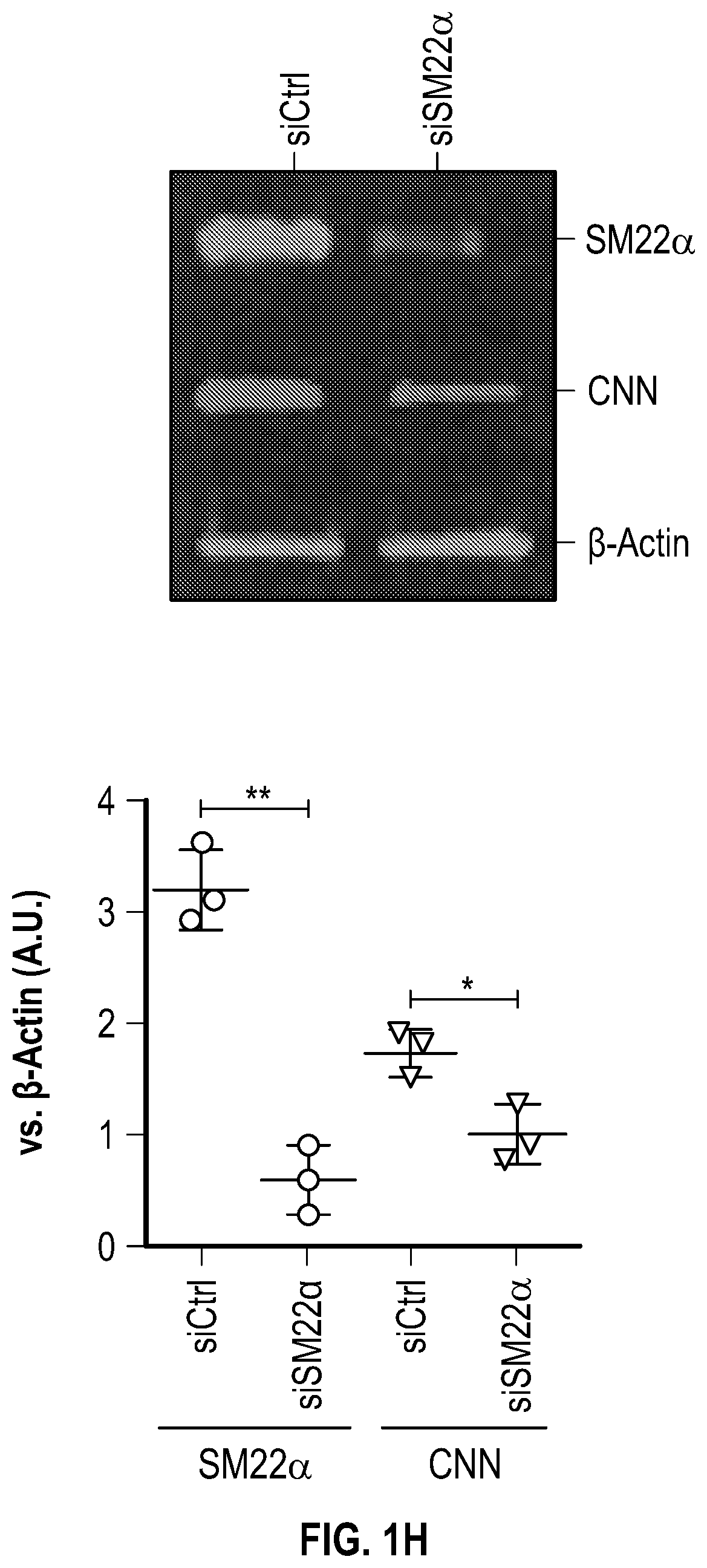
D00009
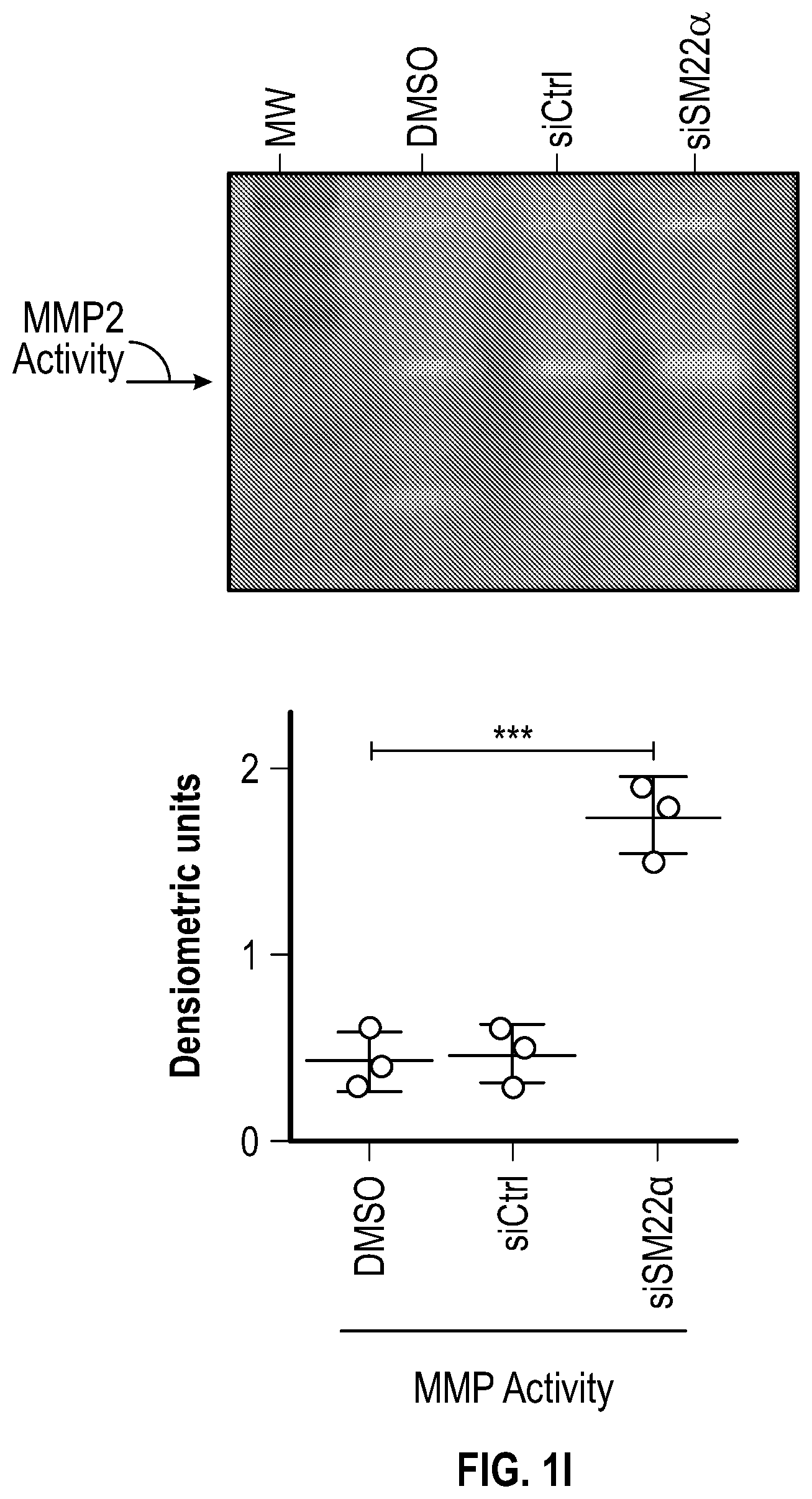
D00010
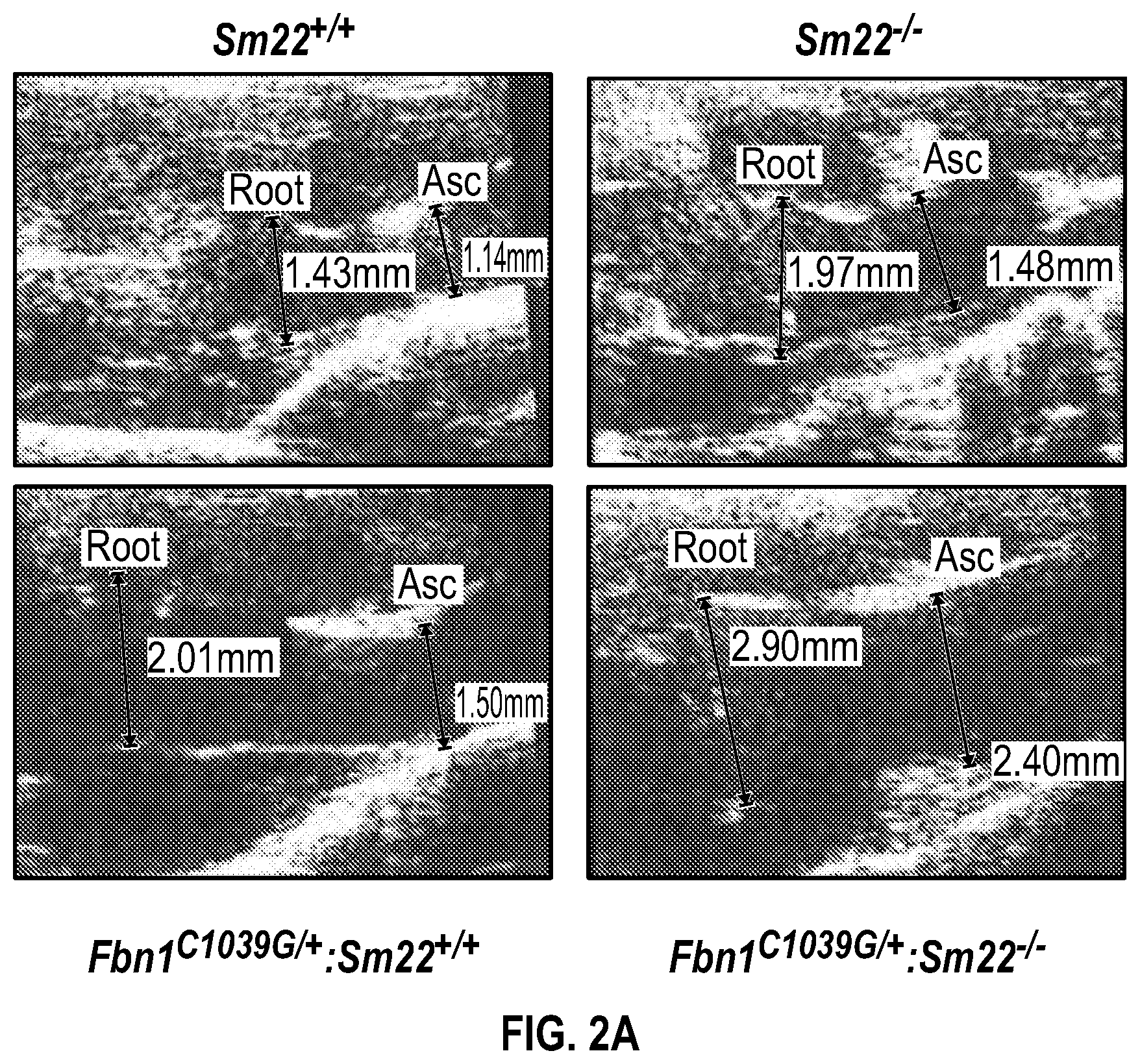
D00011
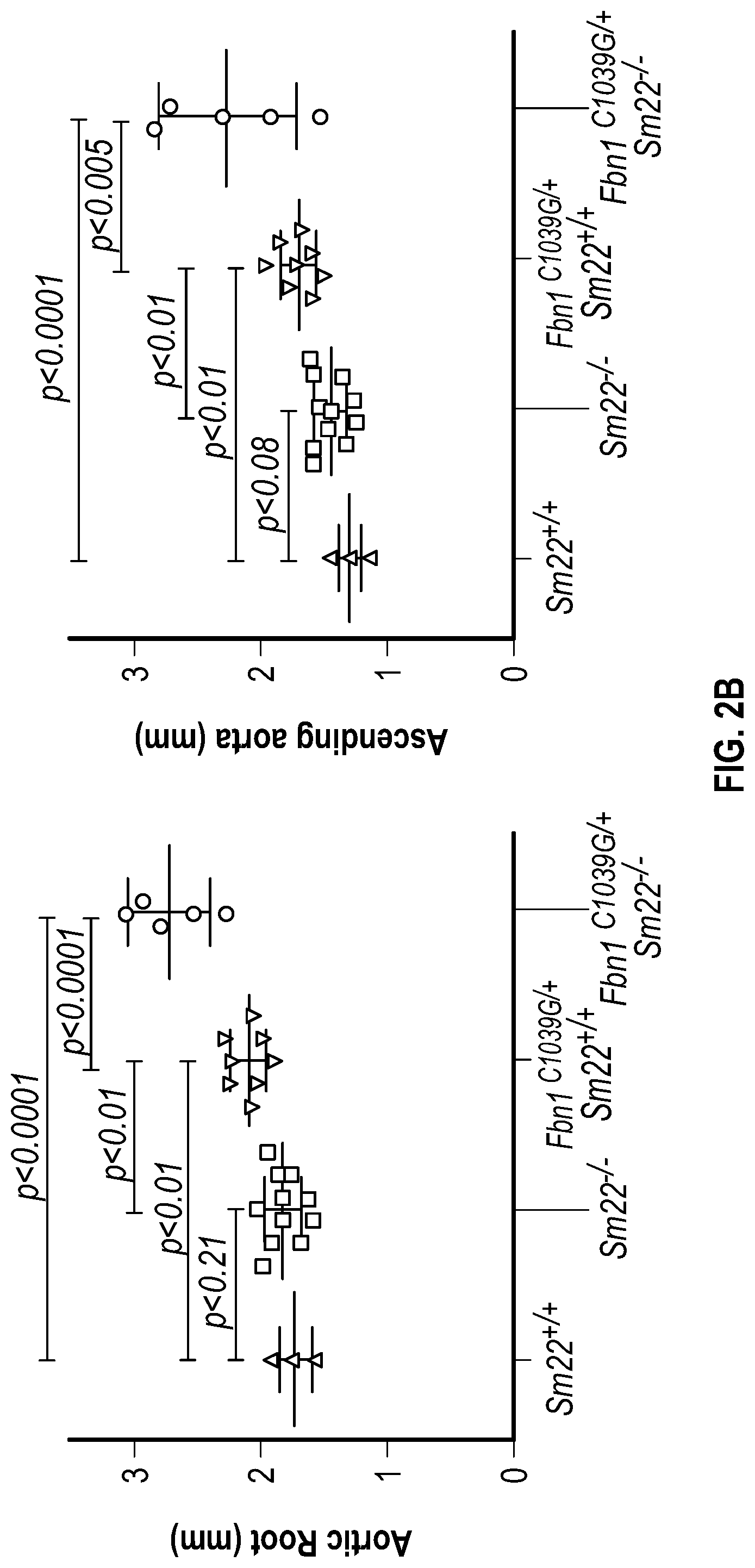
D00012
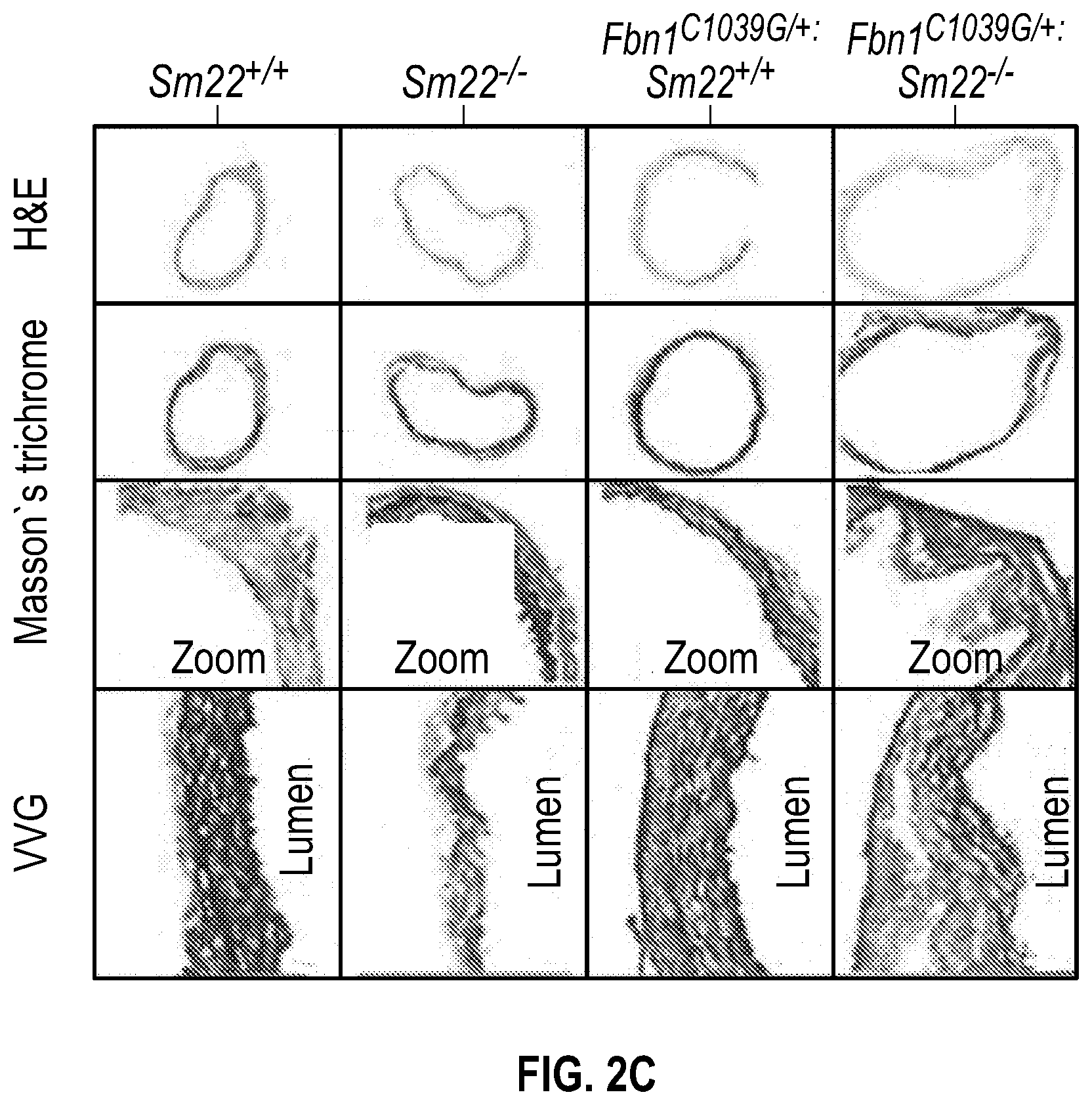
D00013
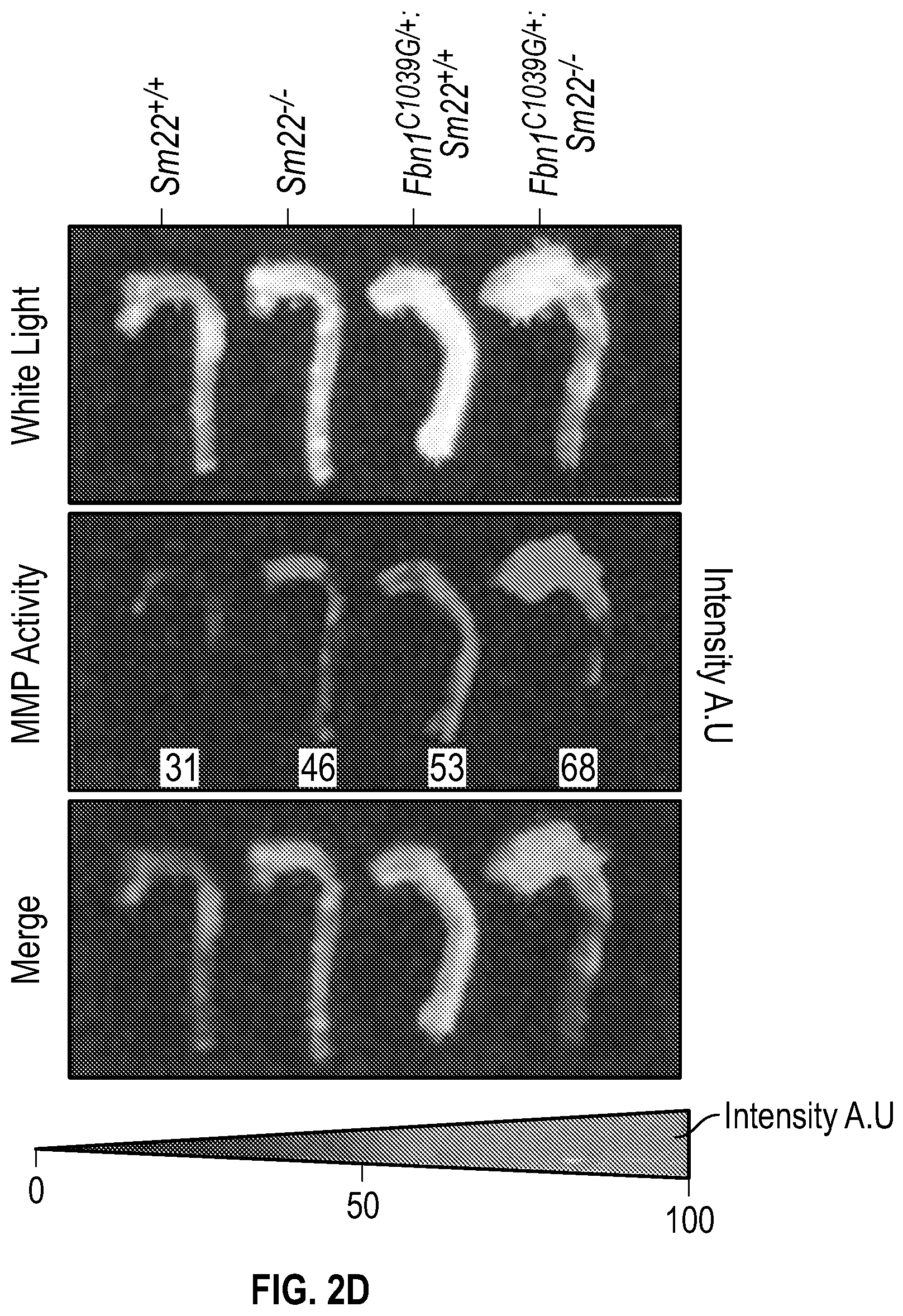
D00014
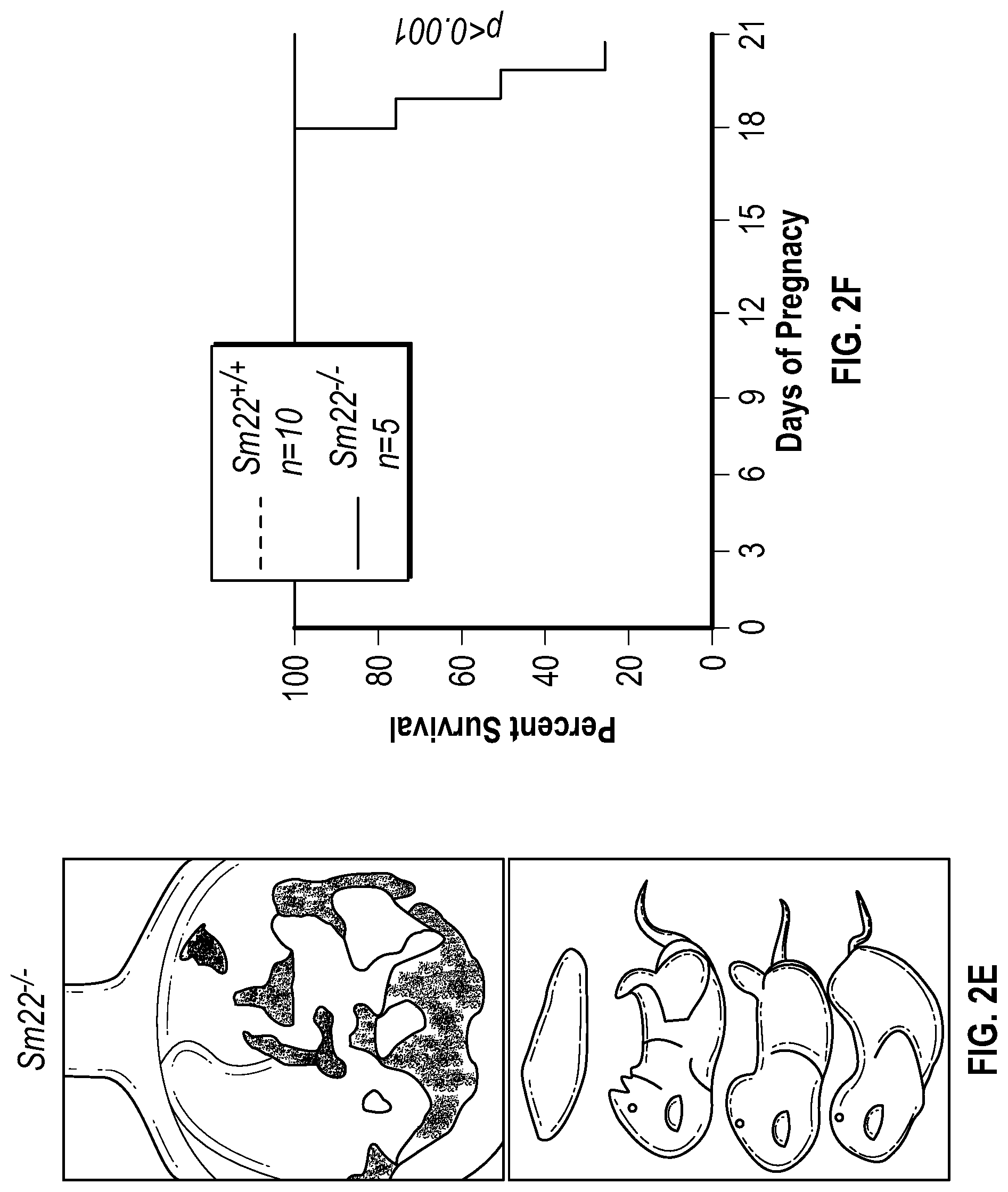
D00015
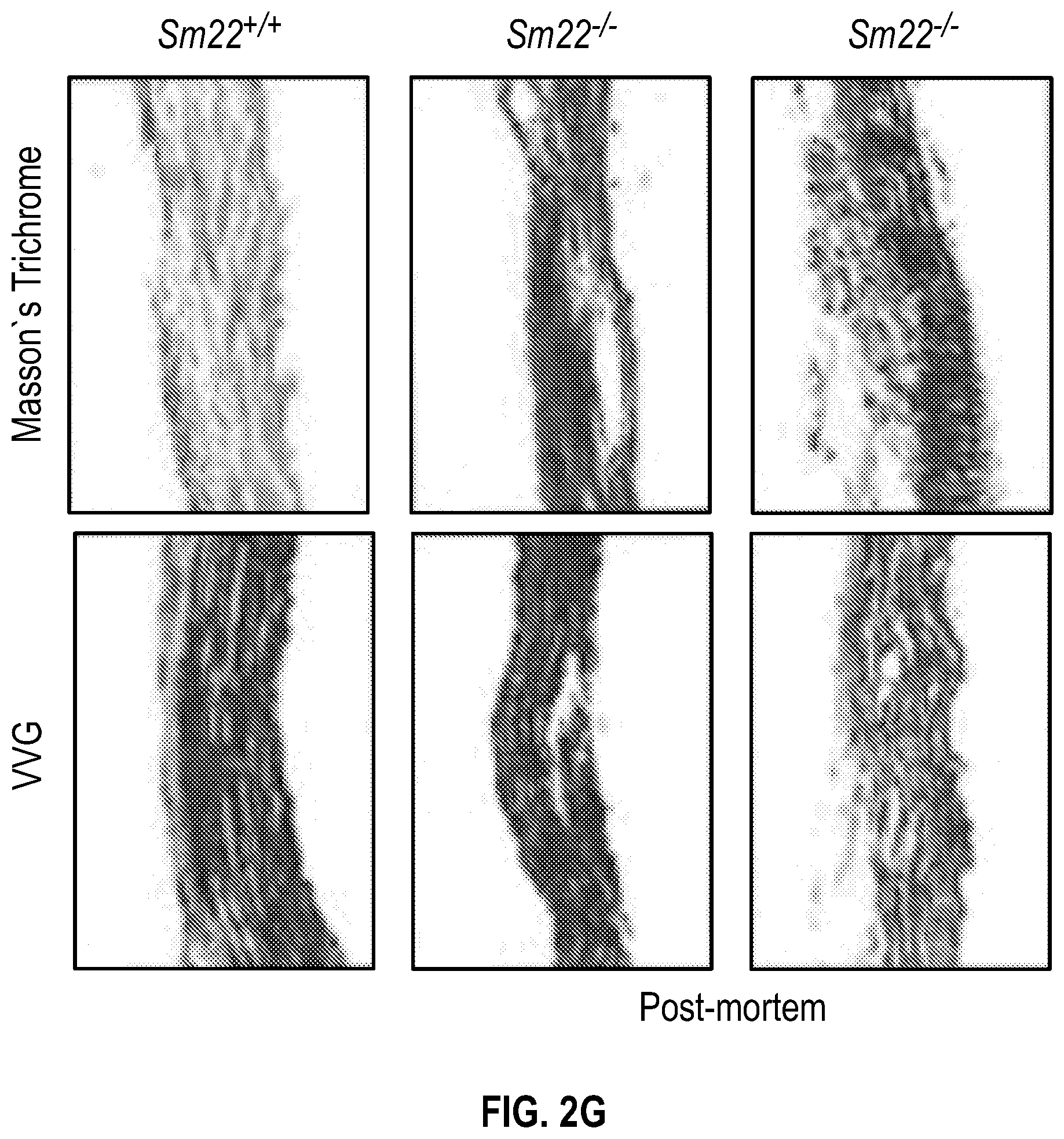
D00016
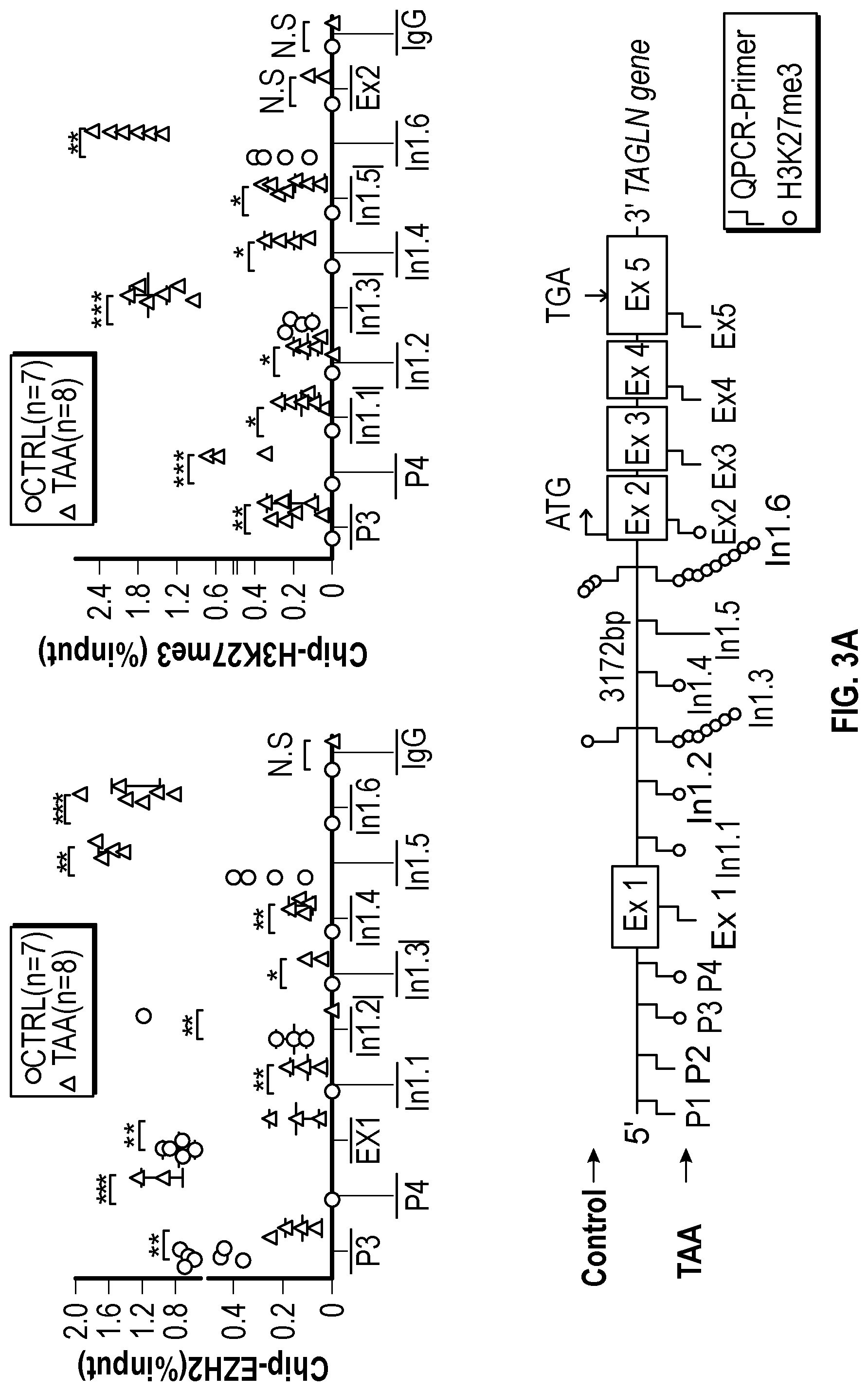
D00017
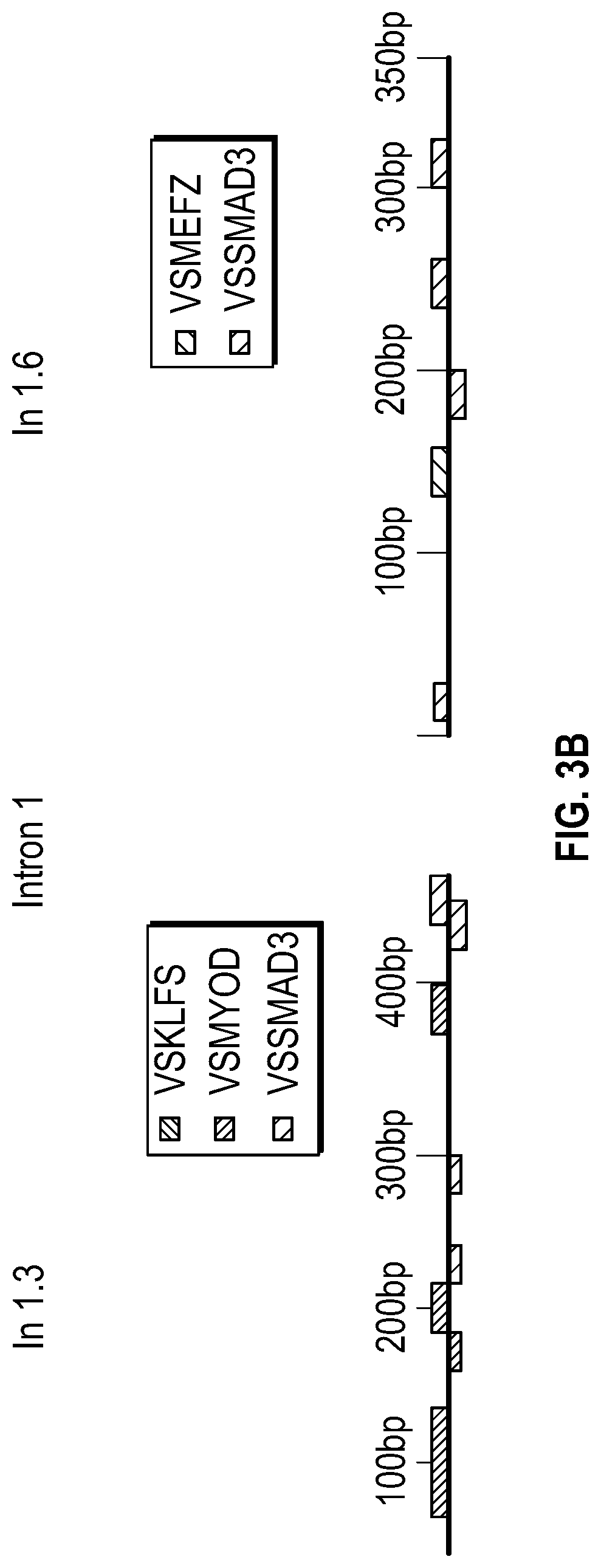
D00018
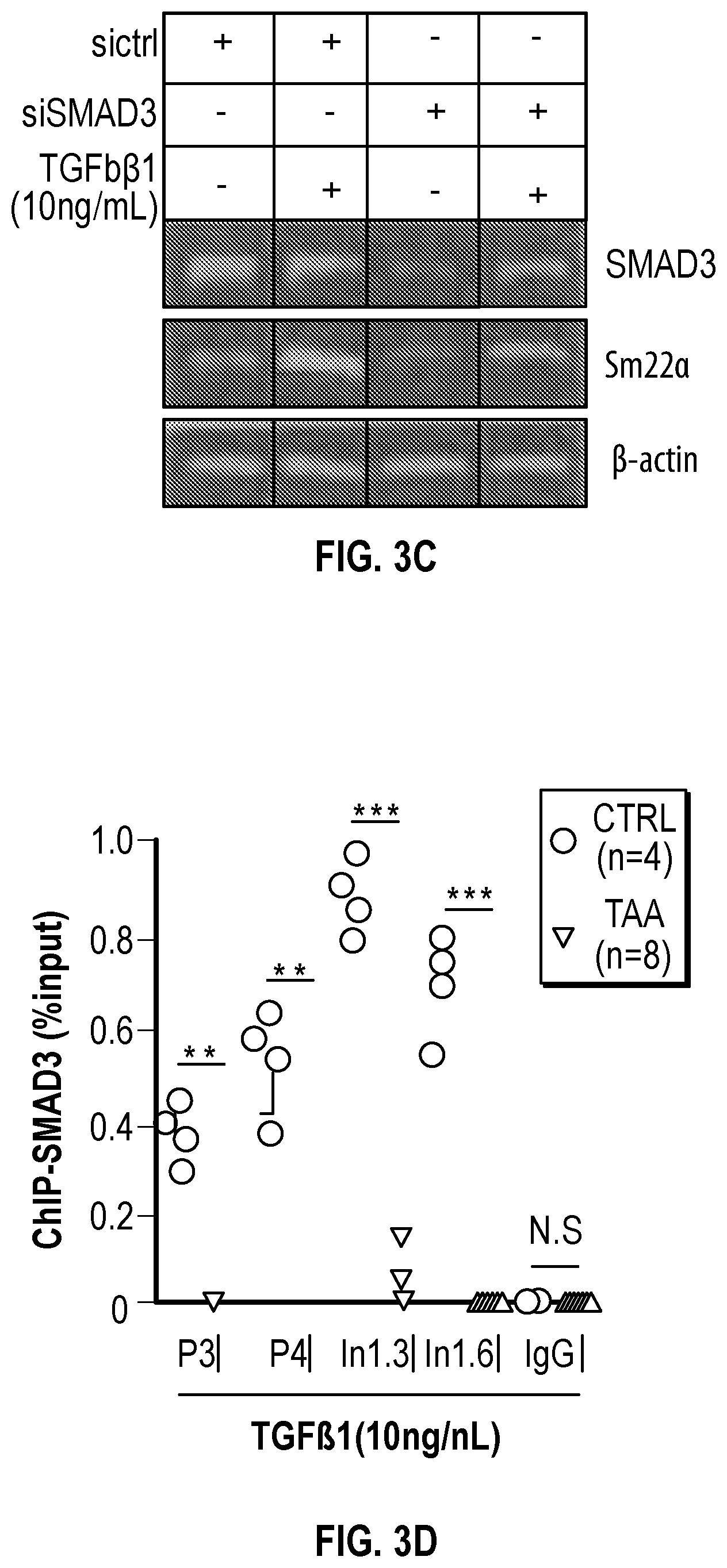
D00019
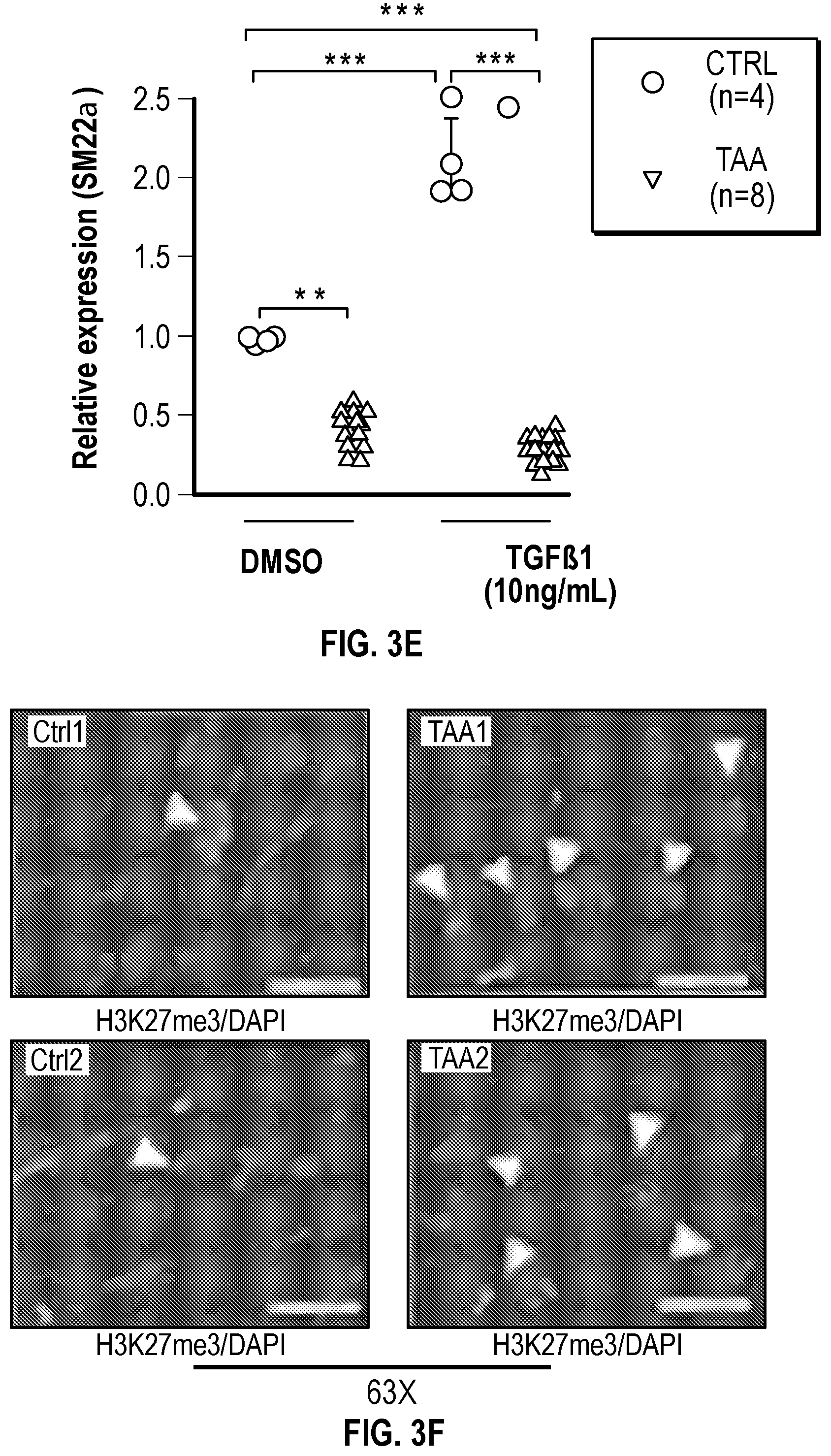
D00020
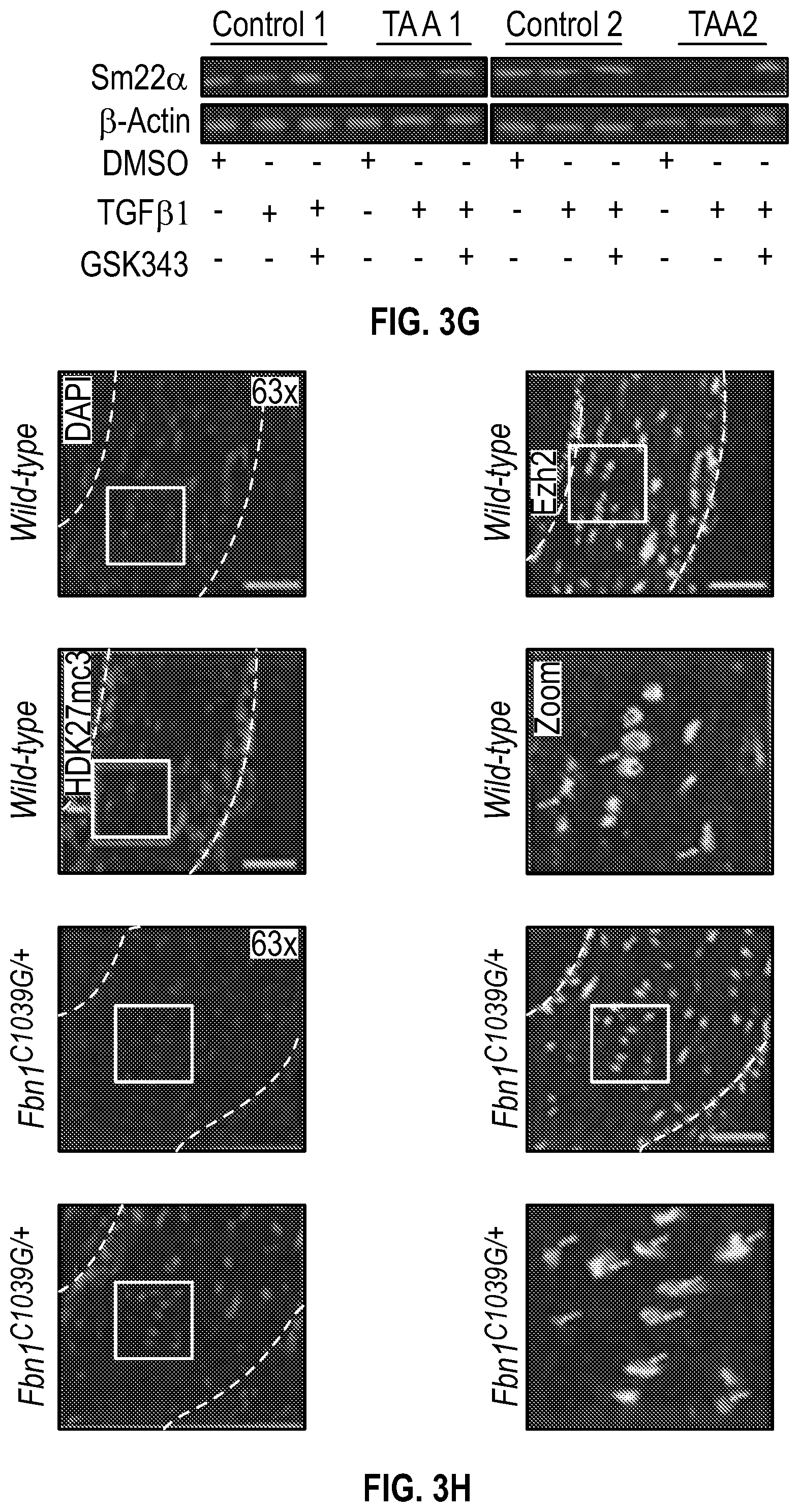
D00021
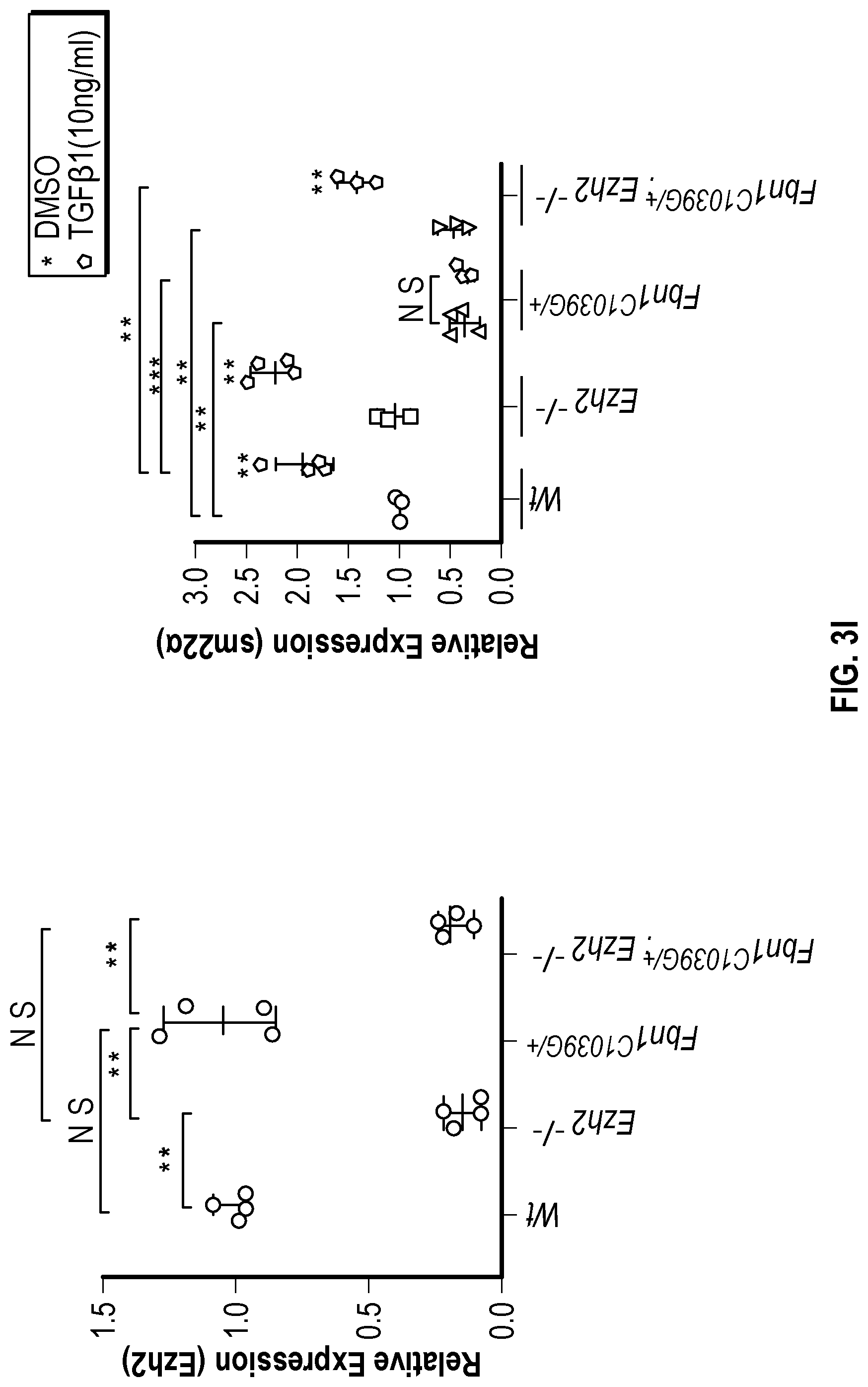
D00022
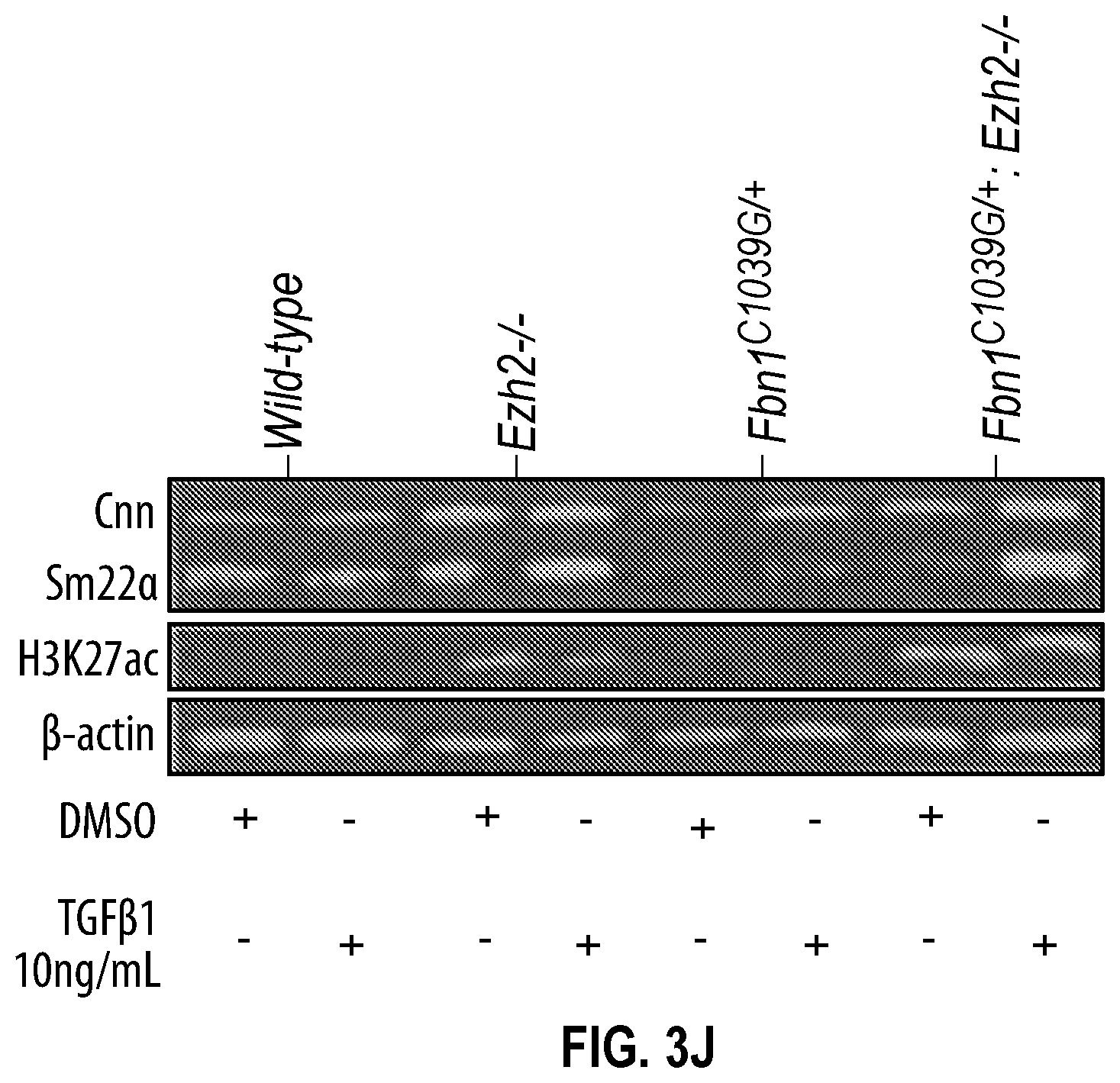
D00023
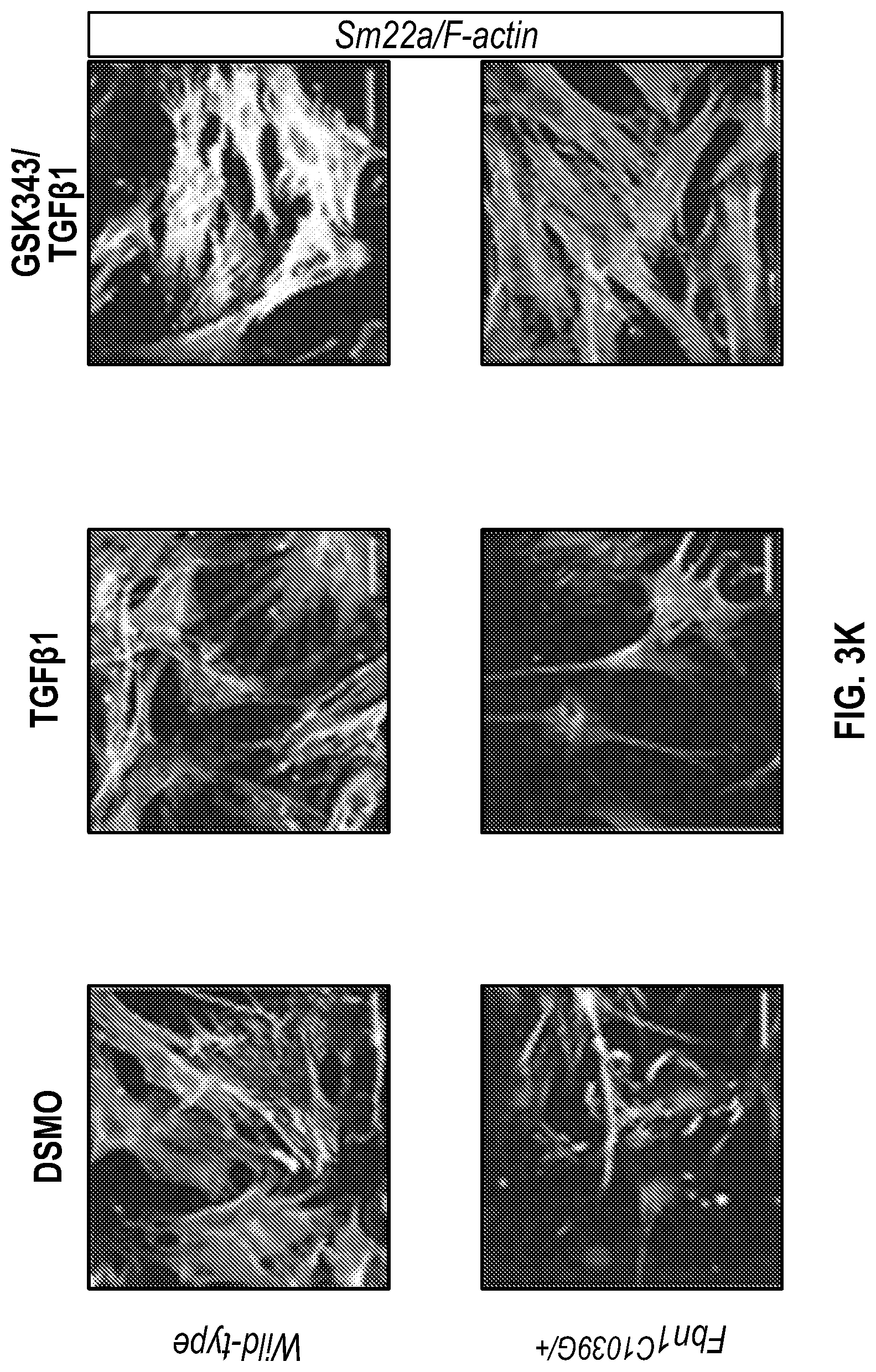
D00024
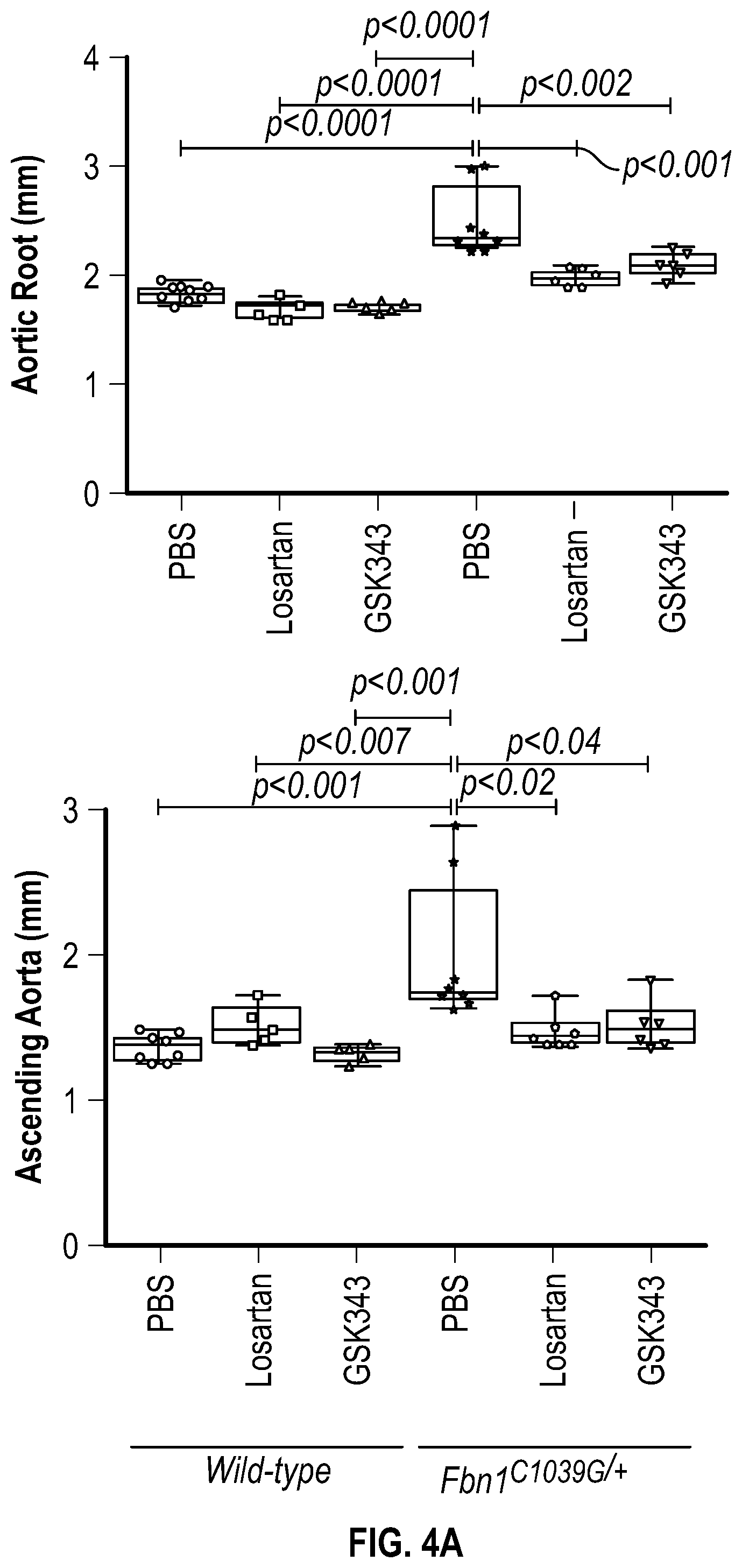
D00025
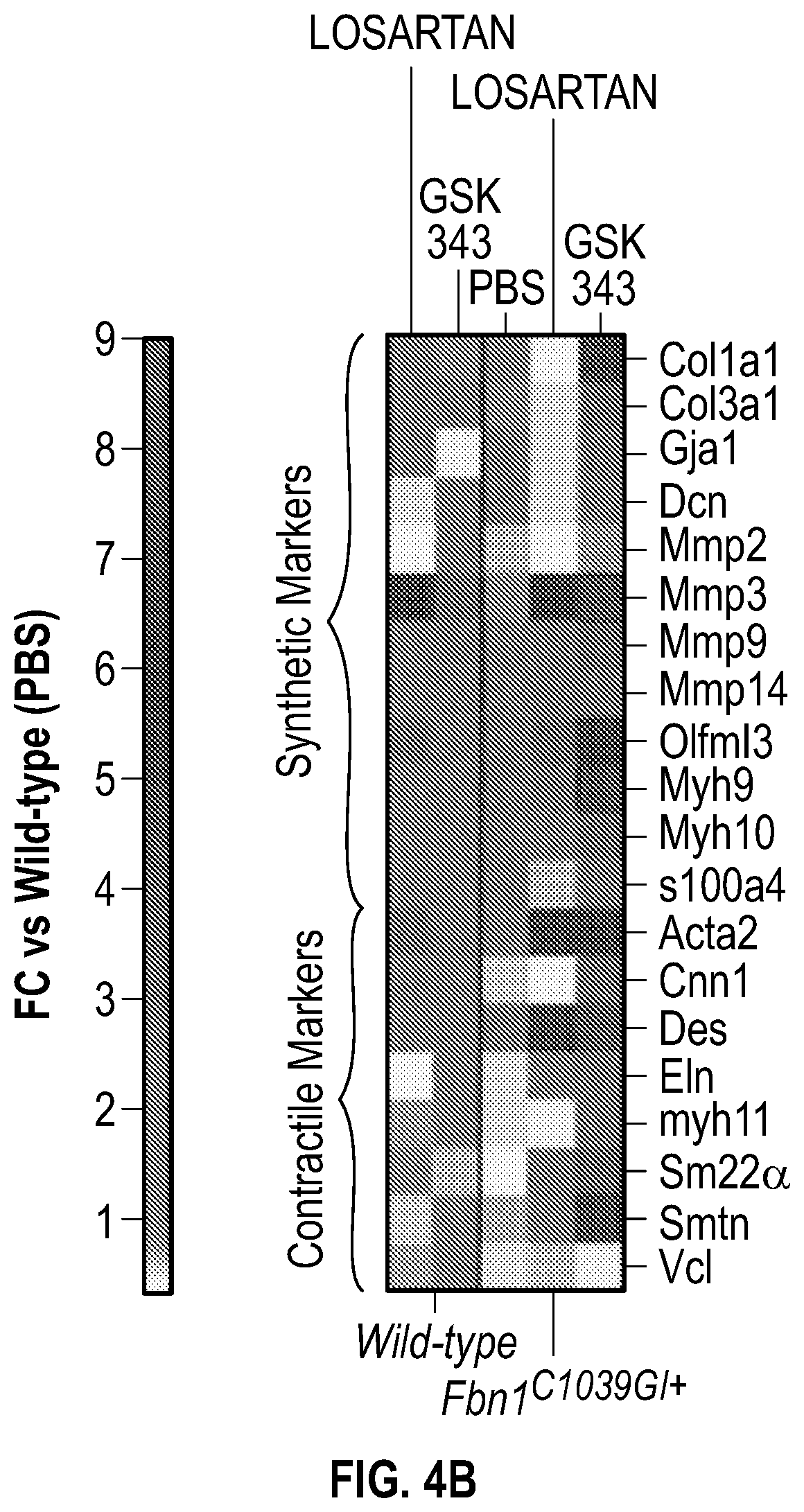
D00026
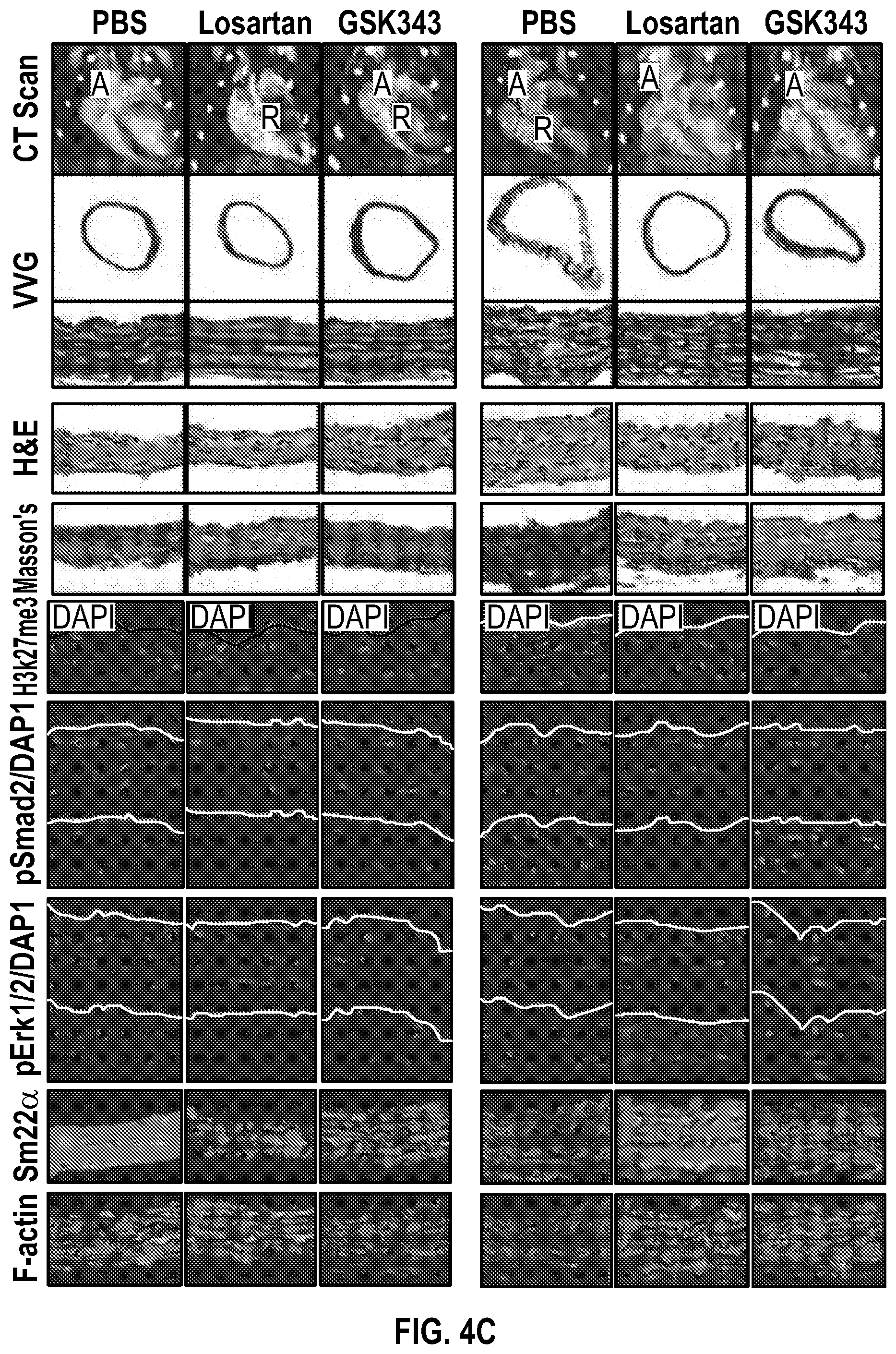
D00027
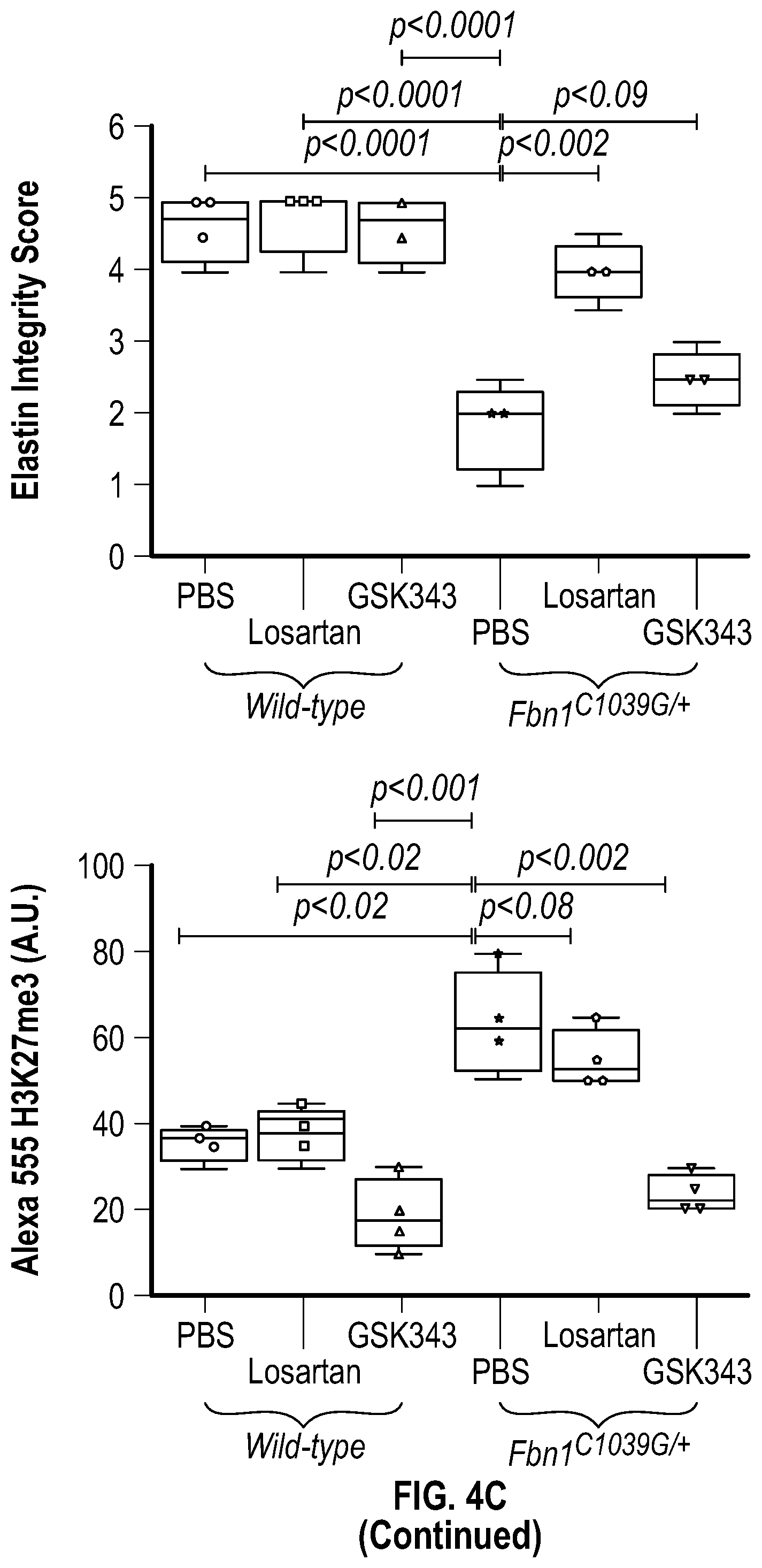
D00028
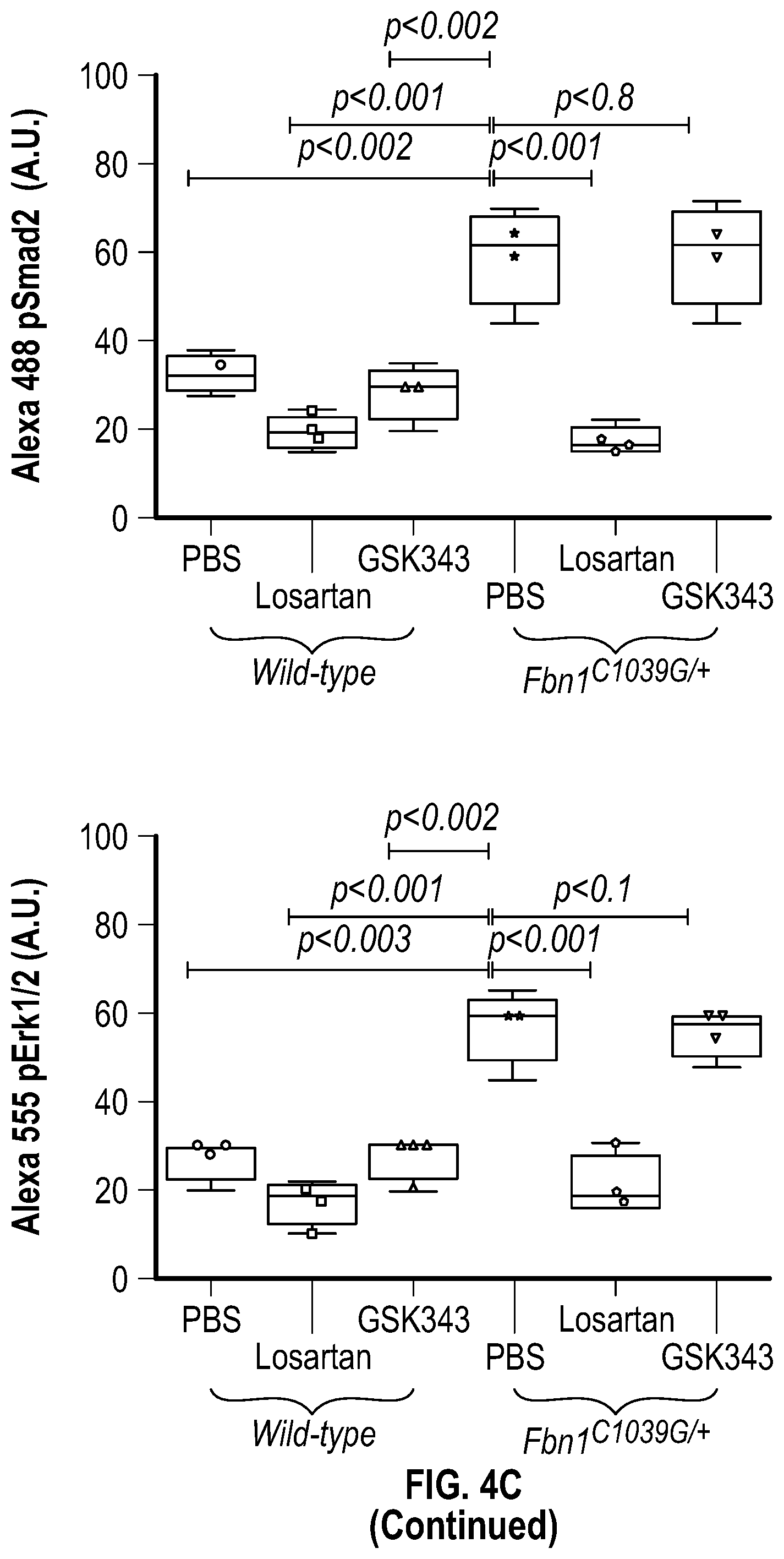
D00029
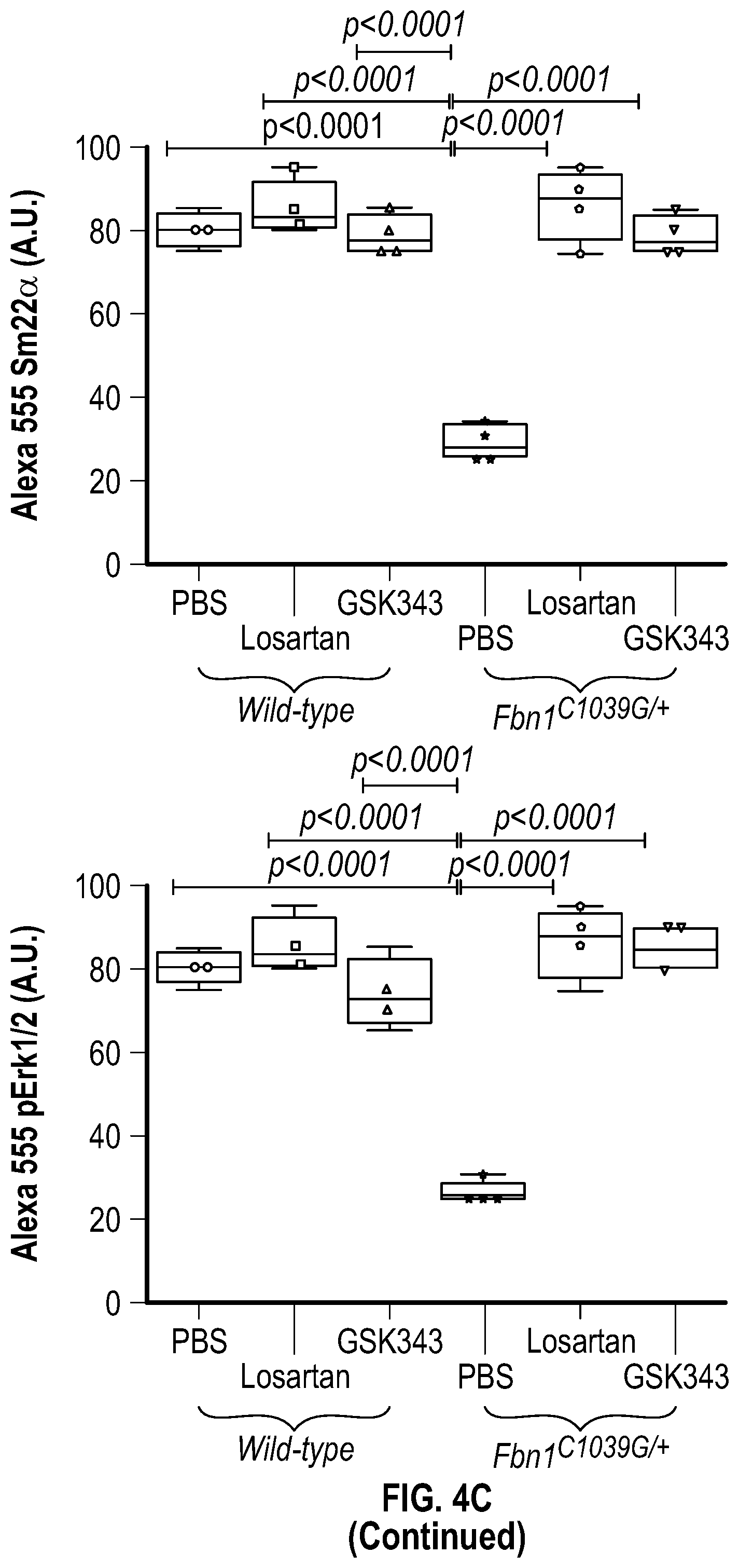
D00030
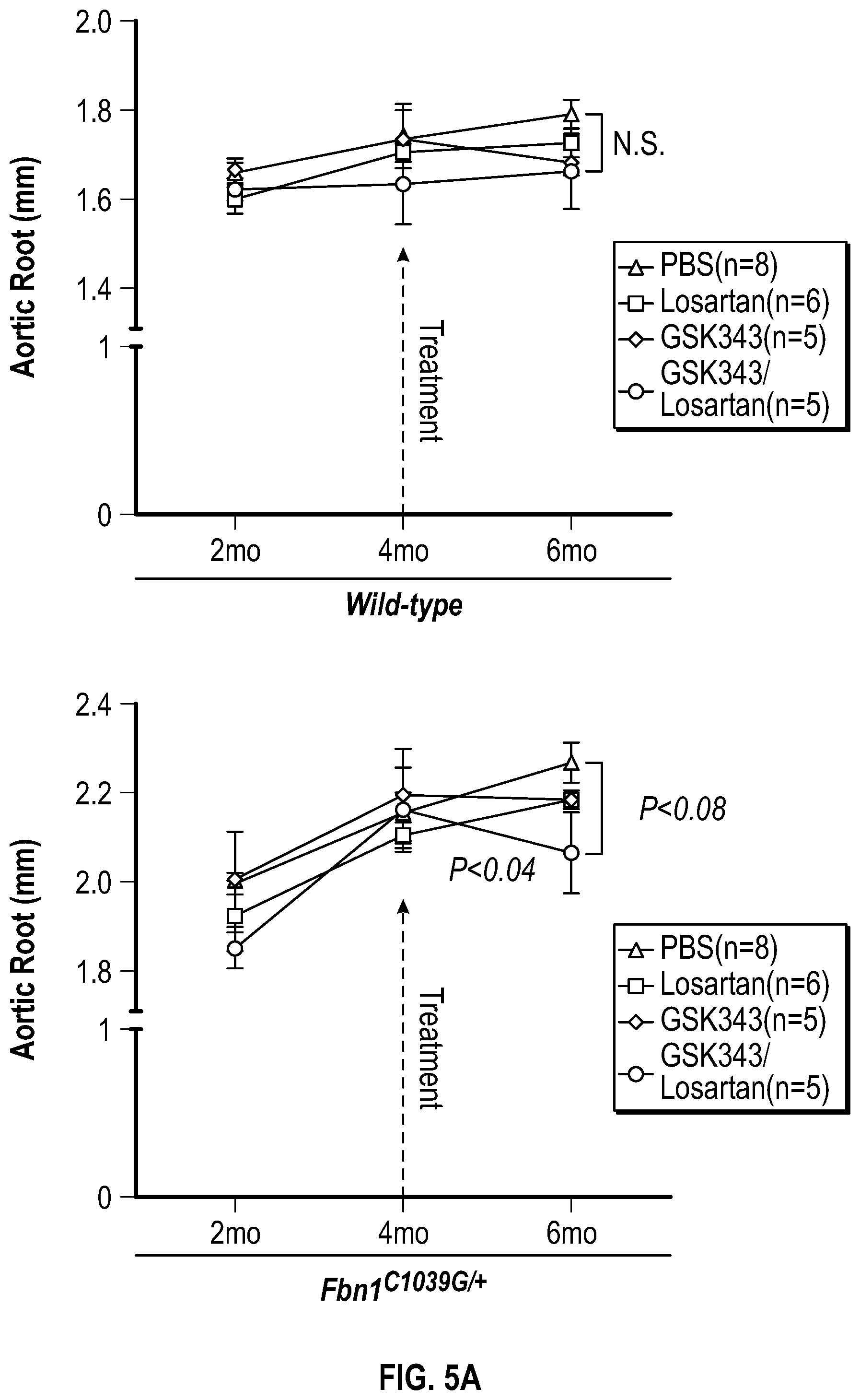
D00031
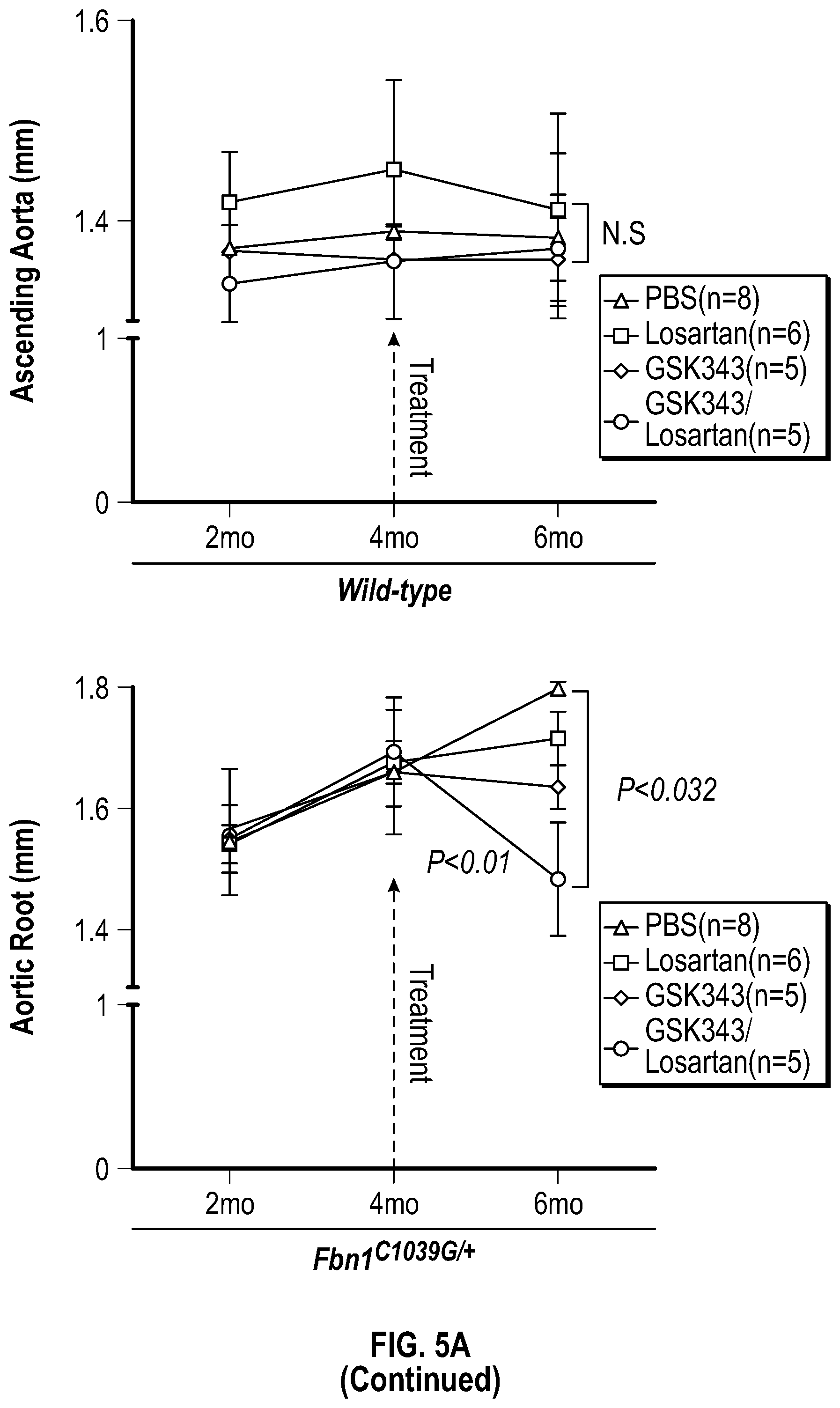
D00032
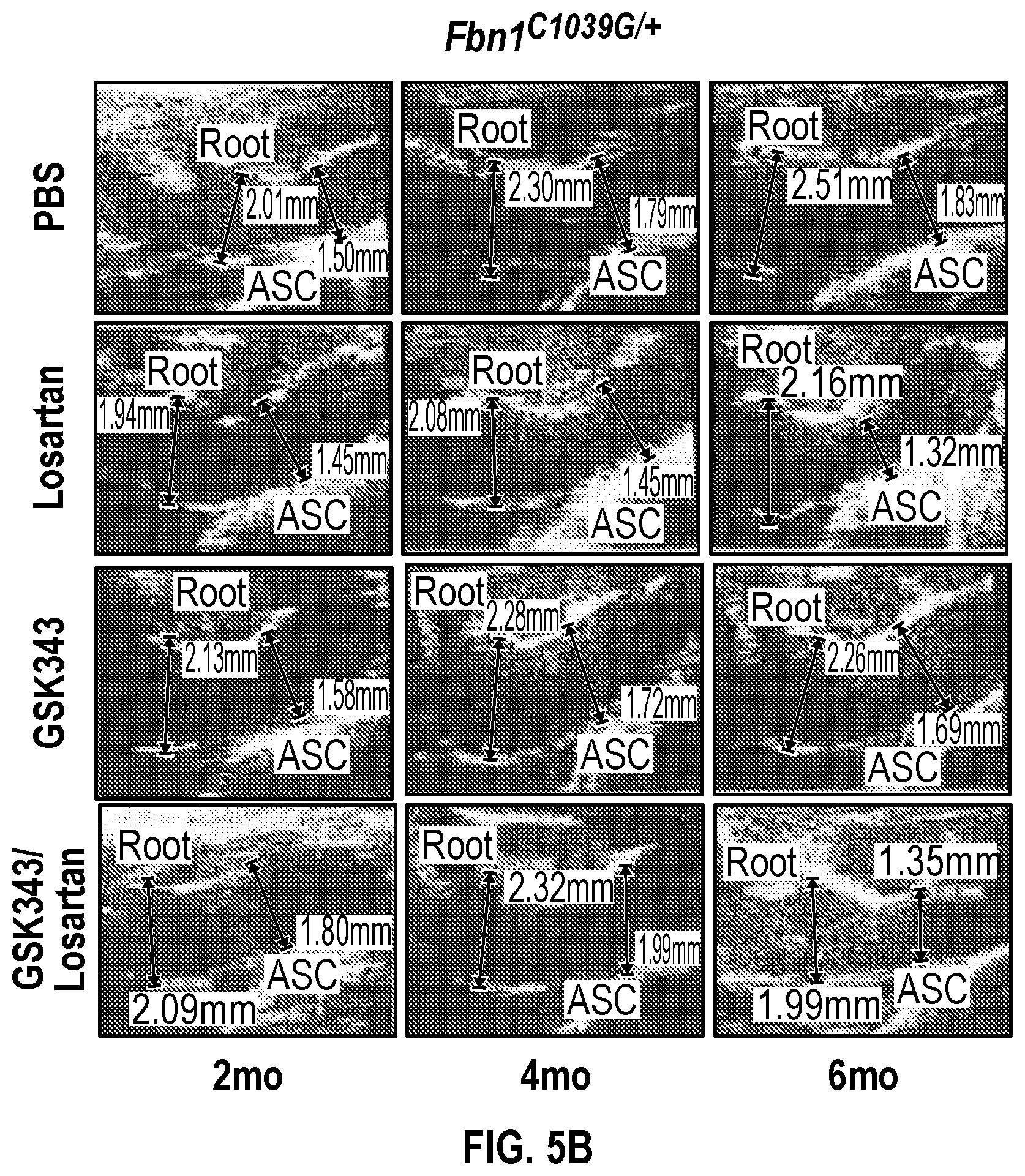
D00033
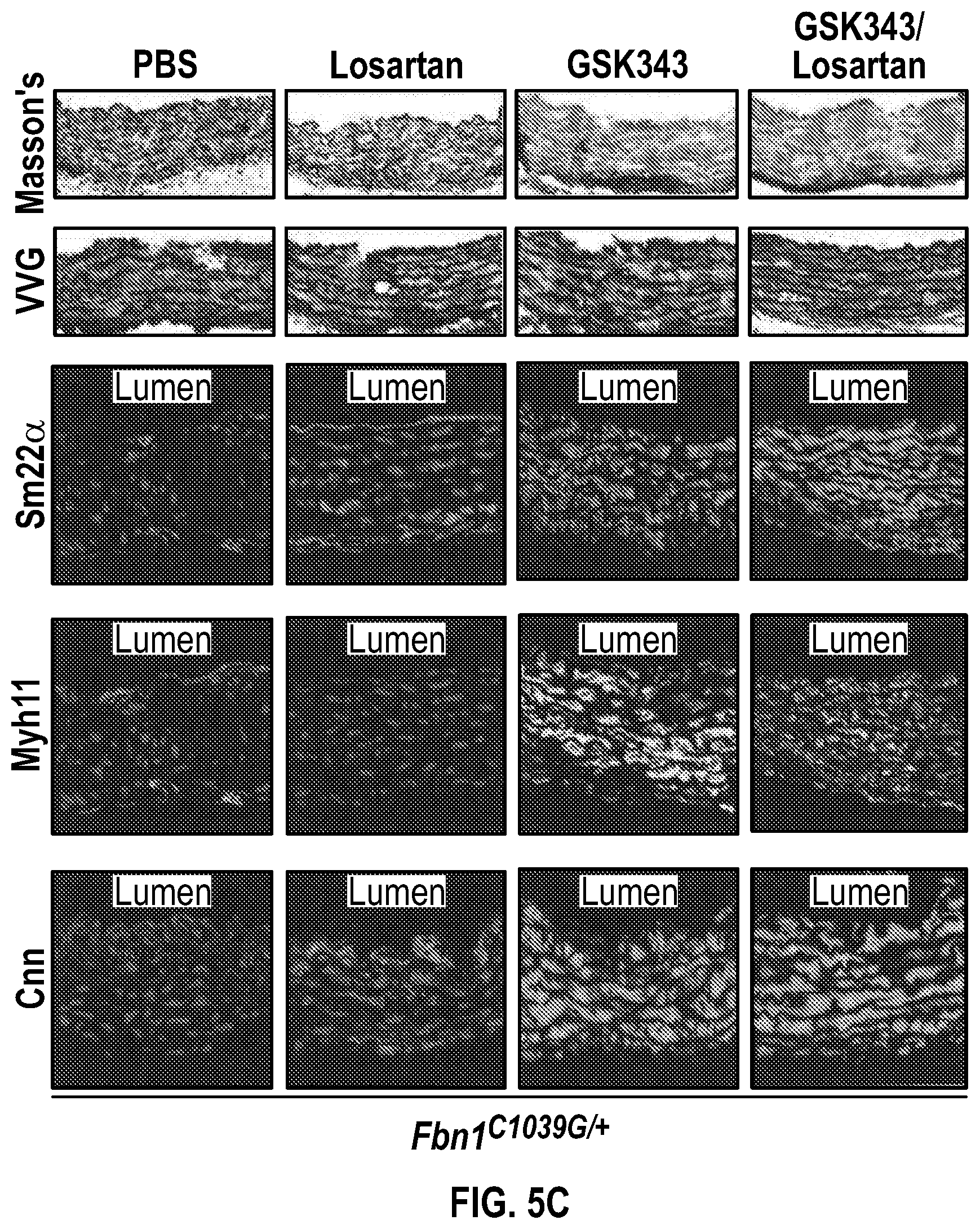
D00034
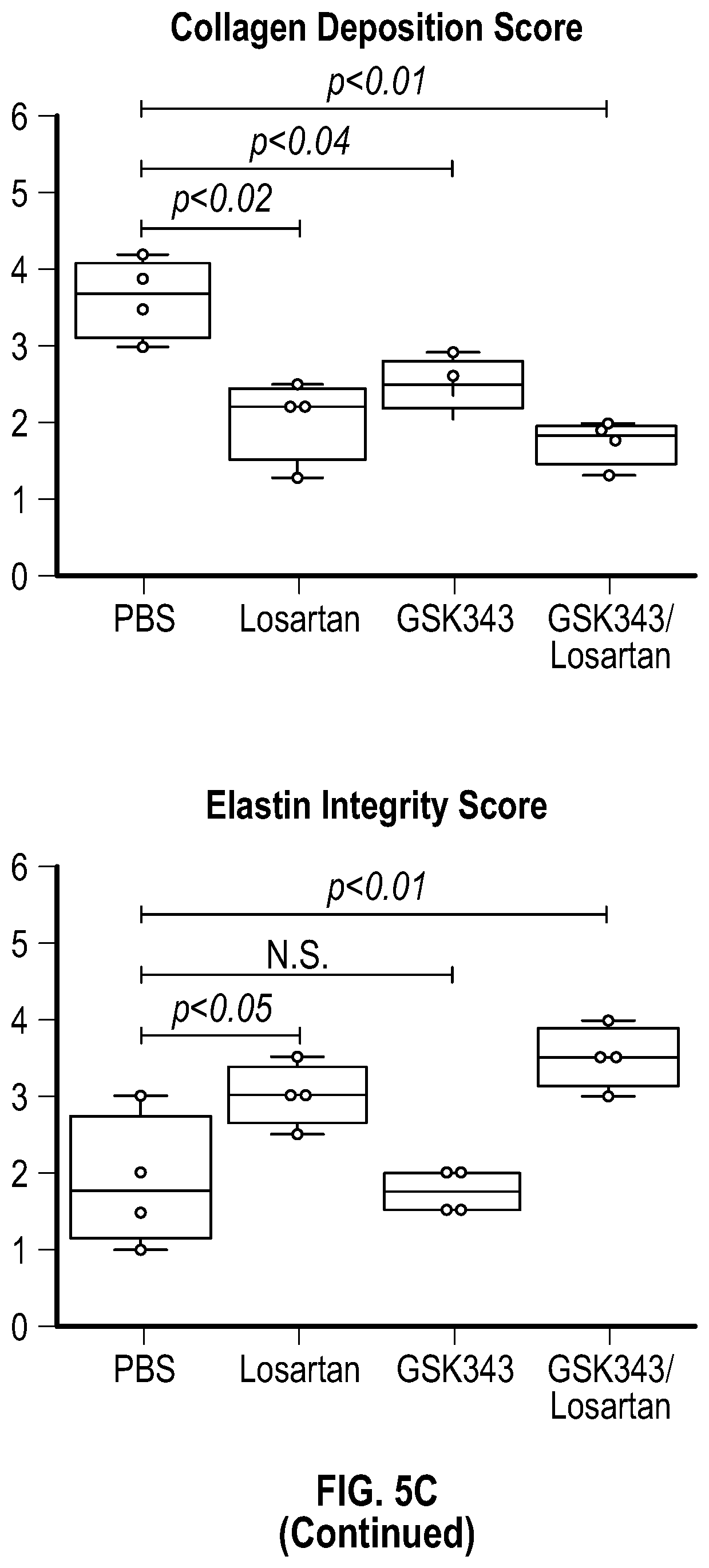
D00035
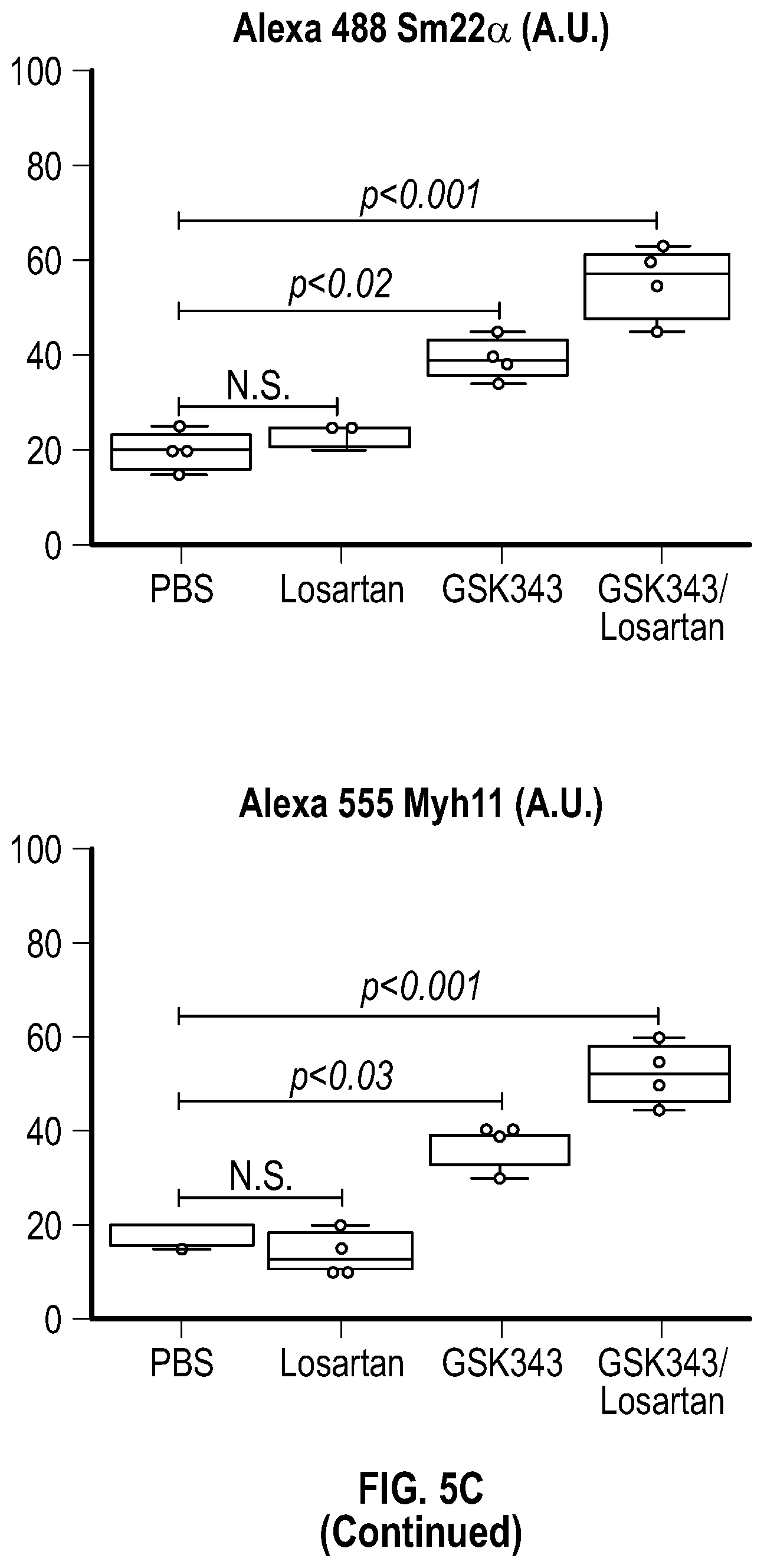
D00036
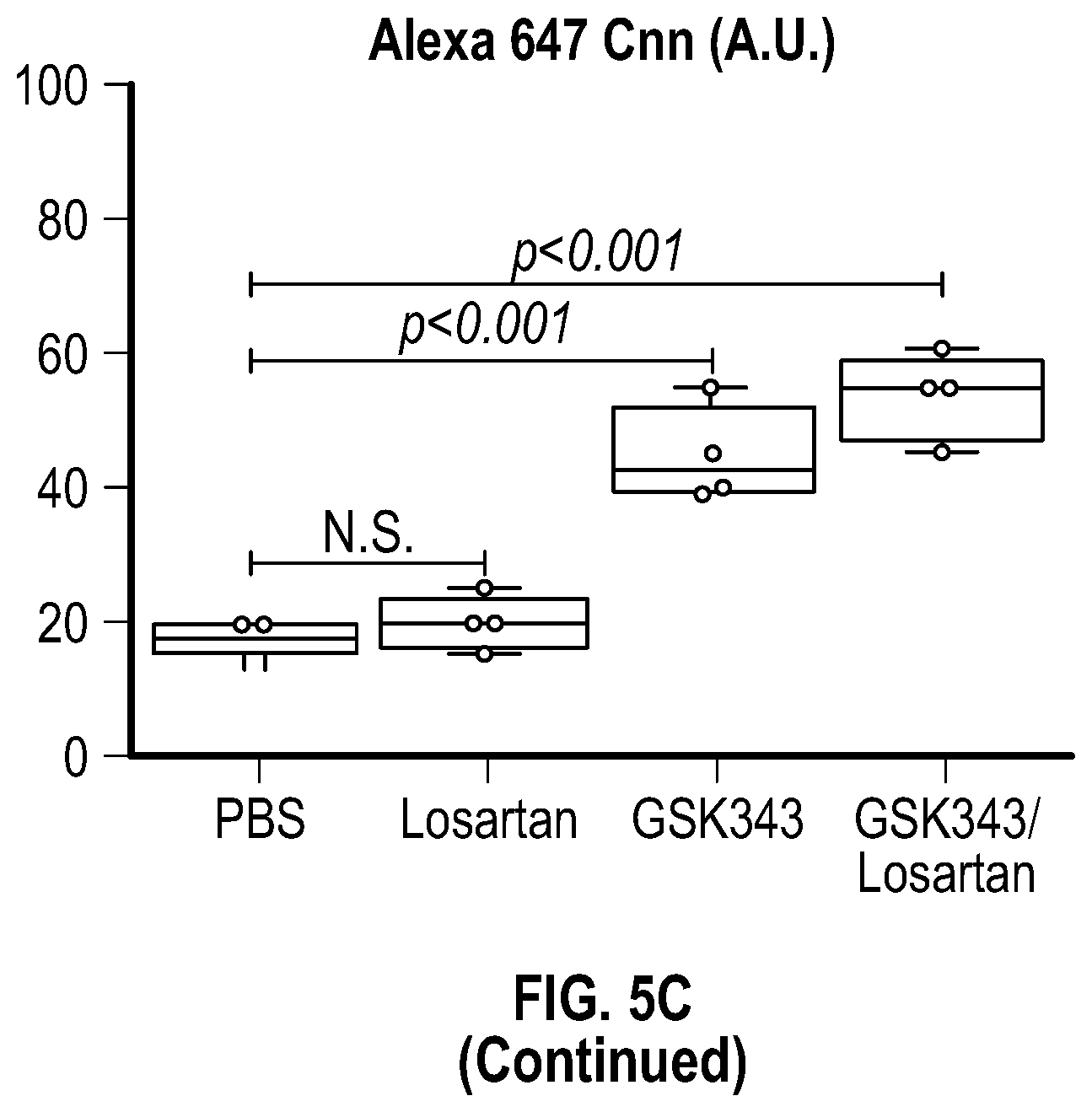
D00037
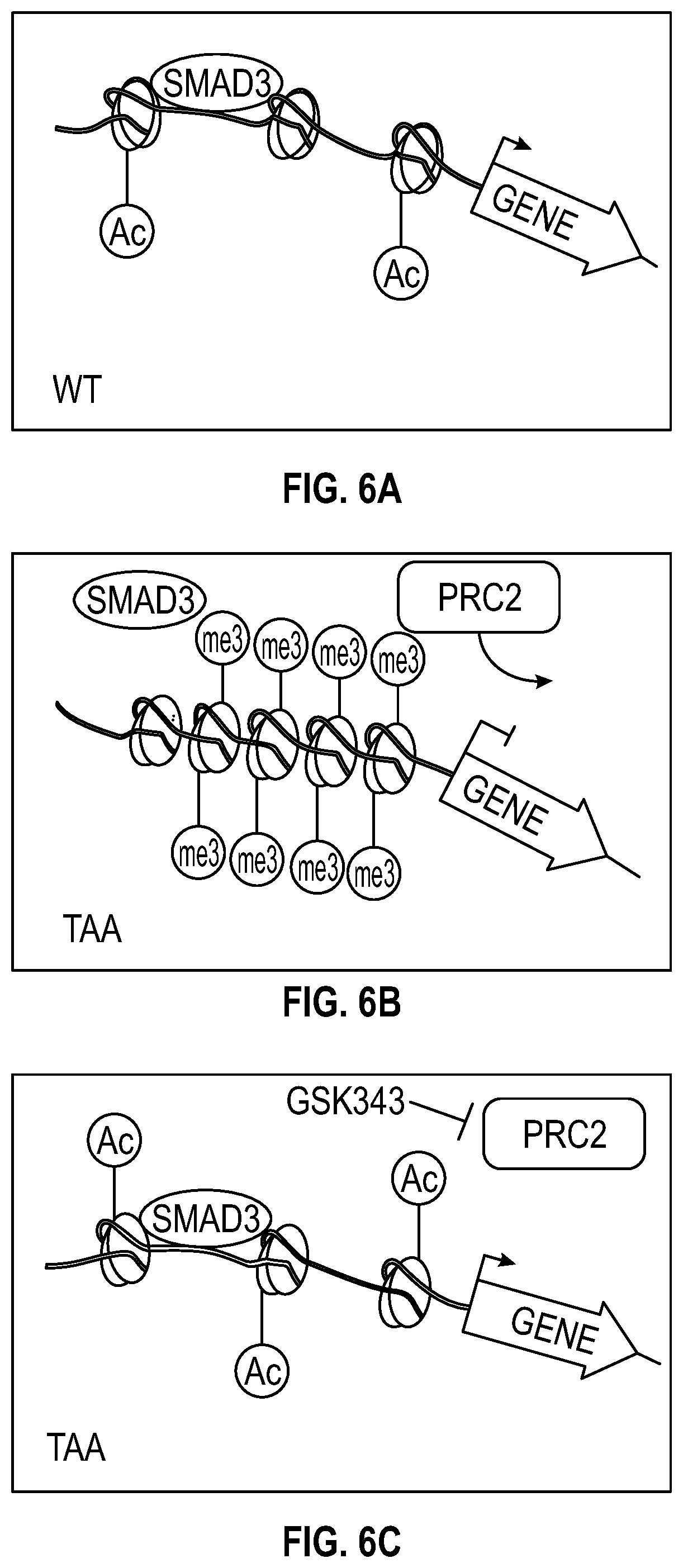
D00038
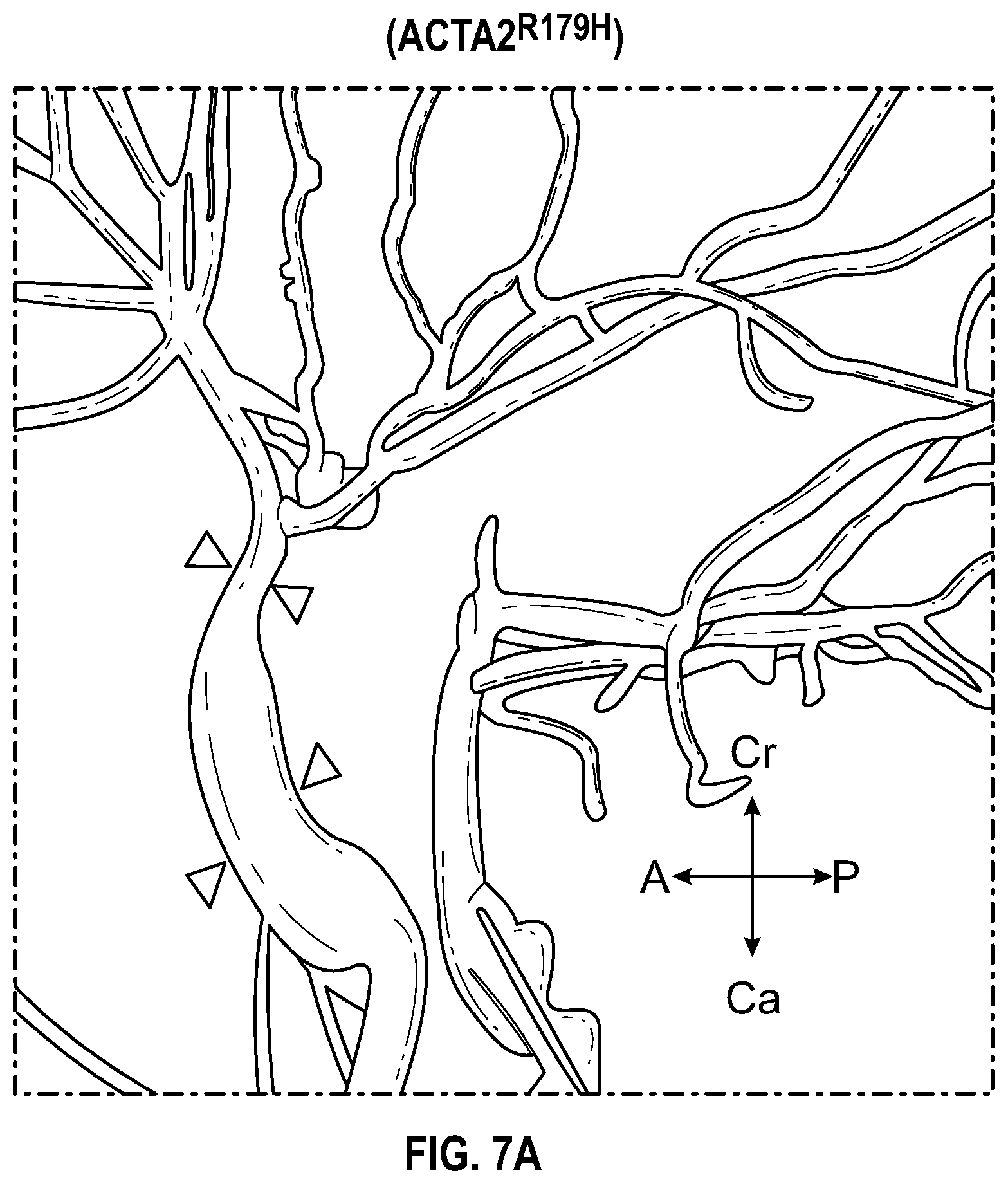
D00039
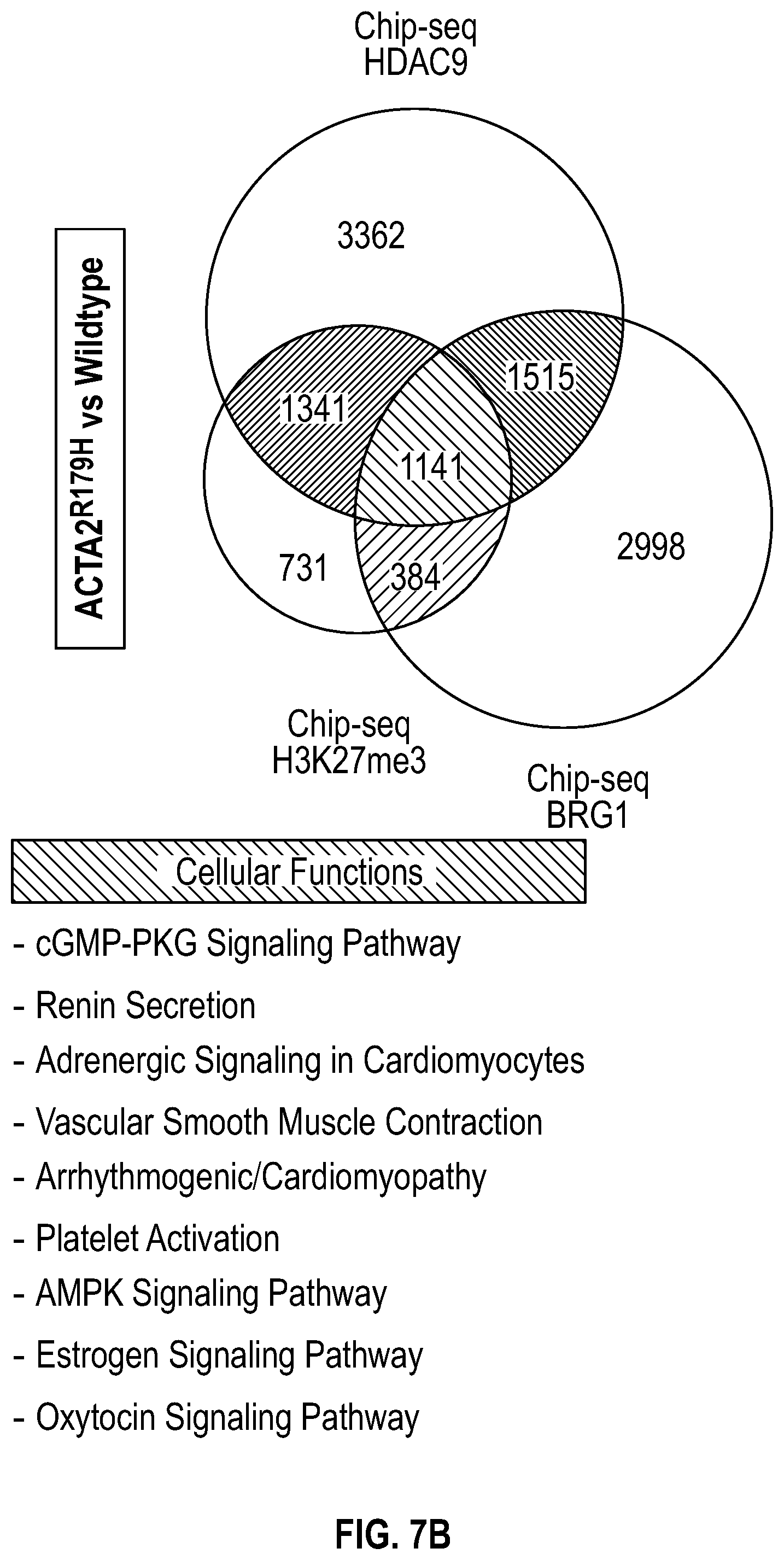
D00040
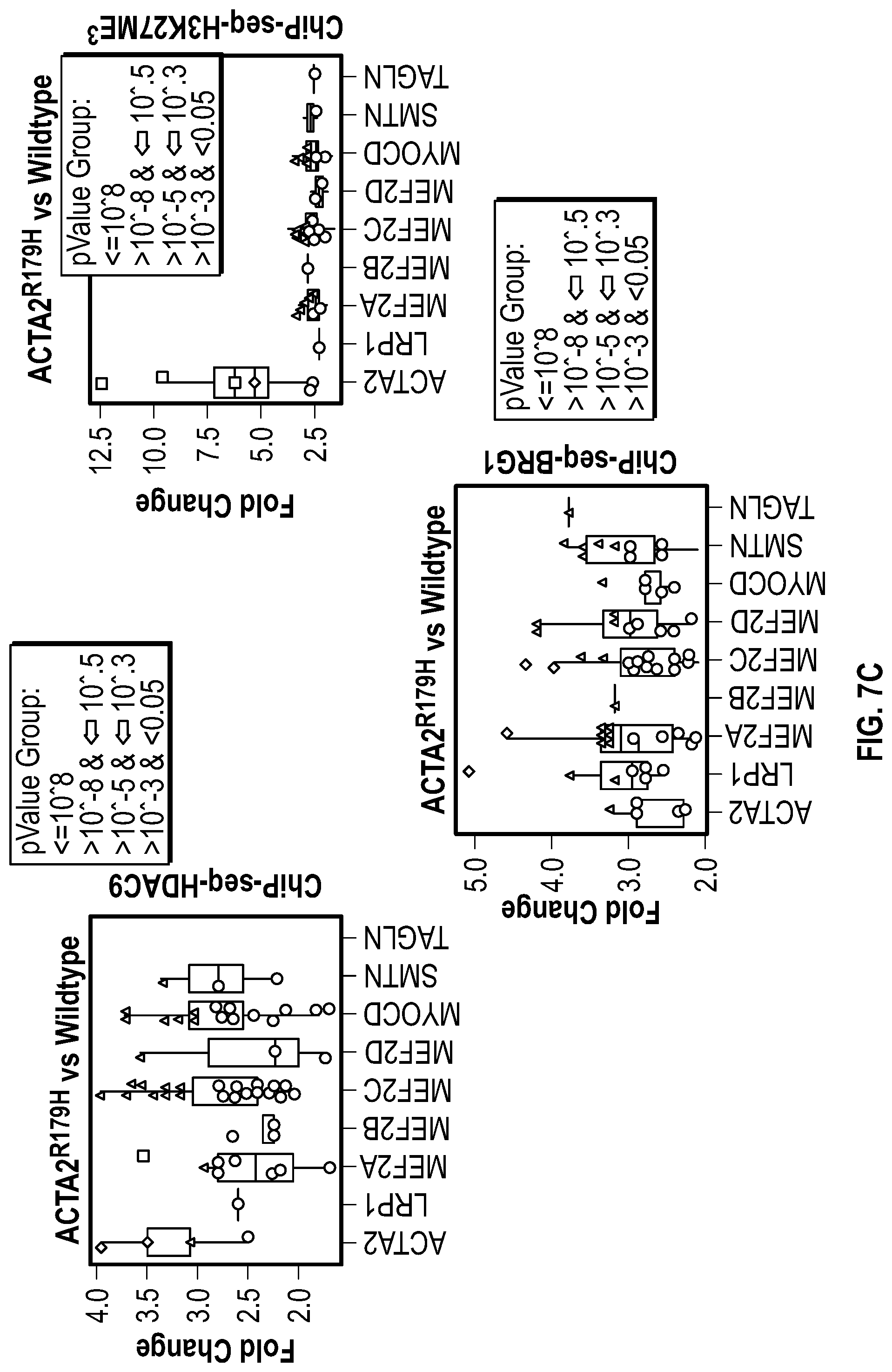
D00041
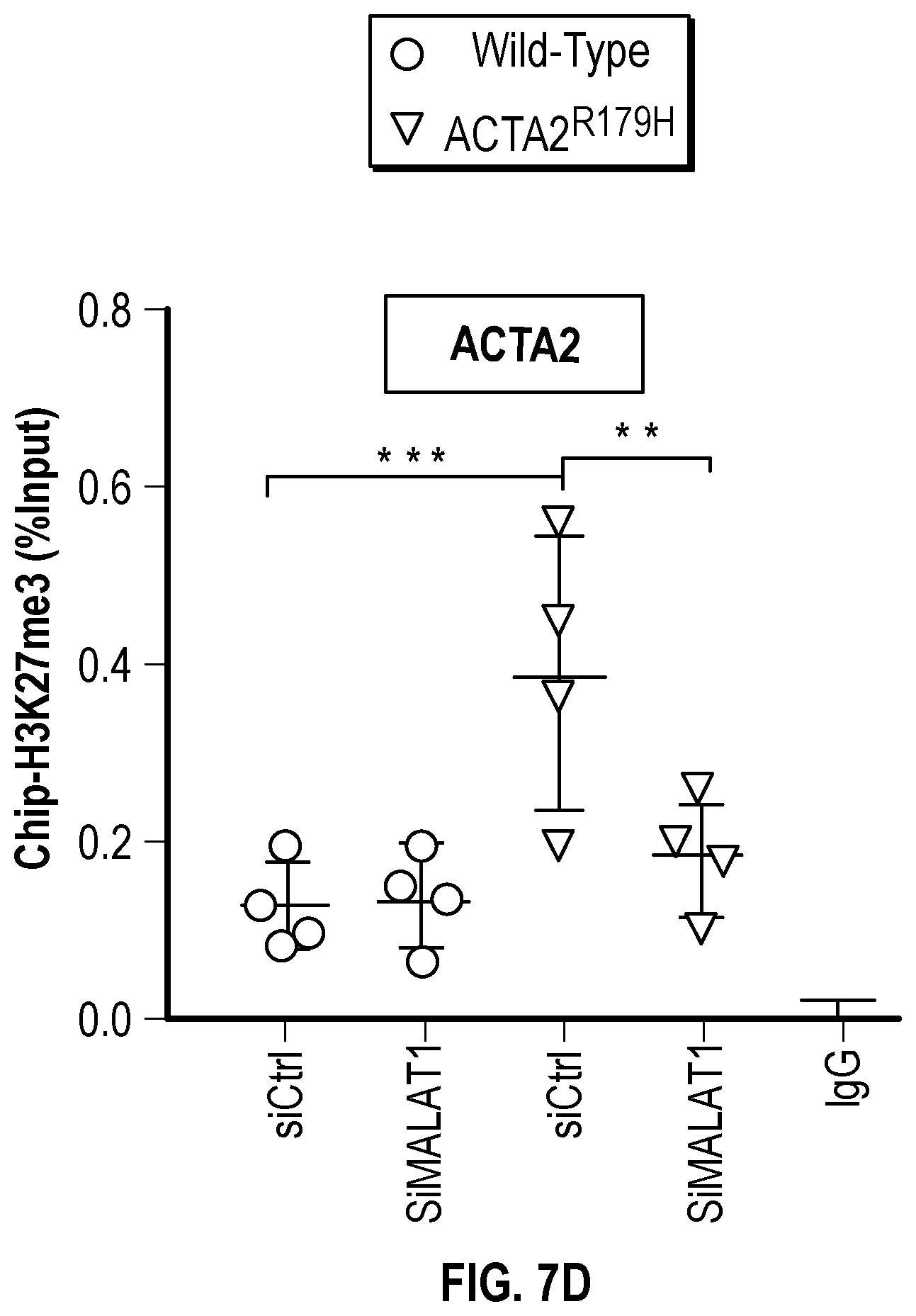
D00042
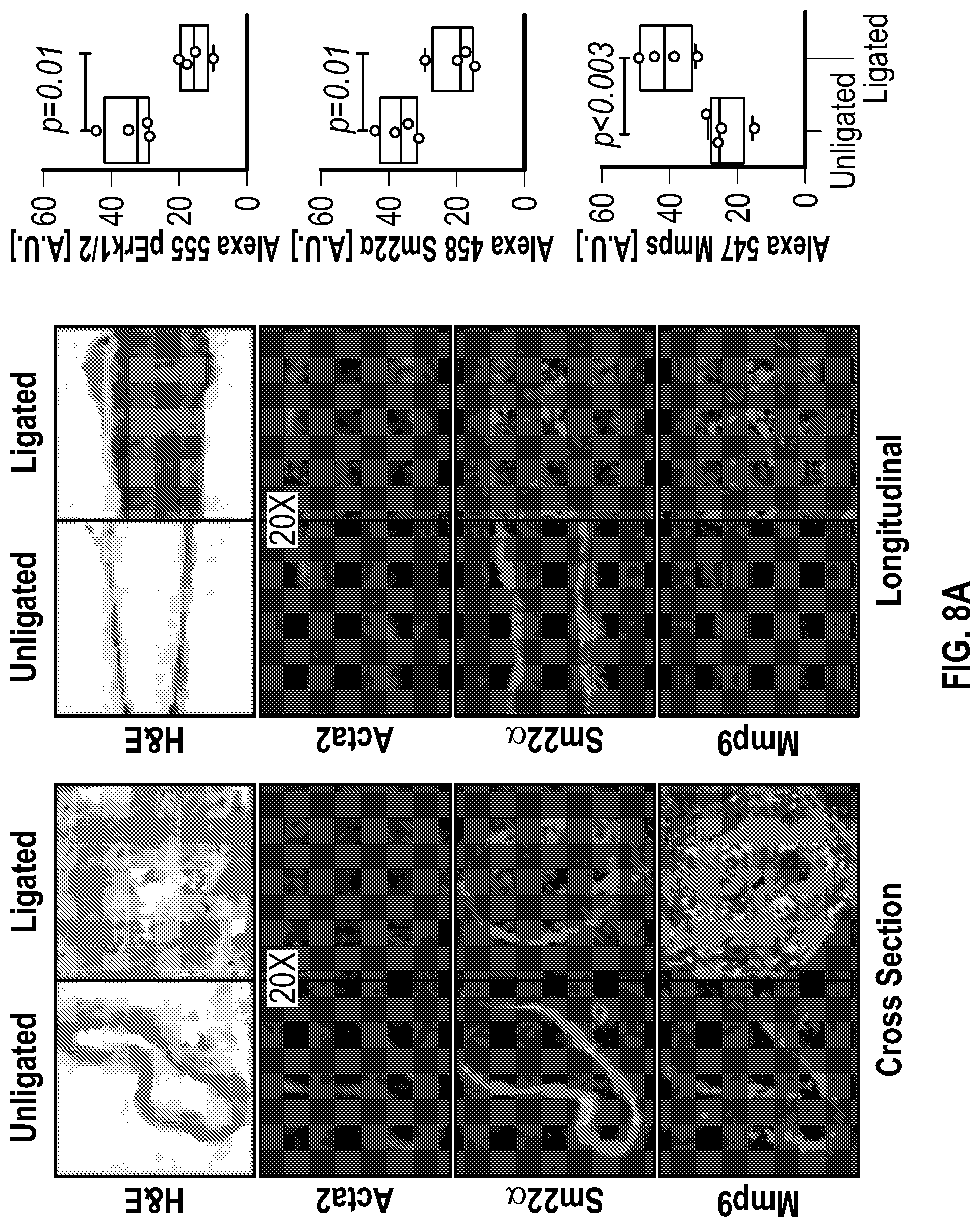
D00043
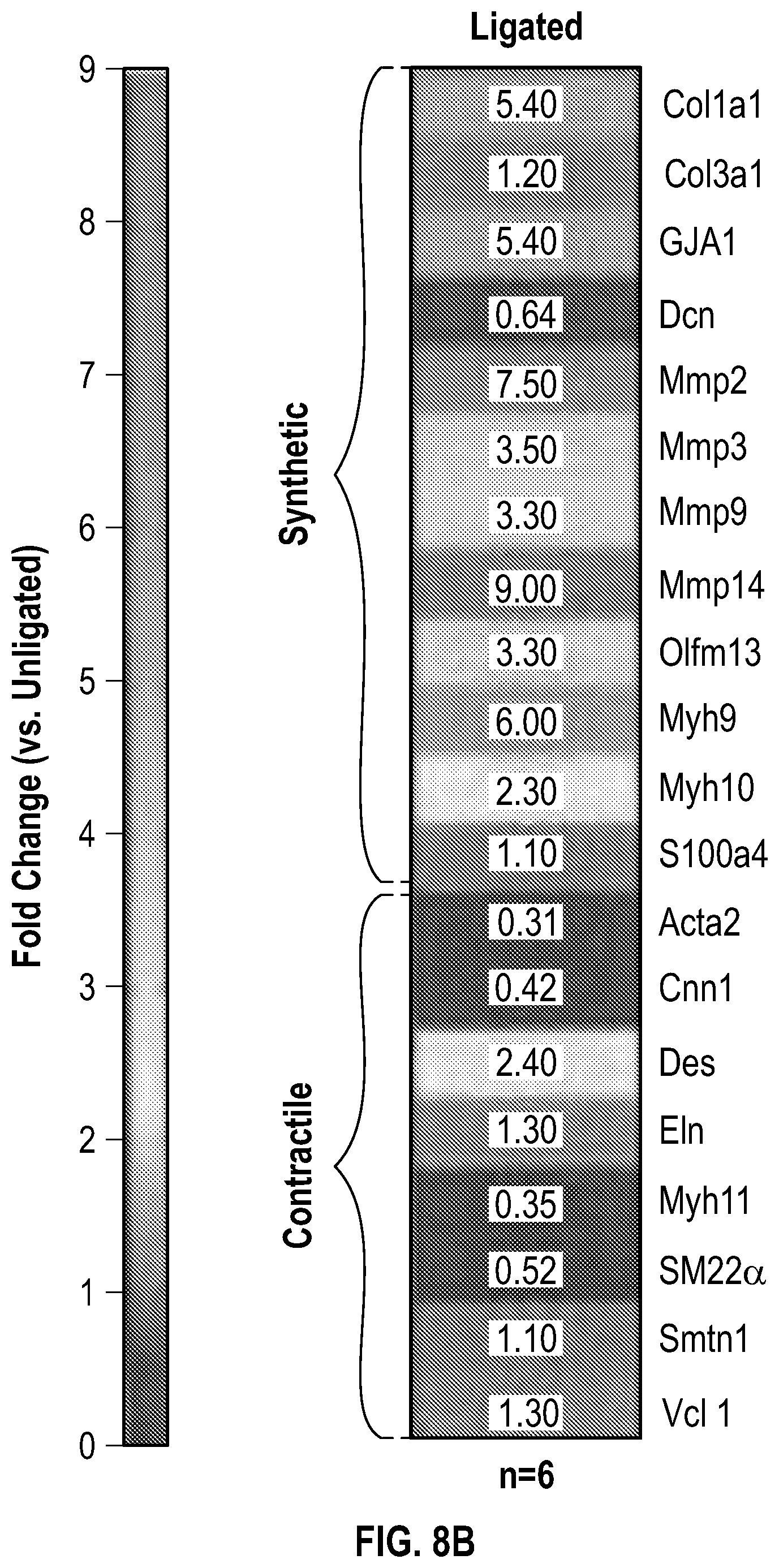
D00044
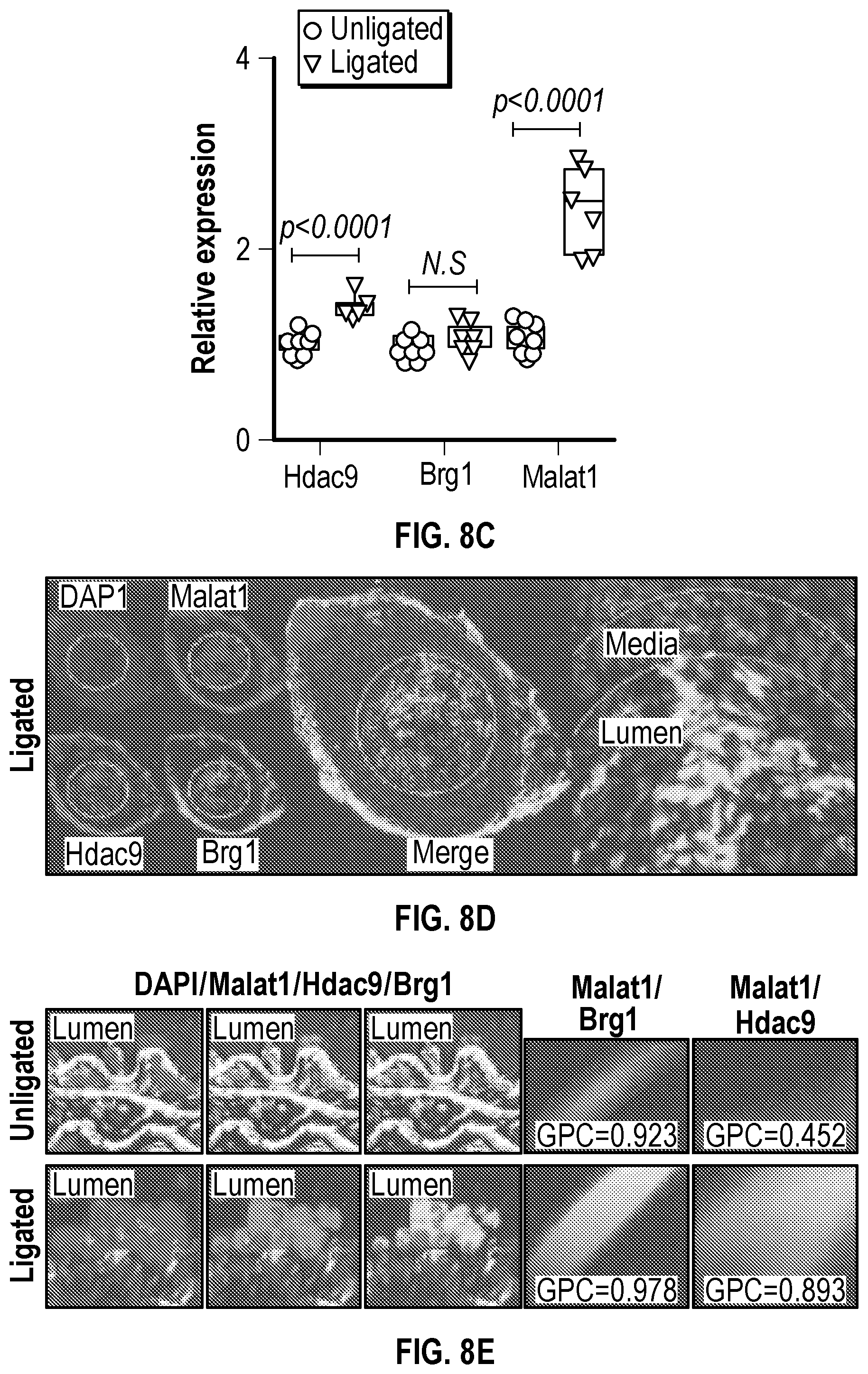
D00045
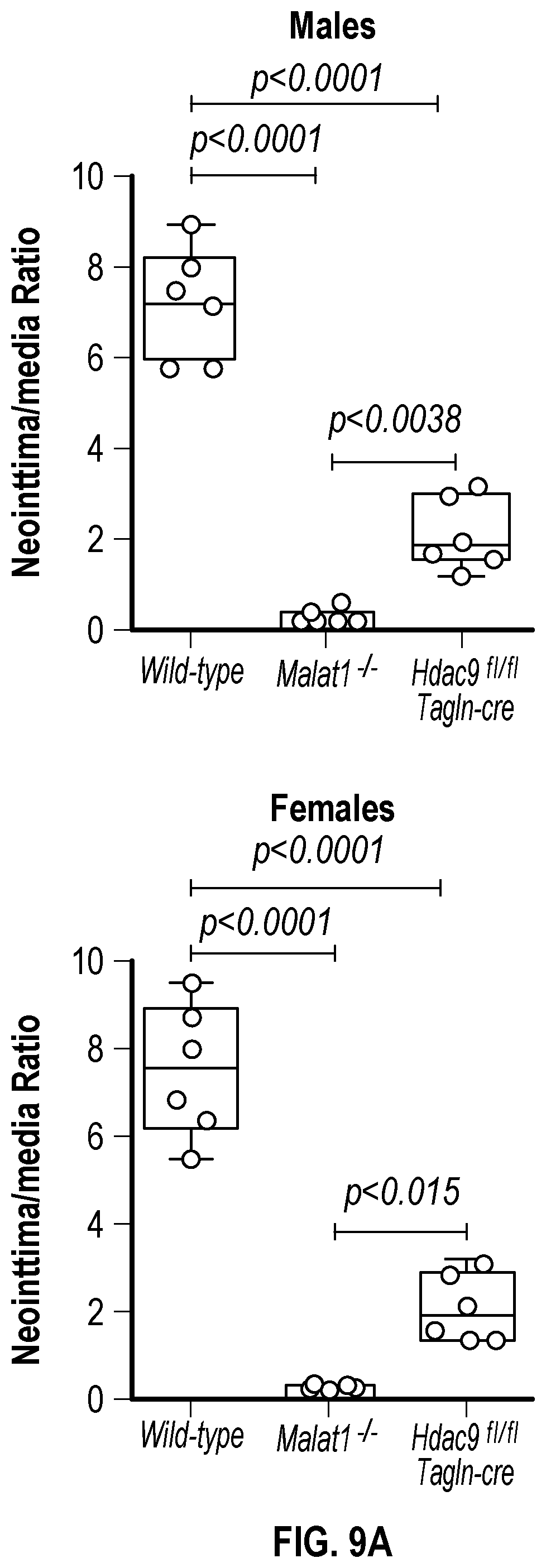
D00046
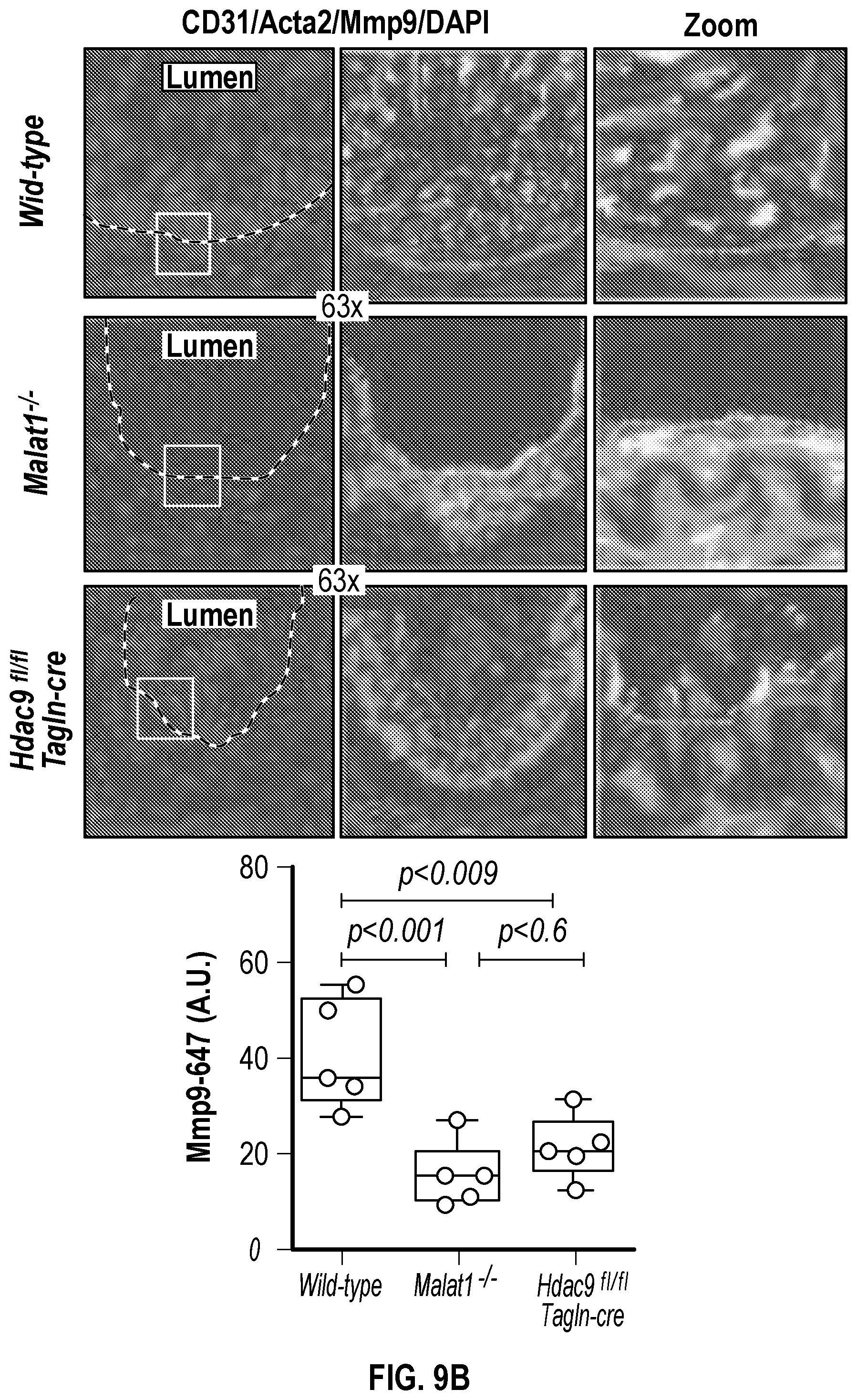
D00047
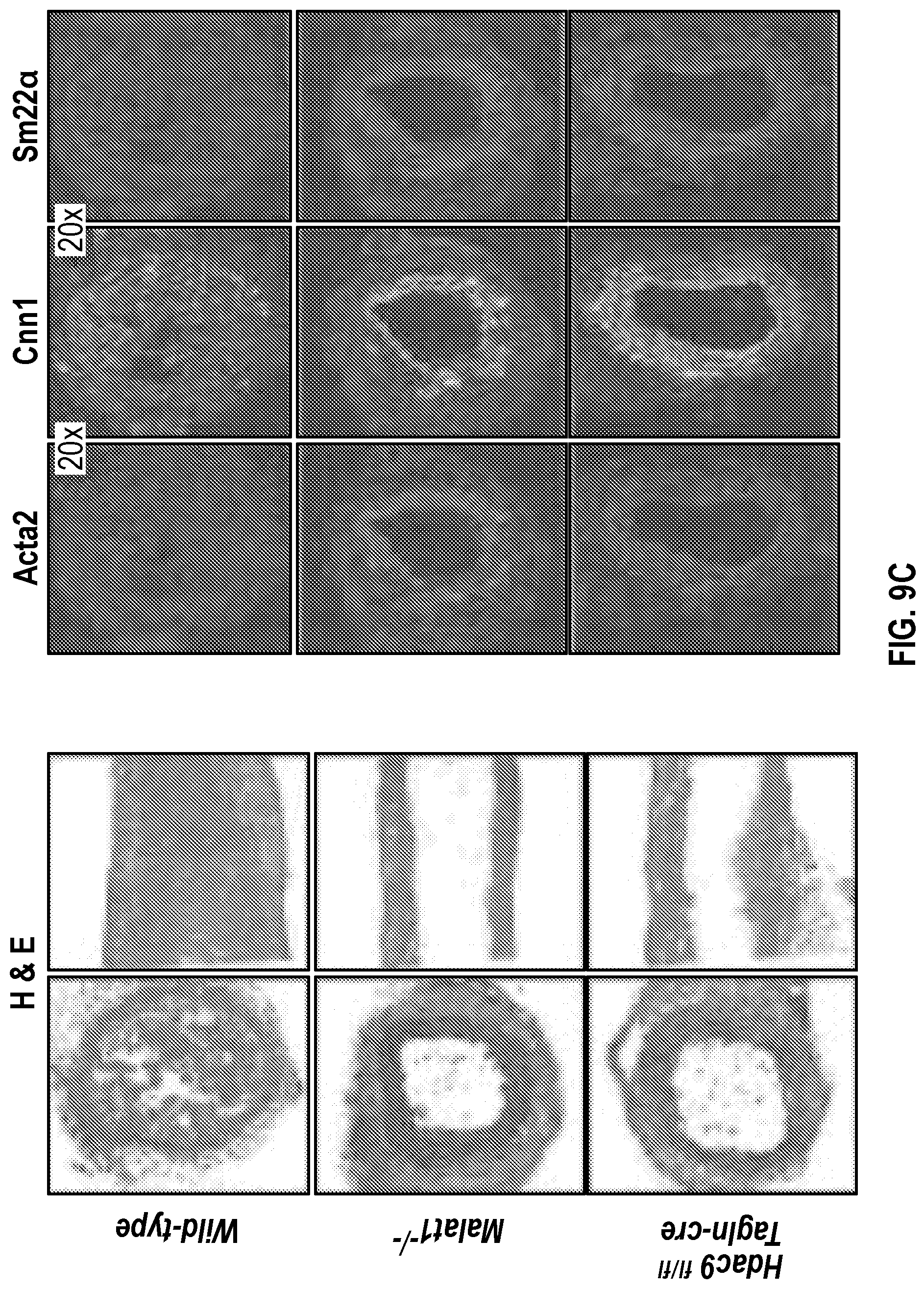
D00048
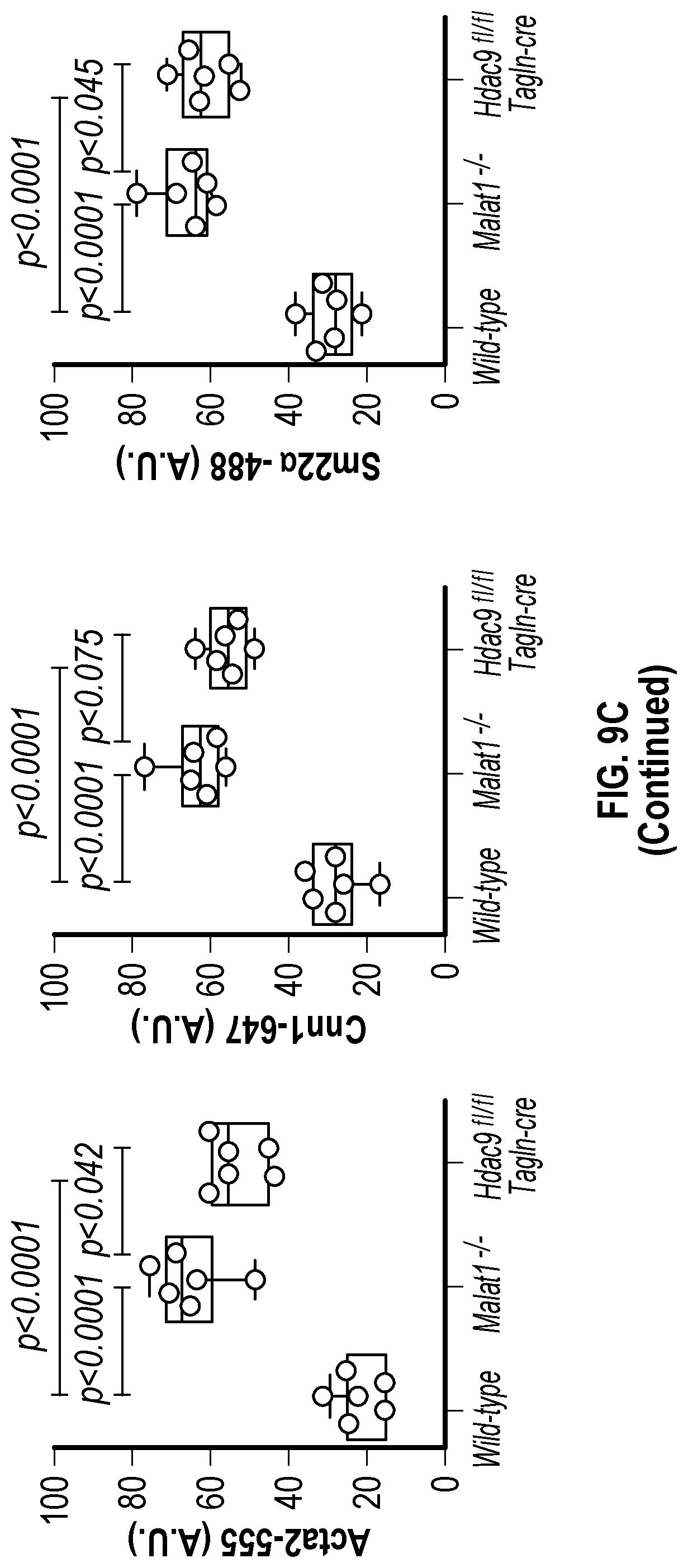
D00049
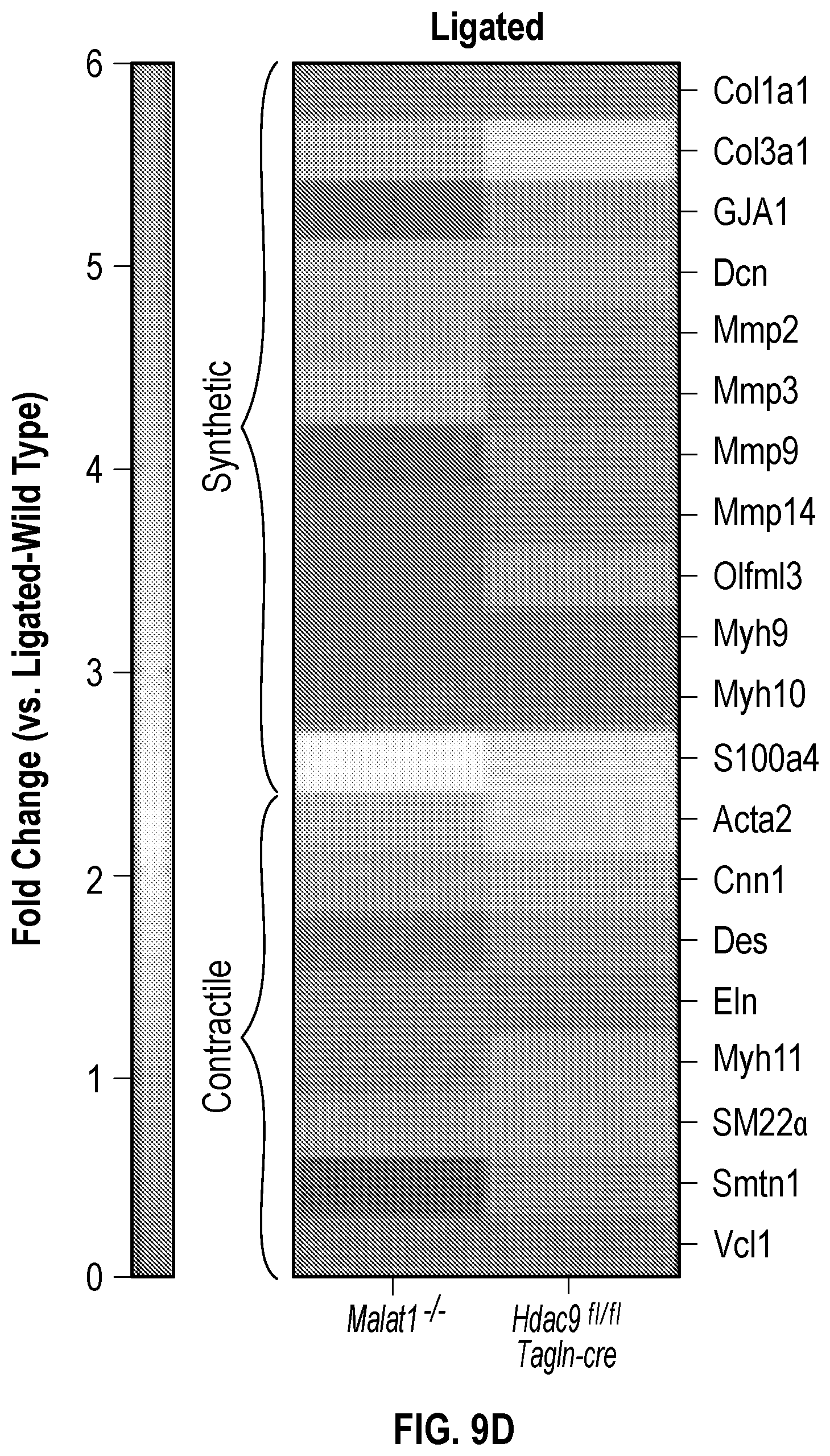
D00050
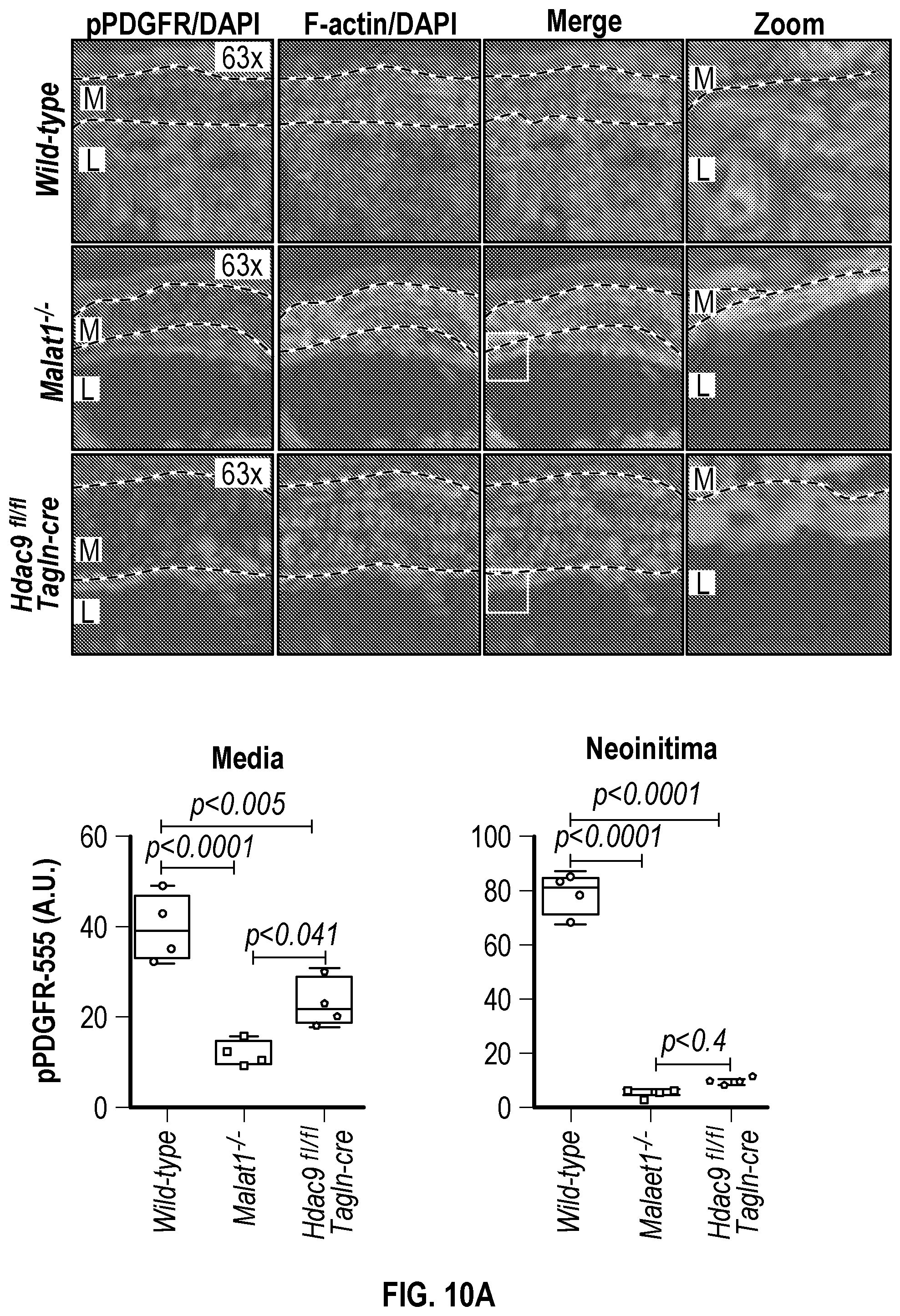
D00051
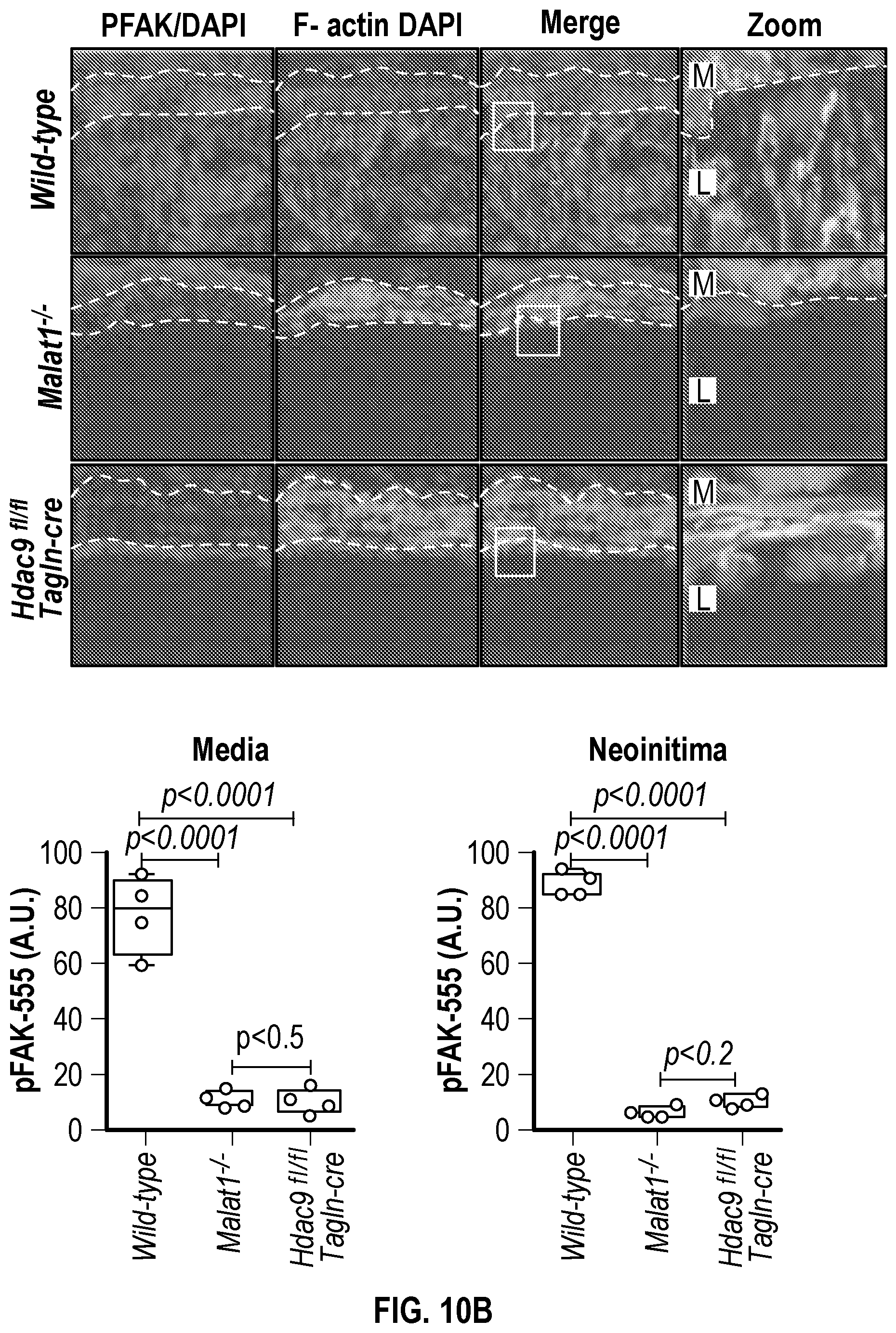
D00052
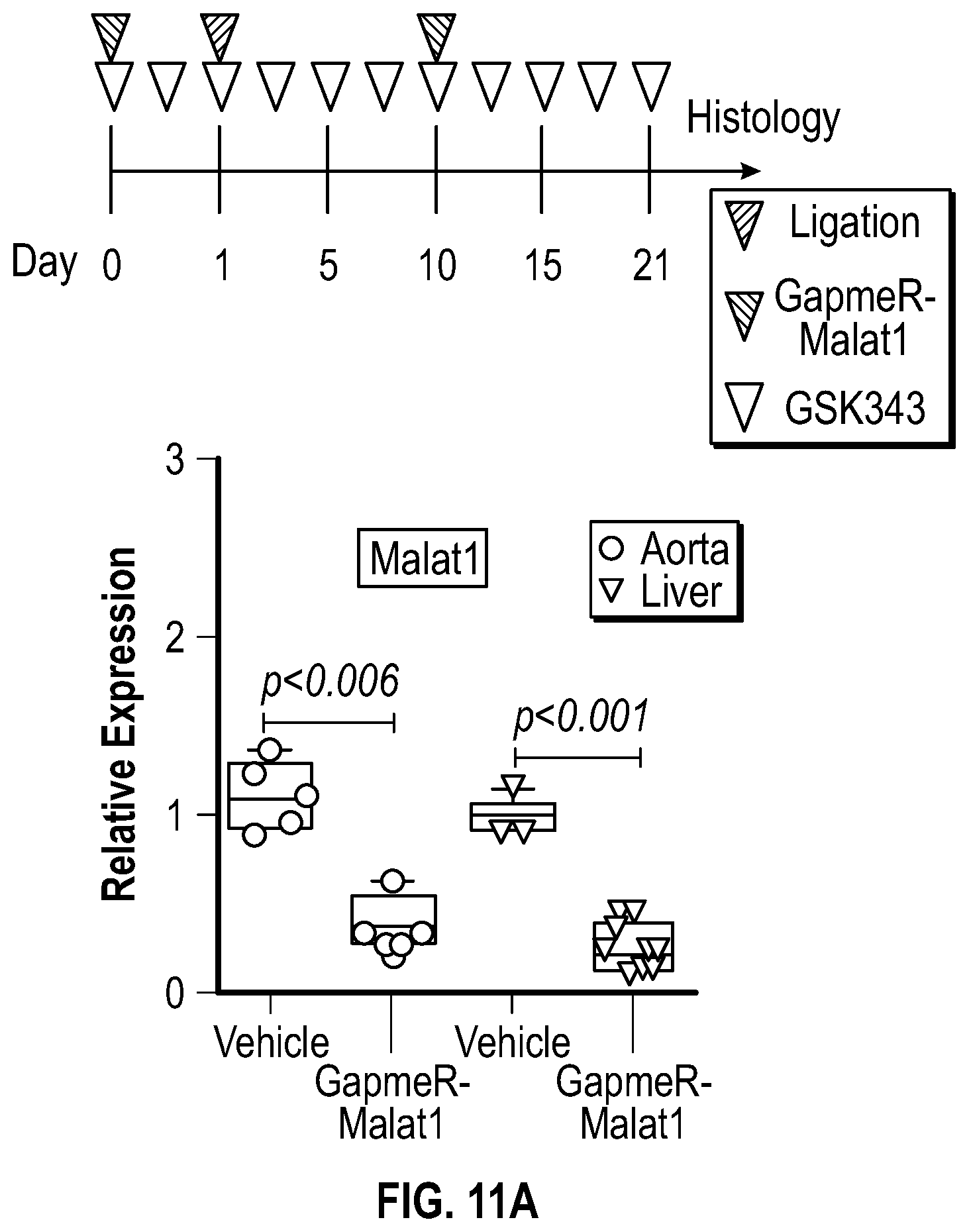
D00053
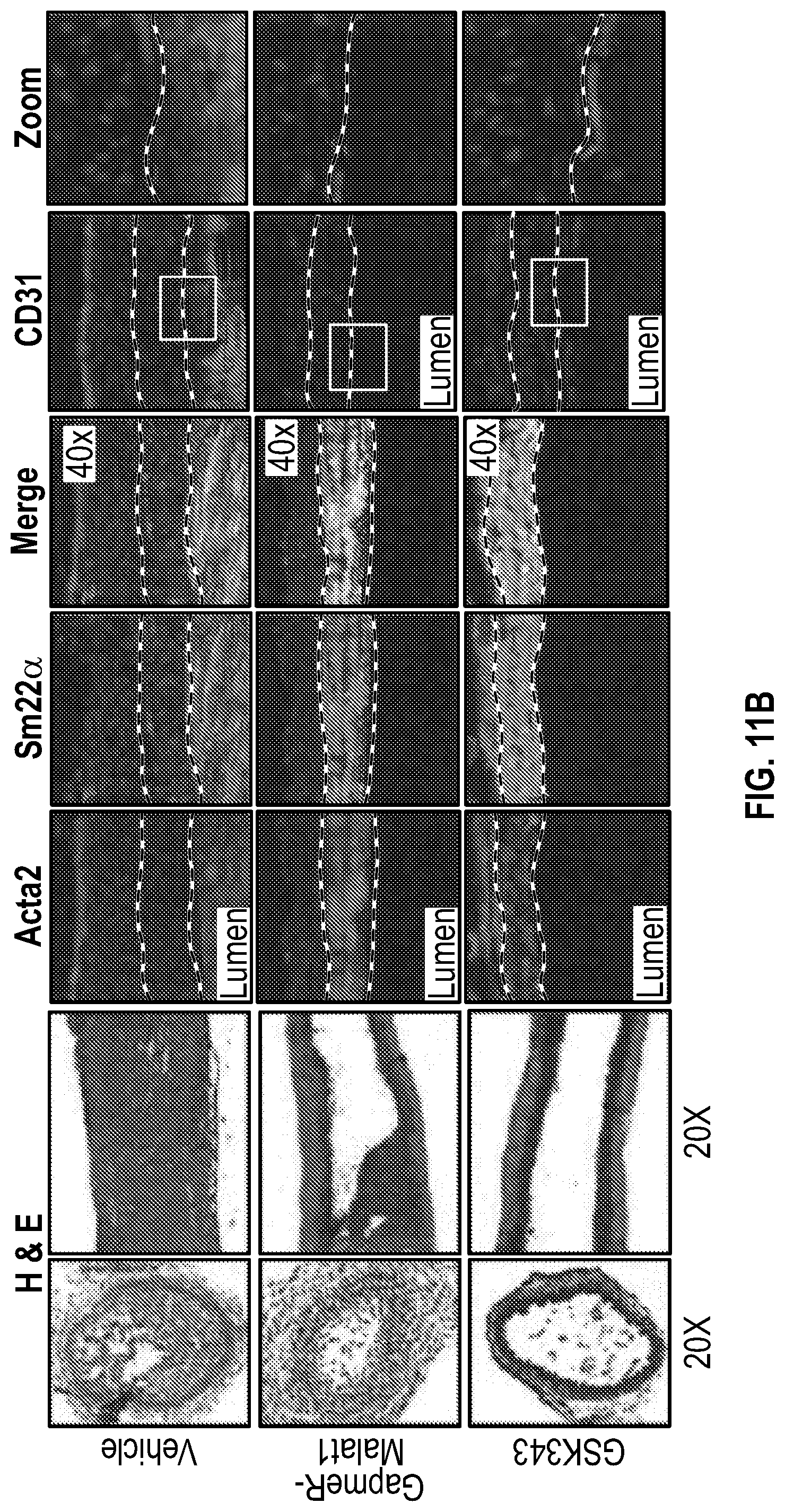
D00054
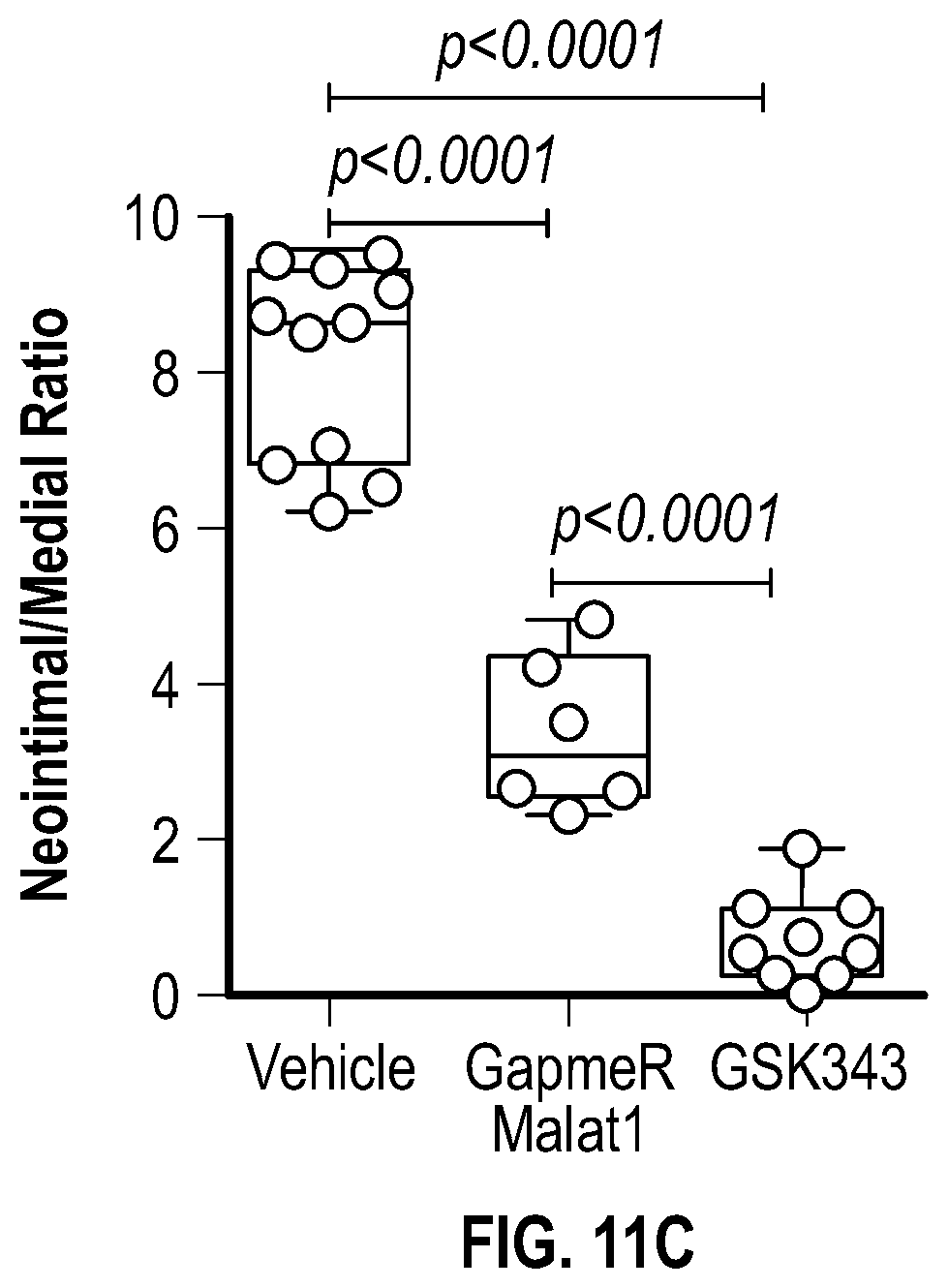
D00055
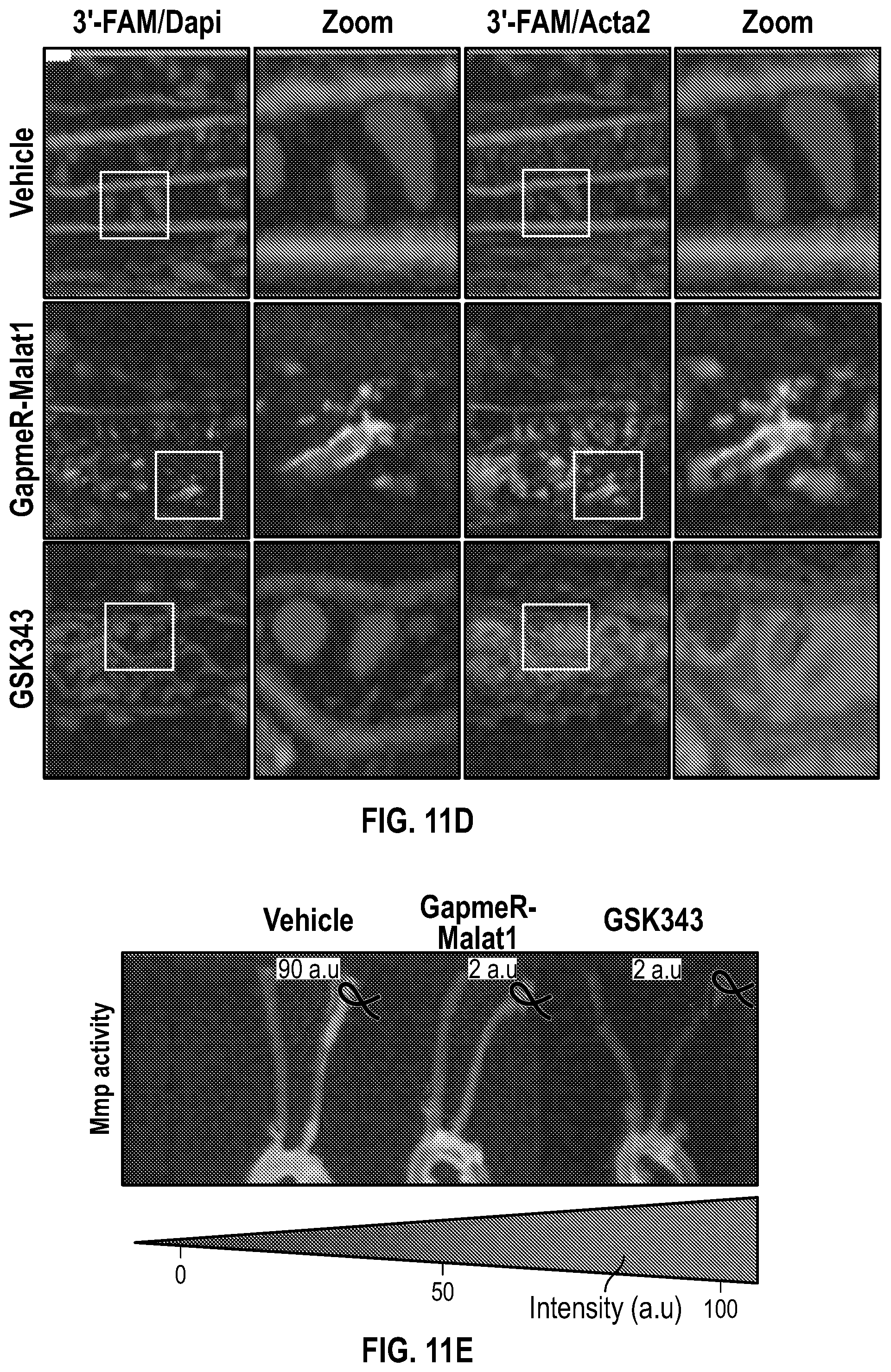
D00056
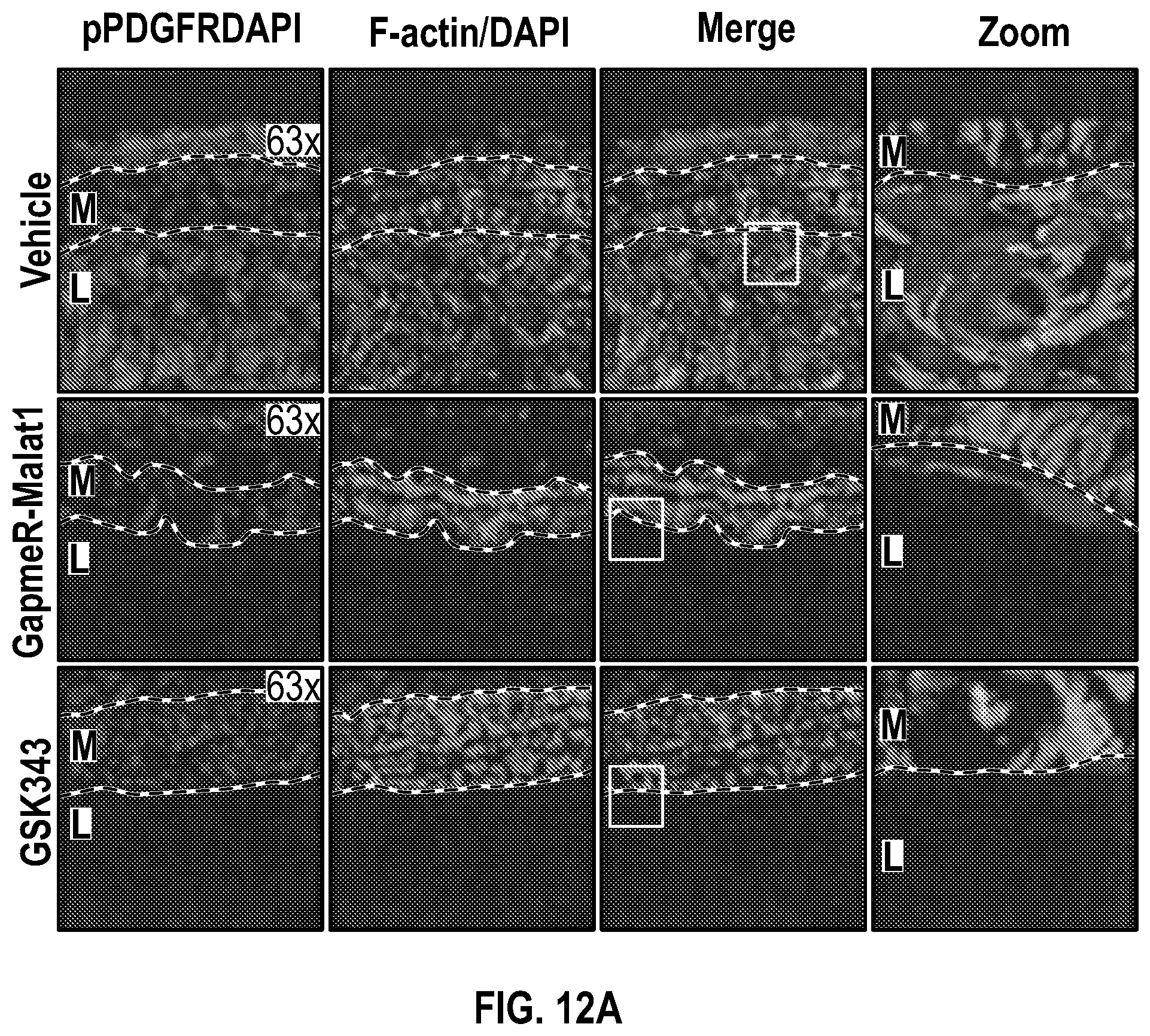
D00057
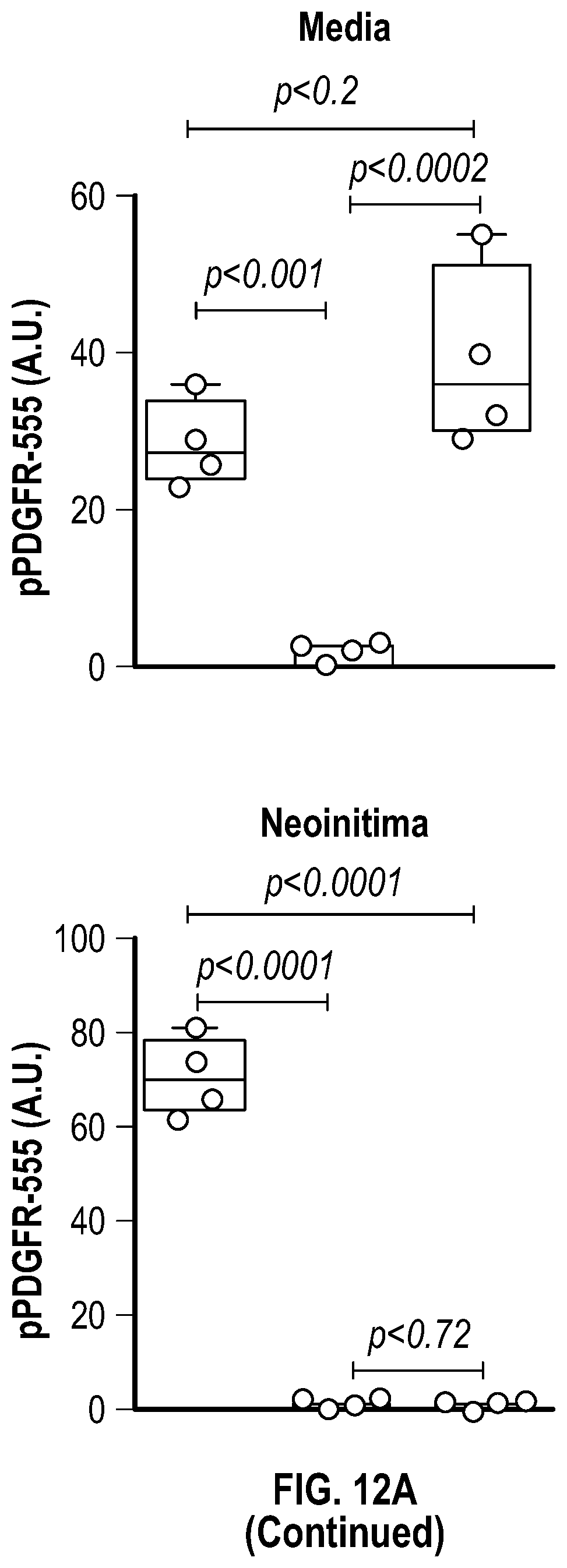
D00058
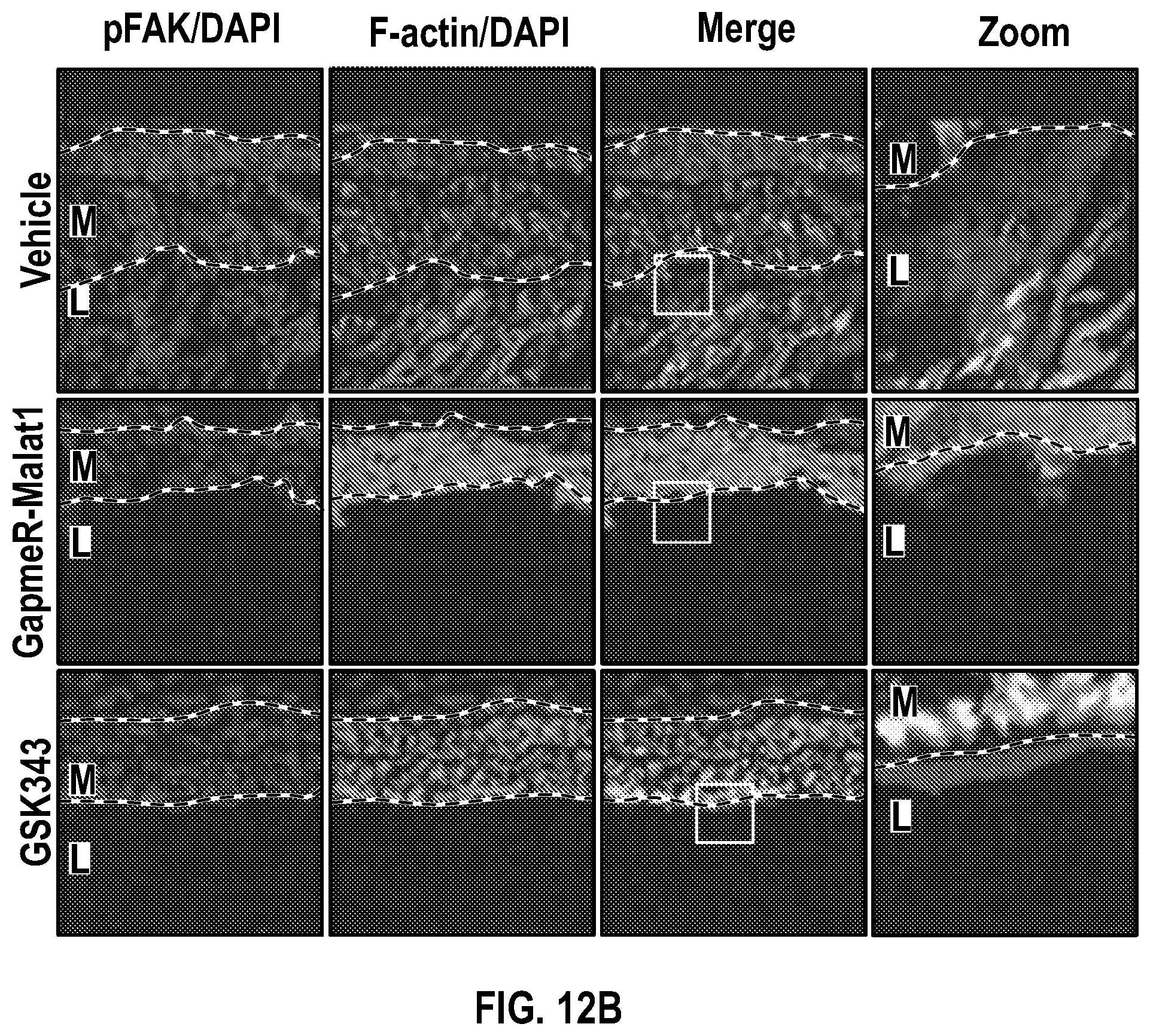
D00059
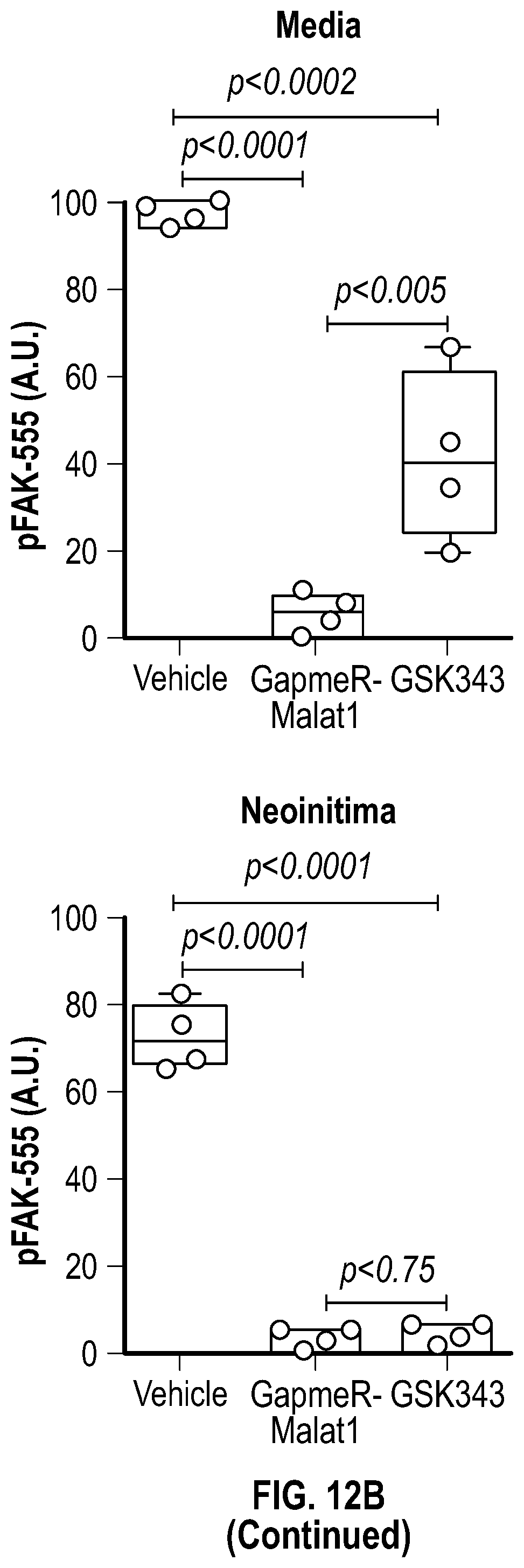
D00060
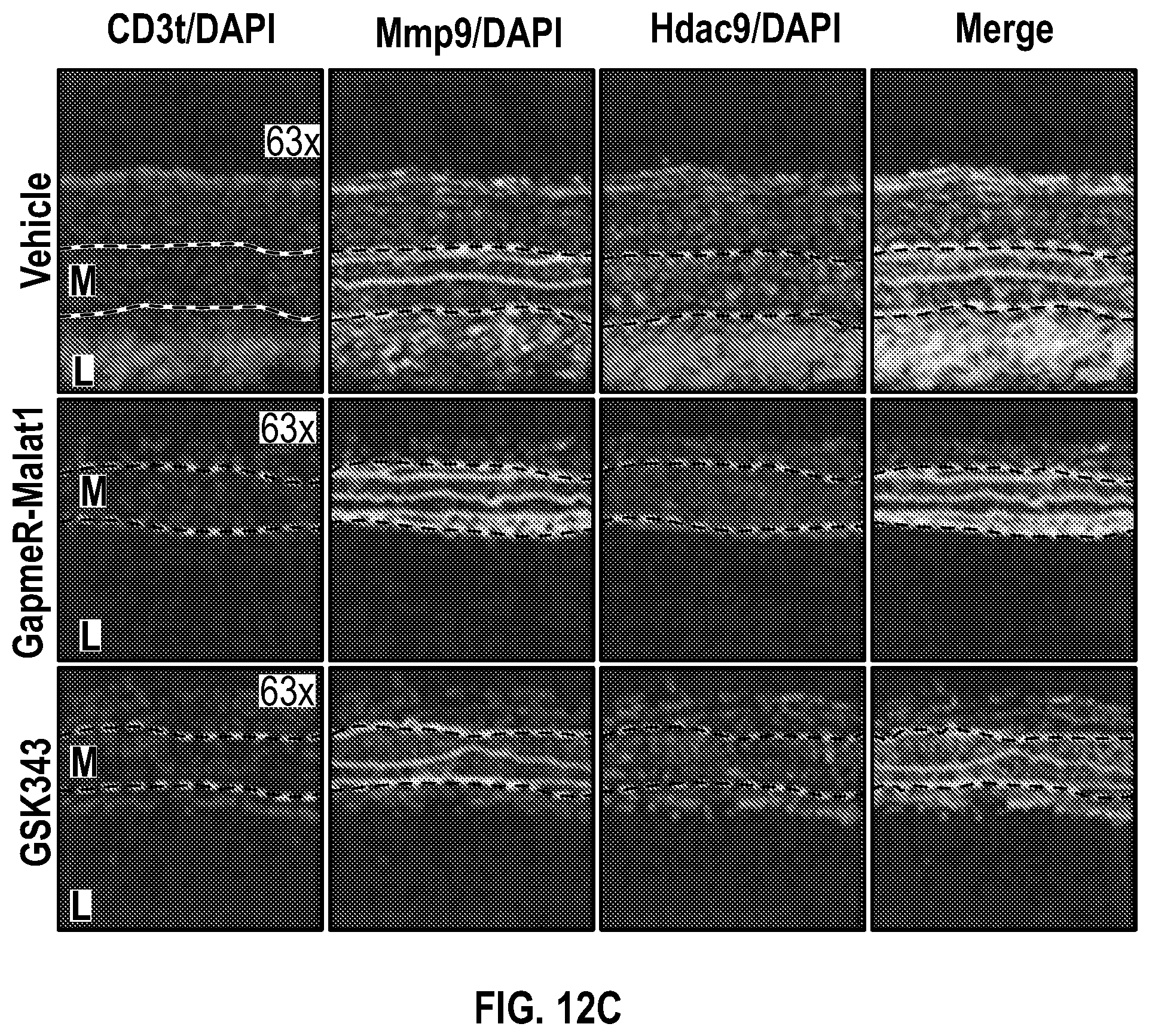
D00061
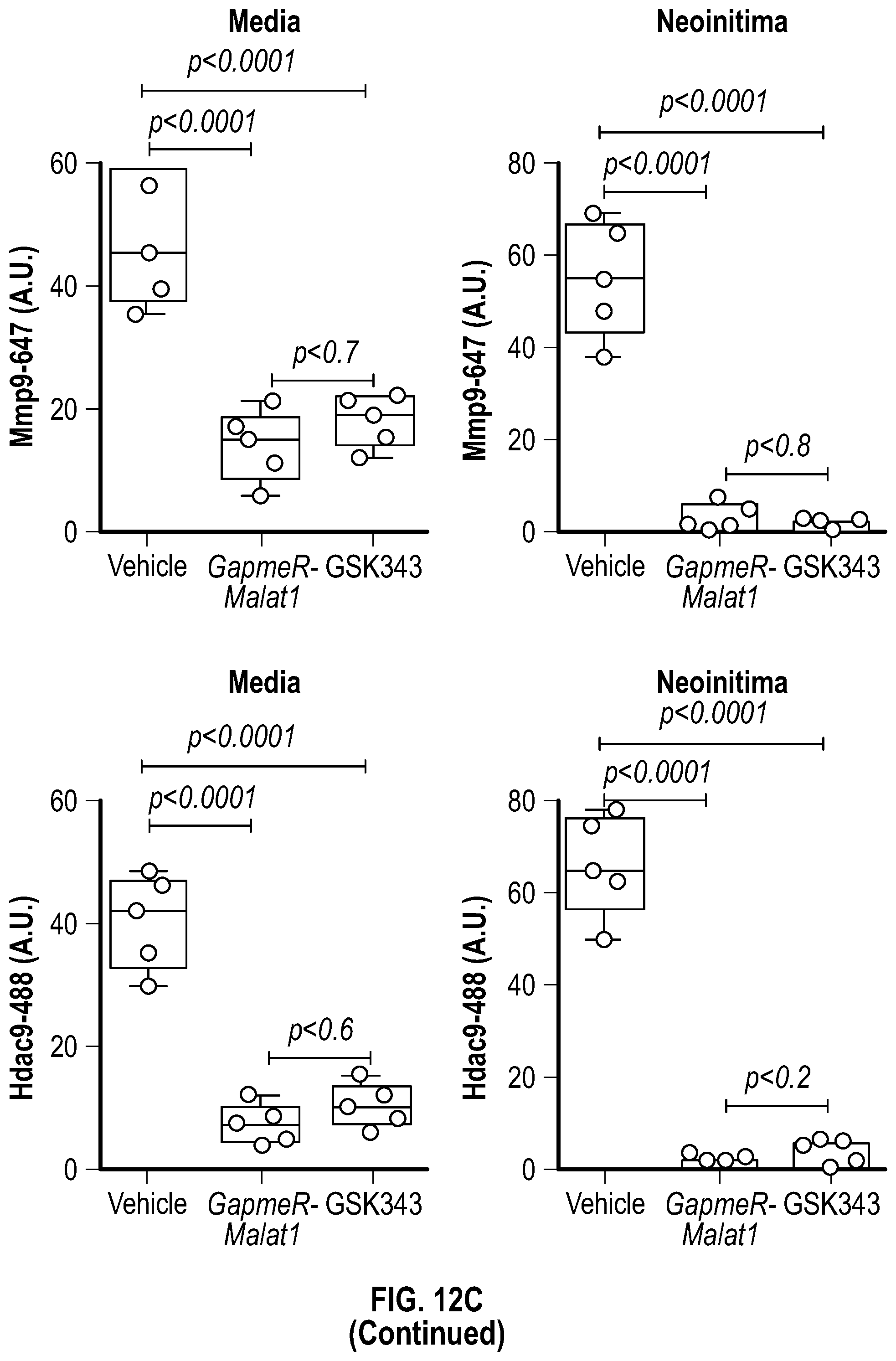
D00062
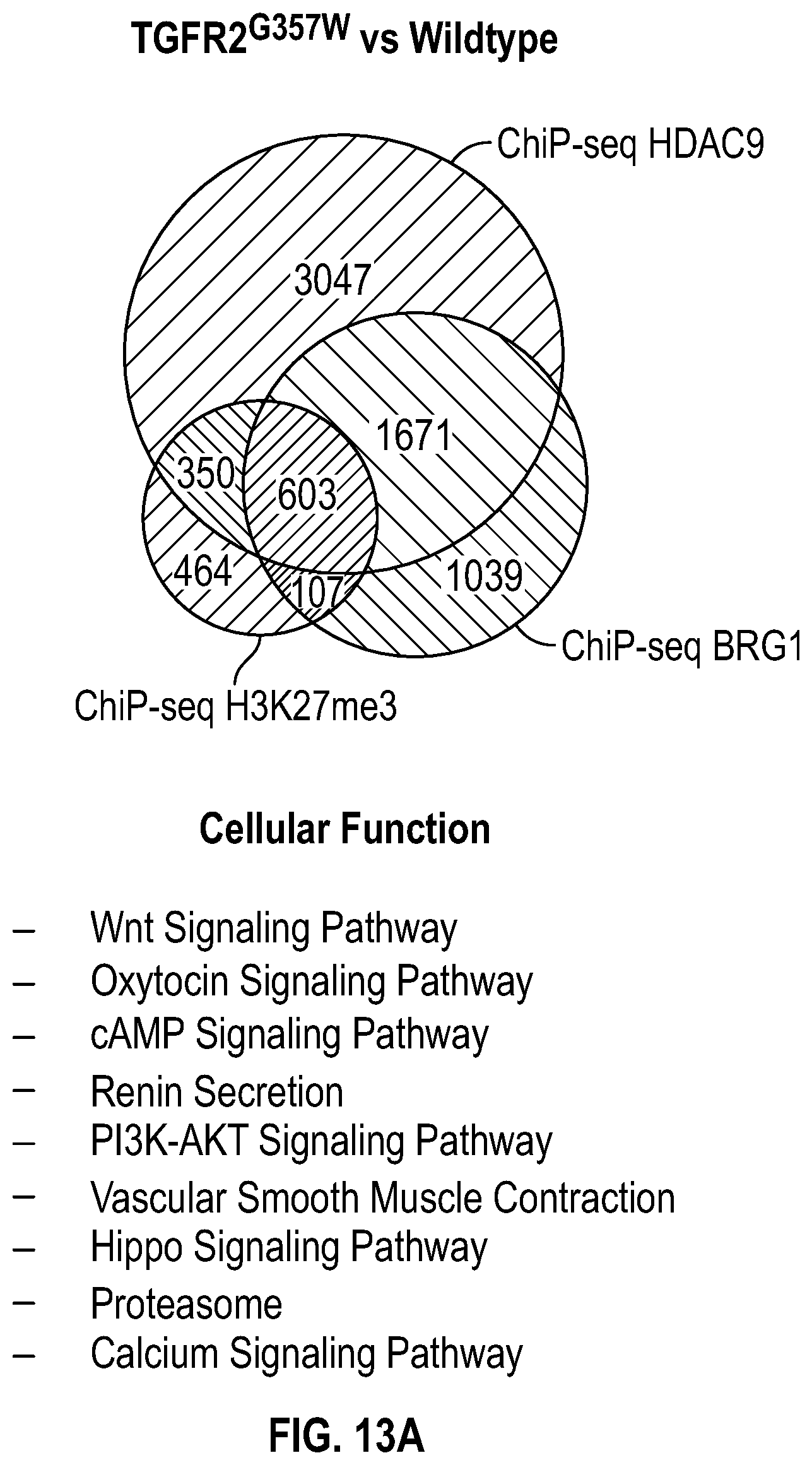
D00063
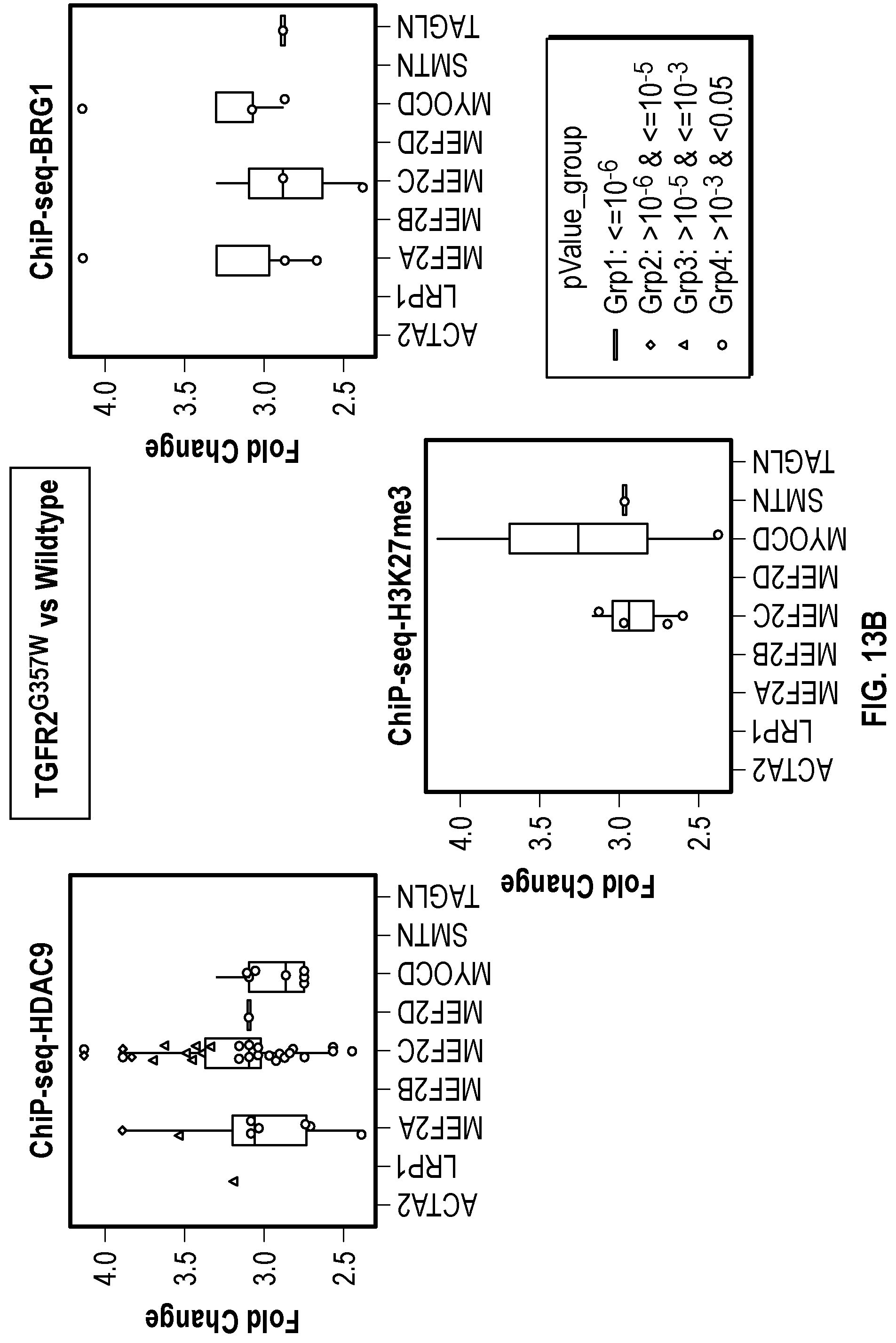
D00064
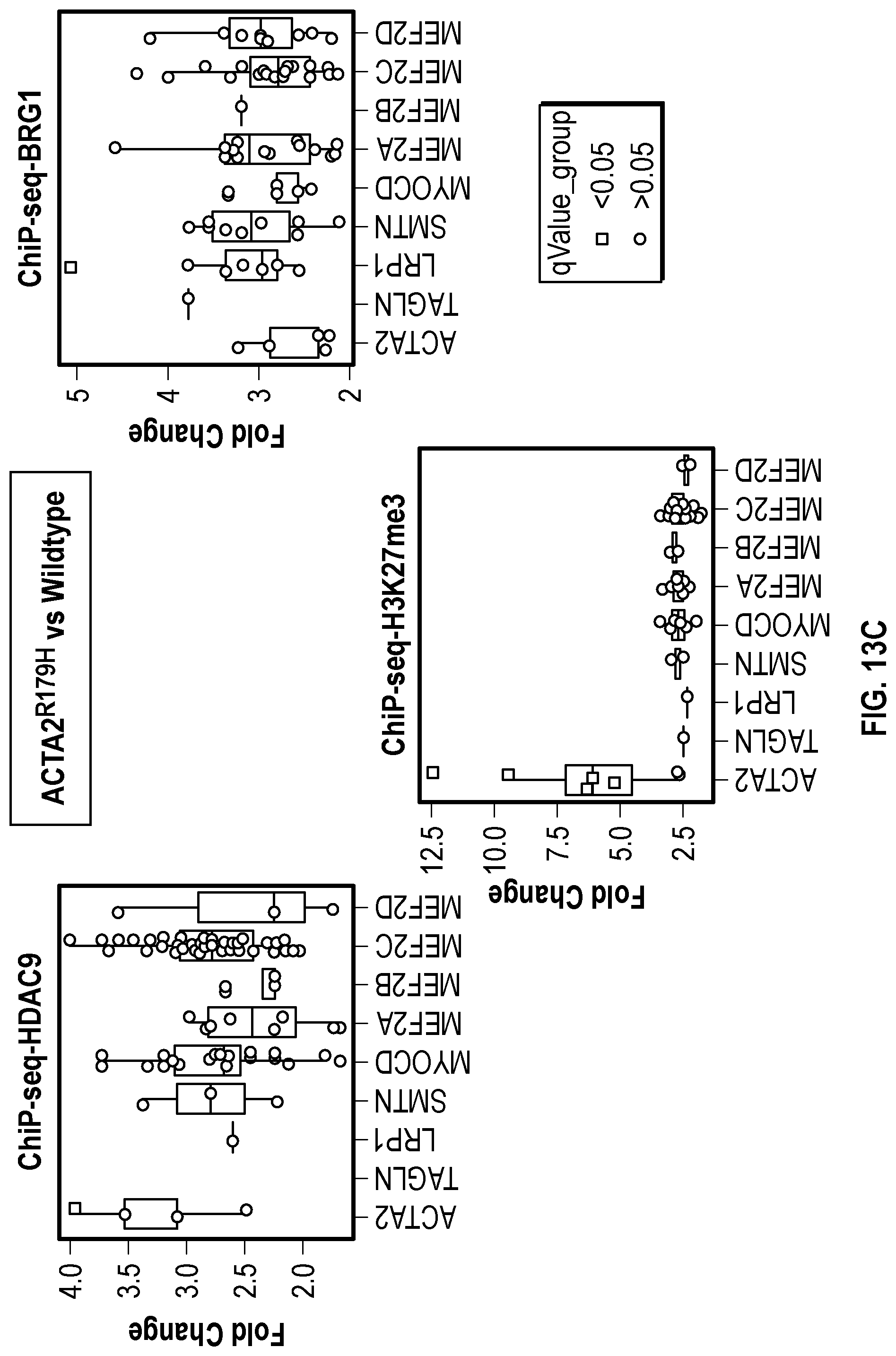
D00065
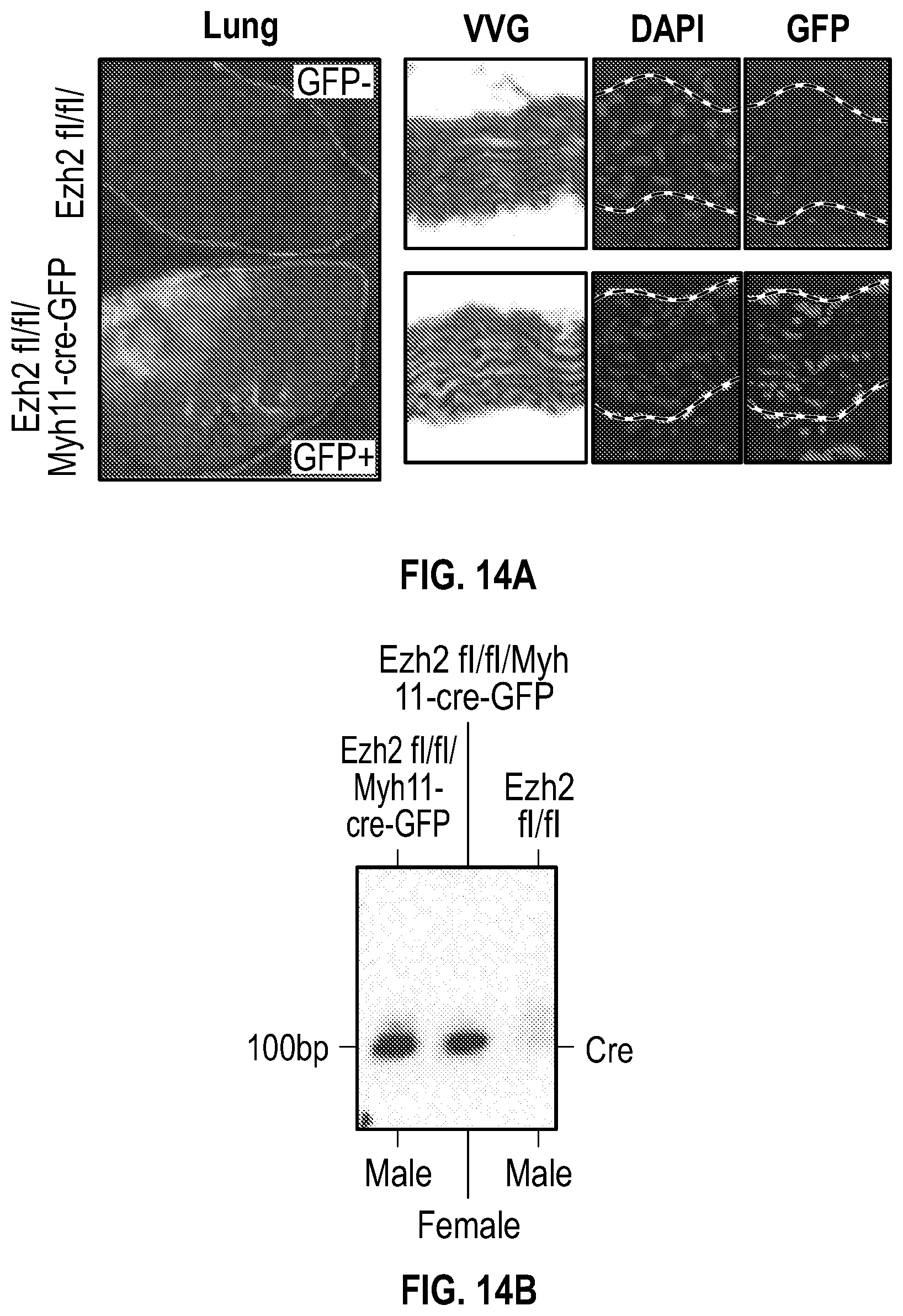
D00066
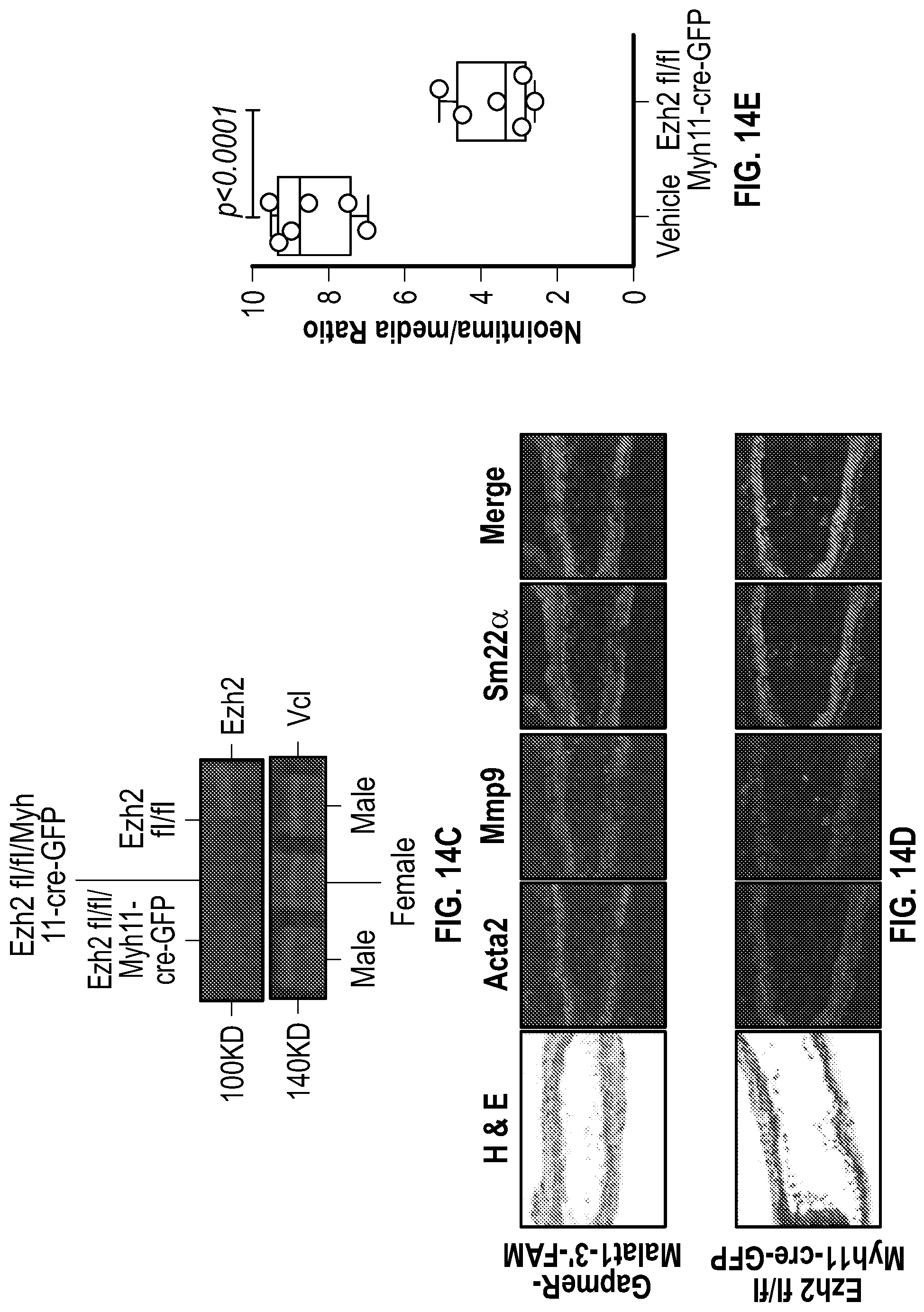
S00001
XML
uspto.report is an independent third-party trademark research tool that is not affiliated, endorsed, or sponsored by the United States Patent and Trademark Office (USPTO) or any other governmental organization. The information provided by uspto.report is based on publicly available data at the time of writing and is intended for informational purposes only.
While we strive to provide accurate and up-to-date information, we do not guarantee the accuracy, completeness, reliability, or suitability of the information displayed on this site. The use of this site is at your own risk. Any reliance you place on such information is therefore strictly at your own risk.
All official trademark data, including owner information, should be verified by visiting the official USPTO website at www.uspto.gov. This site is not intended to replace professional legal advice and should not be used as a substitute for consulting with a legal professional who is knowledgeable about trademark law.